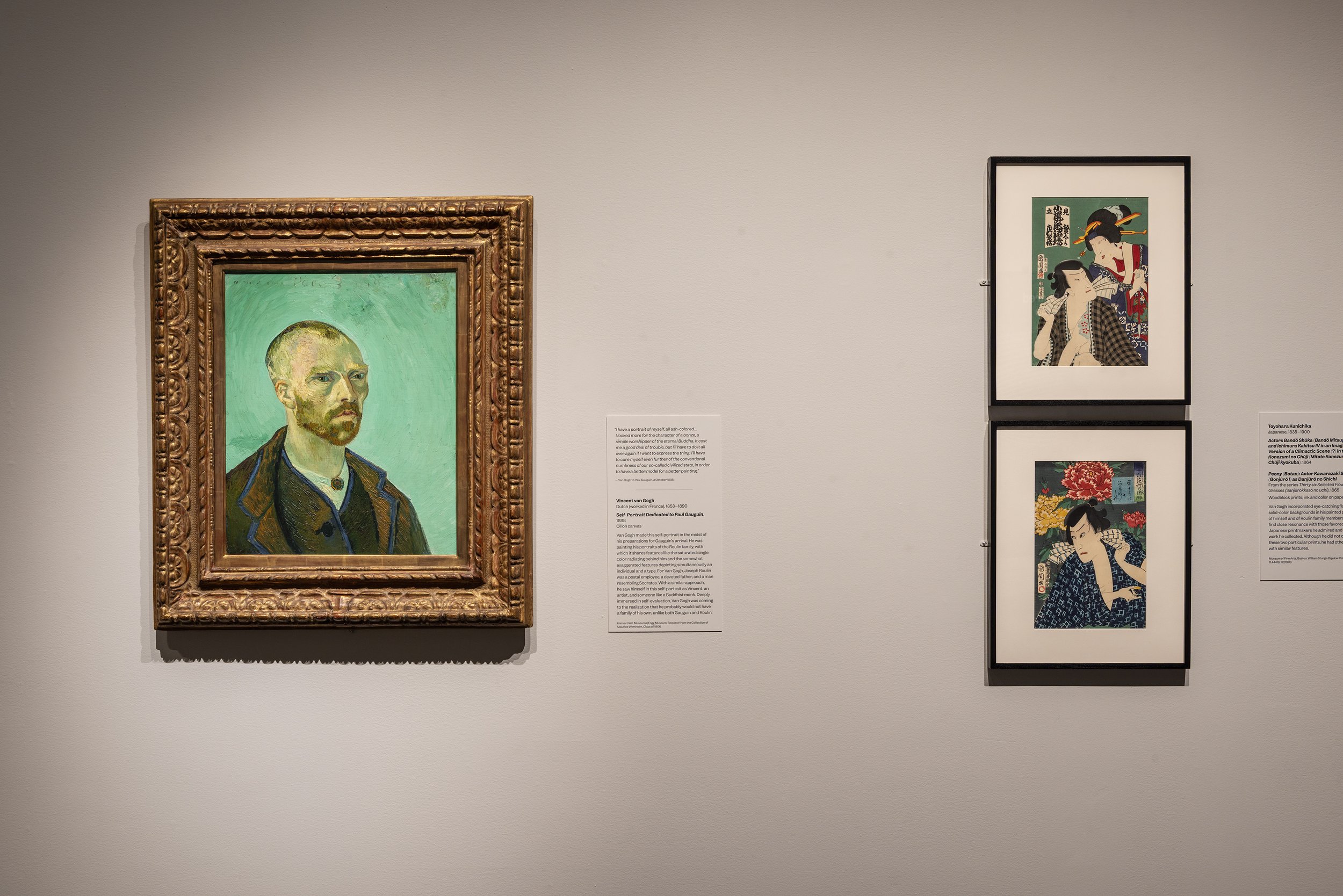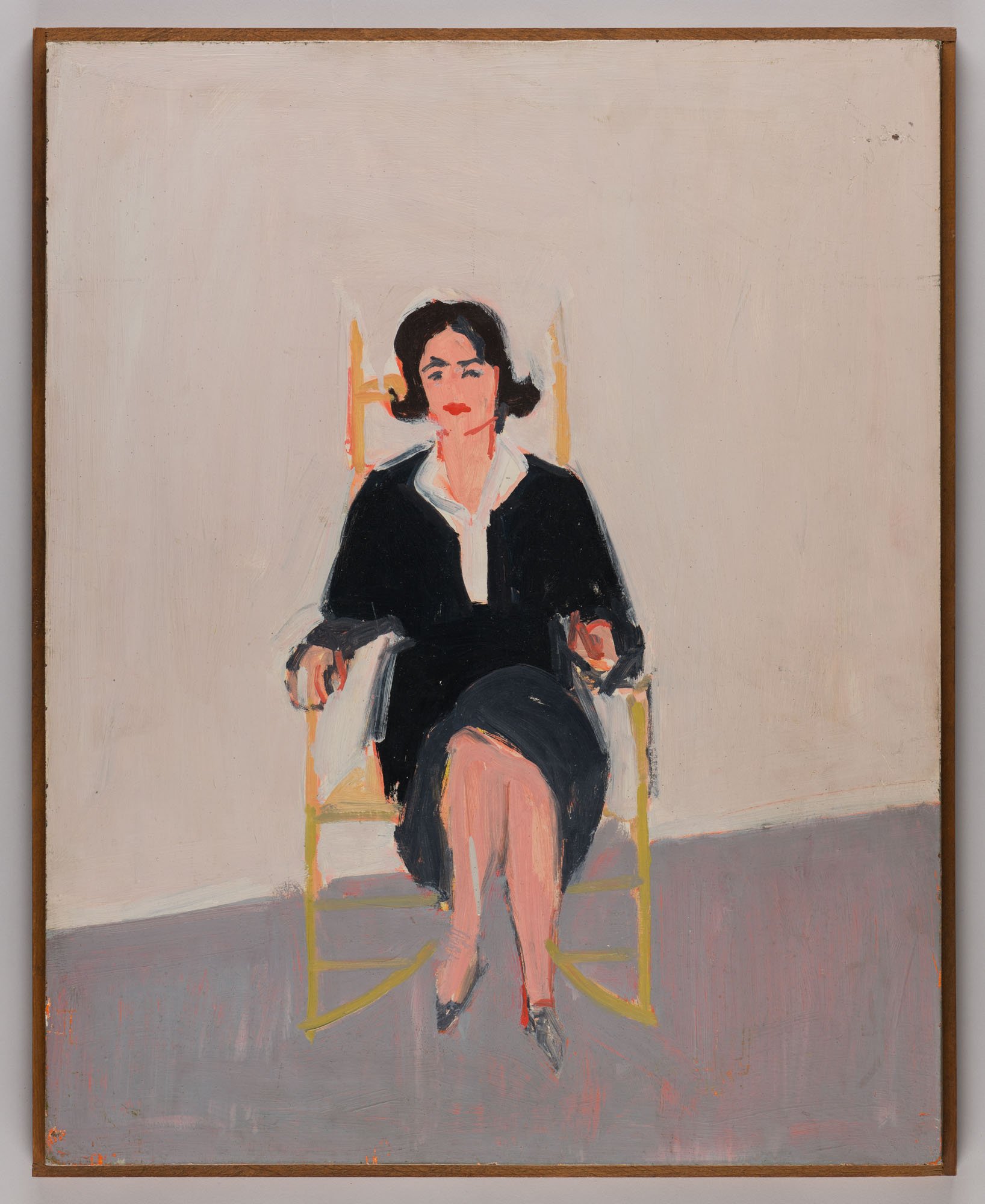Rebecca Ward: vector specte
Installation view, Rebecca Ward: vector specter, April 5, 2025 – May 31, 2025, Peter Blum Gallery, New York. Photo: Courtesy of the artist and Peter Blum Gallery
Peter Blum Gallery is pleased to present vector specter, an exhibition of new works by Brooklyn-based artist, Rebecca Ward. This marks the artist’s second solo exhibition with the gallery. The exhibition which opened on April 5, with an opening reception from 4–6 p.m., and will run through May 31, 2025, at 176 Grand Street, New York, NY.
Installation view, Rebecca Ward: vector specter, April 5, 2025 – May 31, 2025, Peter Blum Gallery, New York. Photo: Courtesy of the artist and Peter Blum Gallery
Rebecca Ward's practice merges painting, sculpture, and craft by physically deconstructing and reassembling canvases to create geometrically grounded works. By exposing the multidimensional nature of painting and its constituent parts, Ward creates a spatial play of harmonious forms and color interactions that explore the relationship between the mathematical and the natural world. In her latest series, Ward delves into the complex interplay between transparency and the spectral presence of the abstract. Through a manipulation of reassembled materials and viscous gradients, the artist explores spectrums—both literal and metaphorical—where shadow and form transcend their physical boundaries. The work invites viewers to contemplate the delicate nature of perception, blurring the lines between the tangible and the ethereal. Ghostly silhouettes, fragmented and elusive, emerge from the translucency of unwoven canvas, embodying the shifting forms that shape understanding of reality.
Installation view, Rebecca Ward: vector specter, April 5, 2025 – May 31, 2025, Peter Blum Gallery, New York. Photo: Courtesy of the artist and Peter Blum Gallery
Each of the ten works in the exhibition incorporate both hard-edged and curving forms that emerge from rectangular canvas planes, with varying scales, tonalities, and configurations. The shapes originate as digital drawings within a mathematical space—a vector that can be infinitely large or small—before being enclosed within the confines of stretcher bars. This initial step of creating sketches involves layering dissected forms and diverse shades that persist in the final handcrafted, sculptural objects.
The titles add layers of associations as in Ward’s two largest works to date, soft landing and sea creature, that required a highly physical approach in construction and washes of color. In hunger and hunger II, geometric sections of canvas are hand-dyed and painted in a spectrum of pinks and maroons, evoking wider associations of tone. A signature of Ward’s practice over the past decade has included taking fabric apart by removing the weft to create a new and transparent image. Particularly prevalent in open secret, yet present in each of the works is unraveled canvas that both exposes and obscures the underlying stretcher bars.
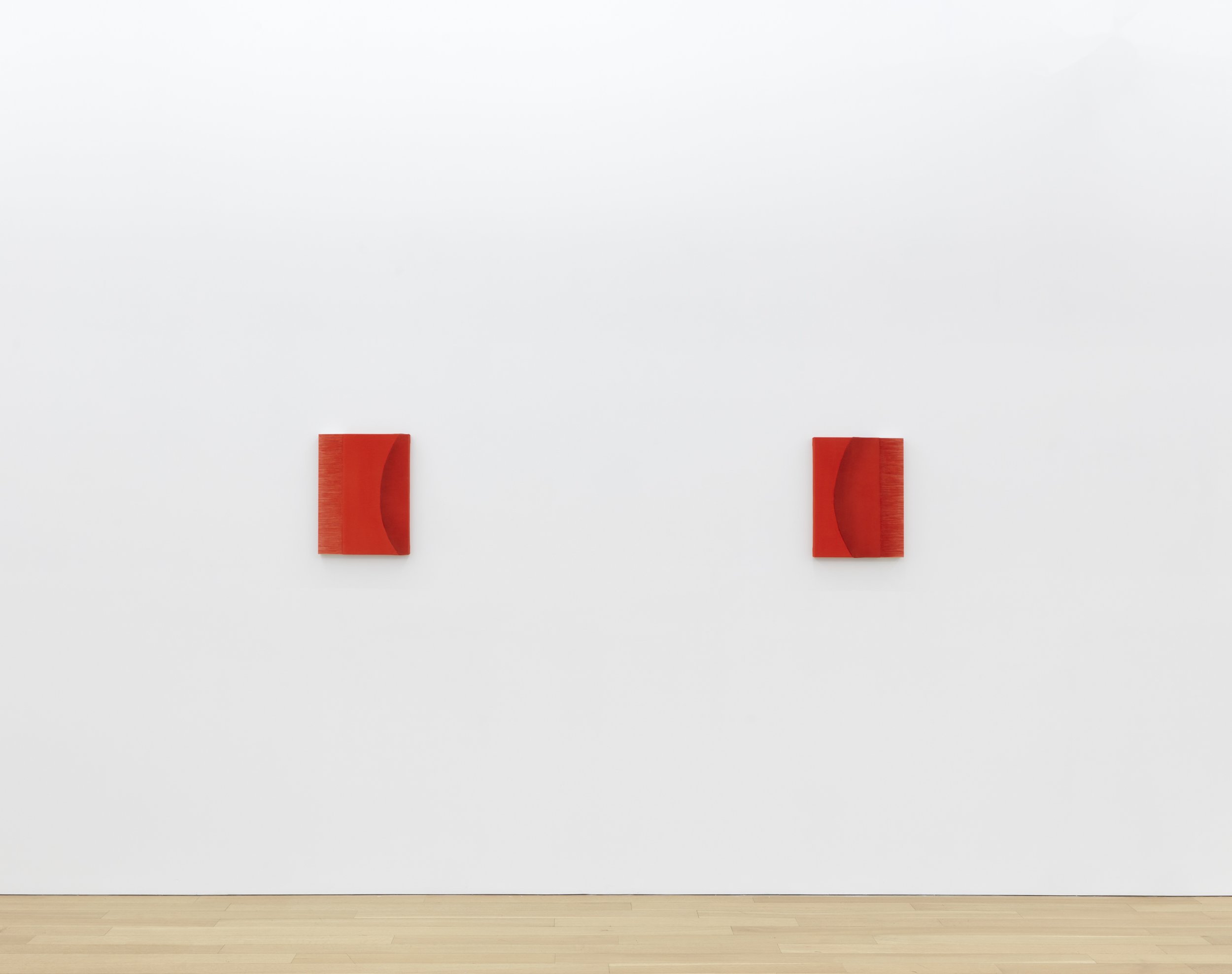

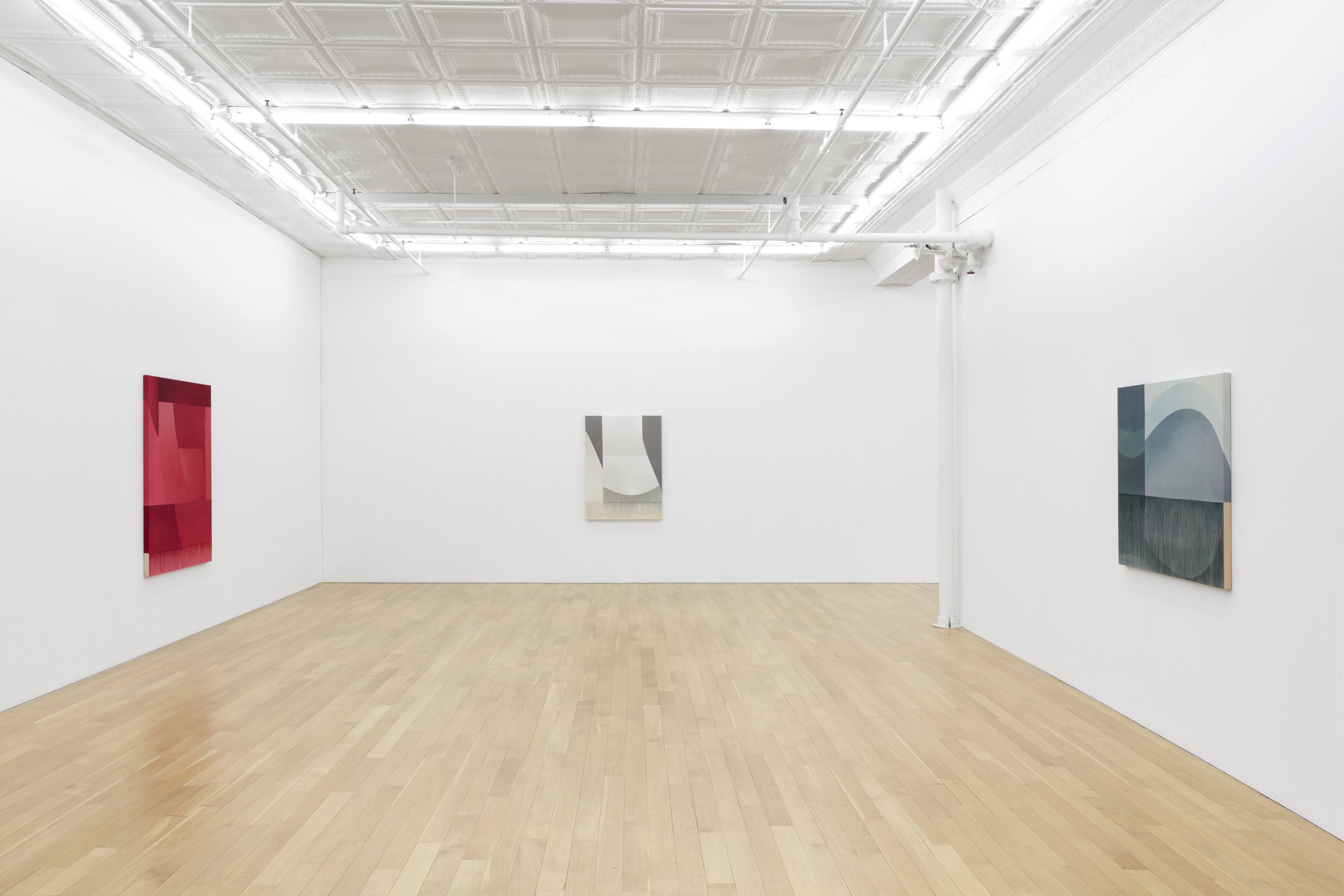



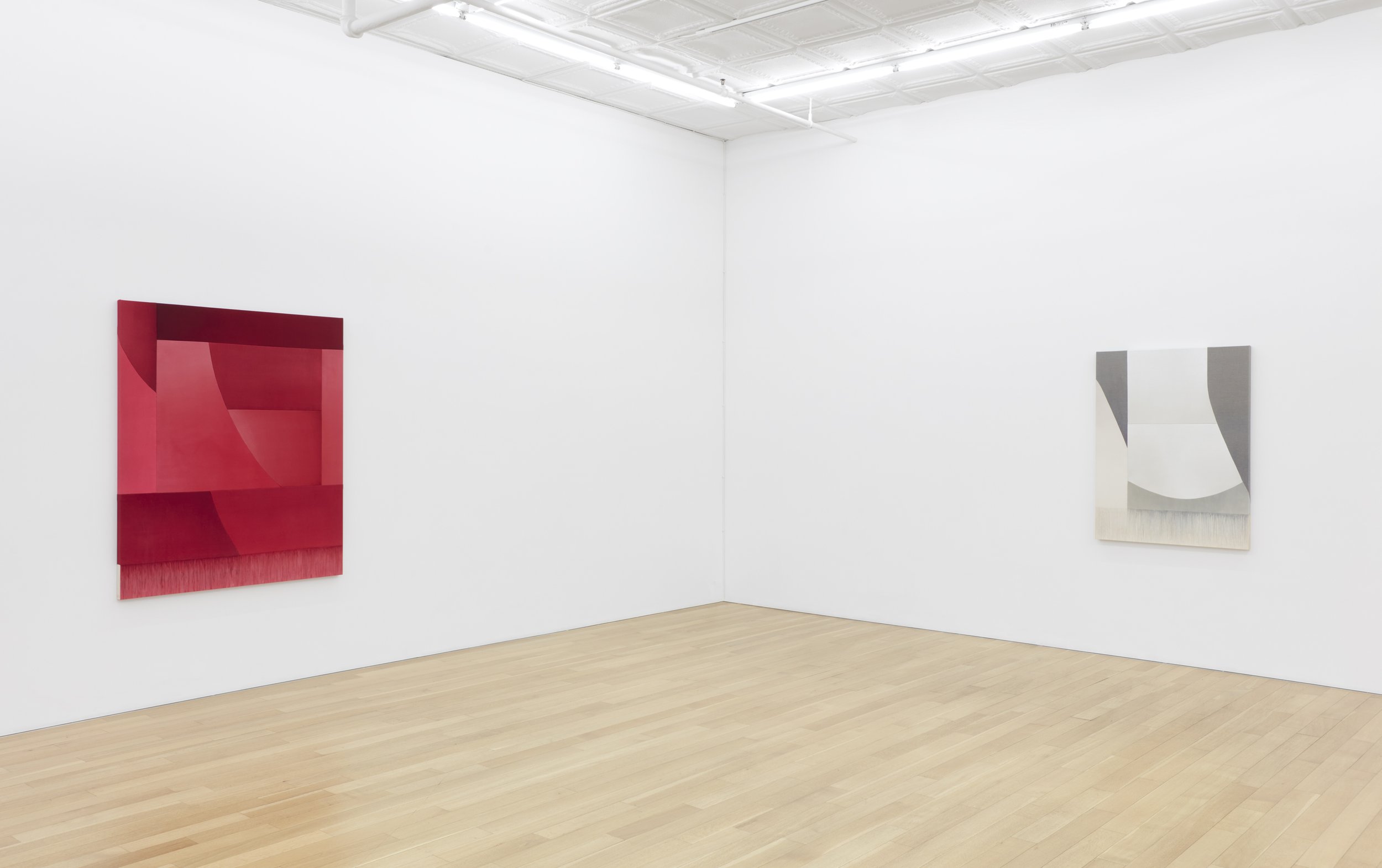
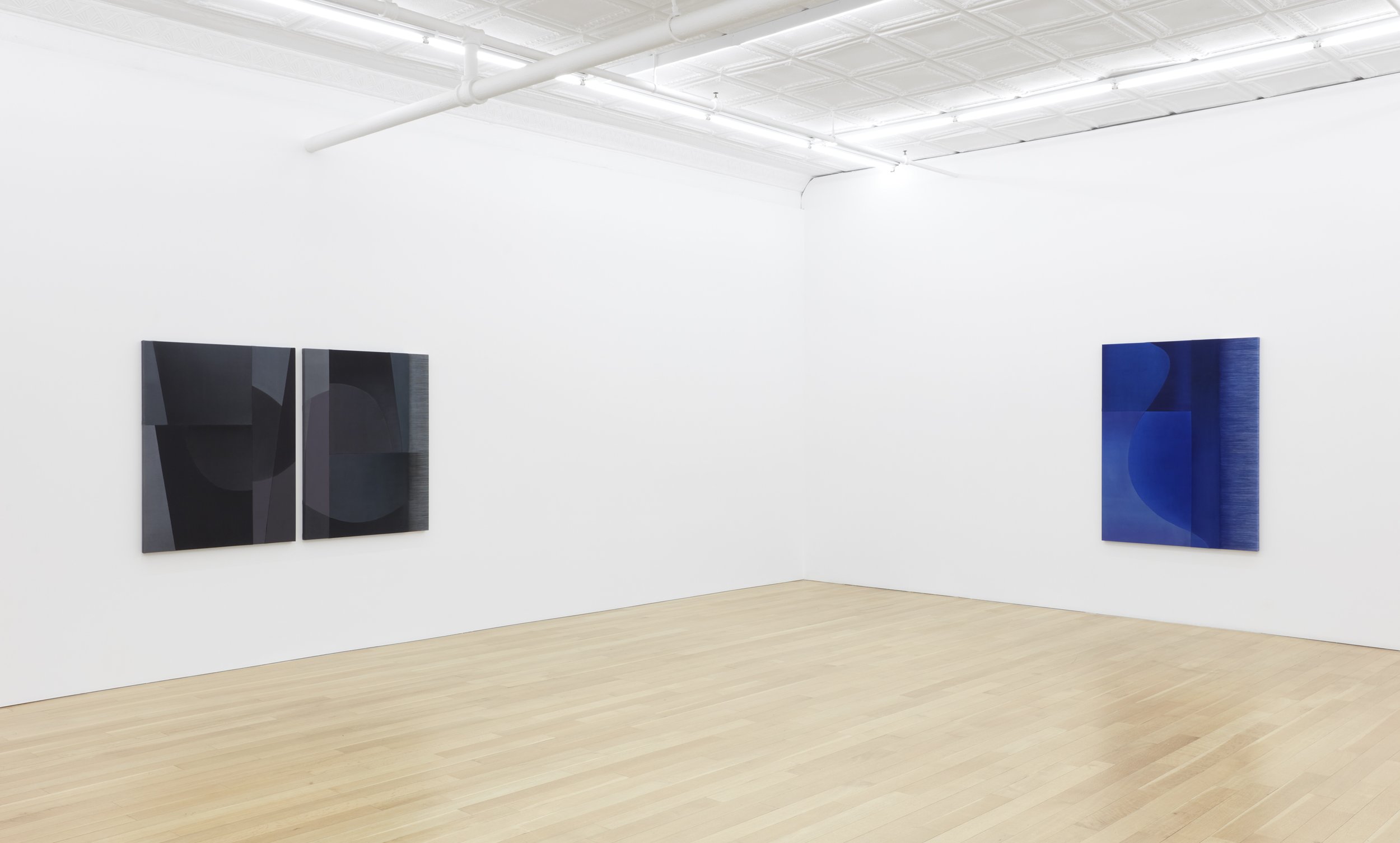
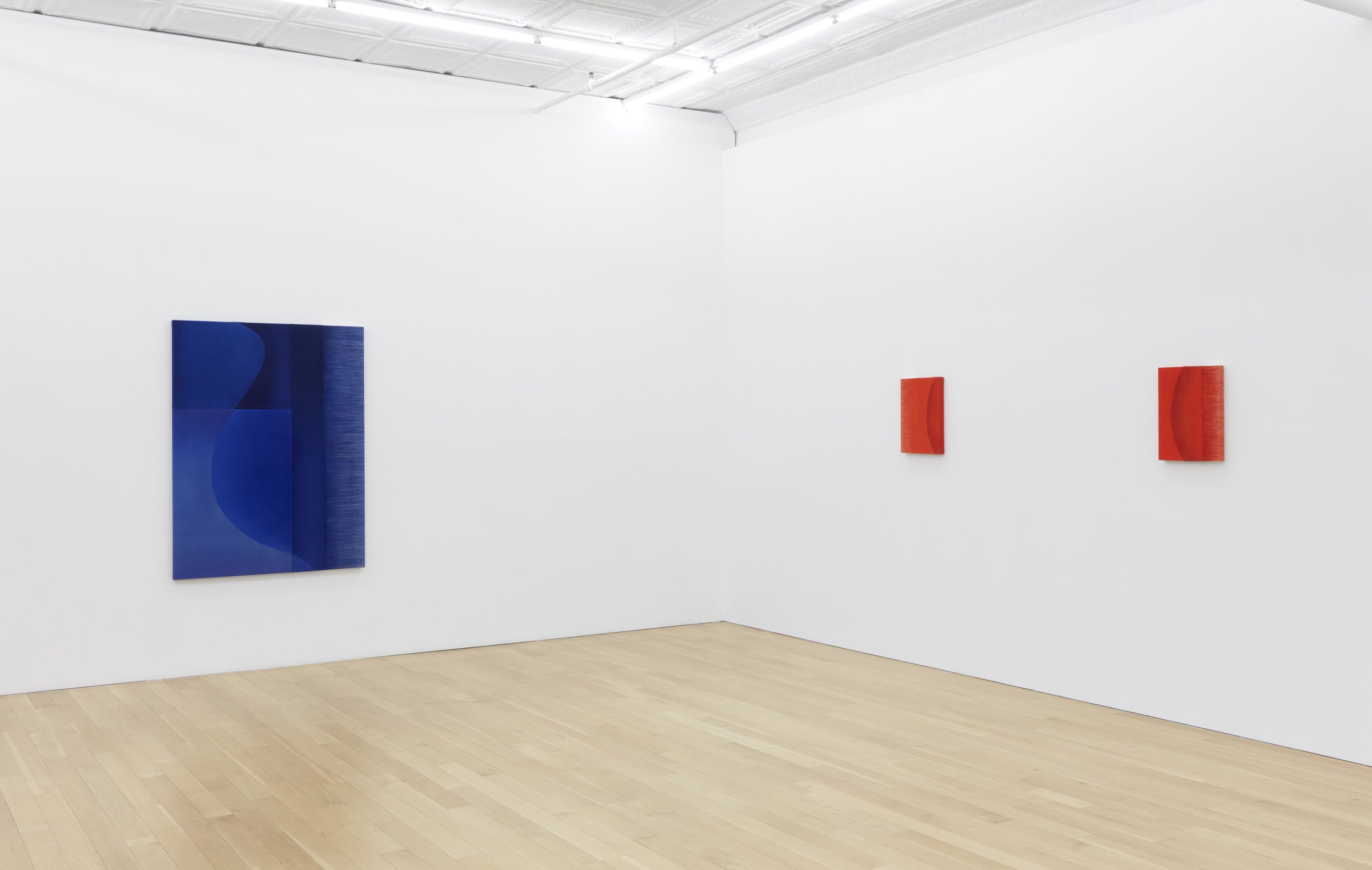
Installation view, Rebecca Ward: vector specter, April 5, 2025 – May 31, 2025, Peter Blum Gallery, New York. Photo: Courtesy of the artist and Peter Blum Gallery
The woven canvas can be understood as a physical representation of a mathematical grid, where the warp and weft create a regular pattern of squares and rectangles, a visual reflection of geometric order. As a queer identified person, Ward combines curving lines and axis to demonstrate that masculinity and femininity are not fixed, binary concepts, but are dynamic, evolving, and context dependent. In this way, the grid becomes a representation of the slippage between forms that can be viewed as bodies, vessels, graphs, or purely geometric outlines. Through these methods, Ward communicates the presence of what shapes cannot be fully grasped, offering a meditation on the nature of being, absence, and spaces in between.
Installation view, Rebecca Ward: vector specter, April 5, 2025 – May 31, 2025, Peter Blum Gallery, New York. Photo: Courtesy of the artist and Peter Blum Gallery
Rebecca Ward (b. 1984, Waco, TX) lives and works in Brooklyn, NY. She earned a BA at the University of Texas, Austin, TX (2006) and an MFA at the School of the Visual Arts, New York, NY (2012). Institutional exhibitions include Rebecca Ward: distance to venus, SITE Santa Fe, Santa Fe, NM (2022); Fresh Faces from the Rachofsky Collection, Site 131, Dallas, TX (2021); Over & Over, Columbia College, Chicago, IL (2018); Rebecca Ward, The FLAG Art Foundation, New York, NY (2017); Eastwing Biennial: Artificial Realities, The Courtauld Institute of Art, London, UK (2016); Making & Unmaking, Camden Art Centre, London, UK (2016); The Tim Sayer Bequest, The Hepworth Wakefield, West Yorkshire, United Kingdom (2016); Linear Abstraction, Savannah College of Art and Design, Savannah, GA (2015); Rebecca Ward: indulgences, Exchiesetta, Polignano a Mare, Italy (2015). Residencies include Shandaken: Storm King Art Center, New Windsor, NY (2016) and Atelier Alighiero Boetti, Todi, Italy (2013).
For more information about this exhibtion and others please visit the Peter Blum Gallery’s website here. The magazine did an interview with Ward which can be found here.
MAESTRO: LOADING
LOADING Mona Lisa, Courtesy of artist and HOMME gallery
Washington, D.C. – Artist and practicing architect, MAESTRO’s first solo exhibition, "LOADING," at HOMME Gallery, opened on April 3 and will be on view until the 24th of April 2025. Known for pixelated pen drawings of cultural icons in a perpetual state of "loading," his work blends fine art with digital interactivity, as well as the tension between the past and present.
Originally from Valencia, Spain, and now based in Santa Barbara, MAESTRO’s work is influenced by his architectural precision and multimedia expertise. Through augmented reality QR code integration, viewers can engage with his pieces in a new digital dimension.
LOADING Marilyn, Courtesy of artist and HOMME gallery
“I create art that merges elegance and technology, sparking cultural conversations through beauty in an era of digital.”
MAESTRO Installation Views, HOMME Gallery, Washington DC ©MASESTRO; Courtesy of the artist and HOMME Gallery, Photo: HOMME Gallery
Using a digitally distorted yet hyperreal approach, MAESTRO’s drawings challenge viewers to engage with pixelated cultural icons through a shifting perspective.
HOMME Gallery, a renowned space for emerging multimedia artists, is excited to showcase MAESTRO’s vision. "MAESTRO’s work challenges the way we perceive both art and technology, offering a unique and thought-provoking experience," says Amir Browder. The exhibition also features his debut resin sculpture, Glitching - Venus, a pixelated abstraction of the Venus de Milo.
Inspired by his experience recently immigrating to the United States and navigating digital connectivity, "LOADING" reflects the paradox of endless access yet fleeting connection. Augmented reality elements in his work transport viewers into shifting digital landscapes, challenging perceptions of history and modernity.
Exhibition details:
"LOADING" by MAESTRO
April 3 - 24, 2025
HOMME Gallery, D.C.
2000 L St NW
By appointment only
Courtesy of artist and HOMME gallery
About MAESTRO:
MAESTRO is a hyper realistic, black-and-white artist based in Santa Barbara, California. Originally from Valencia, Spain, MAESTRO received technical training from the Stuart Weitzman School of Design before beginning a dynamic career as a visual artist and architect. MAESTRO has worked for firms such as the Bjarke Ingels Group (B.I.G.) and had artistic collaborations with many LA-based creatives, including DOPEHAUS STUDIO and NeueHouse Hollywood. His work has been shown, among other venues, at the Charles Addams Fine Arts Gallery, the :iidrr Gallery in Manhattan, Graffiti Library in Los Angeles, The Victorian in Santa Monica, Just Another Gallery in Philadelphia, and the Sullivan Goss gallery in Santa Barbara. His first solo exhibition, “LOADING” will open at the HOMME Gallery in Washington D.C. on April 3rd, 2025.
About HOMME Gallery:
HOMME DC was founded by curator and creative director, Amir Browder, and has been in business since 2014. It is a\ forward-thinking art gallery and exhibition space located in Washington D.C. HOMME provides a dynamic platform for various art experiences, including visual arts, performing arts, and experiences that transcend the boundaries of medium. HOMME DC seeks to elevate the arts by bolstering diverse voices and talents that represent the leading-edge of today's contemporary creative scene, both in Washington D.C. and beyond.
For more information about this exhibition and others, please visit HOMME Gallery’s website here.
Kazuo Kadonaga
Kazuo Kadonaga Bamboo No. 1 A (26 pcs), 1976 Bamboo 92 1/4 x 2 1/4 x 2 1/4 inches 234.3 x 5.7 x 5.7 centimeters 92 1/2 x 92 x 13 1/2 inches overall 235 x 233.7 x 34.3 centimeters Photo: Evan Walsh
Los Angeles—BLUM is pleased to present a survey exhibition of Kazuo Kadonaga, an artist who worked extensively in Los Angeles during the early 1980s and has exhibited throughout the US, Europe, and Mexico. Kadonaga’s practice draws from a holistic approach to natural forms, where he unveils the essence of material properties. Deviating from sculpture as a repository of projected ideas, the artist exposes the phenomenological transformation of materials. The exhibition includes seventeen works from 1976 to 2019, spanning bamboo, oak, cedar, cypress, handmade paper, and glass.
Kazuo Kadonaga was born in 1946 and is based in Ishikawa Prefecture, where generations of the Kadonaga family have owned a cedar forest and lumber mill. A self-taught artist, Kadonaga first moved to Tokyo in 1966 to learn architectural drawing and later study architectural techniques such as welding at small factories. Immersing himself in the contemporary art scene, he frequented many galleries and attended major exhibitions of the time, such as the 10th Tokyo Biennale: Between Man and Matter and the Osaka Expo (both 1970). He studied under avant-garde painter Hironao Toyoshima, who would bridge him to Tsubaki Kindai Gallery, where Kadonaga held his first solo exhibition in 1971. Kadonaga’s earliest works combined wood with stainless steel (Wood No. 1) as well as with transparent acrylic (Wood No. 2) in which he would cut curves into squared lumber and produce a duplicate shape in a different material and place the forms side by side. These were shown at Tsubaki Kindai Gallery (1971) and Muramatsu Gallery (1973–77, and 1981) respectively, where Mono-ha artists, Kishio Suga, Nobuo Sekine, and Lee Ufan were actively exhibiting. During this time, his work was also included in several museum annuals, such as the 10th Contemporary Art Exhibition of Japan (1971) and the 7th, 8th, and 10th Japan Art Festival (1972, 1973, and 1975), which toured to Mexico, Slovenia, Germany, New Zealand, and Australia.
Kazuo Kadonaga Wood No.7 A, 1976 Oak 35 1/4 x 3 x 2 3/4 inches each 89.5 x 7.6 x 7 centimeters 35 1/4 x 62 x 4 1/4 inches overall 89.5 x 157.5 x 10.8 centimeters Photo: Evan Walsh
In 1974, Kadonaga was invited to participate in a hundred-day symposium on stone in Sweden. During his visit he had the opportunity to see Italian sculptor Giuseppe Penone’s carved and stripped tree trunks at the Museum of Modern Art, Stockholm, and was greatly inspired by his ability to use the medium of the tree itself. This experience provided an impetus for him to begin focusing on the singular materiality of wood, studying its unique organic properties. He often sliced or split cross sections of the logs, drying sections separately, and reassembling them into a solid form. The artist’s process would begin in his family’s cedar forest, cutting the base of a tree just above the root flare, while the wood is still wet. He then sent the logs to a sawmill to have them professionally cut into paper-thin layers of wood with a veneer mill—usually used for building houses and furniture—gluing each skin back to its original form, letting the thin wood buckle and flare out while drying. At the Kanagawa Prefectural Gallery exhibition From Method to Method in 1975, he unraveled a cedar log, leaving its paper-thin pieces of bark directly on the floor as if shedding skin like a snake. The two large cedar logs currently on view at BLUM were first exhibited at the Los Angeles Municipal Art Gallery in 1985 and display live cuts against the grain of the wood. The rectangular holes along the surface are the result of natural splitting. The jagged lines across the tree rings are prominent in Wood No. 11 DB (1999), a large, gnarled cedar trunk. Kadonaga created these splits by first cutting the face of the trunk using a chainsaw just a few inches and then striking the wood with a mallet to allow for the jagged splits to naturally occur.
Kadonaga was hired by Yoshishige Saito (1904–2001), a pioneer of modern Japanese constructivism, to assist with his solo exhibition at the National Museum of Modern Art, Tokyo, in 1978. Saito, who taught at Tama Art University from 1964 to 1973, was a key mentor to Nobuo Sekine and Kishio Suga. Sharing Saito’s conviction that illusion and individual expression were obsolete, Mono-ha artists often combined natural and industrial materials to articulate the relational structures through which these forms revealed themselves. While Kadonaga’s early works are in direct dialogue with Mono-ha as well as Minimalist repetition in both process and display to deviate from the objecthood of sculpture, the artist’s interests lay in exposing the intrinsic qualities and natural transformation of materials, and activating the threshold between formation and deformation that was specific to the materiality of wood. This was in stark contrast to Mono-ha’s focus on the in-between structure among subject, materials, and site.
Kazuo Kadonaga Wood No. 11 DB, 1999 Cedar 35 1/2 x 42 1/2 x 43 1/2 inches 90.2 x 108 x 110.5 centimeters Photo: Evan Walsh
In 1976, Kadonaga began investigating the metamorphic process in which oak and bamboo were separately transformed by charring half of each piece into a pyramid of ashes in a specialized furnace at intense heat (approximately 1,500 degrees Fahrenheit). Burning oak into charcoal is a ritual often used in Japanese tea ceremonies in preparation to heat tea, in which the oak burns evenly and its cross section dries in a starburst pattern that radiates out from the center (sakura zumi, or cherry blossom charcoal). First exhibited at Muramatsu Gallery in 1976, each oak piece in Wood No. 1A shows the unburned to charcoal gradation, displayed in a row of over a dozen pieces. Praised by artist Lee Ufan, Wood No. 1A was shown in tandem with Bamboo No. 7A, charred bamboo poles propped against the wall. In the current exhibition at BLUM, the two 1976 works are brought together, and installed under skylights. The bamboo work, in particular, creates an arresting pattern of shadows from the rays of natural sunlight.
In Conversation between Bamboo and Wood, Kadonaga activated sound by installing bamboo and wooden logs around a visitor who sat in the middle of the installation, experiencing the materials cracking in real time in response to shifts in temperature.
In 1988, he began working with washi (handmade Japanese paper), layering thousands of sheets and using a veneer press to condense and dry the papers into a solid block in a high frequency wood dryer machine. Each piece of paper is then separated one-by-one at one end of each work. These condensed layers of pulp are hung along the wall in long columns or triangular forms, where the fibrous, feathery edges of the paper are left exposed at the bottom. Rather than subjecting the materials to convey a concept, Kadonaga works with the natural properties of the paper to allow their form to come alive.





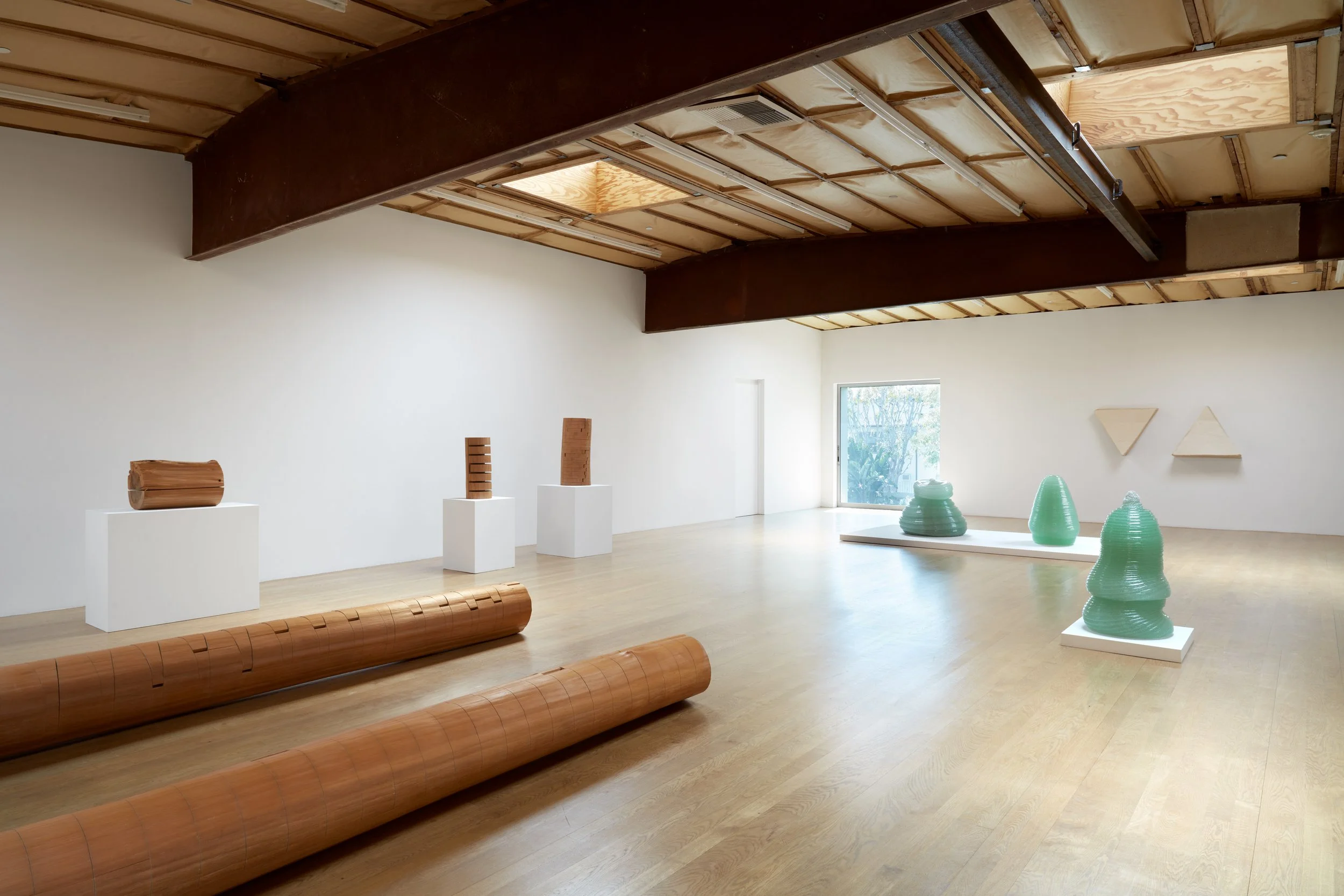






Kazuo Kadonaga Installation views, 2025 BLUM Los Angeles © Kazuo Kadonaga; Courtesy of the artist and BLUM Los Angeles, Tokyo, New York Photo: Evan Walsh
In 1999, Kadonaga began his long-term process of working with recycled glass from fluorescent light fixtures resulting in translucent green glass from iron oxide. For years, Kadonaga went through many trials and errors experimenting with molten glass using a custom-made furnace. The recycled glass is melted at 1,250 to 1,450 degrees Celsius (2,282 degrees Fahrenheit) in a melting furnace, and this melted glass slowly drips a single stream of hot liquid glass into the slow cooling furnace, letting the form take its own shape by steadily decreasing the temperature between three to six months depending on their size. They result in solid, squat mounds that swell like a Buddha’s belly and taper towards the top. The glass sculptures exhibited at BLUM range in weight from 1,000 to 1,200 pounds. Through these sculptures, one can observe how the transparent fragility of glass is apparent through the surface formation of the coils, which belie their weight and heft.
Each material is approached with the fresh eyes of a studied observer. Eschewing his artistic hand, Kadonaga unravels each work from the inside out as if the materials take on their own life and form. As one critic noted about Kadonaga’s process, “In a serial manner, each element became the topic of his scrutiny. He analyzed their component parts, tested their attributes, and examined their intrinsic characteristics, noting their change in environmental characteristics like fluctuations in humidity or reaction to forceful impact.”
Kazuo Kadonaga Wood No.8 L, 1982 Cedar 24 5/8 x 10 x 9 3/4 inches 62.5 x 25.4 x 24.8 centimeters Photo: Evan Walsh
Kazuo Kadonaga (b.1946, Ishikawa, Japan) is a contemporary sculptor celebrated for his material-driven practice. Coming from a family of foresters, he developed a deep appreciation for the natural properties of wood. While he initially explored painting and architecture, Kadonaga shifted his focus in the early 1970s, rejecting overt artistic expression in favor of processes that allow materials to shape their own form. Since then, he has worked with wood, bamboo, paper, and glass, using methods that emphasize the natural behavior of each material. From coiling molten glass into sculptural forms to reassembling cedar logs, his works reveal the subtle interplay between natural structures and transformational processes. While his practice resonates with the philosophies of Japan’s Mono-ha artists and Western process art, Kadonaga’s approach remains distinctly his own—one of observation, patience, and reverence for materiality.
Kadonaga continues to live and work in Ishikawa, Japan. His artwork has been exhibited including significant solo presentations at the Mingei International Museum, San Diego, CA (2005); Salt Lake Art Center, Salt Lake City, UT (2001); The Art Museum of South Texas, Corpus Christi, TX (1988); and Los Angeles Municipal Art Gallery, Los Angeles, CA (1985). In 1983, he was an artist-in-residence at the Stedelijk Museum in Amsterdam, the Netherlands. His work is held in numerous public collections worldwide, such as the 21st Century Museum of Contemporary Art, Toyama City, Japan; Albuquerque Museum, Albuquerque, NM; Art Museum of South Texas, Corpus Christi, TX; The Honolulu Museum of Art, Honolulu, HI; Museo de Arte Moderno, Mexico City, Mexico; The Museum of Glass, Tacoma, WA; the Museum of Modern Art, Toyama, Japan; Rijksmuseum Kröller-Müller, Otterlo, the Netherlands; and the University of California Santa Barbara Art Museum, CA.
The exhibition opened on Saturday, April 5, with an opening reception held from 5 to 7 pm. The exhibition will be on view at BLUM Los Angeles location until May 17, 2025
For more information about this exhibition and others please visit Blum’s website here. The gallery can also be found on Instagram.
The Anansean World of Robert Colescott





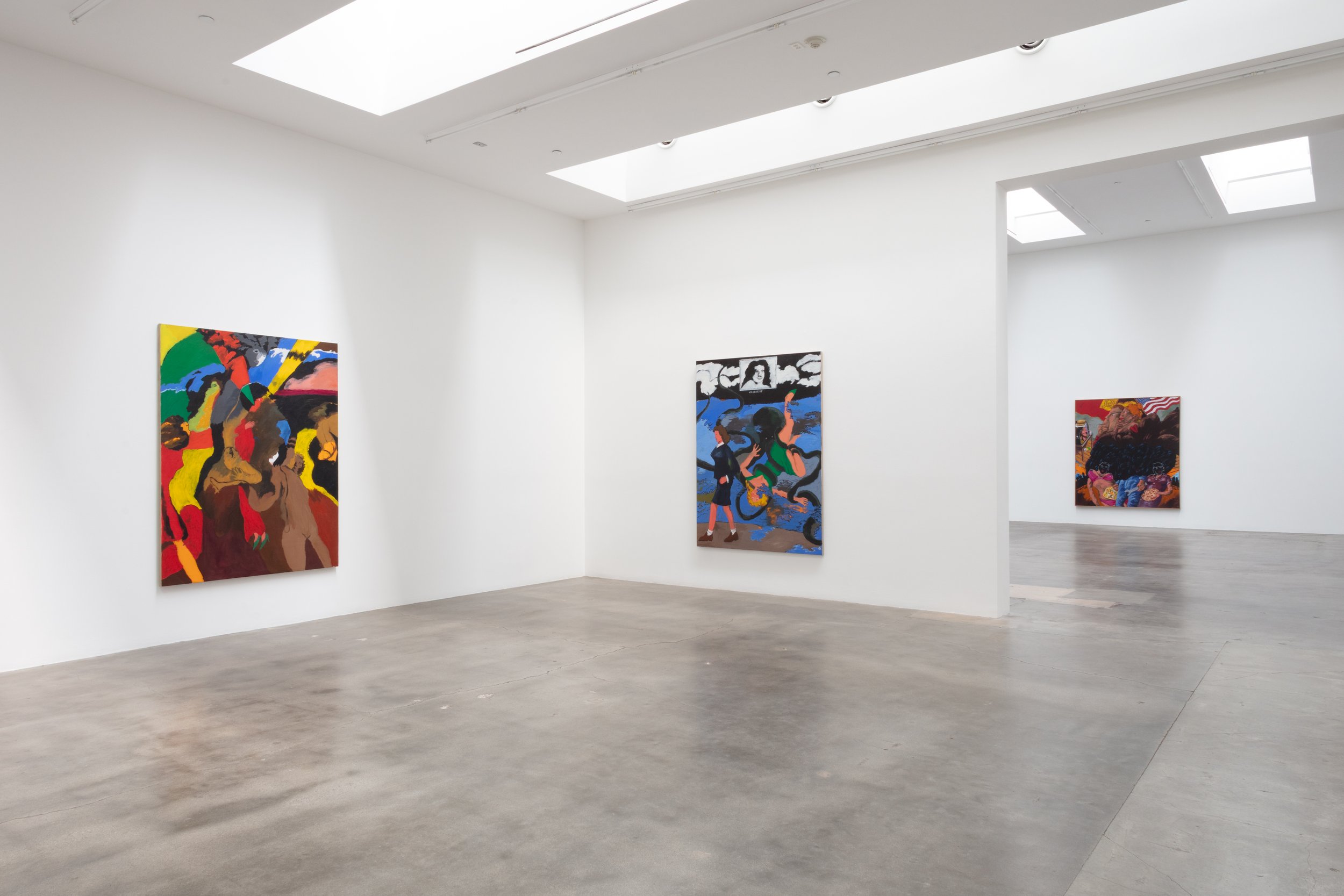







The Anansean World of Robert Colescott curated by Umar Rashid Installation views, 2025 BLUM Los Angeles © The Robert H. Colescott Separate Property Trust / Artists Rights Society (ARS), New York; Courtesy of The Trust and BLUM Los Angeles, Tokyo, New York Photo: Josh Schaedel
Los Angeles, CA—BLUM is pleased to present an exhibition of paintings and drawings by the late artist Robert Colescott, curated by Los Angeles–based artist Umar Rashid. Rashid frames this presentation of work—ranging five decades—as an entry point into The Anansean World of Robert Colescott, a parallel universe that violates principles of social and natural order, blithely disrupting what once was and then reestablishing it on a new basis.
Robert Colescott Untitled, 1949 Gouache and graphite on paper 10 x 14 1/2 inches (25.4 x 36.8 centimeters) 17 1/8 x 21 5/8 x 1 1/2 inches (43.5 x 54.9 x 3.8 centimeters) Photo: EvanWalsh
“In the time of the ancient deities, the trickster was the only one who could successfully navigate the complex and morally fraught universe of power-hungry, vengeful, wickedly jealous, and ambivalent gods, as well as their equally maligned human counterparts. One can only imagine the path of Thoth, Hermes, Coyote, Dionysus, Loki, Prometheus, and the original spider-man, Ananse. Although there are far more “tricksters” woven into our collective human consciousness throughout time, I have kept the list relatively short so that I may get to the point. Despite being tasked with delivering various decrees on this and that, the messengers of the gods of old almost always had a penchant for mischief, high drama, and outright rebellion. And despite these “faults,” they managed to survive the wrath of their omnipotent masters and formed a complex relationship with their painfully mortal audience. Their legacy as “middle management” and mere couriers left an indelible mark on their human charges. With the death of the old pantheon, humanity’s hubristic and equally chaotic reign, produced its own gods, monsters, and tricksters, bringing to mind the old saying, “As above, so below.” And thus, we enter the world of Robert Colescott, grand trickster of the ages. The appellation is incredibly apt in terms of his artistic practice, yet he was not born thus but forged through the crucible of being an African American fine artist in a time of limited opportunity for those like him and the ideas he sought to bring forth in a postindustrial world, burdened by draconian racial awareness, social lobotomization, and post-imperial, imperial war machinations. This is mid-twentieth-century America, replete with all the trappings of Mount Olympus at its zenith.”
Robert Colescott Untitled, 1970 Acrylic on canvas 79 x 98 1/8 x 1 5/8 inches (200.7 x 249.2 x 4.1 centimeters) Photo: Evan Walsh
Robert Colescott (b. 1925, Oakland, CA; d. 2009, Tucson, AZ) was a proud instigator who, over a nearly six-decade painting career, fearlessly tackled subjects of social and racial inequality, class structure, sex, and the human condition through his uniquely rhythmic and often manic style of figuration. His distinctive works, while not easily placed within any one specific school of painting, share elements of Abstract Expressionism, Pop Art, "Bad" Painting, Renaissance Painting, Neo- Expressionism, and Surrealism. A retrospective curated by Lowery Stokes Sims and Matthew Weseley, opened at the Contemporary Arts Center, Cincinnati, OH, in 2019, and later traveled to the Portland Art Museum, Portland, OR; Sarasota Art Museum, Sarasota, FL; Chicago Cultural Center, Chicago, IL; and New Museum, New York, NY. The exhibition was accompanied by a comprehensive monograph on the artist’s life and work, published by Rizzoli Electa.
Robert Colescott A Can of Worms, 1978 Watercolor and graphite on Arches paper 30 1/4 x 22 3/4 x 1 inches (76.8 x 57.8 x 2.5 centimeters) 37 1/2 x 29 3/4 x 1 1/2 inches framed (95.3 x 75.6 x 3.8 centimeters) Photo: EvanWalsh
Colescott’s work is represented in public collections internationally, in such notable institutions as the Akron Art Museum, Akron, OH; Art Bridges Foundation, Bentonville, AR; Baltimore Museum of Art, Baltimore, MD; Brooklyn Museum of Art, Brooklyn, NY; BY ART MATTERS, Hangzhou, China; California African American Museum, Los Angeles, CA; National Gallery of Art, Washington, D.C.; Crocker Museum of Art, Sacramento, CA; Dallas Museum of Art, Dallas, TX; Delaware Museum of Art, Wilmington, DE; Denver Museum of Art, Denver, CO; Detroit Institute of Arts, Detroit, MI; de Young Fine Arts Museums of San Francisco, CA; Hammer Museum, Los Angeles, CA; High Museum of Art, Atlanta, GA; Hirshhorn Museum & Sculpture Garden, Washington, D.C.; Los Angeles County Museum of Art, Los Angeles, CA; Lucas Museum of Narrative Art, Los Angeles, CA; Manetti Shrem Museum of Art, UC Davis, CA; Metropolitan Museum of Art, New York, NY; Morgan Library and Museum, New York, NY; Museum of Contemporary Art, Los Angeles, CA; Museum of Contemporary Art, Chicago, IL; Museum of Fine Arts, Boston, MA; Museum of Modern Art, New York, NY; Oakland Museum of California, Oakland, CA; Portland Museum of Art, Portland, OR; Pinault Collection, Paris, France; Rubell Family Collection, Miami, FL; San Francisco Museum of Modern Art, San Francisco, CA; Seattle Art Museum, Seattle, WA; Studio Museum in Harlem, New York, NY; Tucson Museum of Art, Tucson, AZ; Wadsworth Atheneum Museum of Art, Hartford, CT; Walker Art Center, Minneapolis, MN; Whitney Museum of American Art, New York, NY; among many more.
Umar Rashid (b. 1976, Chicago, IL) creates paintings, drawings, and sculptures that chronicle the grand historical fiction of the Frenglish Empire (1648–1880) a conceptual world he has been developing for over seventeen years. Each work represents a frozen moment from this parallel history, often recalling fraught real-world narratives—both canonized and marginalized—with familiar signifiers and iconographies. Rashid’s work channels the visual lexicons of hip hop, ancient and modern pop culture, gang and prison life, and revolutionary movements throughout time. Rashid’s work is represented in the public collections of the Brooklyn Museum, Brooklyn, NY; Hudson River Museum, Yonkers, NY; Jorge Pérez Collection, Miami, FL; Mount Holyoke Art Museum, South Hadley, MA; Nevada Museum of Art, Reno, NV; Ruth and Elmer Wellin Museum of Art at Hamilton College, Clinton, NY; Santa Barbara Museum of Art, Santa Barbara, CA; Wadsworth Atheneum Museum of Art, Hartford, CT; and the Zeitz Museum of Contemporary Art Africa, Cape Town, South Africa, among others.
About BLUM
BLUM represents more than sixty artists and estates from twenty countries worldwide, nurturing a diverse roster of artists at all stages of their practices with a range of global perspectives. Originally opened as Blum & Poe in Santa Monica in 1994, the gallery has been a pioneer in its early commitment to Los Angeles as an international arts capital.
The gallery has been acclaimed for its groundbreaking work in championing international artists of postwar and contemporary movements, such as CoBrA, Dansaekhwa, Mono-ha, and Superflat, and for organizing museum-caliber solo presentations and historical survey exhibitions across its spaces in Los Angeles, Tokyo, and New York. Often partnering with celebrated curators and scholars such as Cecilia Alemani, Alison M. Gingeras, Sofia Gotti, Joan Kee, and Mika Yoshitake, the gallery has produced large- scale exhibitions focusing on the Japanese Mono-ha school (2012); the Korean Dansaekhwa monochrome painters (2014); the European postwar movement CoBrA (2015); Japanese art of the 1980s and 1990s (2019); a rereading of Brazilian Modernism (2019); a revisionist take on the 1959 MoMA exhibition, New Images of Man (2020); and a survey of portraiture through a democratic and humanist lens (2023); among others.
BLUM’s wide-reaching program includes exhibitions, lectures, performance series, screenings, video series, and an annual art book fair at its base in Los Angeles. BLUM Books, the gallery’s publishing division, democratically circulates its program through original scholarship and accessible media ranging from academic monographs, audio series, magazines, to artists’ books. Across the three global locations, BLUM prioritizes environmental and community stewardship in all operations. In 2015, it was certified as an Arts:Earth Partnership (AEP) green art gallery in Los Angeles and consequently became one of the first green certified galleries in the United States. The gallery is also a member of the Gallery Climate Coalition, which works to facilitate a more sustainable commercial art world and reduce the industry’s collective carbon footprint. BLUM is committed to fostering inclusive and equitable communities both in its physical and online spaces and believes that everybody should have equal access to creating and engaging with contemporary art.
The exhibition opened Saturday, April 5, with a Public conversation with Sandra Jackson-Dumont and Umar Rashid, moderated by JJ Strawn at 4 pm, during which an opening reception was held from 5 to 7 pm. The exhibition will be on view at BLUM Los Angeles location until May 17, 2025
For more information about this exhibition and others please visit Blum’s website here. The gallery can also be found on Instagram.
JAN VAN IMSCHOOT: THE HAPHAZARDNESS OF OPINIONS
JAN VAN IMSCHOOT Les terres vertes (moulin à poivre, version flamand), C'est beau, c'est belge VI, 1999 Technique mixte sur papier | Mixed media on paper 35 × 25 cm — 13 3/4 × 9 3/4 in Courtoisie de l'artiste et Templon, Paris – Bruxelles - New York | Courtesy of the artist and Templon, Paris – Brussels - New York Photo © Isabelle Arthuis
For the first time, this spring, the Belgian painter Jan Van Imschoot unveils a previously unseen facet of his work: 45 drawings paying tribute to major figures of French literature, from Marcel Proust to Albert Camus, along with a series of interior scenes in dialogue with a selection of his works from C’est beau c’est belge, created 25 years ago.
Toutes les images / All images : © Courtesy of the artist and TEMPLON, Paris —Brussels — New York
Now recognized as one of the leading names in contemporary Belgian painting, Jan Van Imschoot, the self-proclaimed master of “anarcho-baroque,” brings to his grand oil compositions a bold and erudite reinterpretation of the legacy of the great masters. His works blend formal and philosophical reflections on art history, drawing connections from Tintoretto to Luc Tuymans, with echoes of Goya and Matisse.
In this unprecedented new body of works on paper, Jan Van Imschoot anchors his artistic explorations in two key literary figures: Albert Camus, whom he admires for his extraordinary life and his commitment, and Marcel Proust, whose “philosophy of boredom” fascinates him. Their portraits and the depiction of their destinies are set alongside a series of interior drawings from the 1970s. Inspired by photographs, these settings offer narratives on the margins of history, elegant in some cases, vaguely Buñuelian in others. The assembled perspectives testify to a delicate balancing act between order and chaos. A dialogue is established between these recent series and C’est beau c’est belge, a body of work created in 1999 and never exhibited before.
Toutes les images / All images : © Courtesy of the artist and TEMPLON, Paris —Brussels — New York
For Jan Van Imschoot, drawing is a medium that challenges entrenched habits: “What I love about this medium is that, unlike oil painting, drawing offers only one chance,” he explains. “Once a line is drawn, it cannot be erased or reworked. I have always embraced its irreversibility. It is a play of color that I attempt to control, a dance with the pencil that I have been exploring for decades »
JAN VAN IMSCHOOT Le hasard dans les opinions 4, 2023 Technique mixte sur papier | Mixed media on paper 65 × 50 cm — 25 1/2 × 19 3/4 in Courtoisie de l'artiste et Templon, Paris – Bruxelles - New York | Courtesy of the artist and Templon, Paris – Brussels - New York Photo © Isabelle Arthuis
Born in 1963 in Ghent, Jan Van Imschoot has been living and working in France since 2013. The Ghent SMAK held a major solo exhibition of his work in 2002. More recently, his paintings have been shown at the Dusseldorf Kunstpalast (2005), Museum Dhondt-Dhaenens in Deurle (2008), National Art Museum of China in Beijing (2010) and Fondation Volume! in Rome (2012). In 2018, he took part in the group exhibition Sanguine/Bloedrood curated by Luc Tuymans for the M HKA in Antwerp and Fondazione Prada in Milan, and in Feast of Fools, Bruegel Rediscovered at Château de Gaasbeek in Belgium in 2019. The Roger Raveel Museum hosted the 7th Biennial of Painting on the theme of inner spaces in 2020, where Van Imschoot showed four large paintings from his Interiors series. In 2024, the Ghent SMAK held a major retrospective of his work, The End is Never Near. Jan Van Imschoot has been represented by Galerie Templon since 2015.
JAN VAN IMSCHOOT’s CHANCE IN OPINIONS opened on 6 MARCH and will be on view until 19 APRIL 2025 at the TEMPLON BRUSSELS location For more information about the exhibit, please visit Templon’s site.
Van Gogh: The Roulin Family Portraits
an Gogh: The Roulin Family Portraits exhibition at the Museum of Fine Arts, Boston. March 30, 2025 to September 7, 2025 * Ann and Graham Gund Gallery* Photograph © Museum of Fine Arts, Boston
BOSTON 2025, In 1888 and 1889, during his stay in Arles, in the South of France, Vincent van Gogh (1853–1890) forged a cherished friendship with a neighboring family: postman Joseph Roulin; his wife, Augustine; and their three children: Armand, Camille, and Marcelle. During this pivotal time in his life, Van Gogh created 26 intimate portrayals of the working-class family. Organized in partnership with the Van Gogh Museum in Amsterdam, Van Gogh: The Roulin Family Portraits is the first exhibition devoted to the artist’s deep connection to the family and the making of their portraits. Featuring 23 works by Van Gogh—including 14 of the Roulin portraits—as well as earlier Dutch art and Japanese woodblock prints that inspired him, the exhibition includes iconic works from the MFA’s collection alongside more than 20 key loans from prominent international collections. The exhibition presents 10 letters from Joseph Roulin to Van Gogh and the artist’s siblings together for the first time, offering an intimate and tender look at their friendship. This selection of works provides new insights into Van Gogh’s world and yearning for meaningful connection as he moved to a new city and found himself at a turning point in his life and work.
Self Portrait, 1889Vincent van Gogh (Dutch (worked in France), 1853–1890)Oil on canvas* National Gallery of Art, Washington, Collection of Mr. and Mrs. John Hay Whitney, 1998.74.5* Courtesy Museum of Fine Arts, Boston
“The exhibition gives visitors the opportunity to see the full flowering of Van Gogh’s artistic aspirations and the intensity of his focus—a clarity that may have emerged, in part, because of his very deep bonds with the postman and his family,” said Matthew Teitelbaum, Ann and Graham Gund Director. “It tells a new and compelling story of Van Gogh’s emotional and artistic search to make connection to a family who helped guide his last years.”
Postman Joseph Roulin, 1888 Vincent van Gogh (Dutch (worked in France), 1853–1890) Oil on canvas* Gift of Robert Treat Paine, 2nd* Photograph © Museum of Fine Arts, Boston
The exhibition is co-curated by Katie Hanson, William and Ann Elfers Curator of Paintings, Art of Europe, at the MFA and Nienke Bakker, Senior Curator at the Van Gogh Museum. “It has been an honor and a pleasure to work with Nienke Bakker on this exhibition dedicated to friendship, family, and connection,” said Hanson. “It features not only Van Gogh’s depictions of the Roulin family, but also works attending to his thinking about those portraits. The MFA’s Roulin portraits are beloved icons of the collection—so part of our aim in this exhibition is to slow down, look more closely, and feel deeply with these magnificent works of art by foregrounding the human story behind them.”
an Gogh: The Roulin Family Portraits exhibition at the Museum of Fine Arts, Boston. March 30, 2025 to September 7, 2025 * Ann and Graham Gund Gallery* Photograph © Museum of Fine Arts, Boston
Van Gogh: The Roulin Family Portraits is on view at the MFA from March 30 through September 7, 2025 in the Ann and Graham Gund Gallery. Timed-entry tickets, which include general admission, are required for all visitors and can be reserved on mfa.org or purchased at the Museum. Member Preview takes place March 26–29. Following the MFA’s presentation, the exhibition will travel to the Van Gogh Museum, where it will be on view from October 3, 2025, through January 11, 2026.
Exhibition Overview
The exhibition is organized in thematic sections, tracing Van Gogh’s friendship with the Roulins, his admiration for his predecessors, his attempt to create a community of fellow artists, and his emotional ties to his supportive family and friends.
an Gogh: The Roulin Family Portraits exhibition at the Museum of Fine Arts, Boston. March 30, 2025 to September 7, 2025 * Ann and Graham Gund Gallery* Photograph © Museum of Fine Arts, Boston
• The first section, “Sense of Place: The Yellow House in Arles,” provides an immersive look at Arles, where the artist lived from February 1888 to April 1889, and the dwelling he rented in May 1888 to use first as a studio and then as a home. An 1887 self-portrait, completed in Paris as Van Gogh was making plans to move south, radiates the ambition and enthusiasm of the painter as he envisioned a new life in Arles. A map of the town orients visitors along with The Yellow House (The Street) (1888), the artist’s colorful depiction of his home and studio where the Roulin family posed for their portraits. A schematic construction of Van Gogh’s studio within this first gallery provides a sense of scale for visitors of the cozy space in which the artist worked.
an Gogh: The Roulin Family Portraits exhibition at the Museum of Fine Arts, Boston. March 30, 2025 to September 7, 2025 * Ann and Graham Gund Gallery* Photograph © Museum of Fine Arts, Boston
• Although Van Gogh thought it would be easier to find models and make contacts in Arles than in Paris, even after four months whole days went by without him exchanging a word with anyone. In summer 1888, Van Gogh and Joseph Roulin shared drinks at a café and a deep friendship began—and with it, the opportunity for Van Gogh to practice painting people, something he thought brought out the best in him. “The Postman and Portrait Practice,” a section dedicated to Van Gogh’s best friend in Arles, includes the artist’s earliest depiction of him, the MFA’s Postman Joseph Roulin (1888), as well as two drawings of Roulin. The section is supplemented with portraits by 17th-century Dutch artists from which he drew inspiration, such as Merry Drinker (about 1628–30) by Frans Hals (1582/83–1666) and Portrait of a Family in an Interior (1654) by Adriaen van Ostade (1610–1684), as well as lithographs by Honoré Daumier (French, 1808–1879).
Letter from Joseph Roulin to Vincent van Gogh, October 24, 1889 Ink on paper * Van Gogh Museum, Amsterdam (Vincent van Gogh Foundation) * Courtesy Museum of Fine Arts, Boston
• After completing his first painting of Joseph Roulin in summer 1888, Van Gogh would go on to create a suite of 26 portraits of the five Roulin family members by April 1889. In addition to painting Joseph and Augustine Roulin, he painted their children: three solo portraits each of Armand, Camille, and Marcelle. In the third section, “The Roulin Family,” the entire family is portrayed across four canvases encircling the visitor. A large series of works devoted to the members of a single working-class family is unique not only in Van Gogh’s oeuvre, but also highly unusual in the history of art, suggesting the satisfaction he felt in creating these portraits was both personal and professional.
Van Gogh: The Roulin Family Portraits exhibition at the Museum of Fine Arts, Boston. March 30, 2025 to September 7, 2025 * Ann and Graham Gund Gallery* Photograph © Museum of Fine Arts, Boston
• Van Gogh’s Roulin family portraits were a creative amalgamation of close observation of his beloved friends and of other sources of inspiration. “Creating Community through Art” highlights Van Gogh’s artistic influences, from Japanese printmakers like Toyohara Kunichika and Utagawa Kunisada to Dutch artists including Hals and Rembrandt (1606–1669). This section also situates Van Gogh within the artistic community of his time, featuring works by artist friends Émile Bernard (1868–1941) and Paul Gauguin (1848–1903), the latter of whom shared his Yellow House in Arles for two months in late 1888.
an Gogh: The Roulin Family Portraits exhibition at the Museum of Fine Arts, Boston. March 30, 2025 to September 7, 2025 * Ann and Graham Gund Gallery* Photograph © Museum of Fine Arts, Boston
• After an argument with Gauguin in December 1888, Van Gogh cut his left ear and was hospitalized. Joseph Roulin visited the artist in the hospital and wrote several letters to Van Gogh’s family, updating them on his condition. Roulin also wrote to Van Gogh for months after the artist pursued residential care in the psychiatric hospital at Saint- Rémy. “Letters from the Postman” presents 10 of these letters, offering an intimate look at the relationship between the artist and his friend.
an Gogh: The Roulin Family Portraits exhibition at the Museum of Fine Arts, Boston. March 30, 2025 to September 7, 2025 * Ann and Graham Gund Gallery* Photograph © Museum of Fine Arts, Boston
• “Observation and Inspiration” explores how Van Gogh found great potential for art in the people and places around him—starting with what he saw and modifying it to bring forth profound depth of feeling. In addition to the dedicated portraits of Augustine Roulin, Van Gogh included her features in other paintings including The Dance Hall in Arles (1888) and The Raising of Lazarus (after Rembrandt) (1890). A similar combination of vision and imagination characterizes the landscapes Ravine (1889) and Enclosed Field with Ploughman (1889) from the MFA’s collection that Van Gogh painted in Saint-Rémy.
an Gogh: The Roulin Family Portraits exhibition at the Museum of Fine Arts, Boston. March 30, 2025 to September 7, 2025 * Ann and Graham Gund Gallery* Photograph © Museum of Fine Arts, Boston
• In the final section, “Enduring Legacy: Beyond Arles,” the exhibition comes full circle – ending as it began, with the artist’s own image and a cherished place. Here, visitors encounter Self-Portrait (1889) and The Bedroom (1889), both painted in autumn 1889 in the hospital in Saint-Rémy, as Van Gogh reminisced about his time in Arles a year prior when he focused on the portraits of the Roulin family. Photographs of the Roulins, taken later in their lives, are featured, allowing visitors to see the individuals behind the portraits. The exhibition—and this section especially—explores how the Roulin family, and Van Gogh himself, were immortalized through his art.
• The exit foyer of the exhibition serves as a community space for visitors to write and color postcards of the MFA’s Postman and enjoy reading a children’s book and the exhibition’s catalogue. Visitors can also learn more about Van Gogh’s techniques with tactile 3-D prints of detail areas from Van Gogh’s Lullaby: Madame Augustine Roulin Rocking a Cradle (La Berceuse). MFA conservators partnered with Canon Production Printing Canada Inc. and Canon Production Printing Netherlands B.V. to generate the prints, using photogrammetry to create a digital 3-D model of areas from the painting.













an Gogh: The Roulin Family Portraits exhibition at the Museum of Fine Arts, Boston. March 30, 2025 to September 7, 2025 * Ann and Graham Gund Gallery* Photograph © Museum of Fine Arts, Boston
Exhibition Collaborators
The MFA’s presentation of Van Gogh: The Roulin Family Portraits has been shaped by input from a cohort of local artists, social workers, poets, and community leaders organized through Table of Voices, the Museum’s initiative for embedding community perspectives into exhibitions. This cohort explored Van Gogh’s quest for belonging and connection, expanding how audiences think about friendship, family, and community. The group included Anthony Febo, Reid Flynn, Rev. Dr. Stephanie May, Quandre Mcghee, Marla McLeod, Genaro Ortega, Heather Ross, and Angela Soo Hoo.
Conservation
In preparation for the exhibition, MFA conservators were given an unprecedented amount of time to examine Van Gogh’s Postman Joseph Roulin and Lullaby: Madame Augustine Roulin Rocking a Cradle (La Berceuse) from the MFA’s collection. The portrait of Augustine Roulin yielded particularly compelling insights about how the painting was made and how it has changed over time.
With digital manipulation, it is now possible to envision what some of Van Gogh’s paintings would have looked like at the time they were painted. Visitors can learn more about these discoveries in the MFA’s Conservation Center located on the third floor of the Museum and through an in depth video on mfa.org.
Publication
Van Gogh: The Roulin Family Portraits is accompanied by a catalogue from MFA Publications. Relying on archival material, contemporary criticism, and technical studies, the catalogue features insightful essays on Van Gogh’s practice, beliefs about portraiture, his personal relationship with the Roulins, and his admiration for his contemporaries as well as 17th-century Dutch portraitists, as well as full translations of the 10 letters written by Joseph Roulin to Van Gogh and his family.
MFA Mobile
A multimedia guide on MFA Mobile on Bloomberg Connects allows visitors to explore the historical context of the exhibition, Van Gogh’s artistic influences, a living painter’s perspective on Van Gogh’s work, and more. Available to enjoy at home or at the Museum, this multimedia tour is led by curators, a conservator, and an artist and includes text transcripts and audio descriptions of the art works for visitors who are blind or have low vision.
Public Programs
• Visitors caught a sneak peek of the exhibition before it opens to the public on March 28 at MFA Late Nites (8 pm–1 am)—the Museum’s signature after-hours event.
• As part of its Art Docs series, the MFA is screening Van Gogh: Poets and Lovers on Sunday, March 30 and Saturday, May 10. The film focuses on Van Gogh’s transformative years in the South of France, a period when he revolutionized his artistic style. During this time, Van Gogh became intensely driven by a passion for storytelling, transforming the world around him into vibrant, idealized landscapes and symbolic figures. In conjunction with the exhibition, the 10-week course Van Gogh: Portraiture, Influence, and Legacy offers an in-depth exploration of his art, influences, and techniques. On Wednesday afternoons from April 2 to June 11, experts in art history, conservation
• music, and food provide new insights into the artist’s techniques, materials, enduring artistic influence, and his environment in Provence.
• On Thursday, May 15, Susan Alyson Stein, Engelhard Curator of 19th-Century European Painting at The Metropolitan Museum of Art, shares how Van Gogh’s influence spread to the U.S. The Robert J. Boardingham Memorial Lecture, Postman Cometh: Van Gogh’s Rise to Fame in America, explores this fascinating history and explains why Van Gogh’s portraits—including those of the Roulin family—were destined for American collections and exhibitions.
• In The City Talks: Creativity and the Mind (May 29), mental health practitioners, researchers, and artists discuss the transformative power of art as a healing tool.
• Massachusetts residents enjoy free admission to the exhibition during the Museum’s annual Memorial Day Open House (May 26) and Juneteenth celebration (June 19).
Shop
In the MFA Shop, visitors can purchase the exhibition catalogue and an assortment of products exclusive to the MFA. A wide selection of scarves, pillow covers, tote bags, mugs, magnets, and coasters feature Van Gogh’s works from the MFA’s collection including Postman Joseph Roulin, Lullaby: Madame Augustine Roulin Rocking a Cradle (La Berceuse), and Enclosed Field with Ploughman. Van Gogh journals, t-shirts, note cards, umbrellas, hats, jewelry, puzzles, and skateboards are also available.
The MFA has partnered with technology company Endstate who has designed custom NFC- enabled apparel featuring works from the exhibition. The limited-edition collection features three exclusive pieces inspired by the MFA’s iconic works by Van Gogh: a mid-weight graphic t- shirt featuring Enclosed Field with Ploughman (1889), heavy-weight hoodie featuring a large- scale print of Ravine (1889) on the back of the product, and an embroidered cap inspired by Van Gogh’s Postman Joseph Roulin (1888). Each piece in the collection offers item holders exclusive benefits including VIP access to MFA Late Nites on March 28, a private exhibition tour with MFA conservator Lydia Vagts, and access to a behind-the-scenes video of the exhibition’s installation.
Sponsors
Van Gogh: The Roulin Family Portraits is sponsored by Bank of America. Generously supported by the Abrams Foundation, Penny Vinik, the Richard C. von Hess Foundation, and Barbara M. Eagle. Additional support comes from Cathy Minehan, Barbara and Michael Schaefer, Emi M.and William G. Winterer, the Cordover Exhibition Fund, the MFA Associates / MFA Senior Associates Exhibition Endowment Fund, and the Ellen and Robert Jaffe Fund. Organized in collaboration with the Van Gogh Museum, Amsterdam. Supported in part by an indemnity from the Federal Council on the Arts and the Humanities. Media partner is WCVB Channel 5 Boston.
About the Museum of Fine Arts, Boston
The MFA brings many worlds together through art. Showcasing masterpieces from ancient to contemporary, our renowned collection of more than half a million works tells a multifaceted story of the human experience—a story that holds unique meaning for everyone. From Boston locals to international travelers, visitors from all over come to experience the MFA—where they reveal connections, explore differences and create a community where all belong.
The exhibition opens on March 30 and will be on view until September 7, 2025 . For more information about this exhibition and others at the Museum of Fine Arts, Boston, please visit their site here. The museum can be found on Facebook, X, Instagram and YouTube.
Irving Penn: Centennial
Video Courtesy of MOP Foundation: Irving Penn: Centennial, From 23 November 2024 to 1 May 2025, MOP Foundation Muelle de Batería s/n, A Coruña, Galicia
A Coruña, 22 November 2024. The Marta Ortega Pérez (MOP) Foundation tomorrow opens its fourth large-scale exhibition to the public: Irving Penn: Centennial, organized by The Metropolitan Museum of Art, New York in collaboration with The Irving Penn Foundation, curated by Jeff L. Rosenheim, Joyce Frank Menschel Curator in Charge of Photographs at The Met. The collection, the most comprehensive from this prolific photographer ever shown in Spain to date, may be viewed until 1 May 2025 in the MOP Foundation exhibition centre located in the port area of A Coruña.
Irving Penn Pablo Picasso at La Californie,Cannes, 1957 ©The Irving Penn Foundation
Irving Penn: Centennial, created in 2017 for the centenary of the photographer’s birth, celebrates his incomparable career in all its glory, from his beginnings in the late 1930s and continuing into the first decade of the 21st century. Comprising over 160 photographs and other unique pieces, such as the backdrop he used in his studio, the exhibition takes in all the facets of Penn’s rich output: the serene beauty of fashion models; exquisite nudes and the poignancy of ageing flowers; the still lifes for which he had a passion throughout his life; many portraits of the personalities that brought him worldwide recognition; and his photographic series of ordinary people taken in different corners of the world.
Irving Penn Naomi Sims in Scarf, New York, ca. 1969 ©The Irving Penn Foundation
For the occasion of the arrival of Irving Penn: Centennial in A Coruña, in addition the MOP Foundation is also publishing an exclusive Spanish-language edition of the exhibition catalogue, essential for any admirer of the artist’s work or the history of 20th-century photography.













Exhibition Views: Irving Penn: Centennial, From 23 November 2024 to 1 May 2025, MOP Foundation Muelle de Batería s/n, A Coruña, Galicia
This volume offers one of the most extensive selections of Penn’s photographs –almost 300 in total–, including both his most iconic images and previously unpublished works, and a series of essays that offer insight into the photographer’s major themes and works.
Irving Penn Picture of self, Cuzco, 1948 ©The Irving Penn Foundation
About The MOP Foundation
Founded in 2022, the MOP Foundation is based on three main pillars: photography, fashion and A Coruña. To date it has held three world class exhibitions at its dedicated space: Peter Lindbergh. Untold Stories (2021-22), Steven Meisel 1993 A Year in Photographs (2022-23) and Helmut Newton - Fact & Fiction (2023-24).
MOP Centre and Bookstore
As is the case every year, visitors will discover a new space composition in the interior and exterior of the MOP Foundation specifically designed for the exhibition.
Inside the Silo, the MOP Foundation is also reopening its bookstore, which specialises in photography, fashion, design and other artistic disciplines: MOP – The Bookstore.
Admission to exhibitions promoted by the MOP Foundation is free. Profits generated from merchandising sales has permitted the establishment of the Future Stories program, aimed at supporting young creators at the beginning of their careers. In addition, the MOP Foundation boasts an educational programme for artists that revolves around their exhibitions, and which aims to bring the figure of these great photographers to classrooms in Galicia and thus foster a deeper understanding of their work.
The exhibition opened on 23 November 2024 and will be on view until 1 May 2025. The Foundation offers free admission. Profits from the sale of merchandise will be donated to the Future Stories project aimed at supporting creators in their artistic careers. The facilities are fully adapted for persons with reduced mobility. Guided tours may be booked on the website. For more information about this exhibition and others, please visit the MOP Foundation site here. The foundation can also be found on Instagram.
Breaking the Mold: Brooklyn Museum at 200
Installation view, Breaking the Mold: Brooklyn Museum at 200, February 28, 2025–February 22, 2026. Brooklyn Museum. (Photo: Paula Abreu Pita)
The sweeping exhibition, presented in three parts, marks the Museum’s anniversary year by exploring the collection’s rich history and evolution.
From groundbreaking early acquisitions to striking new additions, the Brooklyn Museum’s collection has long championed artists and artworks that catalyze imaginative storytelling and brave conversations. As the Museum commemorates its 200th anniversary, Breaking the Mold: Brooklyn Museum at 200 celebrates its unique legacy. Comprising three sections that boast long-time favorites and brand-new standouts, the exhibition brings fresh narratives to the fore while exploring the collection’s rich history and evolution. Breaking the Mold is organized by curators across the institution, featuring works from all collection areas.
Tony Velez. Entrance Gates to Greenwood Cemetery, Sunset Park, (5th Avenue and 23rd Street), Brooklyn, NY, 1990.Gelatin silver print.BrooklynMuseum,GiftofVictorH. Kempster, 1991.306.9. © Tony Velez. (Photo: Brooklyn Museum)
“This exhibition is a celebration of everything the Brooklyn Museum represents,” says Catherine Futter, Director of Curatorial Affairs and Senior Curator of Decorative Arts. ”As we mark the Museum’s 200th anniversary, this exhibition contextualizes the current moment in our long, remarkable history as a premier cultural destination in Brooklyn, New York City, and beyond.”
Alex Katz. Ada, 1950s. Oil on board. Brooklyn Museum, Gift of the artist, in honor of the Brooklyn Museum’s 200th Anniversary, 2023.44.1. © 2024 Alex Katz / Licensed by VAGA at Artists Rights Society (ARS), NY. (Photo: Brooklyn Museum)
Three chapters—Brooklyn Made, Building the Museum and Its Collection, and Gifts of Art in Honor of the 200th— examine foundational aspects of the Museum’s story. Through works spanning time, geography, and medium, the exhibition introduces viewers to Brooklyn’s artistic communities, the history of the Museum’s building and collection, and recent gifts made in honor of the 200th anniversary.















Installation view, Breaking the Mold: Brooklyn Museum at 200, February 28, 2025–February 22, 2026. Brooklyn Museum. (Photo: Paula Abreu Pita)
Brooklyn Made pays homage to the borough’s artists and designers from the seventeenth century to today. Beginning with a pair of Delaware Lenape youth moccasins to acknowledge the land’s original inhabitants, this section journeys through time to spotlight works by contemporary Brooklyn-based artists such as KAWS, Duke Riley, and Tourmaline. Some works speak to the diversity of artists and manufacturers who have called Brooklyn home, while others consider outsiders’ fascination, documentation, and exploration of the borough as a place with a provocative history and the subject of popular imagination. Spanning the Museum’s vast collection, from decorative arts and design to painting, photography, and works on paper, as well as its immersive period rooms, these works illuminate the borough’s rich histories, including those of its many immigrant communities. Presented throughout the space are historical and contemporary images of Brooklyn, depicting its performances, protests, architecture and design, landscapes and waterways, and, most importantly, its people.
N. Jay Jaffee. Kishke King (Pitkin Avenue, Brownsville), 1953, printed 1995. Selenium-toned gelatin silver print. Brooklyn Museum, Gift of Paula W. Hackeling, 1997.164.33. © The N. Jay Jaffee Trust (Photo: Brooklyn Museum)
Building the Museum and Its Collection features transformational artworks and archival materials that trace the development of the collection as well as the rich history of the Museum’s famed Beaux-Arts building. This section highlights the acquisitions, people, and programs that exemplify the Museum’s trailblazing engagement with the borough’s communities and the daring vision that has made it a cultural touchstone. Through works from across collection areas, including pieces rarely on view, set alongside materials from the Brooklyn Museum Archives, visitors will deepen their understanding of the Museum’s 200-year history.
Peter Halley. Plus One, 2019–20. Acrylic, fluorescent acrylic, and Roll-A-Tex on canvas. Brooklyn Museum, Gift of Sasha and Edward P. Bass, in honor of the Brooklyn Museum’s 200th Anniversary, 2024.26. © Peter Halley. (Photo: Brooklyn Museum)
Gifts of Art in Honor of the 200th Anniversary showcases extraordinary pieces of contemporary art, including painting, photography, video, and sculpture, given to the Museum by valued donors in honor of the 200th anniversary. Exemplary artworks by Robert Frank, Coco Fusco, Antony Gormley, Julie Mehretu, and Alex Katz are joined by contributions from influential artists working today in Brooklyn and beyond. The works in this section reveal how the collection continues to evolve to reflect our changing world, and new gifts will be added over the course of the exhibition.
Stephen Salmieri. Coney Island, 1969. Gelatin silver print. Brooklyn Museum, Gift of Edward Klein, 82.201.4. © Stephen Salmieri. (Photo: Brooklyn Museum)
Additional gifts are on view throughout the Museum, including selections from the Dennis Freedman collection on the fourth floor, Mark di Suvero’s sculpture Sooner or Later (2022) on the Plaza, and Liza Lou’s Trailer (1998–2000) in the Pavilion. Find out more about the Museum’s 2024 acquisitions, including those presented in this exhibition
Huastec artist. Life-Death Figure, 900–1250. Sandstone and pigment. Brooklyn Museum, Frank Sherman Benson Fund and the Henry L. Batterman Fund, 37.2897PA. (Photo: Brooklyn Museum)
CREDITS
Breaking the Mold: Brooklyn Museum at 200 is organized by Meghan Bill, Coordinator of Provenance; Abigail Dansiger, Director of Libraries and Archives; Catherine Futter, Director of Curatorial Affairs and Senior Curator of Decorative Arts; Liz St. George, Assistant Curator, Decorative Arts; and Pauline Vermare, Phillip and Edith Leonian Curator of Photography; with Kimberli Gant, Curator, Modern and Contemporary Art; Carmen Hermo, former Associate Curator, Elizabeth A. Sackler Center for Feminist Art; Michael Gibson-Prugh, Curatorial Assistant, Arts of the Americas and Europe; and Imani Williford, Curatorial Assistant, Photography, Fashion, and Material Culture.
Delaware artist. Youth Moccasins, ca. 1900. Hide, cloth, and beads. Brooklyn Museum, Gift of the Edward J. Guarino Collection in memory of Edgar J. Guarino, 2016.11.3a-b. (Photo: Brooklyn Museum)
The Brooklyn Museum gives thanks to the Curatorial Division for their collaboration on the development of Breaking the Mold: Brooklyn Museum at 200.
Significant support is provided by the Hooper Family—Dana Hooper and Alicia Swanson; John P. and Rebecca Hooper Cavanaugh; Gary W. and Abigail Hooper Conrad; and E. Bickford and Virginia Hooper Hooper—in honor of their late ancestor Professor Franklin William Hooper, who served as Director of the Brooklyn Institute of Arts and Sciences (1891–1913) and the Brooklyn Museum (1897–1913).
Installation view, Breaking the Mold: Brooklyn Museum at 200, February 28, 2025–February 22, 2026. Brooklyn Museum. (Photo: Timothy Doyon)
The exhibition is opened on February 28, 2025, and will be on view through February 22, 2026. Please visit the Brooklyn Museum’s site for more information about the exhibit. The Museum can also be found on Instagram, TikTok, YouTube, and Facebook.
Marta Spagnoli: Fantasmata
Installation view: Marta Spagnoli. “Fantasmata,” Galleria Continua San Gimignano 2025 Courtesy of the artist and Galleria Continua Courtesy: the artist and GALLERIA CONTINUA, Photographer: Ela Bialkowska, OKNO Studio
GALLERIA CONTINUA is pleased to host a new solo exhibition by the promising young contemporary artist Marta Spagnoli. Fantasmata, the title of the exhibition, features a cycle of never before seen works created in 2024. These works stem from an in-depth exploration of the image and its potential for movement and transformation.
Building on key themes from her recent research such as the influence of natural and social environments on human beings, dance, and the symbolic presence of organic and animal forms the artist centers her reflections on the concept of Fantasmata.
Marta Spagnoli Algae V 2025 acrylic and oil on canvas 45 x 55 cm 17.71 x 21.65 in Courtesy: the artist and GALLERIA CONTINUA Photographer: Ela Bialkowska, OKNO Studio
The word Fantasmatabelongs to Western philosophical discourse and is also found in the world of dance. It describes a sudden pause between two consecutive movements, moments that virtually encapsulate the past, present, and future memory of an entire choreographic sequence. The concept of choreography is particularly central to the large-format canvases presented in this exhibition, where the arrangement of elements follows a logic of movement, hierarchy, and interaction between forms.
Simple organic forms, such as algae, are depicted at times with sharp clarity and at other times transformed through continuous layers of paint and markings. These algae float, suspended between potential and realization, contributing to the formation of a sentient landscape. Their collective, swirling motion extends that primordial movement from chaos to order, creating a scene that is not merely natural but also deeply emotional and psychological.
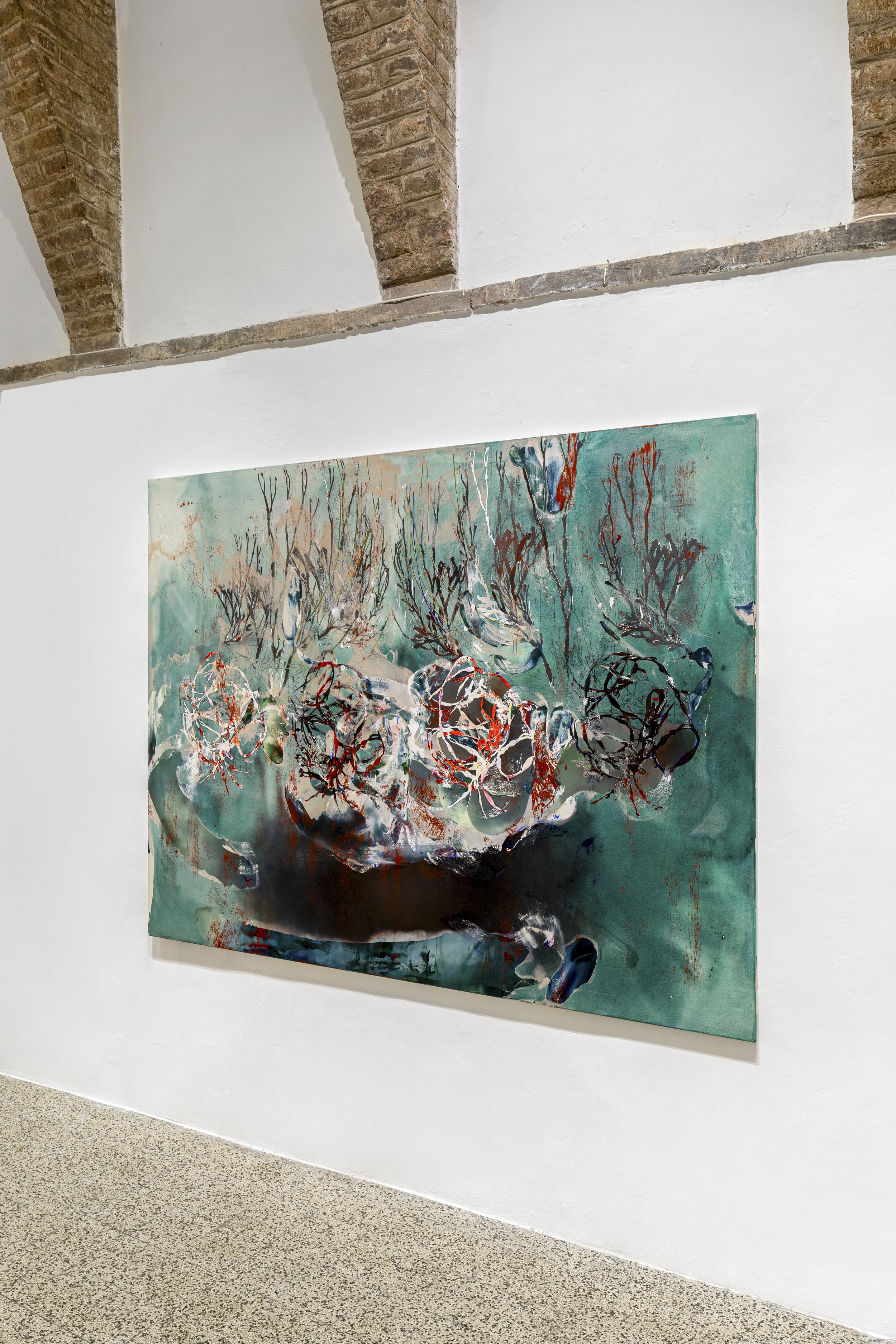
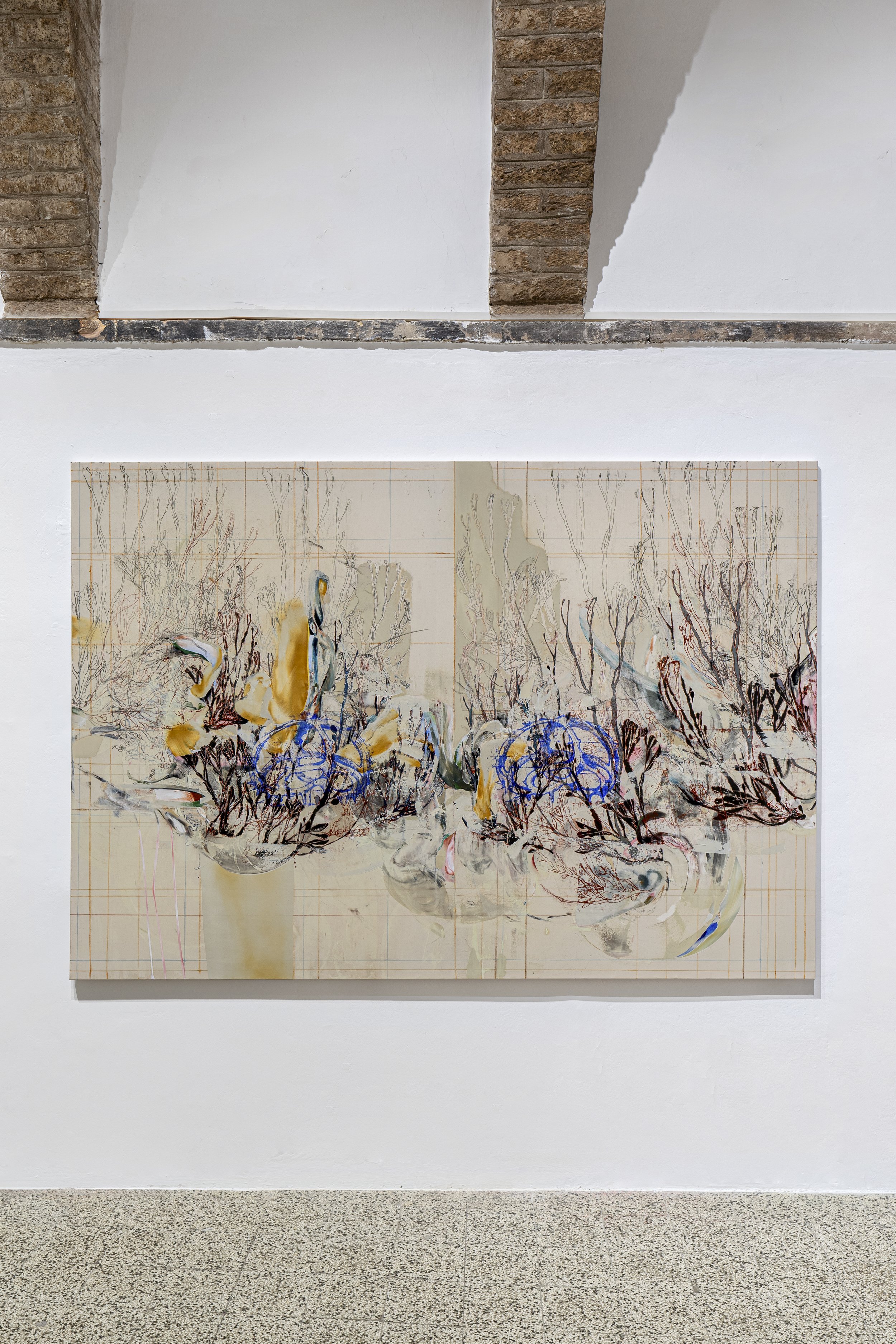
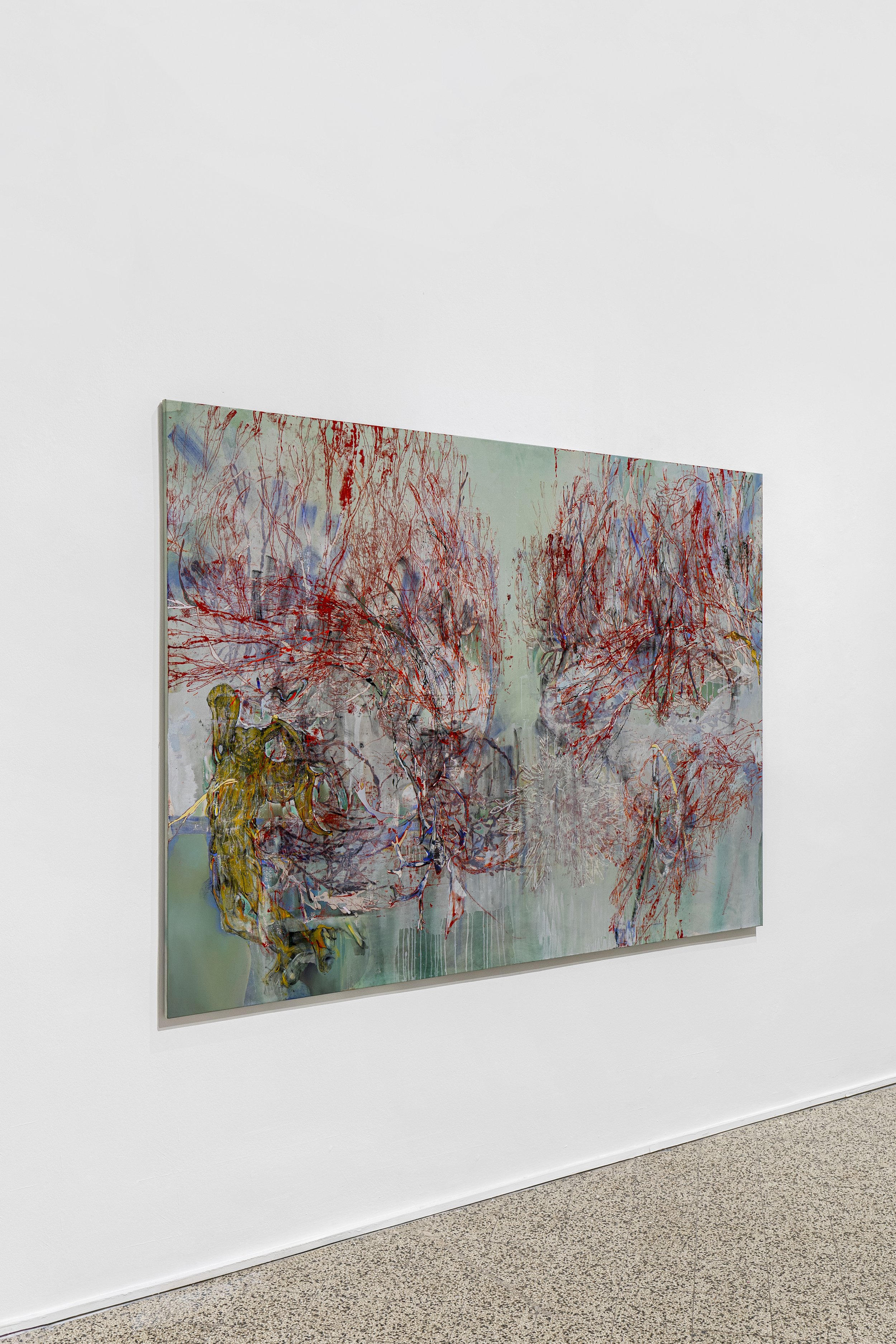
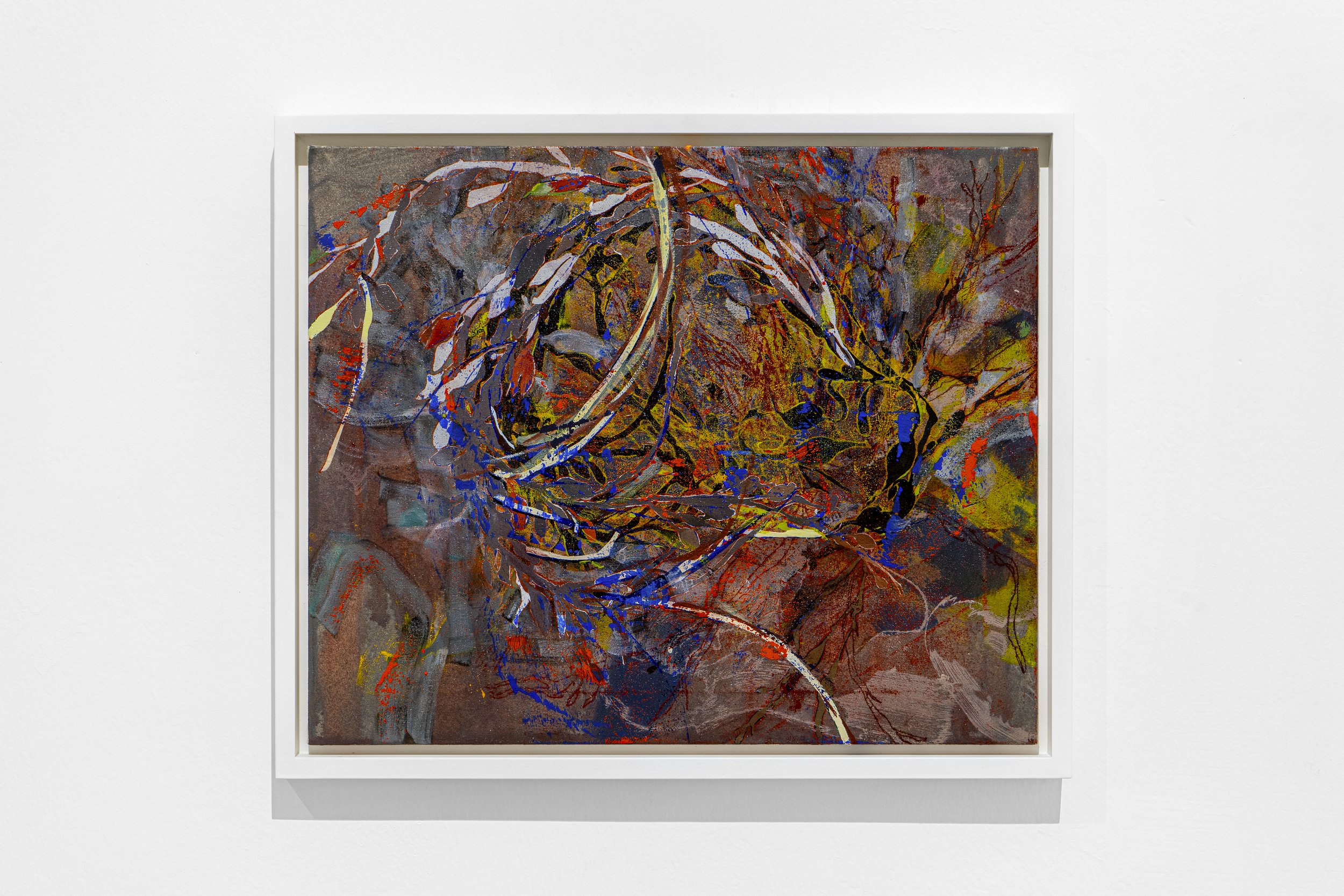
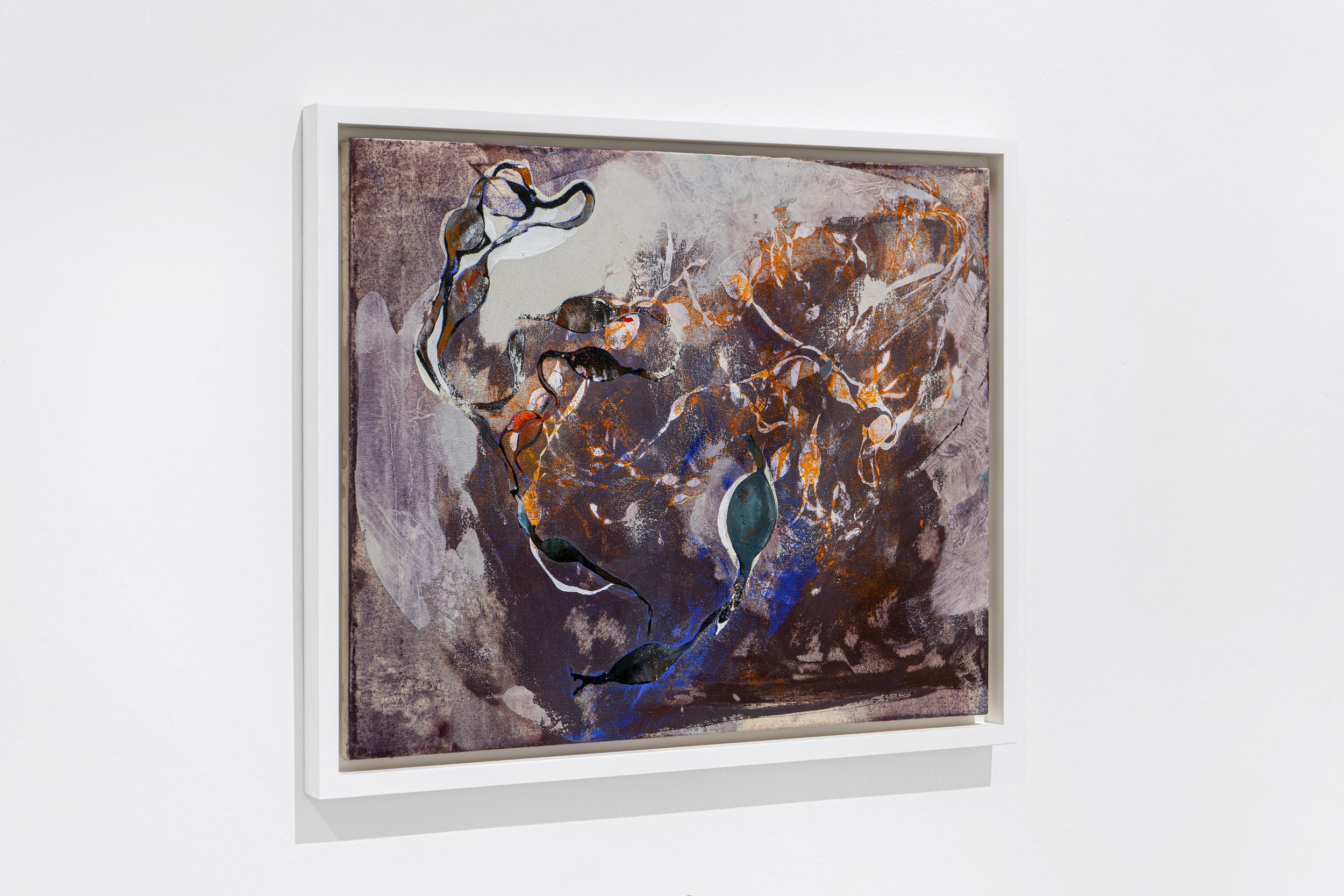
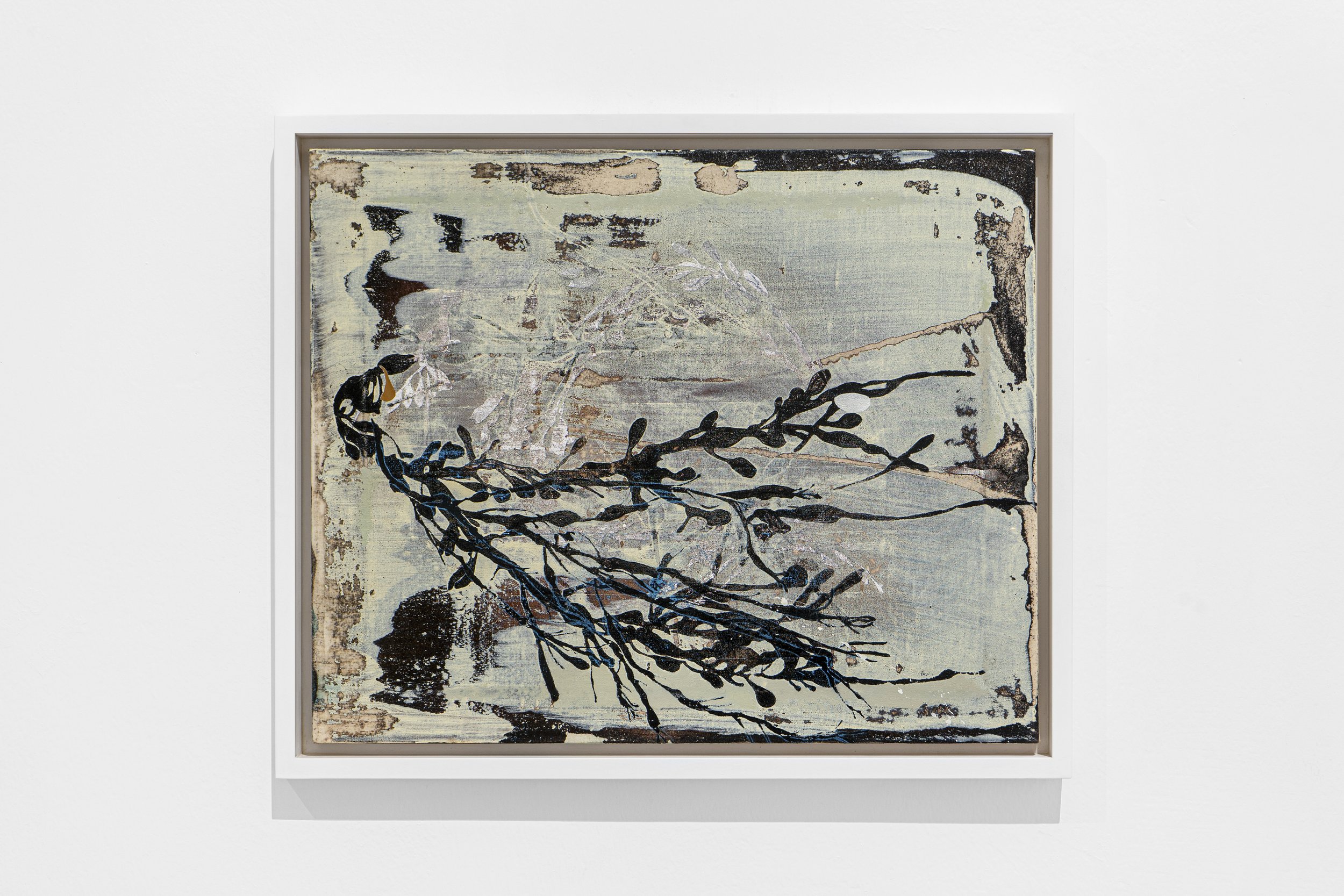
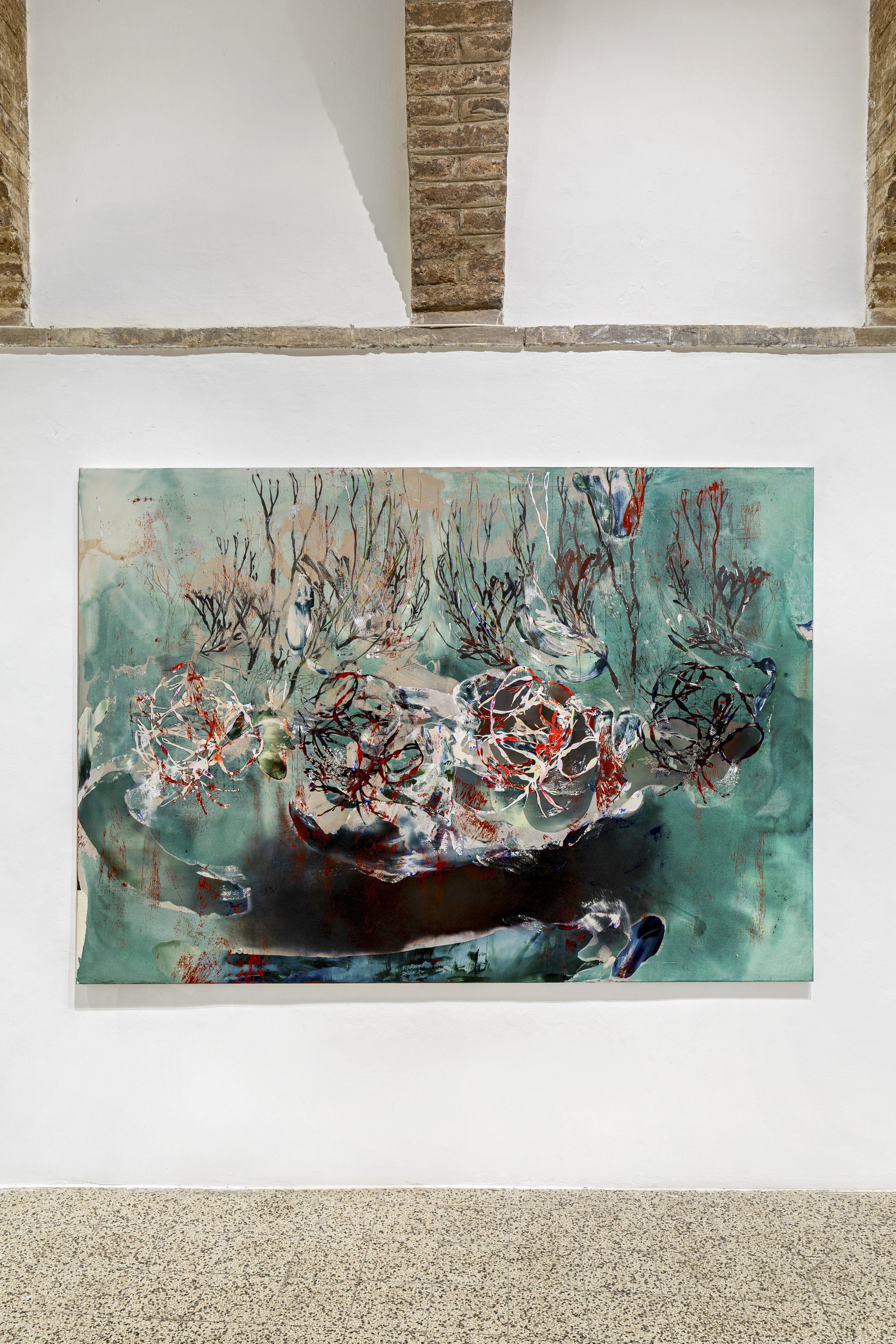
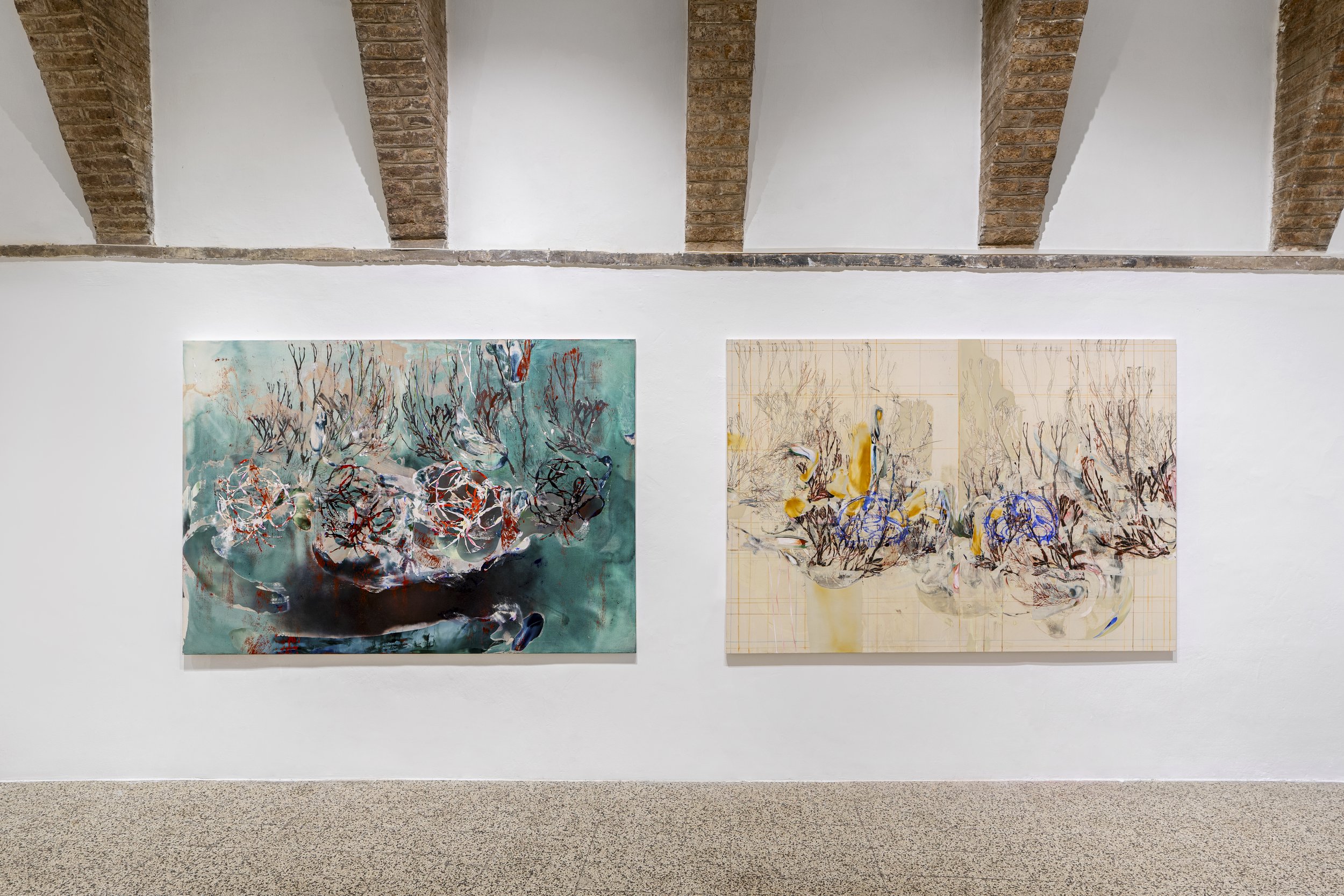
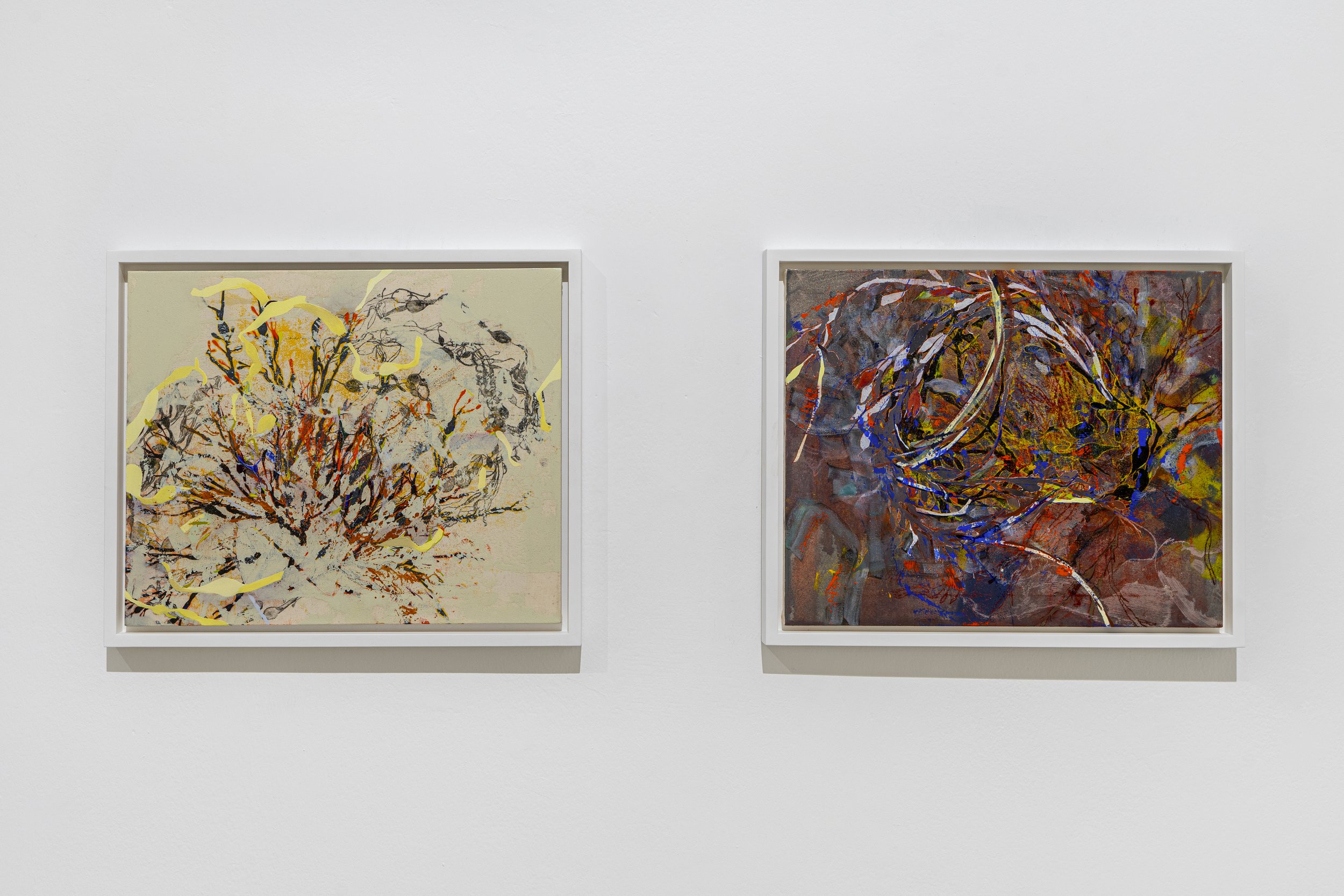
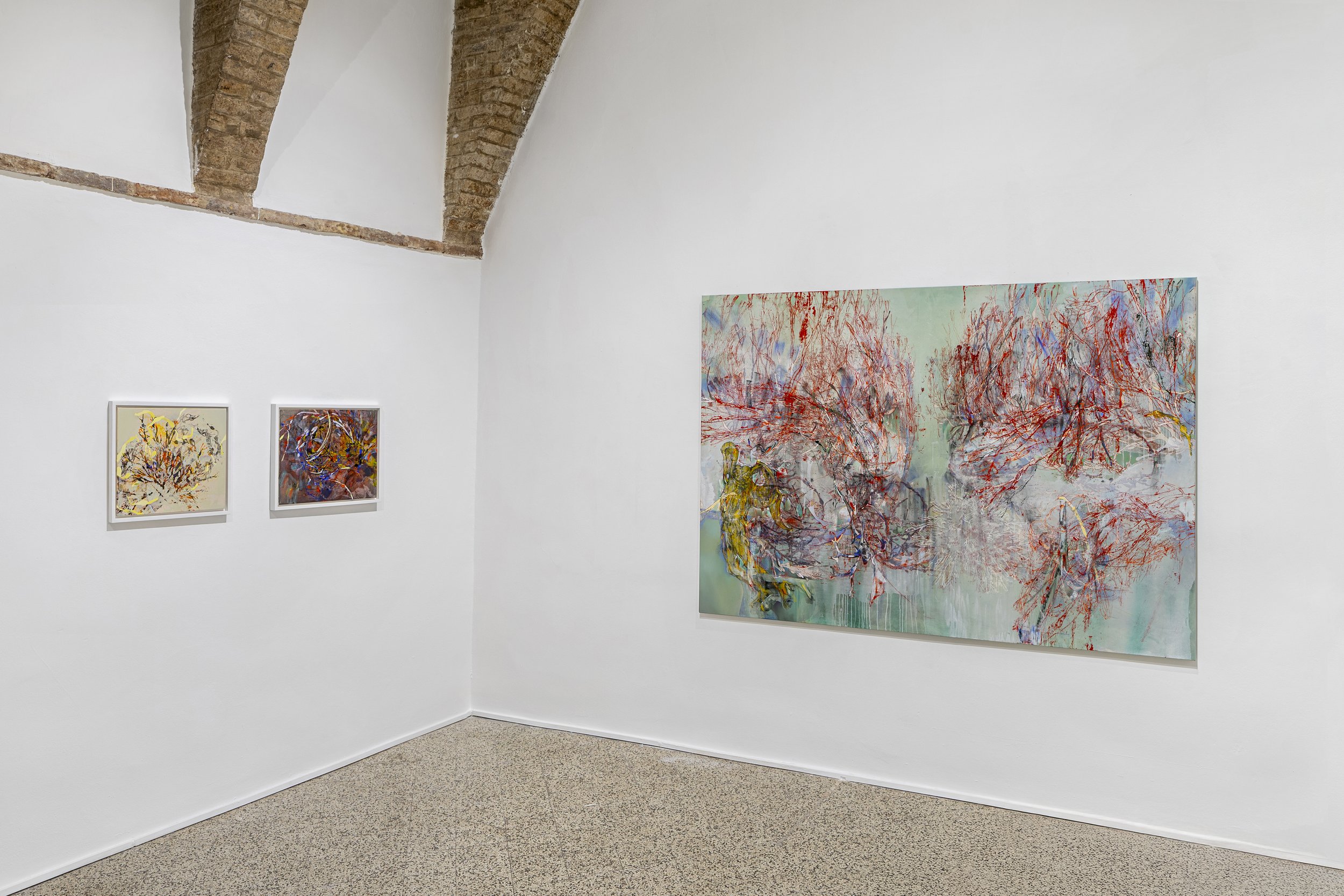
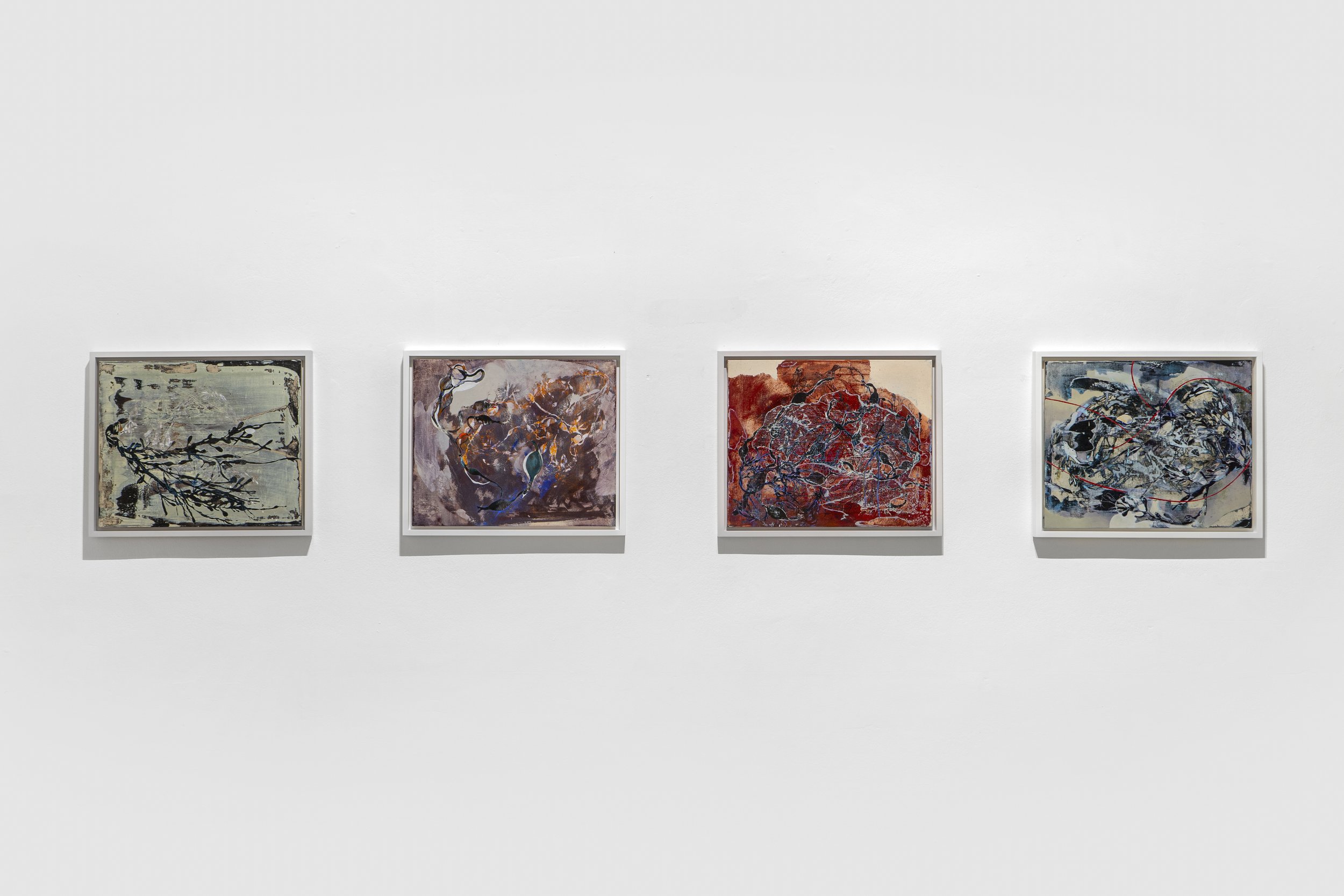
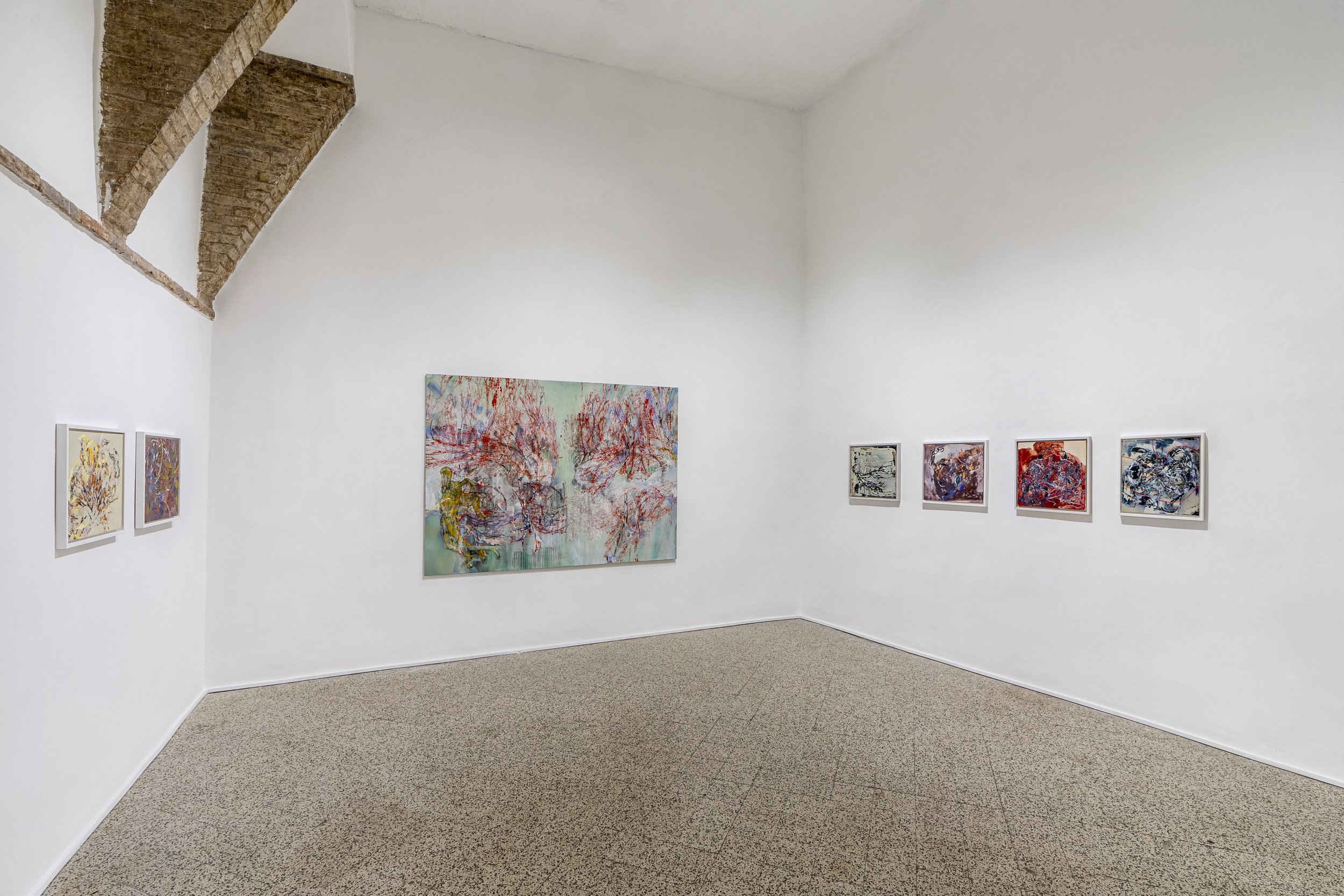
Installation view: Marta Spagnoli. “Fantasmata,” Galleria Continua San Gimignano 2025 Courtesy of the artist and Galleria Continua Courtesy: the artist and GALLERIA CONTINUA, Photographer: Ela Bialkowska, OKNO Studio
In the work Fantasmata II, a grid emerges as a system of lanes. It not only suggests a structural interpretation of the image but also defines a space where movement can be organized and managed, while simultaneously being interrupted or distorted.
Marta Spagnoli Fantasmata I 2024 acrylic and oil on canvas 160 x 230 cm 62.99 x 90.55 in Courtesy: the artist and GALLERIA CONTINUA Photographer: Ela Bialkowska, OKNO Studio
The works never fully submit to order or structure; there is always room for the accidental and the unexpected. Erratic elements such as a yellow devil, clawed creatures, or a milky veil of liquid paint poured onto the canvas act as agents of cohesion or disruption. These elements create an experience that oscillates between form and formlessness, figure and disfiguration. Their sudden and surprising appearances serve as witnesses to the choreography unfolding within the work, revealing the canvas itself as a field of forces, trajectories, movements, and complex relational entanglements.
For more information about this exhibition and others at the Galleria Continua, please visit their site here. The magazine also did an interview with the artist, which can be found here.
Samadmasa Motonaga and Etsuko Nakatsuji: Afterimage of Memory
Sadamasa Motonagaand Etsuko Nakatsuji: After image of Memory Installation view, 2024 BLUM Tokyo © Etsuko Nakatsuji and the Motonaga Archive Research Institution Ltd.; Courtesy of the artist, the Institution, and BLUM Los Angeles, Tokyo, New York Photo: SAIKI
Tokyo—BLUM is pleased to announce the representation of the estate of Sadamasa Motonaga and the artist Etsuko Nakatsuji coinciding with their two-person exhibition, Afterimage of Memory, at BLUM Tokyo opening Friday, February 14. Solo exhibitions for the artists will follow in Los Angeles and New York.
Etsuko Nakatsuji Afterimage—Shape of Human, 2013 Acrylic on canvas 51 3/8 x 38 3/8 x 1 1/8 inches (130.5 x 97.4 x 2.8 centimeters) © Etsuko Nakatsuji; Courtesy of the artist and Blum Los Angeles, Tokyo, New YorkPhoto: Kentaro Takahashi
Partnered from 1960 until Motonaga’s passing in 2011, husband and wife pair Motonaga and Nakatsuji have jointly and individually made strides in the advancement of the postwar Japanese avant-garde practices for the better part of a century. A long-revered original member of the 1950s Gutai group, Motonaga is best known for his unique ability to express life’s pathos through the playful tenor of his vibrantly colored paintings, his experimentation with found materials, and his work on illustrated children’s books. Though Nakatsuji studied art, for much of her adult life she supported her family as a graphic designer in the advertising department at Hanshin Department Store to allow space in their home for her husband’s practice. She did, however, consistently maintain an artistic practice of painting and making fabric objets called poco-pin. While both artists’ painting practices are primarily abstract, each engages human perception and the body in a profound manner. Motonaga’s later work, in its graphic orientation, possesses strong resonances with searching for an “ambivalent illusion of vision,” a theme that Nakatsuji also grappled with for decades.
Sadamasa Motonaga The Shapes Above are White, 1993 Acrylic on canvas 24 1/8 x 20 x 7/8 inches (61.2 x 50.8 x 2.3 centimeters)© Motonaga Archive Research Institution Ltd.; Courtesy of the Motonaga Institution and BLUM Los Angeles, Tokyo, New York Photo: SAIKI
In 1957, Nakatsuji attended classes at Nishinomiya Art School, studying under Suda Kokuta and Waichi Tsutaka. It was through school that Nakatsuji met Motonaga who was already a member of Gutai, and Nakatsuji became inspired by the ideas of the group’s leader, Jiro Yoshihara. “Do something no one has ever done before,” Yoshihara famously said about artmaking. In 1960, Motonaga and Nakatsuji moved in together. Their first son was born two years later.
Having created his well-known installation Work (Water) (1956), which was featured in the Outdoor Gutai Art Exhibition at Ashiya Park in 1956, Motonaga’s career was already taking off when he met Nakatsuji in 1957. In 1962, with the opening of the Gutai Pinacotheca, a gallery exhibiting work by Gutai artists, the Gutai movement gained an international presence with global artists and critics such as John Cage, Clement Greenberg, Isamu Noguchi, Yoko Ono, and many more. At a time when abstraction was thought to have taken painting to its logical conclusion, Gutai’s pioneering installations and performative experimentations onto the canvas were unprecedented, unafraid of violating sacred boundaries. Motonaga’s own multidisciplinary oeuvre benefited from this with features in Assemblages Environments and Happenings by Allan Kaprow in 1966 and museum exhibitions such as The New Japanese Painting and Sculpture at the Museum of Modern Art, New York also in 1966.
Etsuko Nakatsuji Untitled, 2024 Acrylic on canvas 64 x 51 3/8 x 1 3/8 inches (162.6 x 130.5 x 3.4 centimeters) © Etsuko Nakatsuji; Courtesy of the artist and Blum Los Angeles, Tokyo, New YorkPhoto: Kentaro Takahashi
While working as a designer full-time, Nakatsuji began sewing objects from leftover bedspread fabric. The result were objets in human-like shapes, and by hanging them from the ceiling of their apartment, she created the first poco-pin. Nakatsuji’s work was discovered by Takashi Yamamoto of Tokyo Gallery while he was visiting Motonaga. Nakatsuji had her first-ever exhibition at Tokyo Gallery in 1963, comprised of an installation of poco-pins. It was well received, grounding and defining the artist’s creative position for years to come. The figures from this exhibition evoke the immersive Surrealist installations of the 1920s that defy childish charm and, instead, possess an organic mysticism that lies between the threshold of life and afterlife. Nakatsuji notes, “I’m always thinking about objects that reflect someone who is filled with a strange and interesting quality. . . One’s form, color, line, and shape are tied to the changes in one’s brightness, humor, and peaceful image.”
In Nakatsuji’s later series, when she returned to painting, the artist echoes and expands upon the investigations behind her early poco-pins. Her 1983 group exhibition at Sogetsu, Toward Space, comprised an installation of suspended cloth with eyes paired with actual geta sandals, exuding psychological symbolism and corporeality. The work Running Works 3 x 6 #1 (1990) deals with exactly this—simple marks to indicate eyes, a single camouflaged rope along the painted red surface, and the geta sandals on the floor below the plywood, unified as effective signals of personification, together projecting the mind and body. Likewise, Nakatsuji’s [Aizu]—eyes— and hitogata (human form) series convey part objects and geometric silhouettes with bold, exuberantly winding lines that form a human image, and unmistakable cartoonish legs that appear to walk without a torso atop them. Nakatsuji’s signature eyes accompany these, at times possessing a halo-like glow.
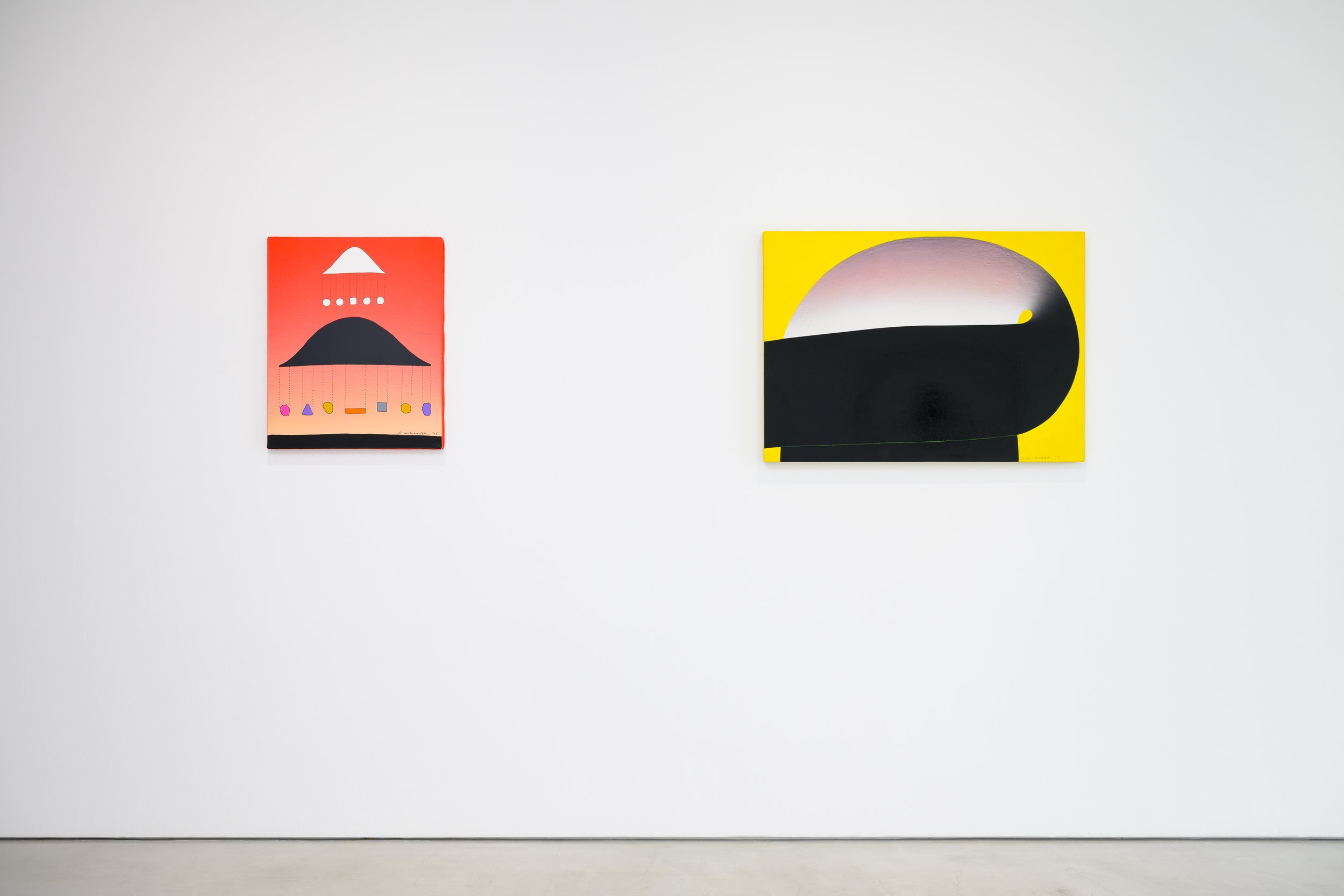
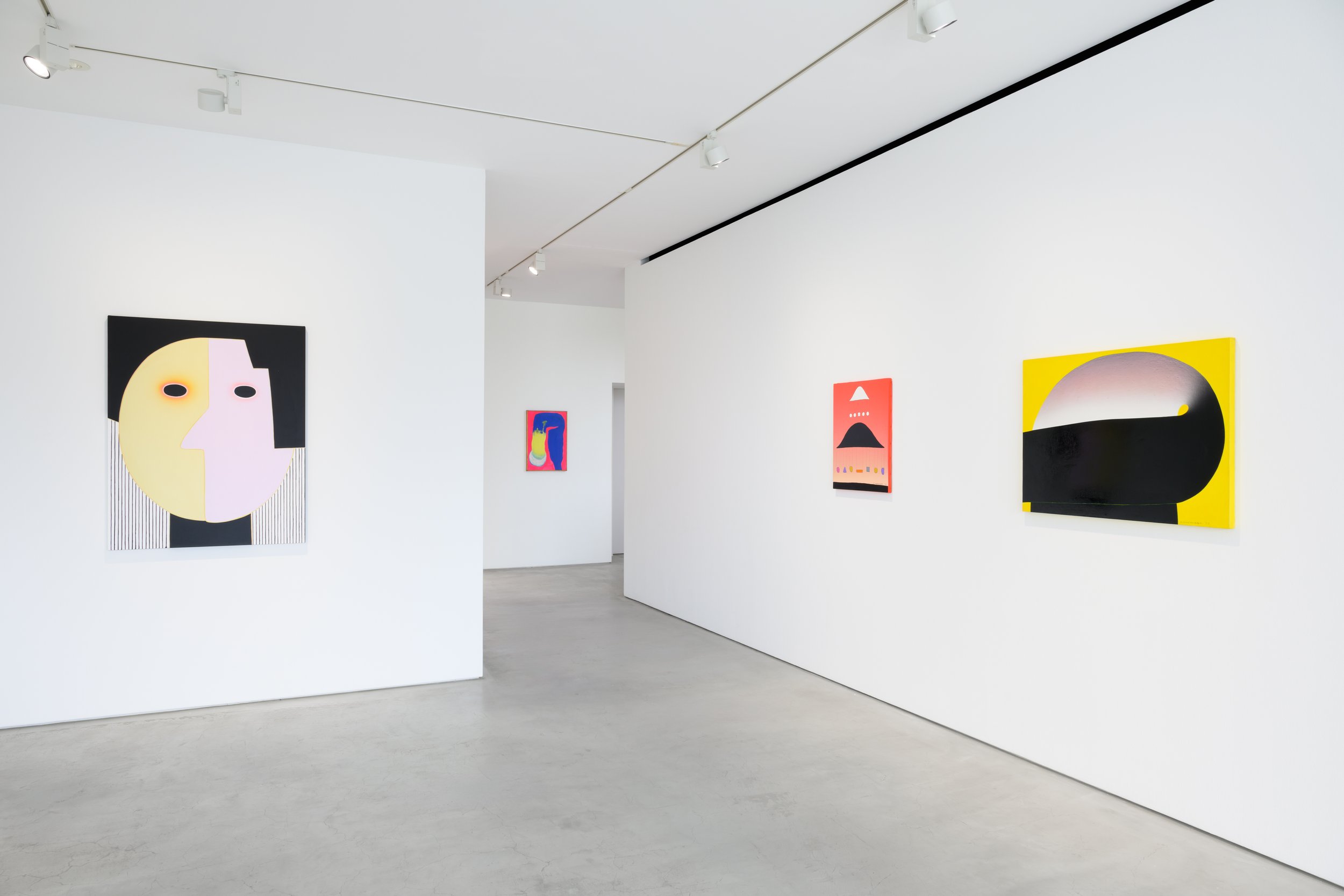
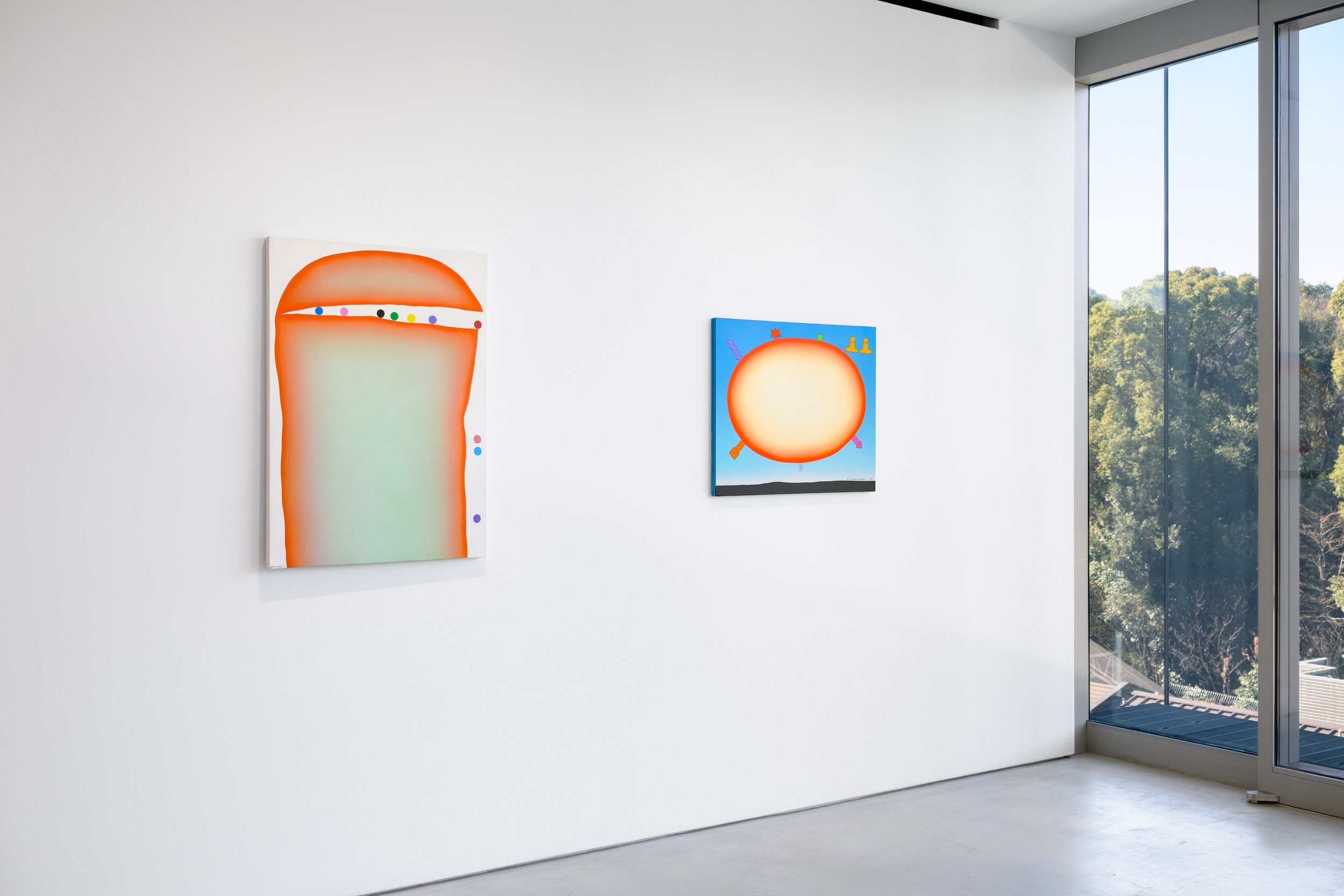
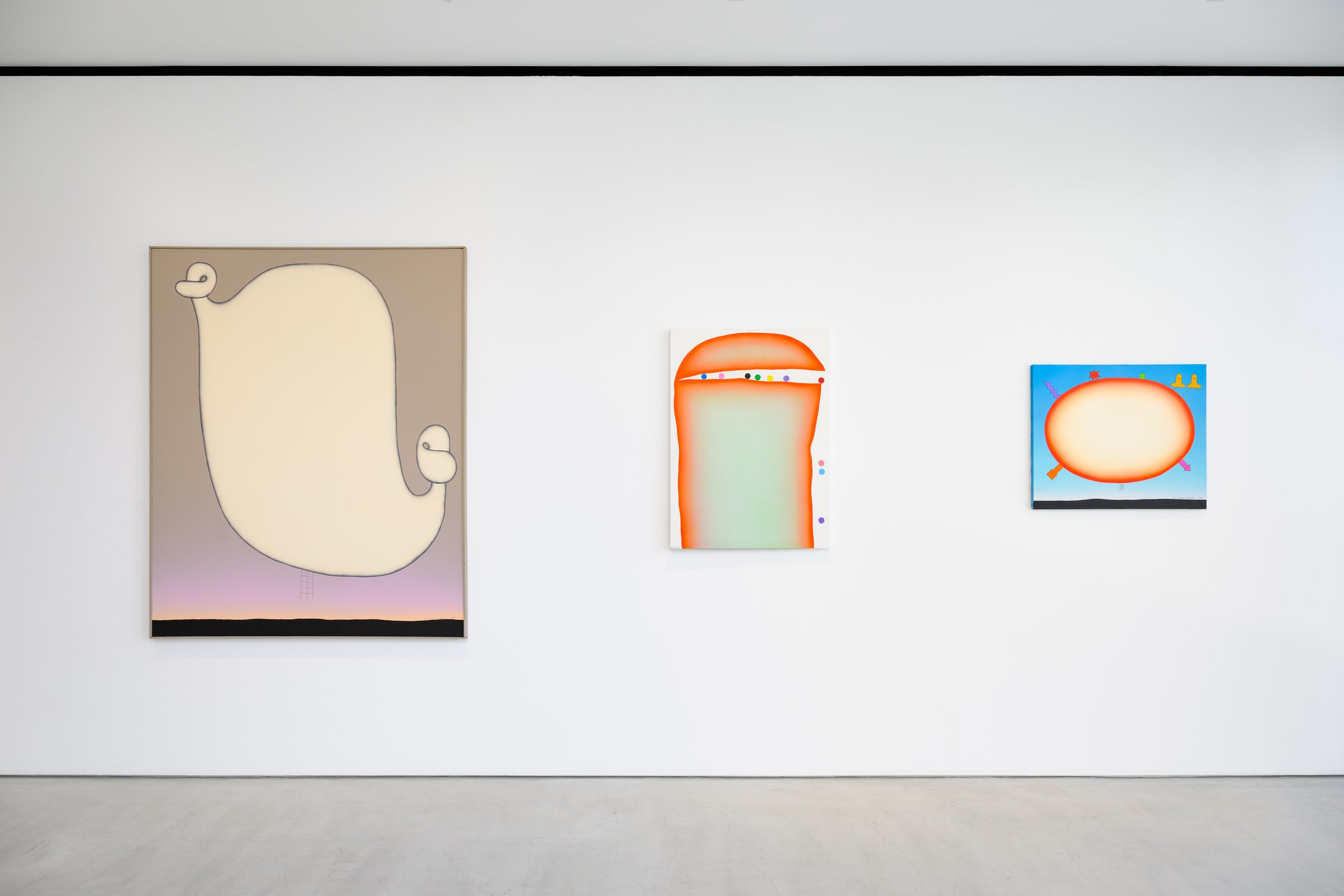
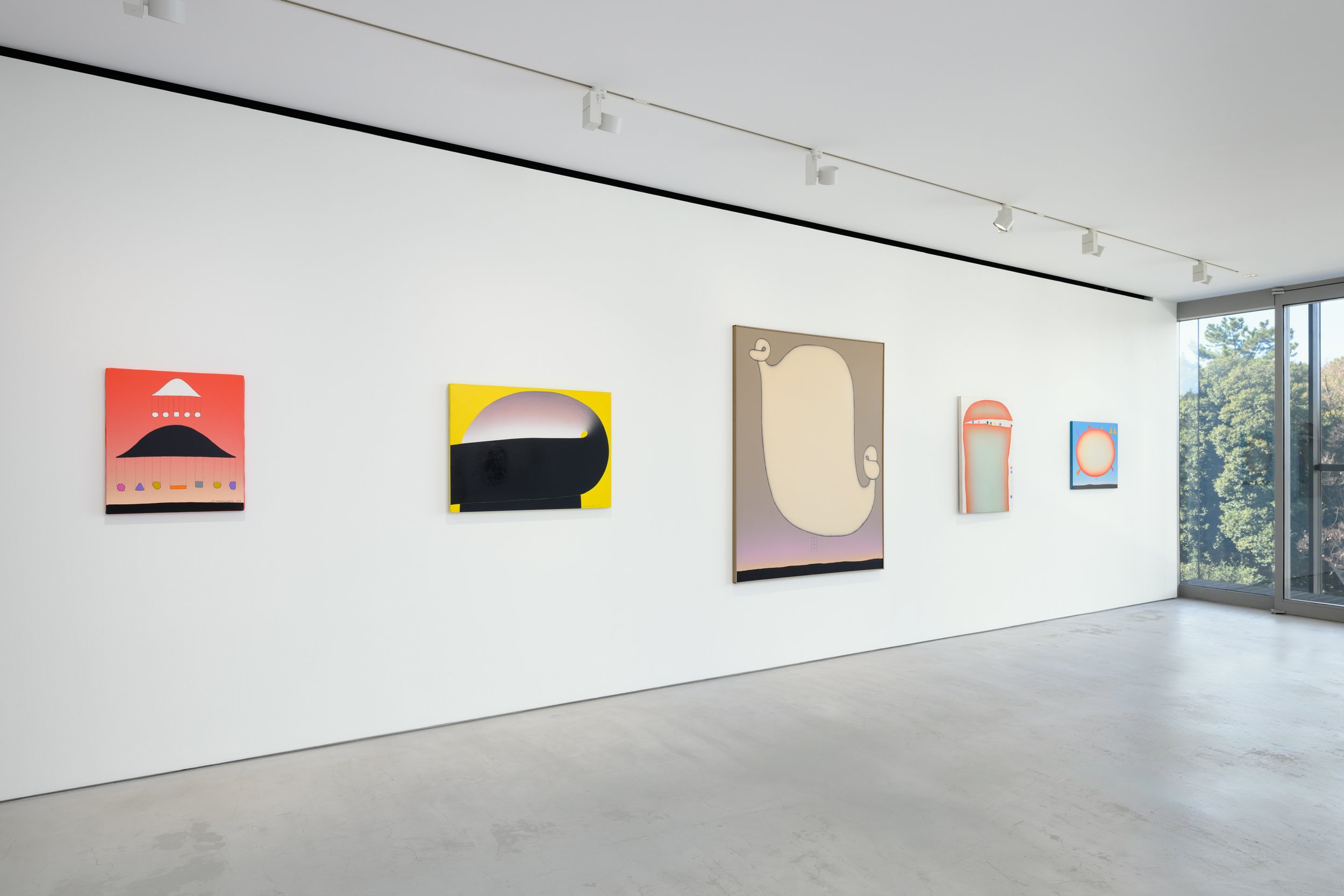
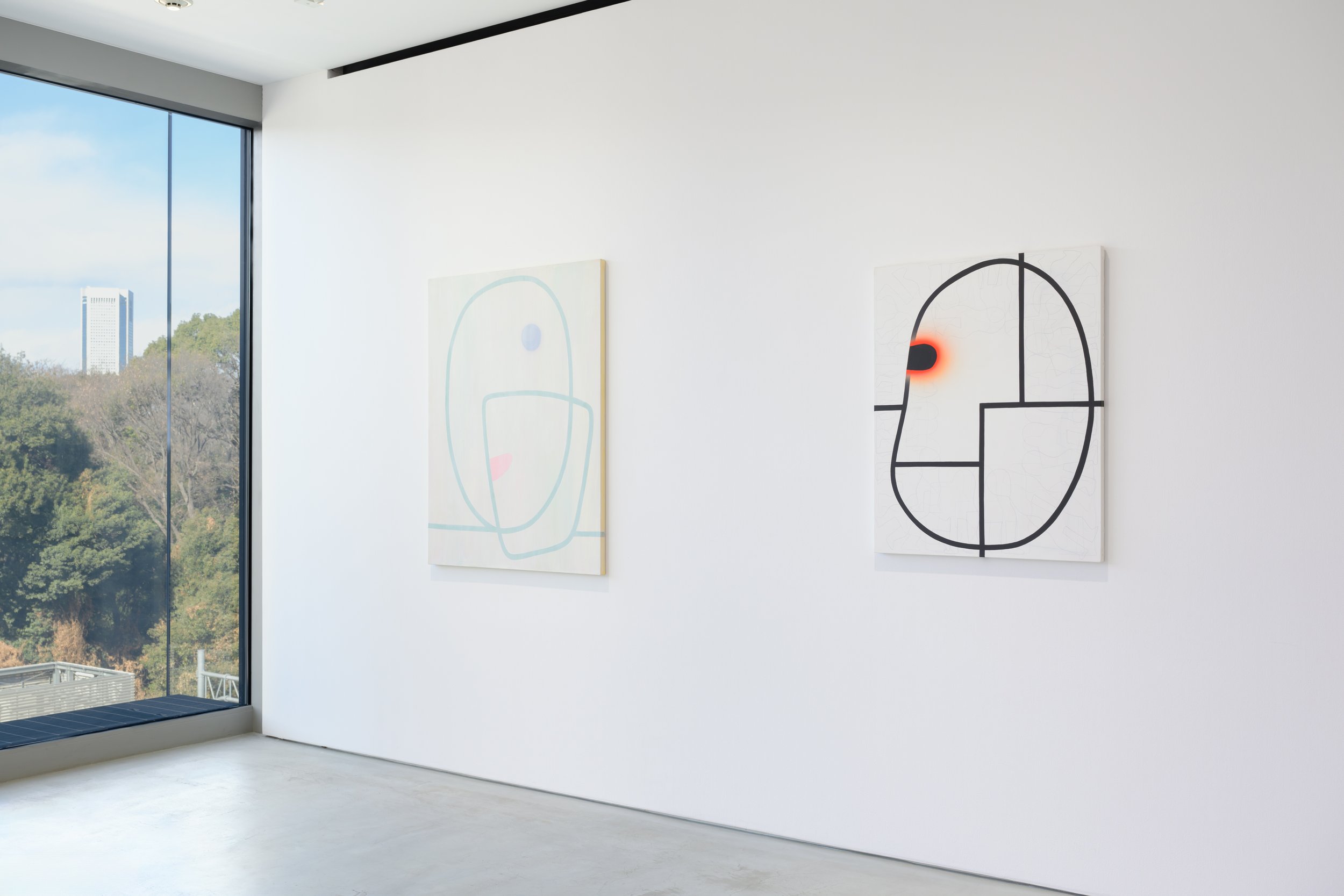
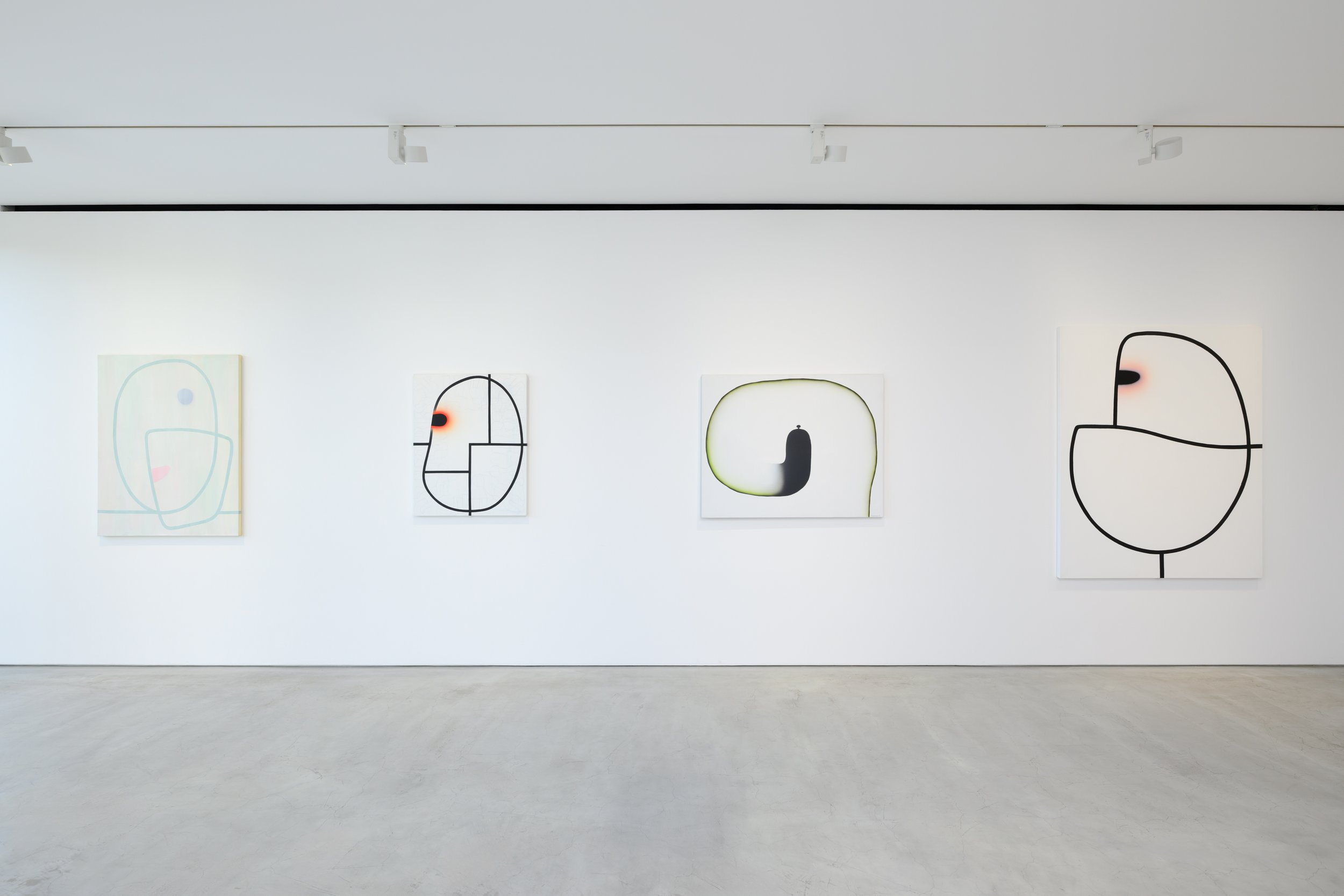
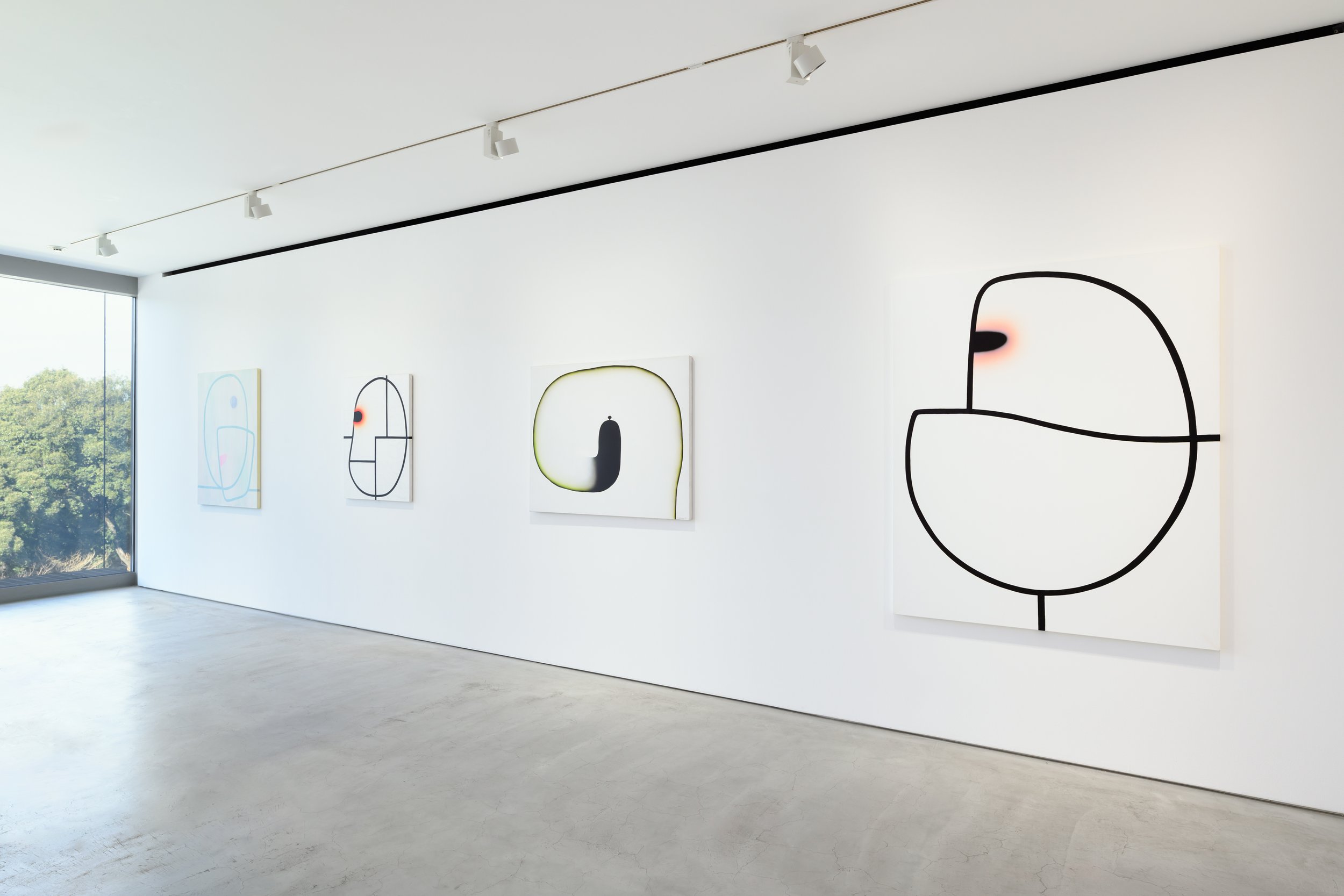
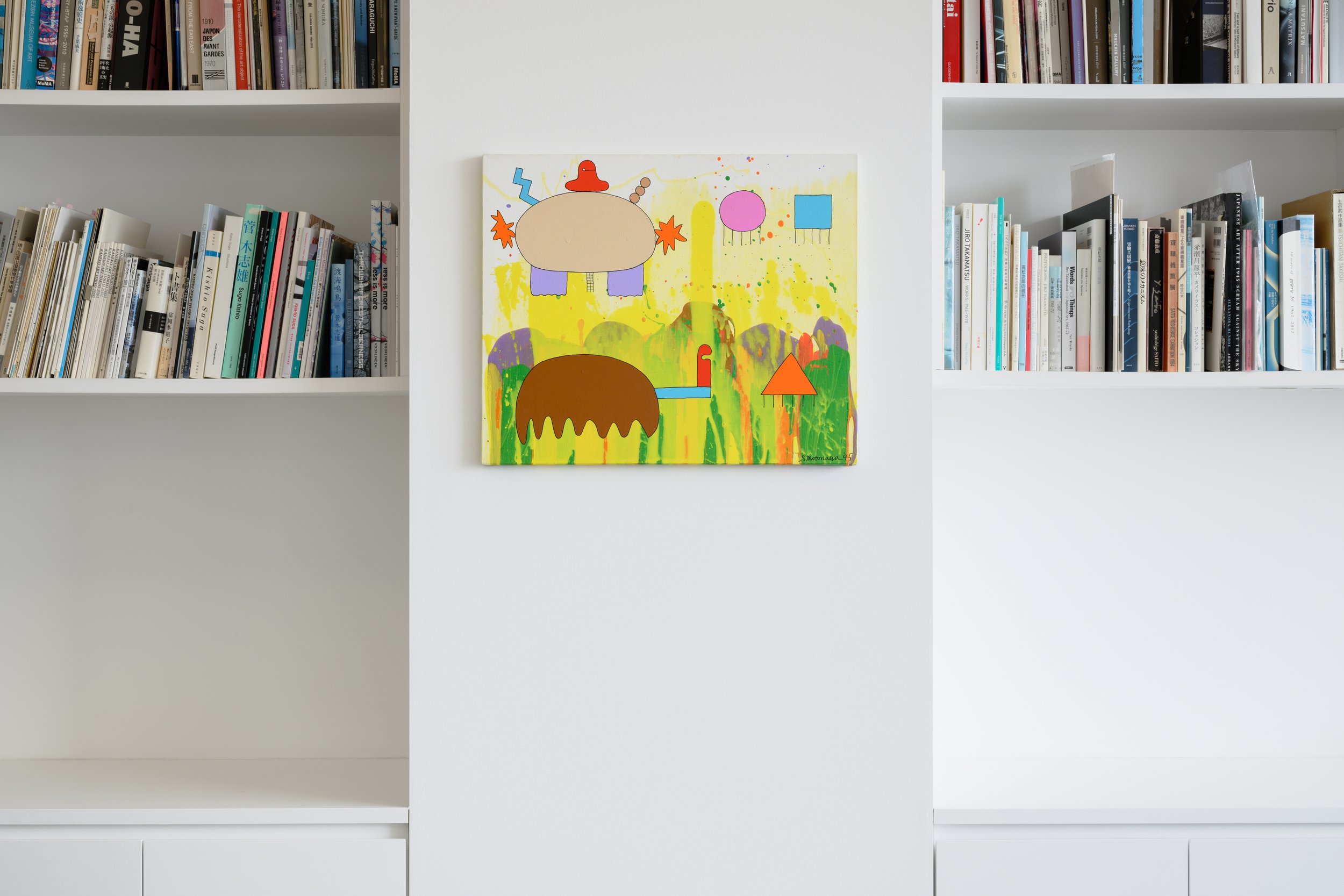
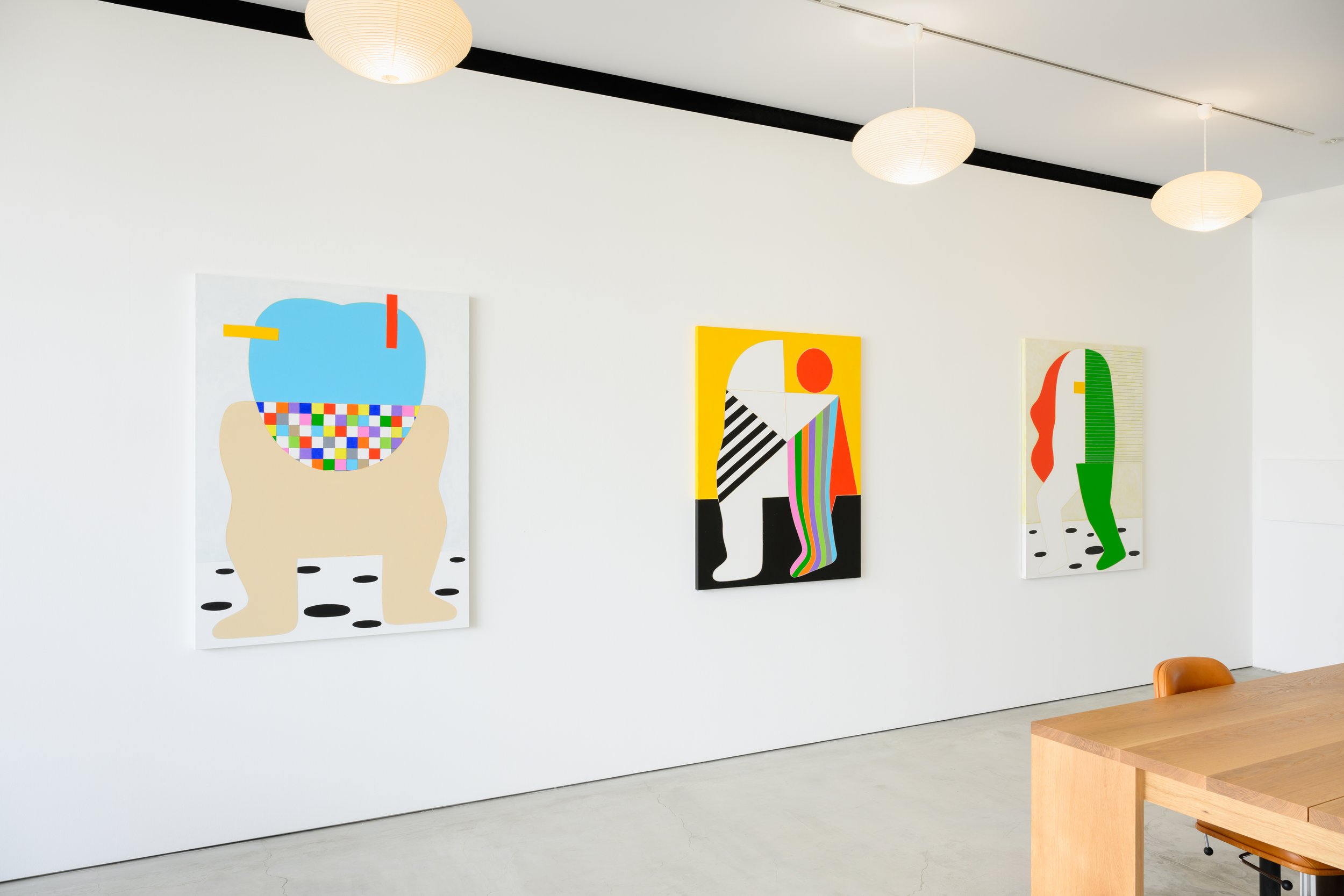
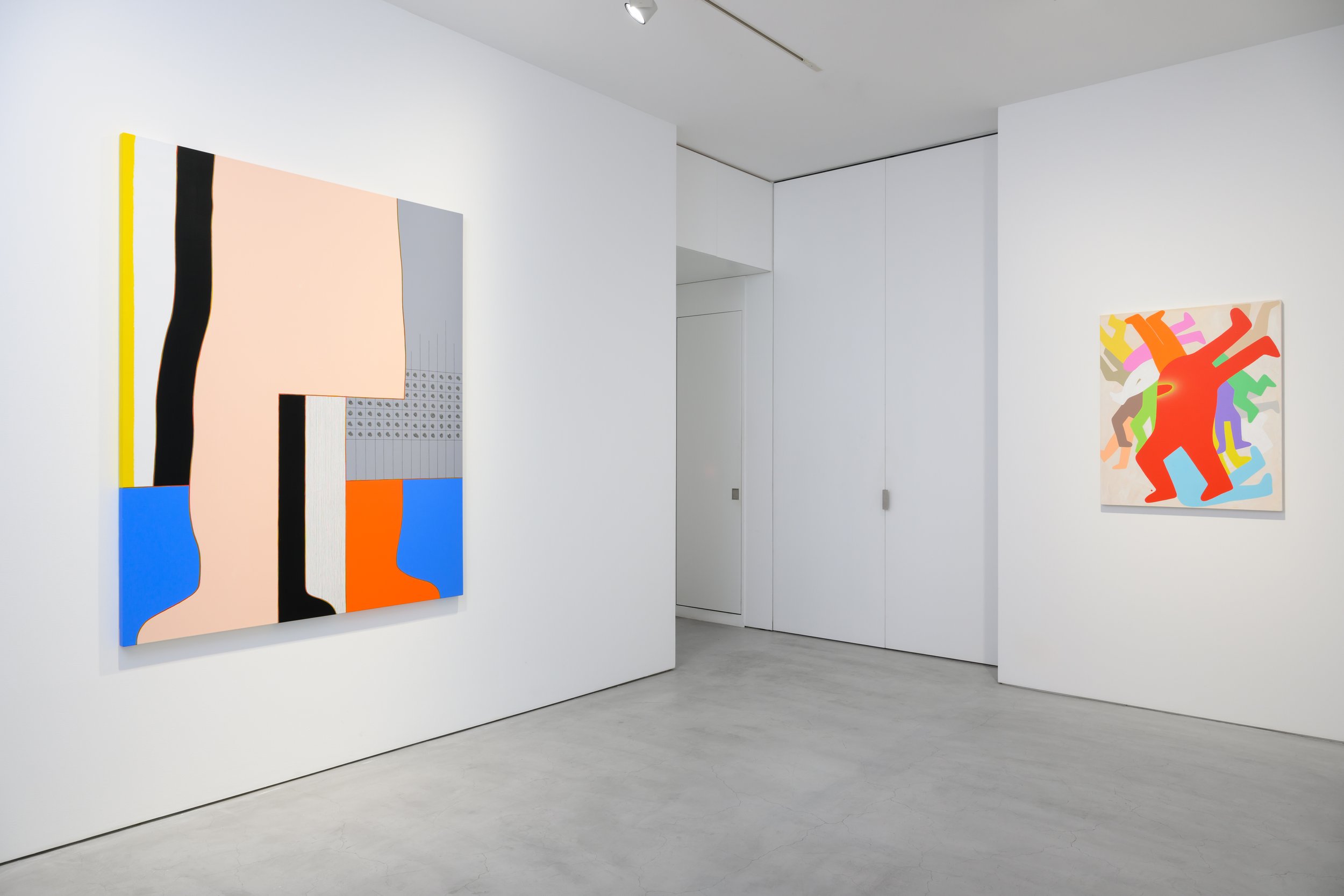
Sadamasa Motonagaand Etsuko Nakatsuji: After image of Memory Installation view, 2024 BLUM Tokyo © Etsuko Nakatsuji and the Motonaga Archive Research Institution Ltd.; Courtesy of the artist, the Institution, and BLUM Los Angeles, Tokyo, New York Photo: SAIKI
Comparing Motonaga’s early work with his later periods, the viewer will note a transition from abstraction alongside installation work, into using more fluorescent colors and gradients after his residency in New York from 1966-1967, to his late works which often feature large, hard-edge, color- gradated shapes and forms. Yellow Veil and Group of Shapes (1993), for instance, includes many personified shapes with distinctive portions for a body with limbs beneath it to hint at that which is alive.
While Gutai was a major presence through Motonaga’s involvement, it was Nakatsuji’s graphic design practice including her own illustrated books and collaborations with Motonaga as a producer of illustrated children’s books, that ultimately integrated their styles. With Motonaga’s evolution into the representational and Nakatsuji’s return to painting, the two produced undeniably resonant work around the turn of the century. As Nakatsuji said, “As I had been imprinted with the spirit of Gutai, it was impossible for me not to be aware of Sadamasa Motonaga. Although each of us worked in different formats, our sense of values did not differ significantly.”
Sadamasa Motonaga (b. 1922, Mie Prefecture, Japan; d. 2011, Takarazuka, Japan) was a key figure of the Gutai Art Association (1955–71), renowned for its radical contributions to performance, painting, and sculpture. Rejecting the somber tone of postwar existentialism, Motonaga embraced a playful, vibrant approach, producing works that fused tradition with innovation. Motonaga’s practice evolved from early experiments with cartoon-like forms to his groundbreaking Water Sculptures, which used vinyl bags filled with colored water to create dynamic installations. By 1957, he began exploring abstraction, using poured and dripped pigments in fluid, luminous compositions that defined a new relationship between artist and materials in global modernism. In the late 1960s and 1970s, particularly after a residency in New York from 1966 to 1967, his style incorporated airbrush techniques, graffiti- like forms, and spray paint, blending postwar avant-garde aesthetics with contemporary sensibilities. In addition to his visual art, Motonaga authored beloved children’s books, cementing his legacy as an artist whose creativity transcended disciplines and generations.
Motonaga’s work has been the subject of numerous retrospectives, including at the Dallas Museum of Art, Dallas, TX (2015); Mie Prefectural Museum of Art, Tsu, Japan (1990 and 2009); Nagano Prefectural Shinano Art Museum, Nagano, Japan (2005); Hiroshima City Museum of Contemporary Art, Hiroshima, Japan (2003); and the Hyogo Prefectural Museum of Art, Kobe, Japan (1998). His work is represented in public collections worldwide, including the Dallas Museum of Art, Dallas, TX; Guggenheim Abu Dhabi, United Arab Emirates; The National Museum of Modern Art, Tokyo; The National Museum of Art, Osaka; Hiroshima City Museum of Contemporary Art, Hiroshima, Japan; Hyogo Prefectural Museum of Art, Kobe, Japan; Mie Prefectural Museum of Art, Tsu, Japan; Museu de Arte do Rio, Rio de Janeiro, Brazil; Museum of Contemporary Art, Tokyo, Japan; Museum of Modern Art, New York, NY; Pinault Collection, Paris, France; The Art Institute, Chicago; Yale University Art Gallery, New Haven, CT; among many others.
Etsuko Nakatsuji (b. 1937, Takaishi, Osaka) began her career working in graphic design while simultaneously pursuing her passion for art. In the early 1960s, she gained recognition for her unique human-shaped forms, which became a recurring motif in her work. Her creations, often playful yet peculiar, have appeared in various mediums, including paintings, sculptures, and illustrations. These works invite viewers to reflect on the essence of humanity and the body as a functional vessel. At the same time, they evoke the limitless nature of human consciousness, suggesting a boundless capacity that transcends physical form.
Nakatsuji’s work has been the subject of numerous retrospectives, including at BB Plaza Museum, Hyogo, Japan (2022); Takarazuka Arts Center, Hyogo, Japan (2021); Hyogo Guest House Prefectural Government Museum, Hyogo, Japan (2017); Otani Memorial Art Museum, Nishinomiya, Japan (2000); and Itami City Museum of Art, Hyogo, Japan (2002). Her work is represented in the permanent collections of the Hyogo Prefectural Museum of Art, Kobe, Japan; Hyogo Guest House Prefectural Government Museum, Hyogo, Japan; Osaka Contemporary Art Center, Osaka, Japan; Otani Memorial Art Museum, Nishinomiya City, Japan; Toyama Prefectural Museum of Art and Design, Toyama, Japan; among others.
About BLUM
BLUM represents more than sixty artists and estates from seventeen countries worldwide, nurturing a diverse roster of artists at all stages of their practices with a range of global perspectives. Originally opened as Blum & Poe in Santa Monica in 1994, the gallery has been a pioneer in its early commitment to Los Angeles as an international arts capital.
The gallery has been acclaimed for its groundbreaking work in championing international artists of postwar and contemporary movements, such as CoBrA, Dansaekhwa, Mono-ha, and Superflat, and for organizing museum-caliber solo presentations and historical survey exhibitions across its spaces in Los Angeles, Tokyo, and New York. Often partnering with celebrated curators and scholars such as Cecilia Alemani, Alison M. Gingeras, Sofia Gotti, Joan Kee, and Mika Yoshitake, the gallery has produced large- scale exhibitions focusing on the Japanese Mono-ha school (2012); the Korean Dansaekhwa monochrome painters (2014); the European postwar movement CoBrA (2015); Japanese art of the 1980s and 1990s (2019); a rereading of Brazilian Modernism (2019); a revisionist take on the 1959 MoMA exhibition, New Images of Man (2020); and a survey of portraiture through a democratic and humanist lens (2023); among others.
BLUM’s wide-reaching program includes exhibitions, lectures, performance series, screenings, video series, and an annual art book fair at its base in Los Angeles. BLUM Books, the gallery’s publishing division, democratically circulates its program through original scholarship and accessible media ranging from academic monographs, audio series, magazines, to artists’ books.
Across the three global locations, BLUM prioritizes environmental and community stewardship in all operations. In 2015, it was certified as an Arts:Earth Partnership (AEP) green art gallery in Los Angeles and consequently became one of the first green certified galleries in the United States. The gallery is also a member of the Gallery Climate Coalition, which works to facilitate a more sustainable commercial art world and reduce the industry’s collective carbon footprint. BLUM is committed to fostering inclusive and equitable communities both in its physical and online spaces and believes that everybody should have equal access to creating and engaging with contemporary art.
The exhibition is located at BLUM Tokyo, which opened on February 14, until April 4, 2025 there was an opening reception on Friday, February 14th, from 5 to 7 pm.
For more information about this exhibition and others, please visit Blum’s website here. The gallery can also be found on Instagram.
Hadi Falapishi: Edge of the World
Hadi Falapshi: Edge of the World Installation views, 2024 BLUM Los Angeles ©Hadi Falapshi Studio; Courtesy of the artist and BLUM Los Angeles, Tokyo, New York Photo: Evan Walsh
Los Angeles, CA—BLUM is pleased to present New York-based artist Hadi Falapishi’s first solo exhibition with the gallery, Edge of the World.
Exhibiting Falapishi’s new body of shrewdly deskilled panels alongside photorealistic paintings and bold ceramic sculptures, Edge of the World demonstrates the remarkable range inherent to the artist’s practice as he examines the widely varying possibilities for visual representation. Falapishi’s works cannibalize a vast quantity of reference material—from the Surrealists to Spaghetti Western films—to create a carefully selected composite of signs and signifiers. Deconstructing the vulnerabilities within both the act of viewing and of being viewed, Edge of the World is insightfully humorous, art historically allusive, and stylistically multifaceted.
Hadi Falapishi Professional Painter in a False Mirror, 2024 Oil on canvas in walnut artist's frame 25 1/2 x 31 3/4 x 2 inches 64.8 x 80.6 x 5.1 centimeters
Growing up in Tehran as the son of two photographers and later studying photography at Bard College, Falapishi’s now interdisciplinary practice has a unique and expansive approach to the mechanism as medium. For Falapishi, the mechanism that he now activates to make work is the art and cultural historical canon. Deploying imagery from this pool of reference material, the artist situates his and other bodies therein. In his photorealistic paintings in Edge of the World, such as Professional Painter in a Tree on the Sixteenth of September (2024) or Professional Painter in a False Mirror (2024), for instance, Falapishi inserts his likeness into famous compositions by René Magritte while facetiously giving himself the title of “Professional Painter” as both a rebuke and an assessment of the painting style.
Hadi Falapishi Edge of the World #1, 2024 Glazed ceramic 20 3/4 x 15 x 15 inches 52.7 x 38.1 x 38.1 centimeters
Stemming from the photorealistic paintings, Falapishi’s ceramic sculptures and panels with cardboard allow the artist to playfully explore the psychological state that drives his practice. Rendered in a loose style—with flat colors, crude shapes, and blocky horizon lines—these works borrow from the ethos of the CoBrA art movement in their hue and sentiments prioritizing spontaneity and experimentation. Simultaneously, in a gesture reminiscent of Mike Kelley, Falapishi grants new intellectual and emotional depth to that which might otherwise appear childlike, embedding art historical references in his faux- naïf scenes for those that know to look. Still Life with Cat and Mouse (2024), for example, adds a cartoonish cat and mouse to a still life with a bottle that clearly alludes to the oeuvre of Giorgio Morandi.
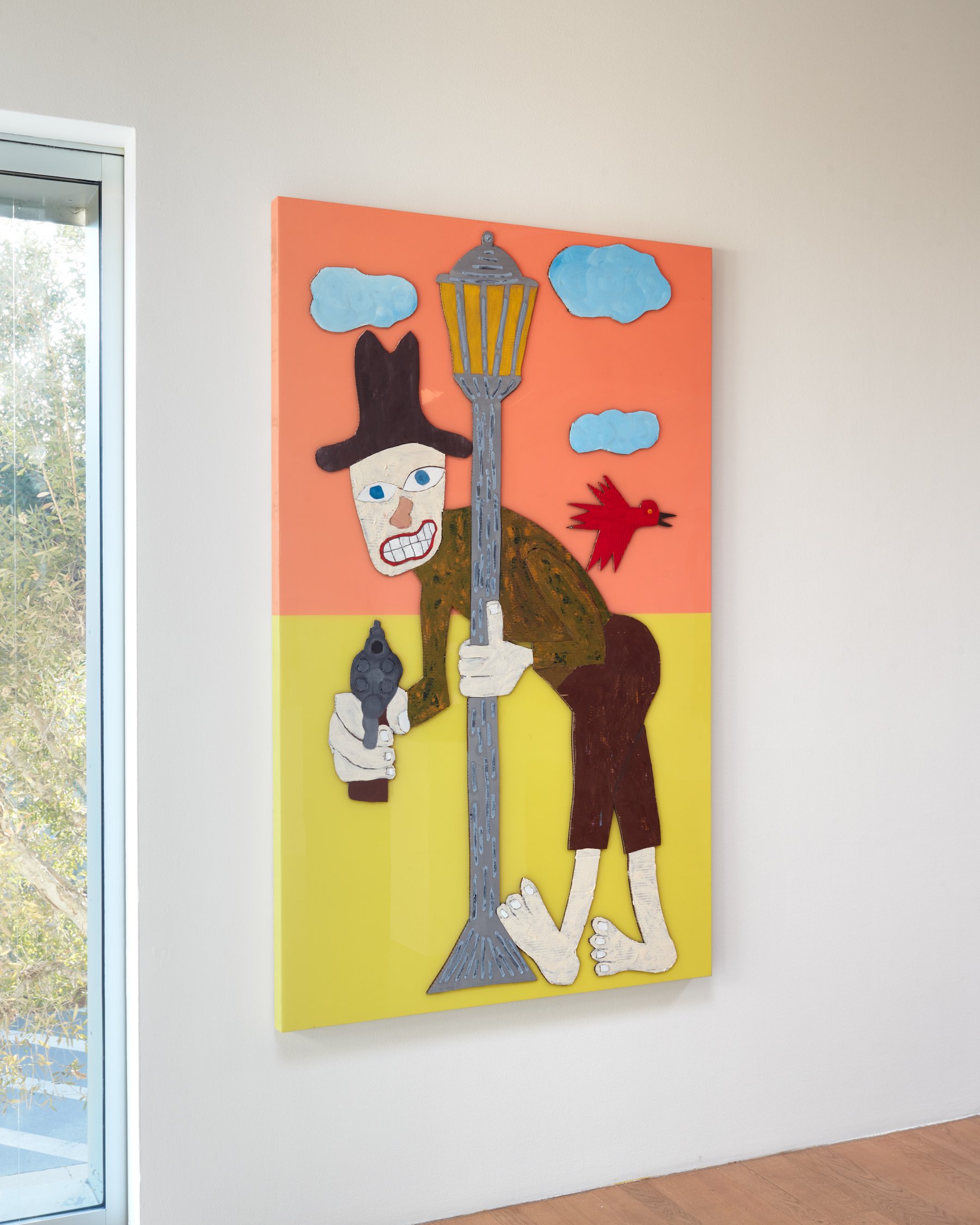
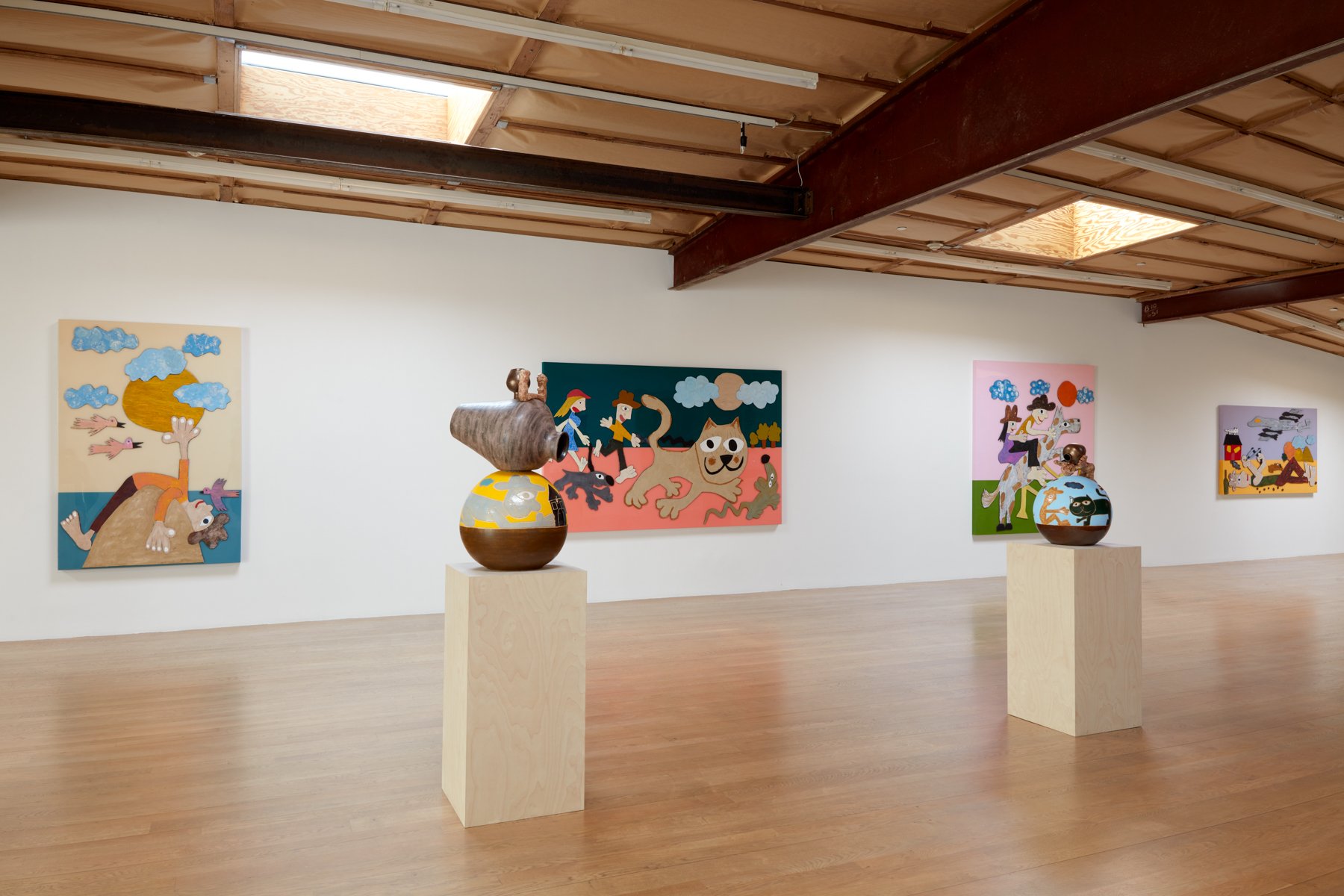
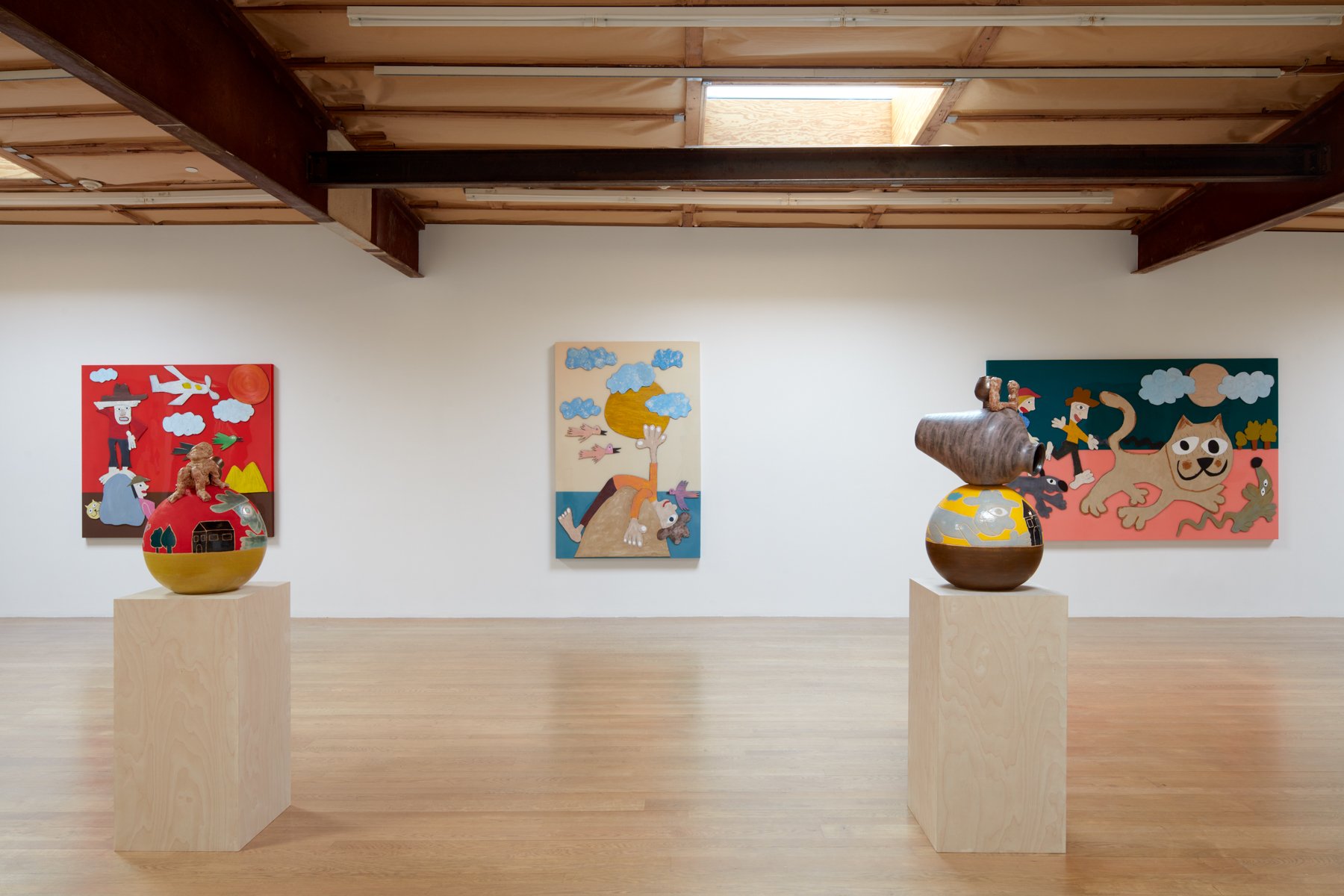
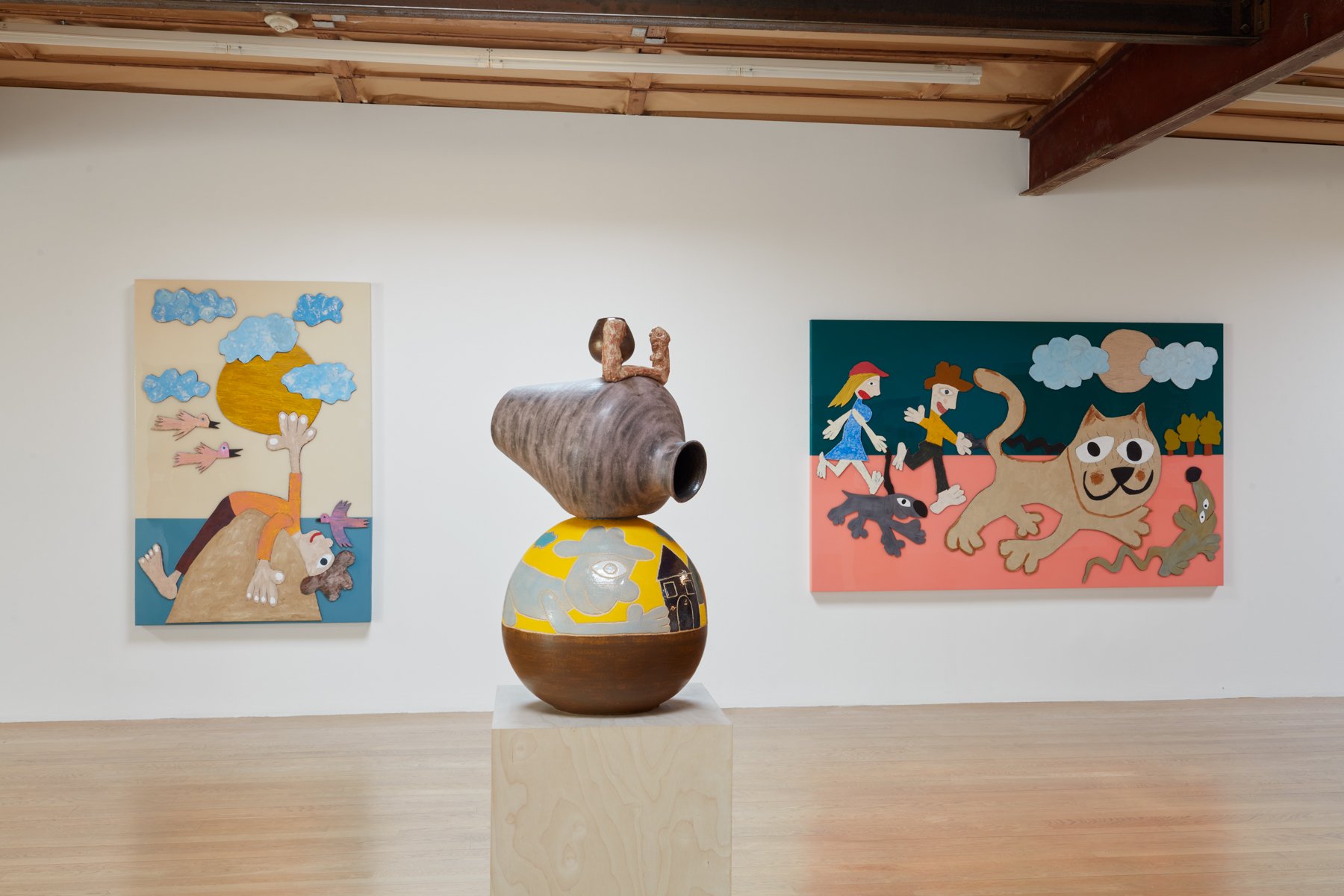
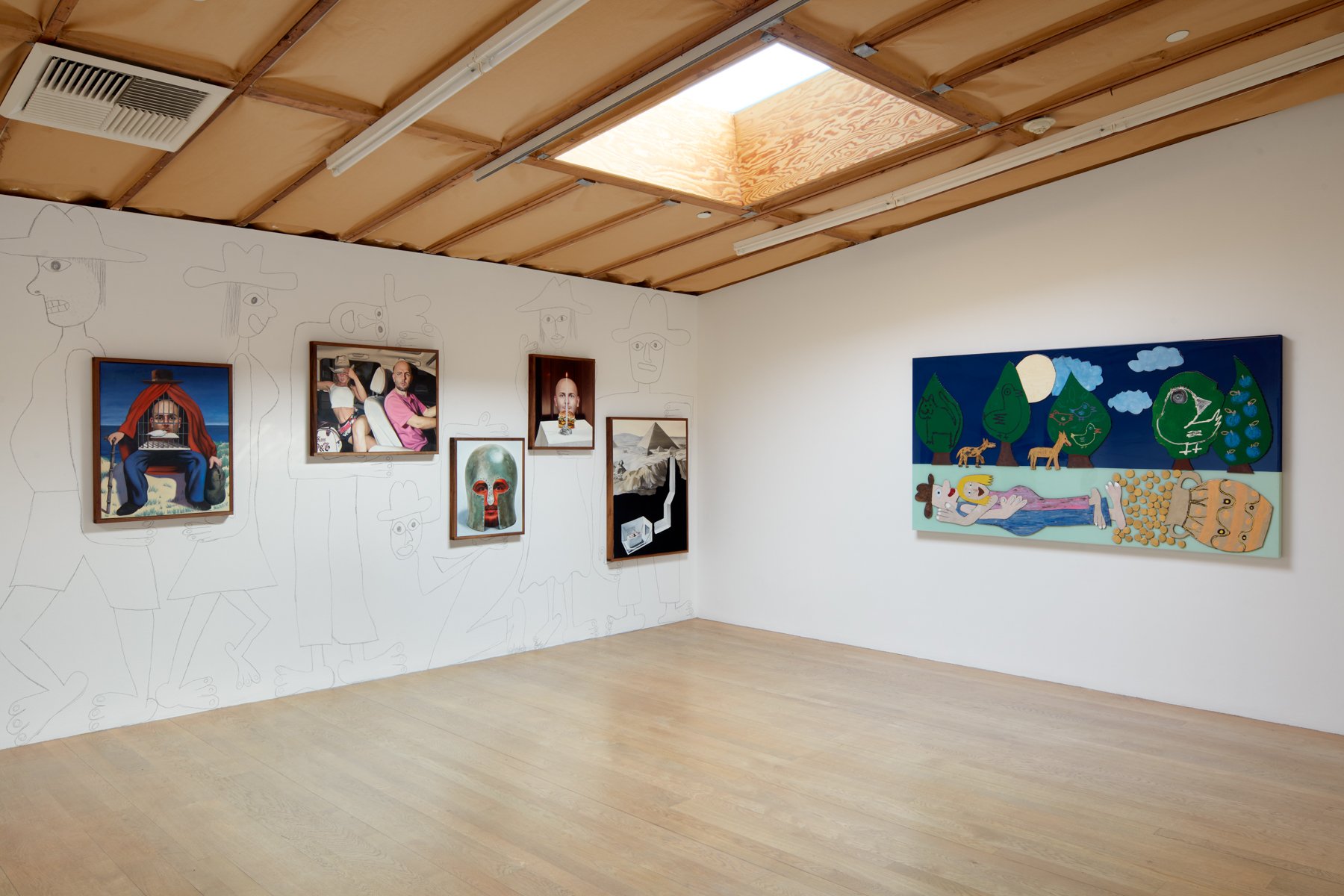
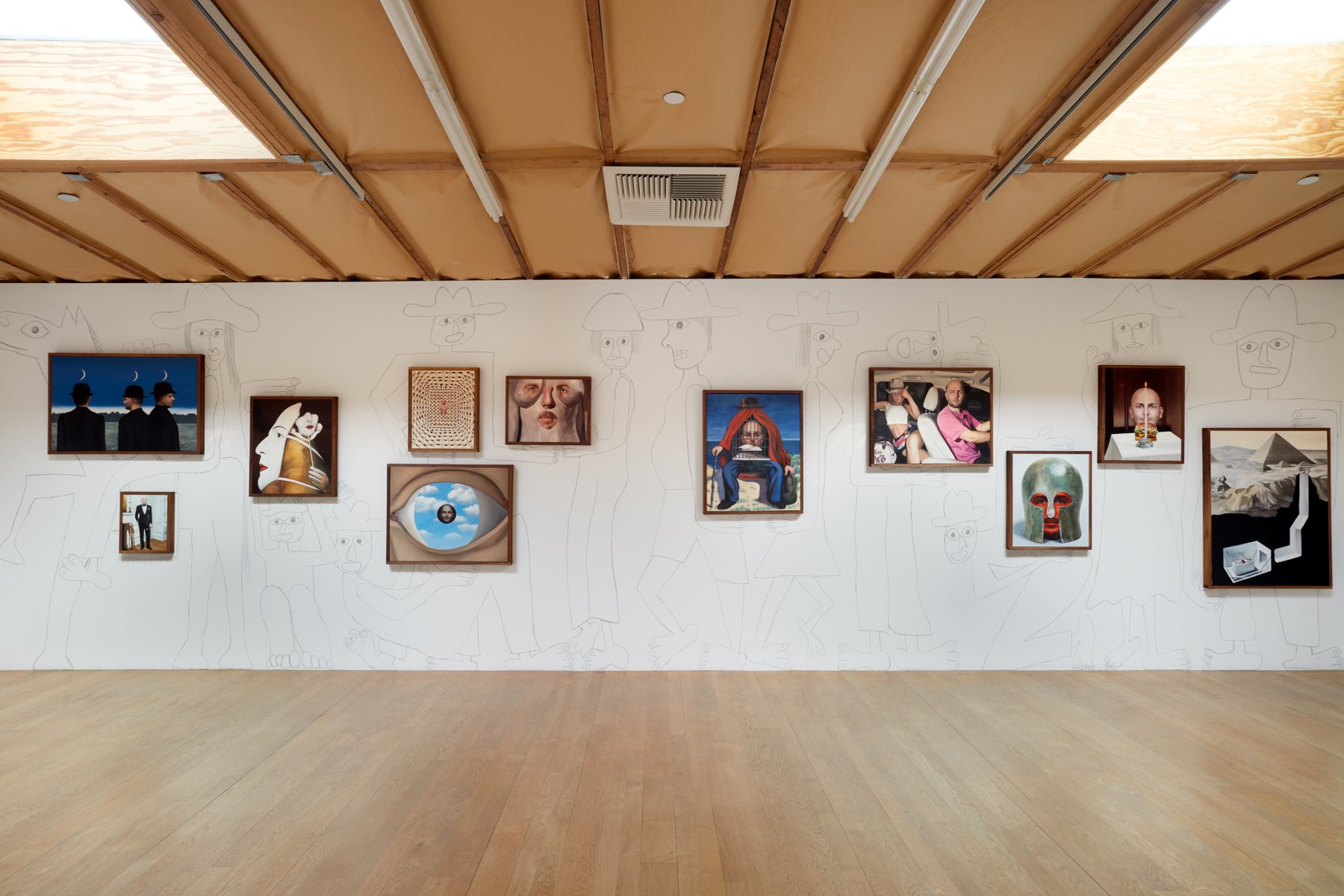
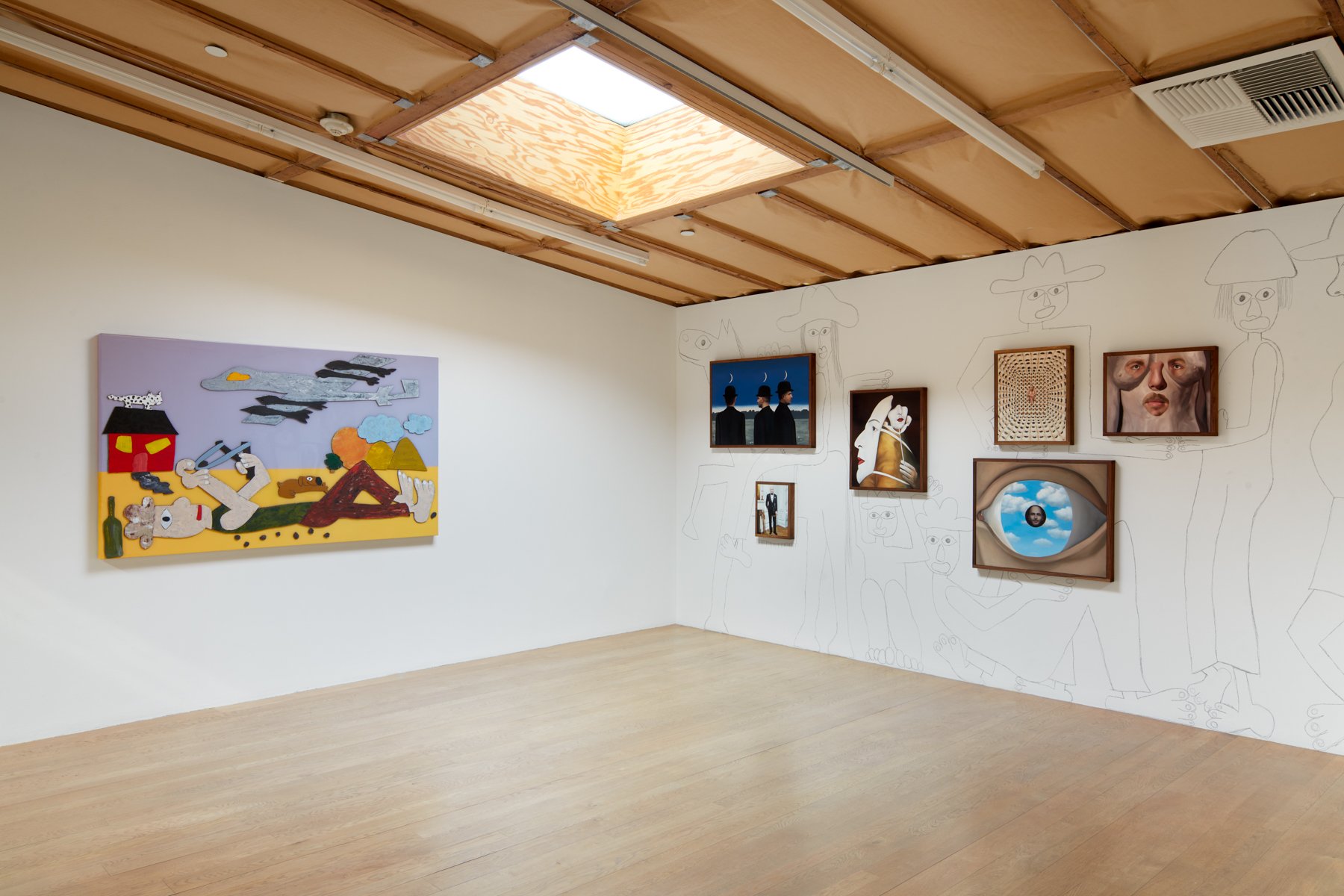
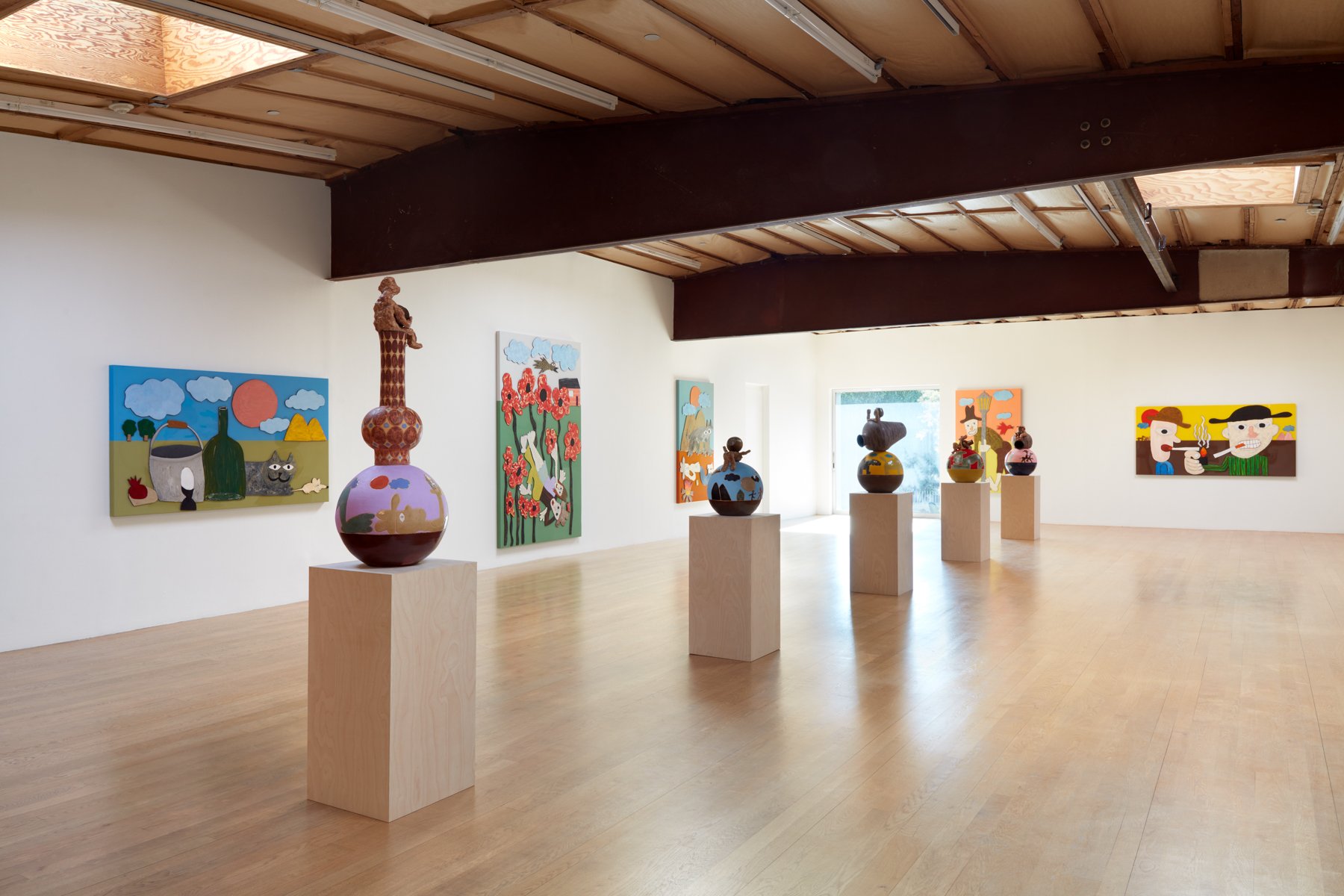
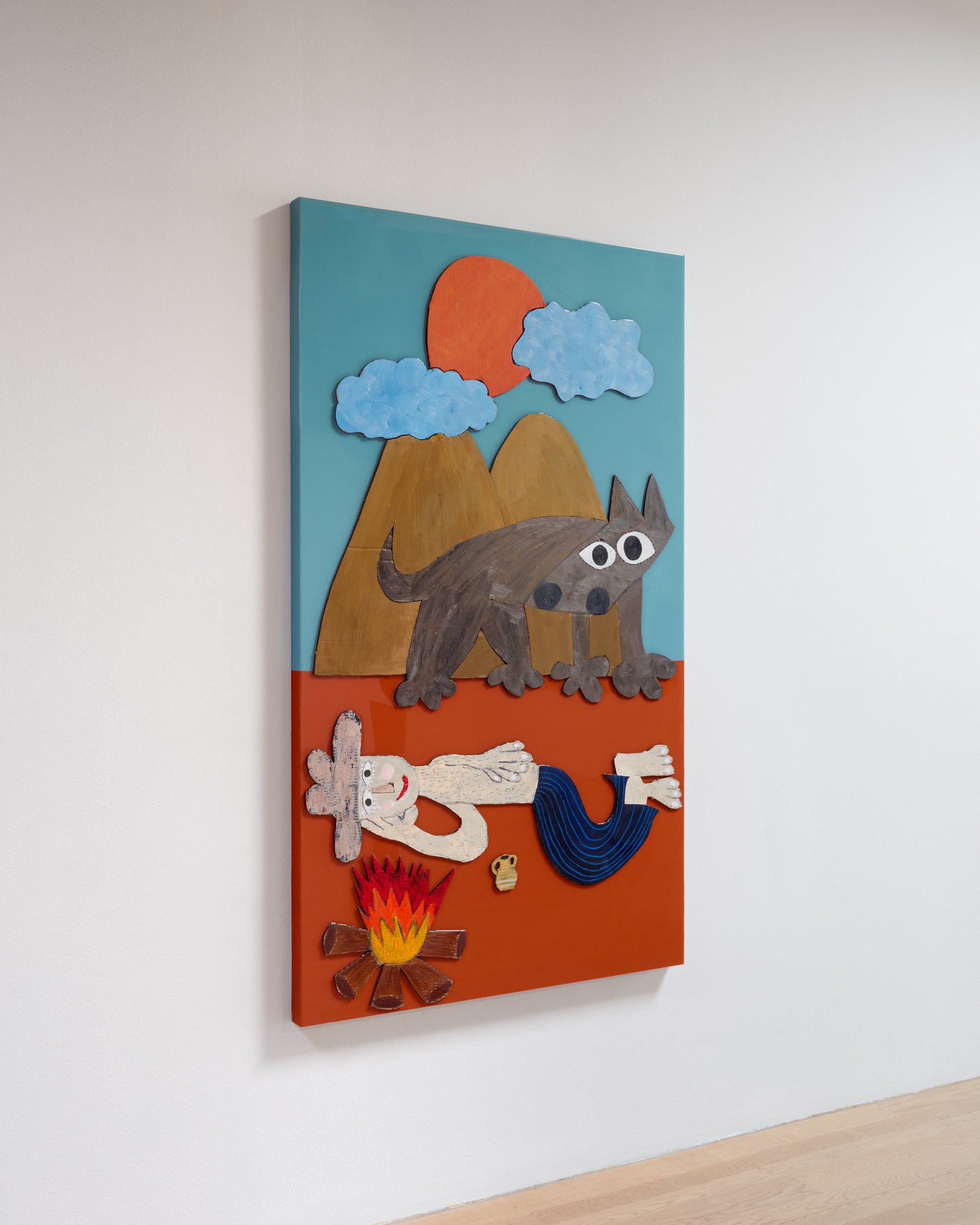
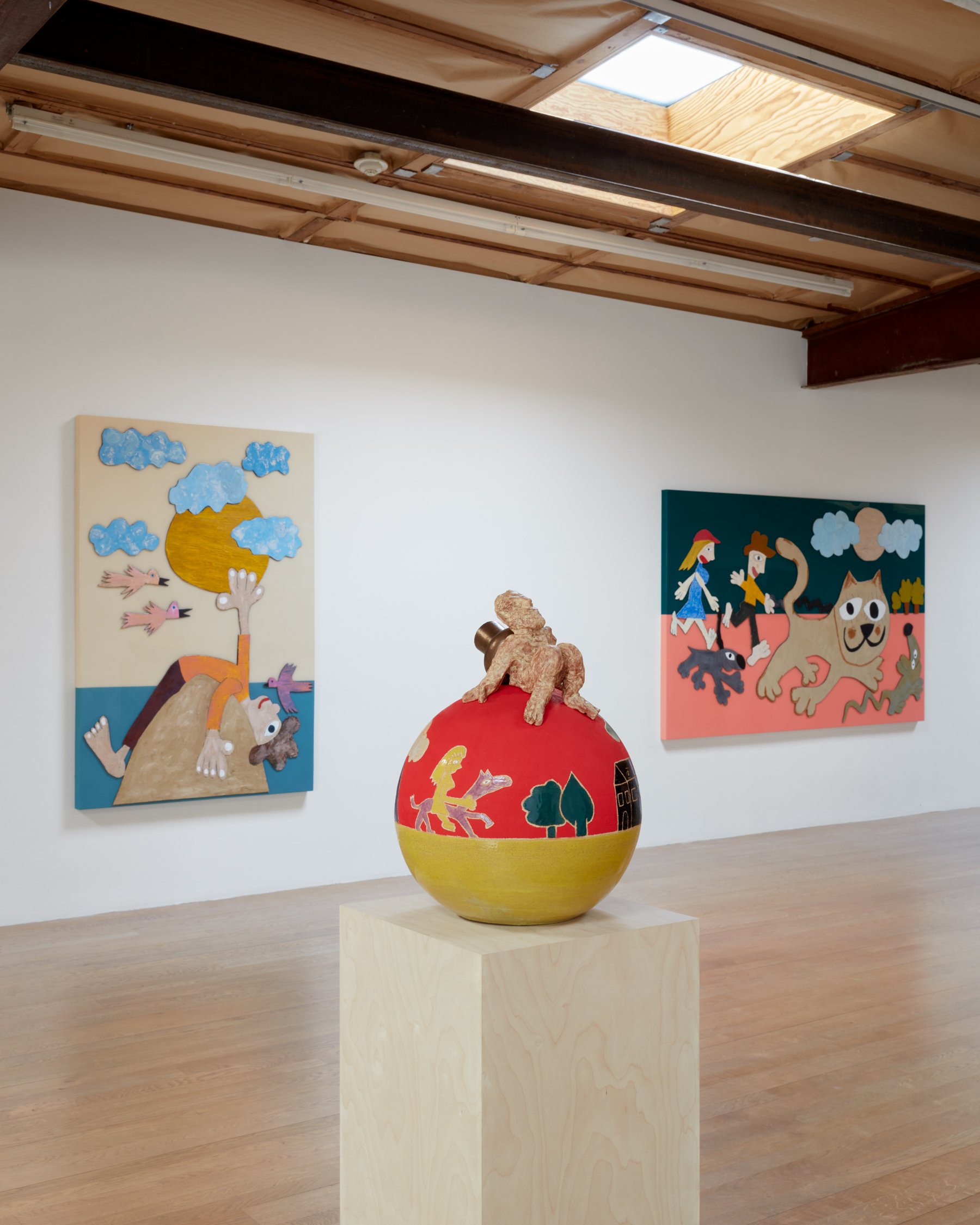
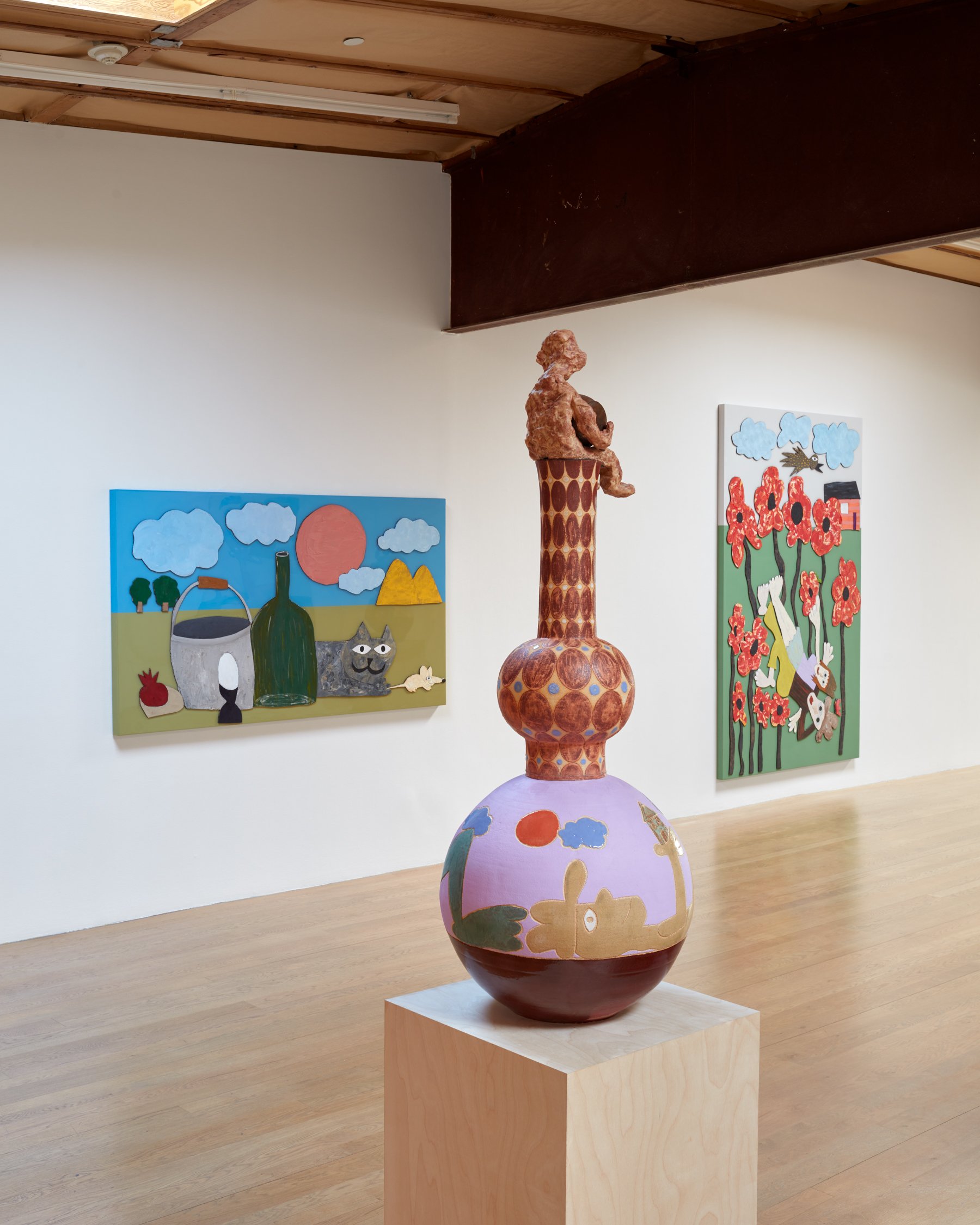
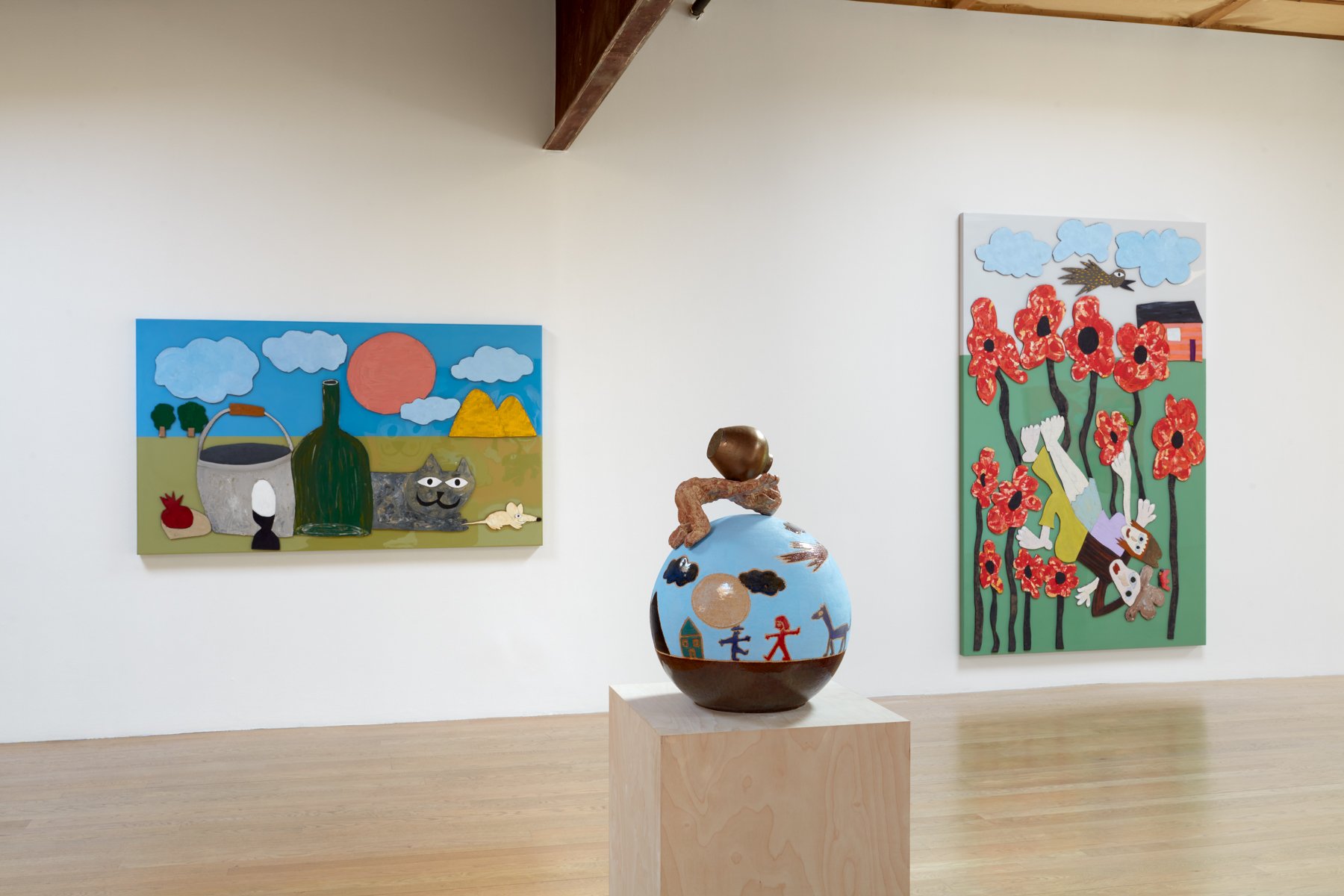
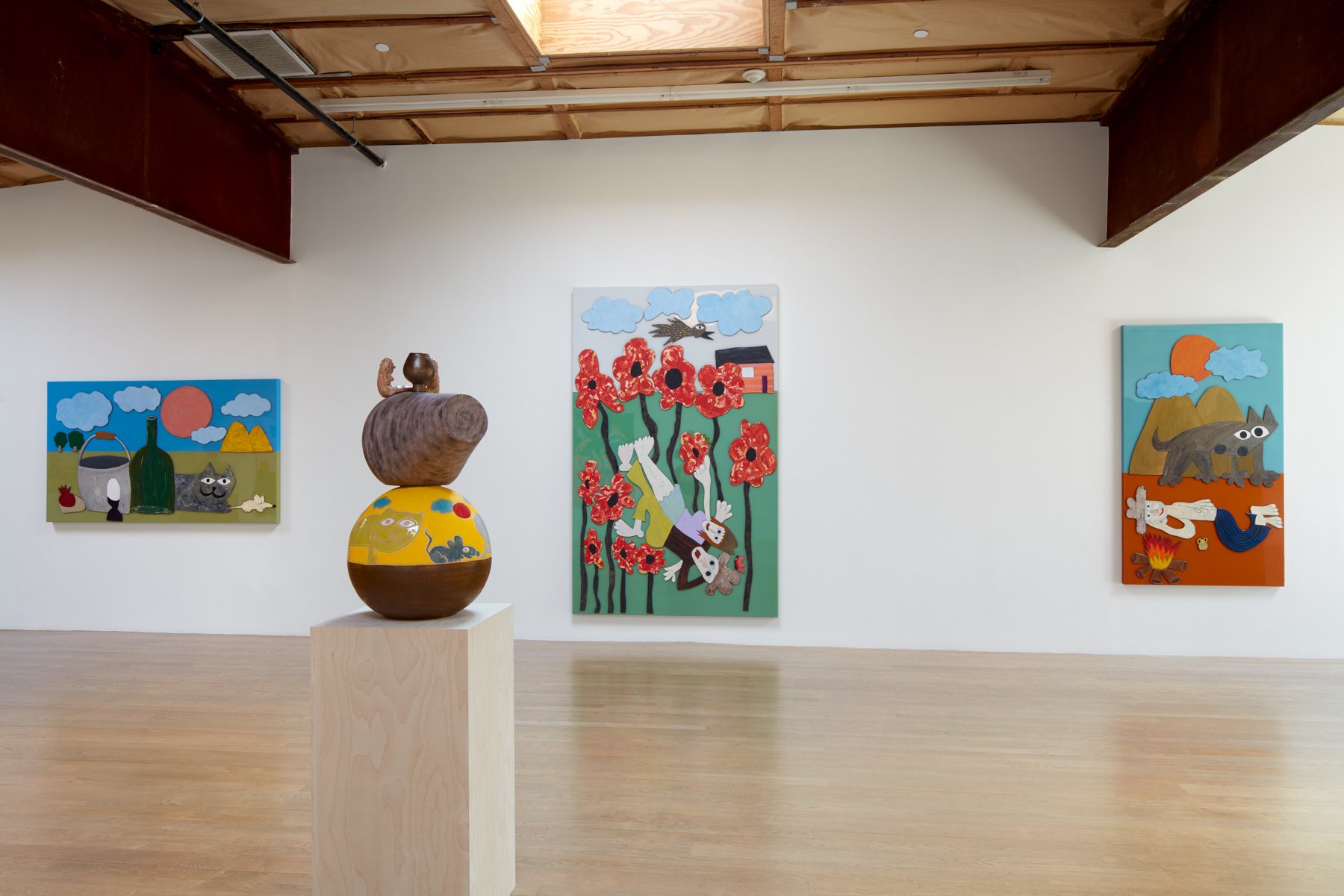
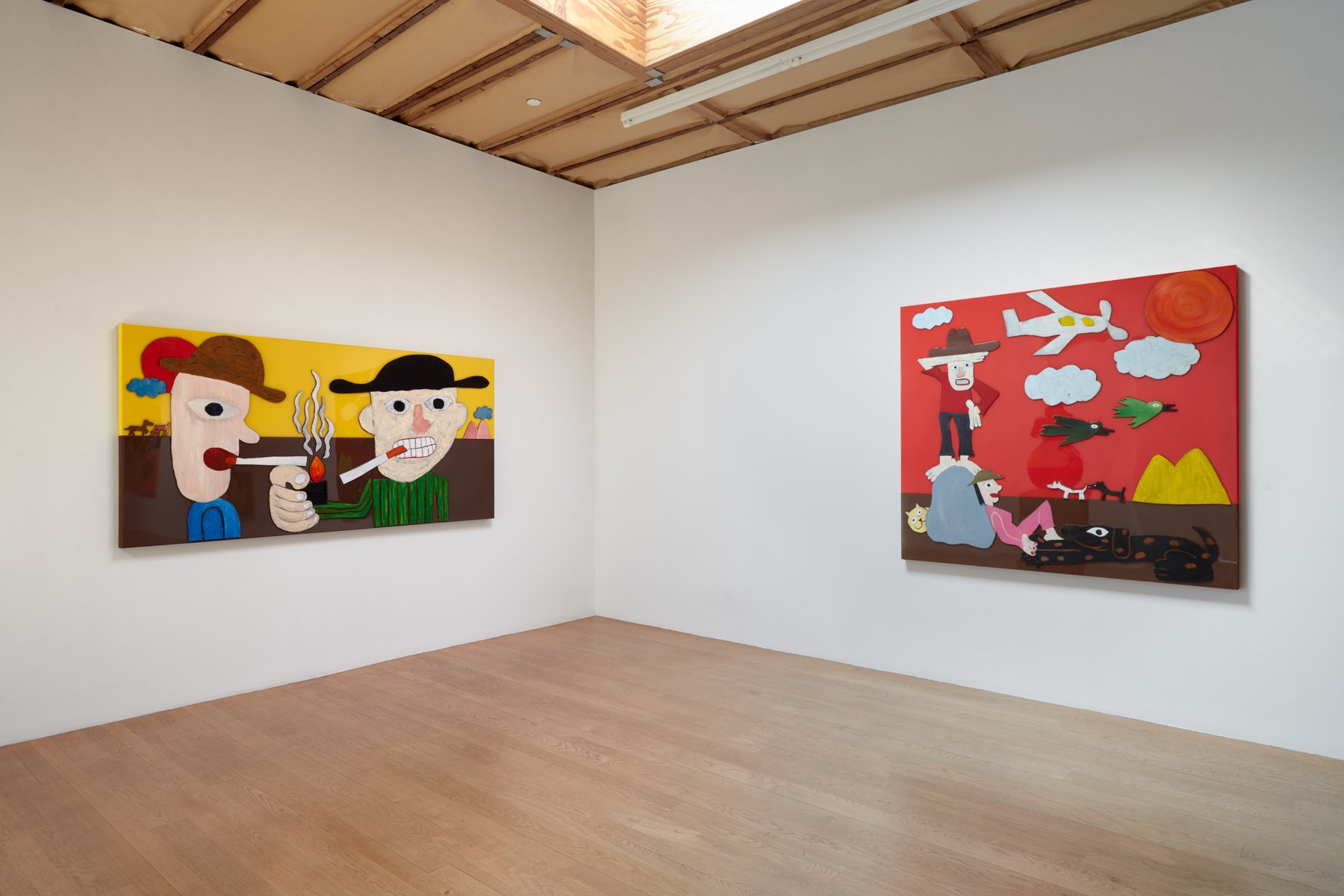
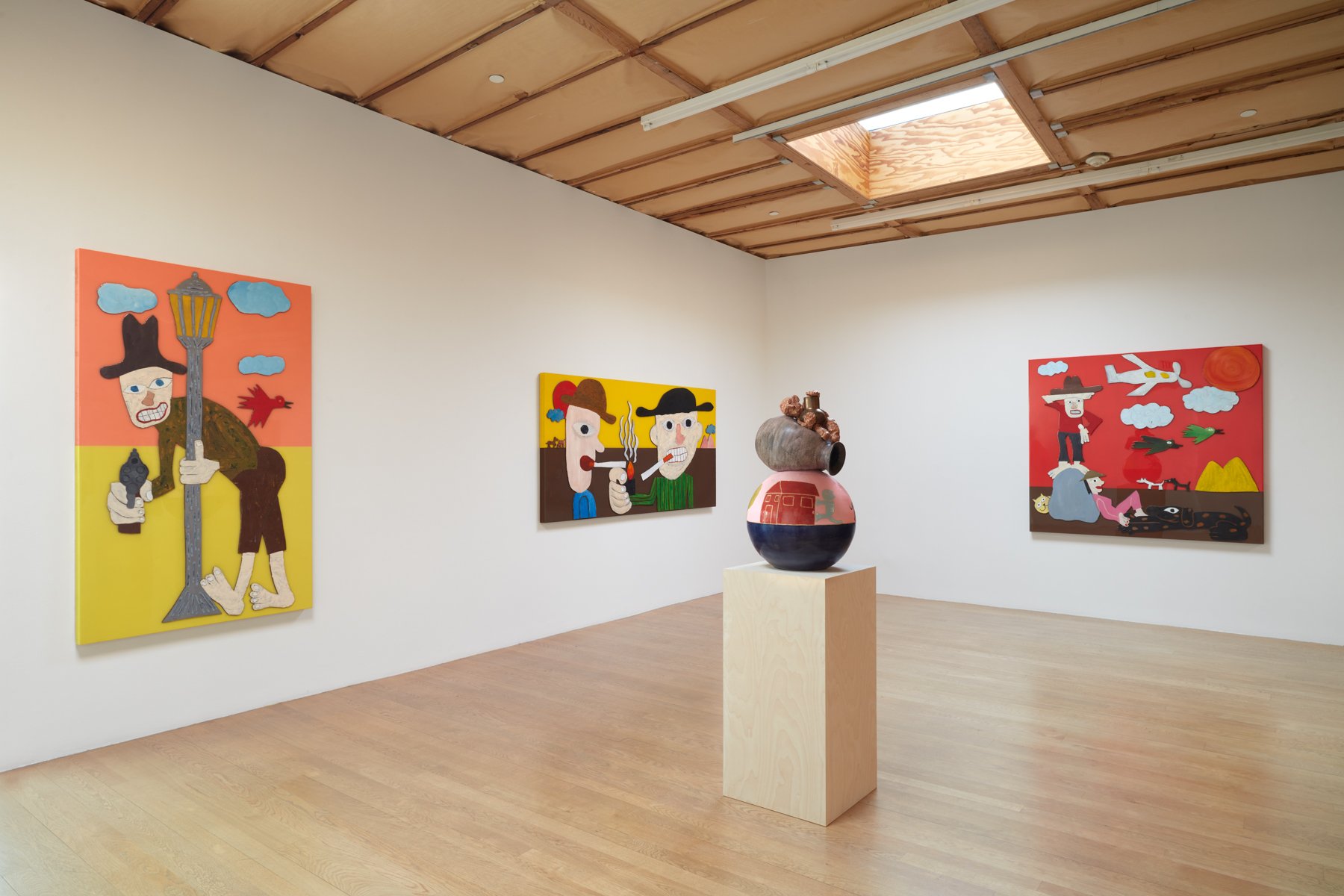
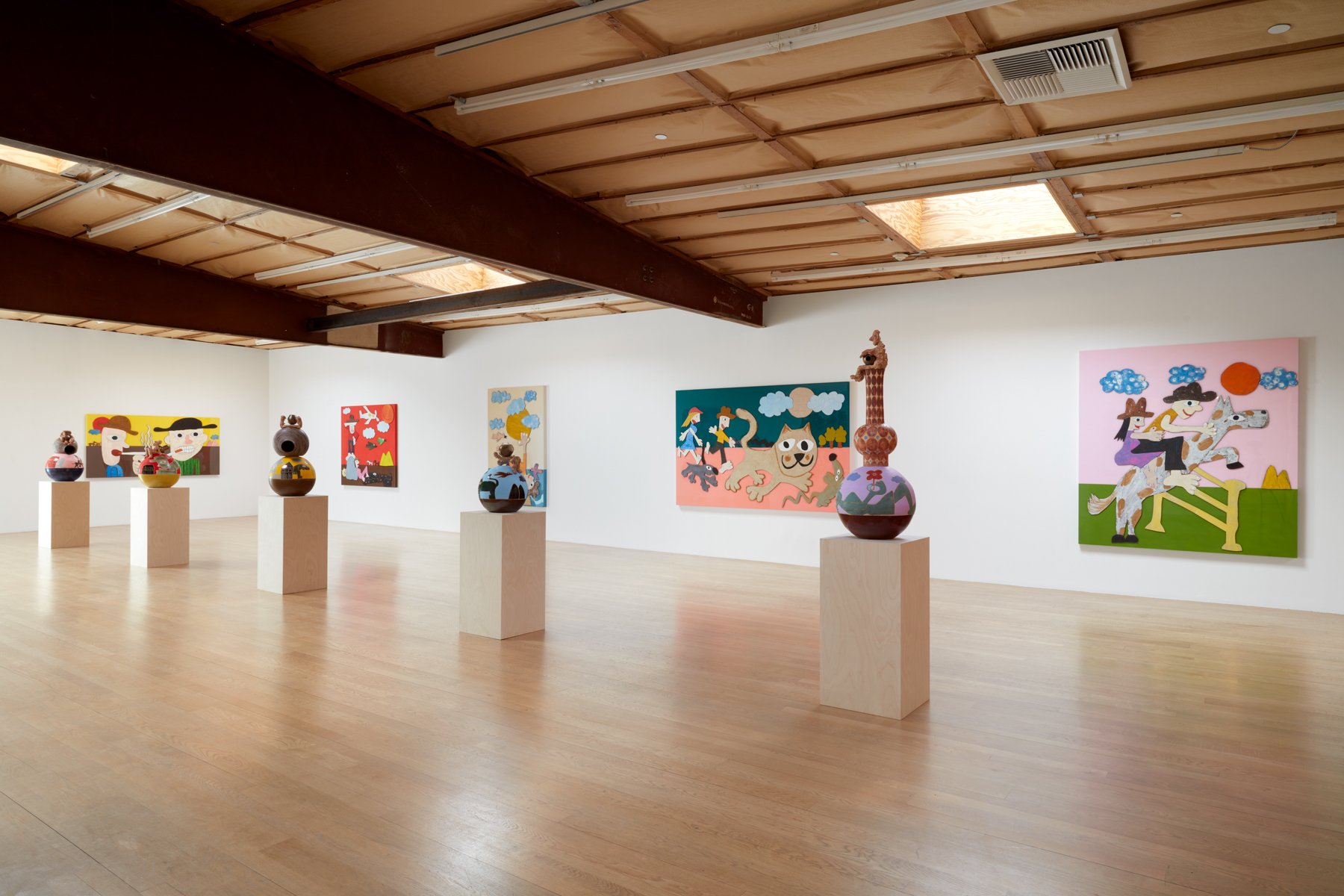
Hadi Falapshi: Edge of the World Installation views, 2024 BLUM Los Angeles ©Hadi Falapshi Studio; Courtesy of the artist and BLUM Los Angeles, Tokyo, New York Photo: Evan Walsh
Falapishi leverages the humor that is intrinsic to an unlikely pairing to great effect. Transposing his face onto the bosom of a Roman statue in Professional Painter in a Roman Statue (2024) or inserting a lamppost referencing artists’ artist Martin Kippenberger into a work with simple depth and imprecise lines, Falapishi asserts a truth that has echoed through time with other great storytellers such as William Faulkner. Complex thoughts on the grand nature of existence can sometimes come from the most uncomplicated or unexpected places.
Hadi Falapishi Smoke Break, 2024 Oil paint, cardboard, resin on wood panel 44 x 88 1/4 x 2 1/4 inches 111.8 x 224.2 x 5.7 centimeters
Hadi Falapishi (b. 1987, Tehran, Iran) lives and works in Brooklyn, New York. His work has been the subject of numerous solo exhibitions, including SEARCHERS in Three Acts, ART&NEWPORT, Newport, RI; Almost There, Whitney Museum of American Art, New York, NY (2023); As Free As Birds, Goldsmiths Centre for Contemporary Art, London, UK (2022); Young and Clueless, The Power Station, Dallas, TX (2022); and In Practice: Total Disbelief, Sculpture Center, New York, NY (2020) ), among others. His work is found in public collections such as the Museum of Contemporary Art, Los Angeles, CA and the Whitney Museum of American Art, New York, NY
About BLUM
BLUM represents more than sixty artists and estates from seventeen countries worldwide, nurturing a diverse roster of artists at all stages of their practices with a range of global perspectives. Originally opened as Blum & Poe in Santa Monica in 1994, the gallery has been a pioneer in its early commitment to Los Angeles as an international arts capital.
The gallery has been acclaimed for its groundbreaking work in championing international artists of postwar and contemporary movements, such as CoBrA, Dansaekhwa, Mono-ha, and Superflat, and for organizing museum-caliber solo presentations and historical survey exhibitions across its spaces in Los Angeles, Tokyo, and New York. Often partnering with celebrated curators and scholars such as Cecilia Alemani, Alison M. Gingeras, Sofia Gotti, Joan Kee, and Mika Yoshitake, the gallery has produced large- scale exhibitions focusing on the Japanese Mono-ha school (2012); the Korean Dansaekhwa monochrome painters (2014); the European postwar movement CoBrA (2015); Japanese art of the 1980s and 1990s (2019); a rereading of Brazilian Modernism (2019); a revisionist take on the 1959 MoMA exhibition, New Images of Man (2020); and a survey of portraiture through a democratic and humanist lens (2023); among others.
BLUM’s wide-reaching program includes exhibitions, lectures, performance series, screenings, video series, and an annual art book fair at its base in Los Angeles. BLUM Books, the gallery’s publishing division, democratically circulates its program through original scholarship and accessible media ranging from academic monographs, audio series, magazines, to artists’ books.
Across the three global locations, BLUM prioritizes environmental and community stewardship in all operations. In 2015, it was certified as an Arts:Earth Partnership (AEP) green art gallery in Los Angeles and consequently became one of the first green certified galleries in the United States. The gallery is also a member of the Gallery Climate Coalition, which works to facilitate a more sustainable commercial art world and reduce the industry’s collective carbon footprint. BLUM is committed to fostering inclusive and equitable communities both in its physical and online spaces and believes that everybody should have equal access to creating and engaging with contemporary art.
At the BLUM Los Angeles location, the exhibition opened on January 18 and will be on view until March 22, 2025.
For more information about this exhibition and others, please visit Blum’s website here. The gallery can also be found on Instagram.
Yoshitomo Nara: My Imperfect Self
YoshitomoNara: My Imperfect Self Installation views, 2025 BLUM Los Angeles ©Yoshitomo Nara / Courtesy of the Yoshitomo Nara Foundation and BLUM Los Angeles, Tokyo, New YorkPhoto: Hannah Mjølsns
Los Angeles, CA—BLUM is pleased to present My Imperfect Self, Yoshitomo Nara’s tenth exhibition with the gallery, commemorating thirty years since the artist’s first US show, entitled Pacific Babies, at Blum & Poe in 1995.
A standout piece from that first exhibition, titled There is No Place Like Home (1995), employs dark humor to explore the complexities of belonging for a young Japanese artist living in Germany on the cusp of international acclaim. Today, that restless uncertainty has given way to a deep-seated sense of connectedness, including attunement to remote places that remind him of growing up in Northern Japan. It was in Sapporo, Hokkaido, when Nara first started using remnants of unused clay to deconstruct his iconic image of the child into misshaped forms that bear traces of his hands, reestablishing his connection to the material and his sense of place. This process culminated in a new series of bronze sculptures, eleven of which are presented for the first time in this latest exhibition. Seen together, these works highlight how far Nara has transformed the kawaii aesthetic into an alternate realm of beguiling misfits.
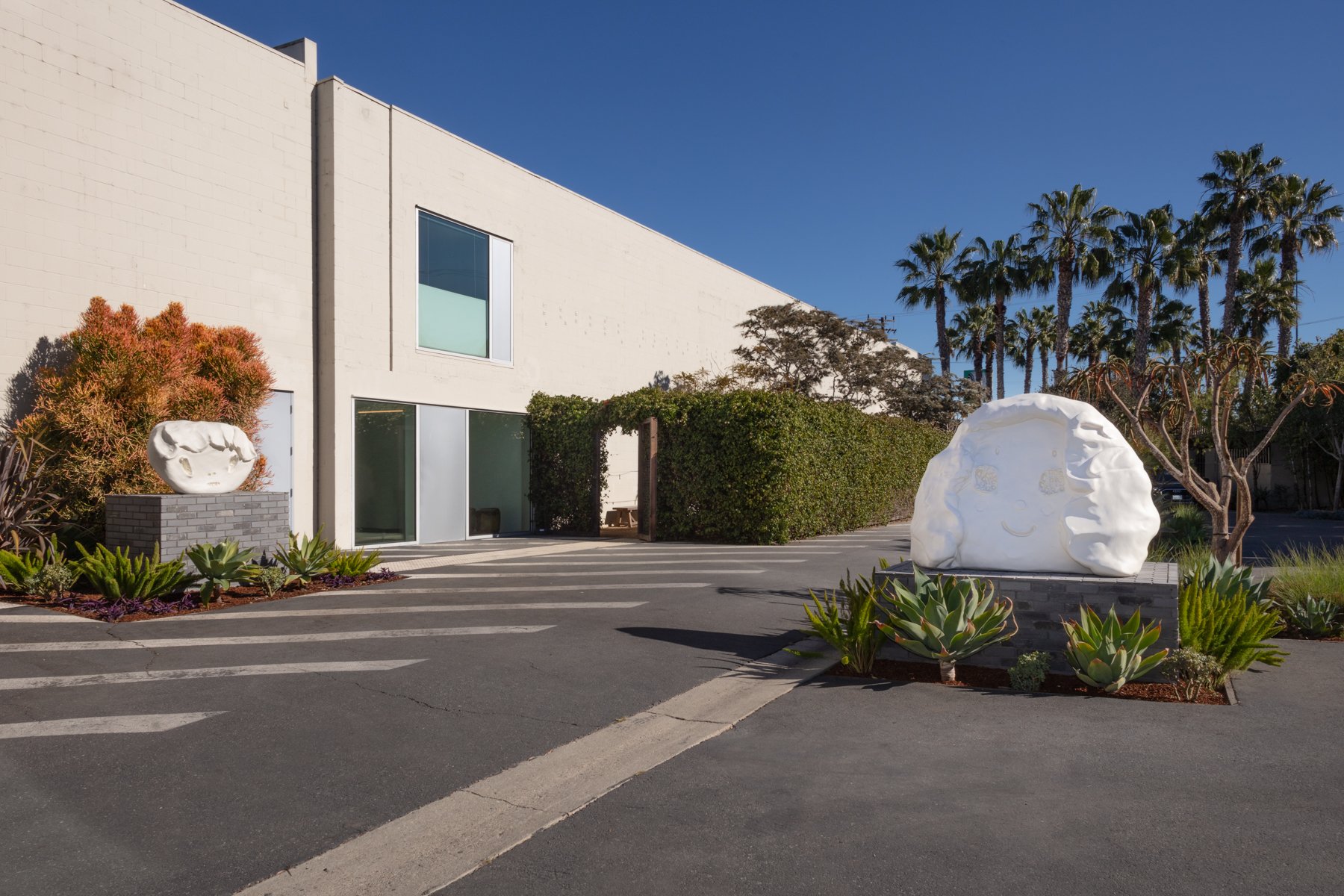
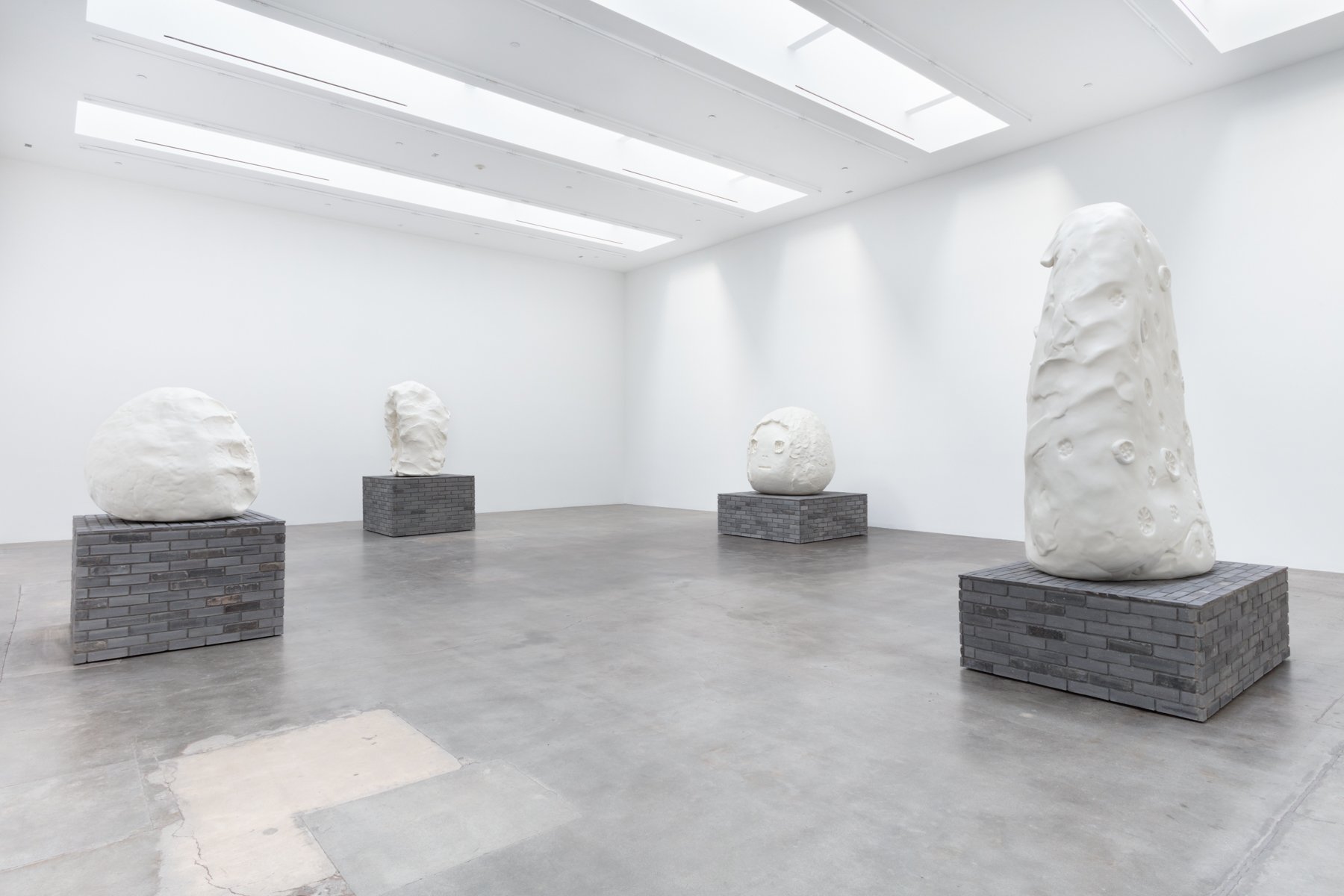
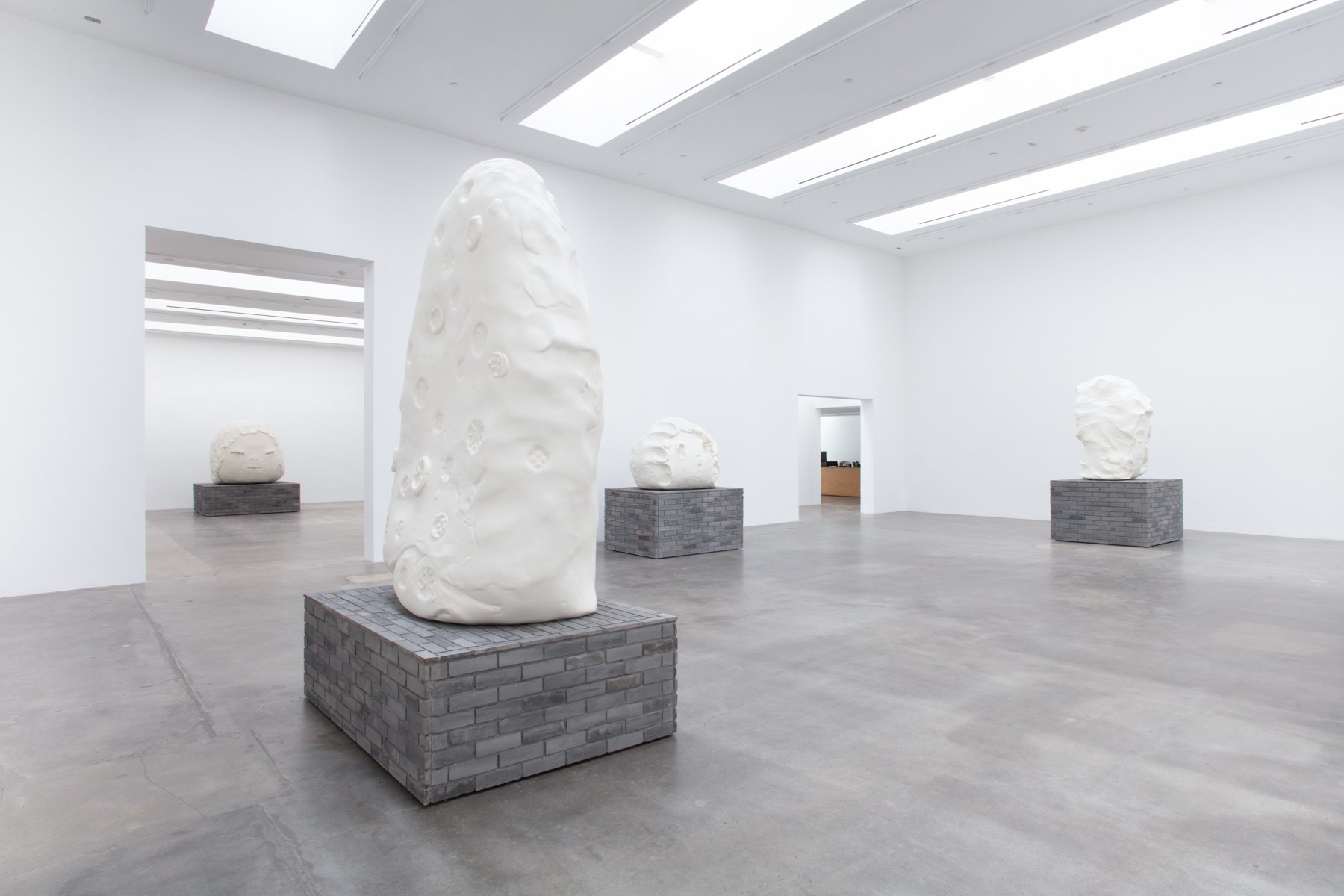
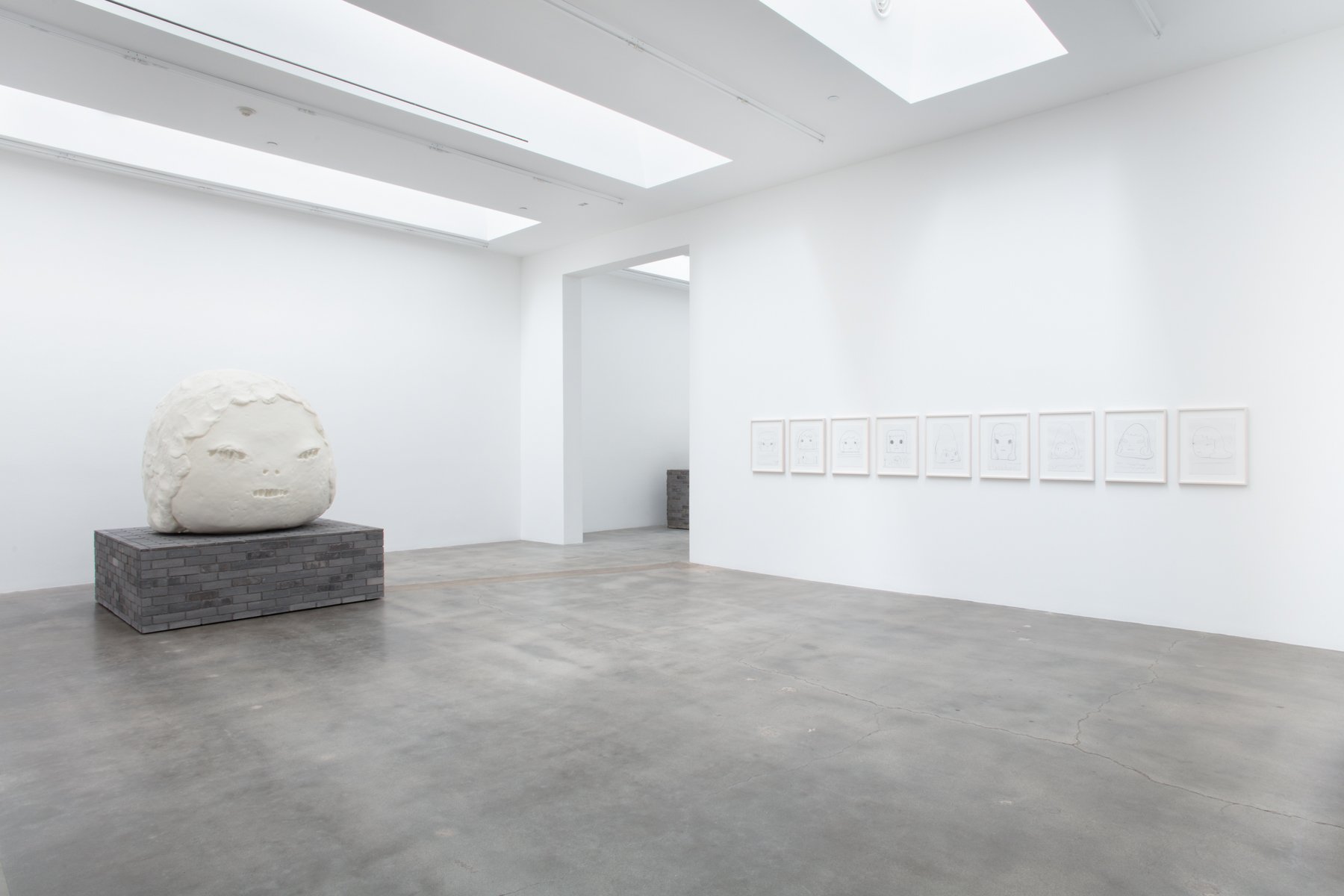
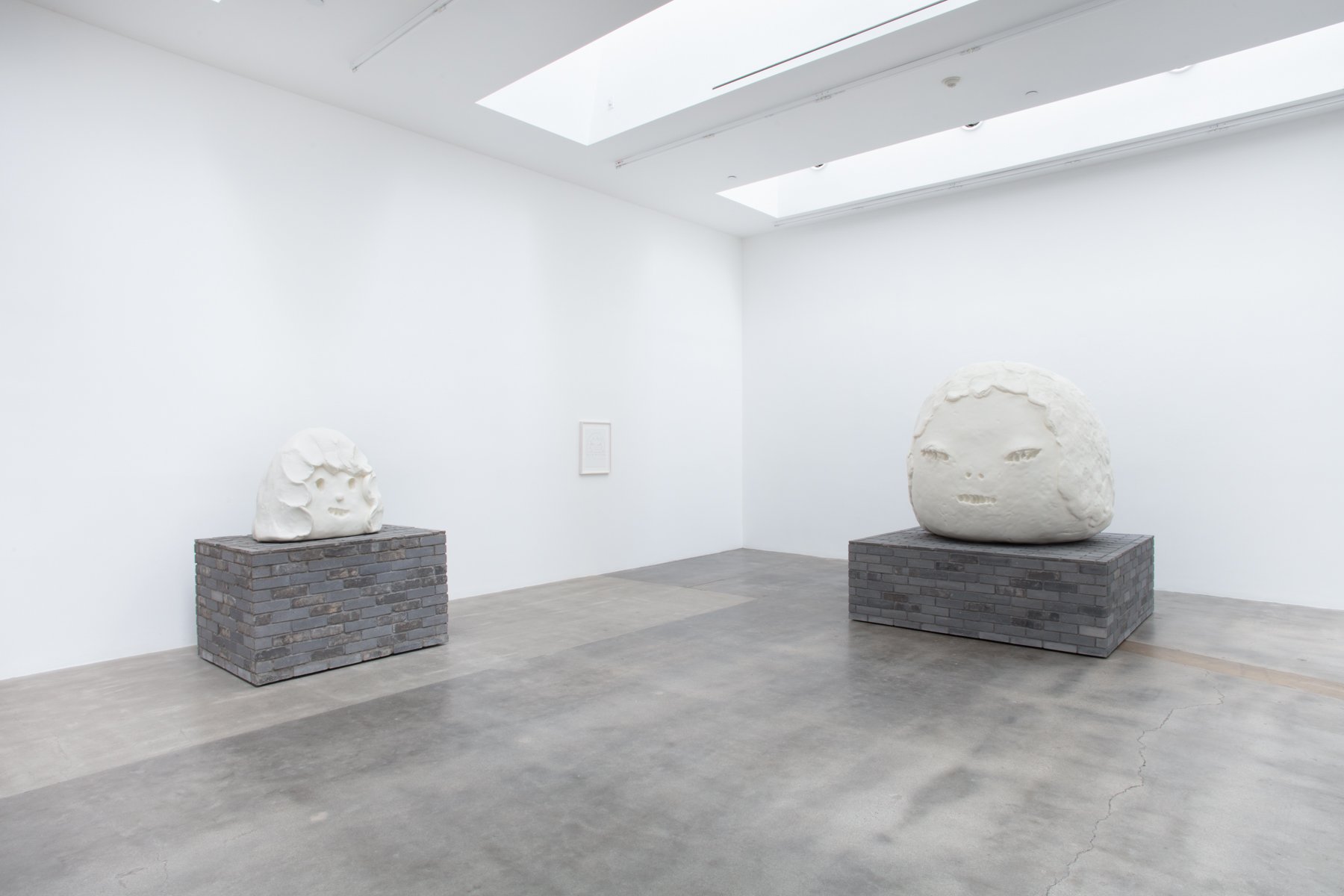
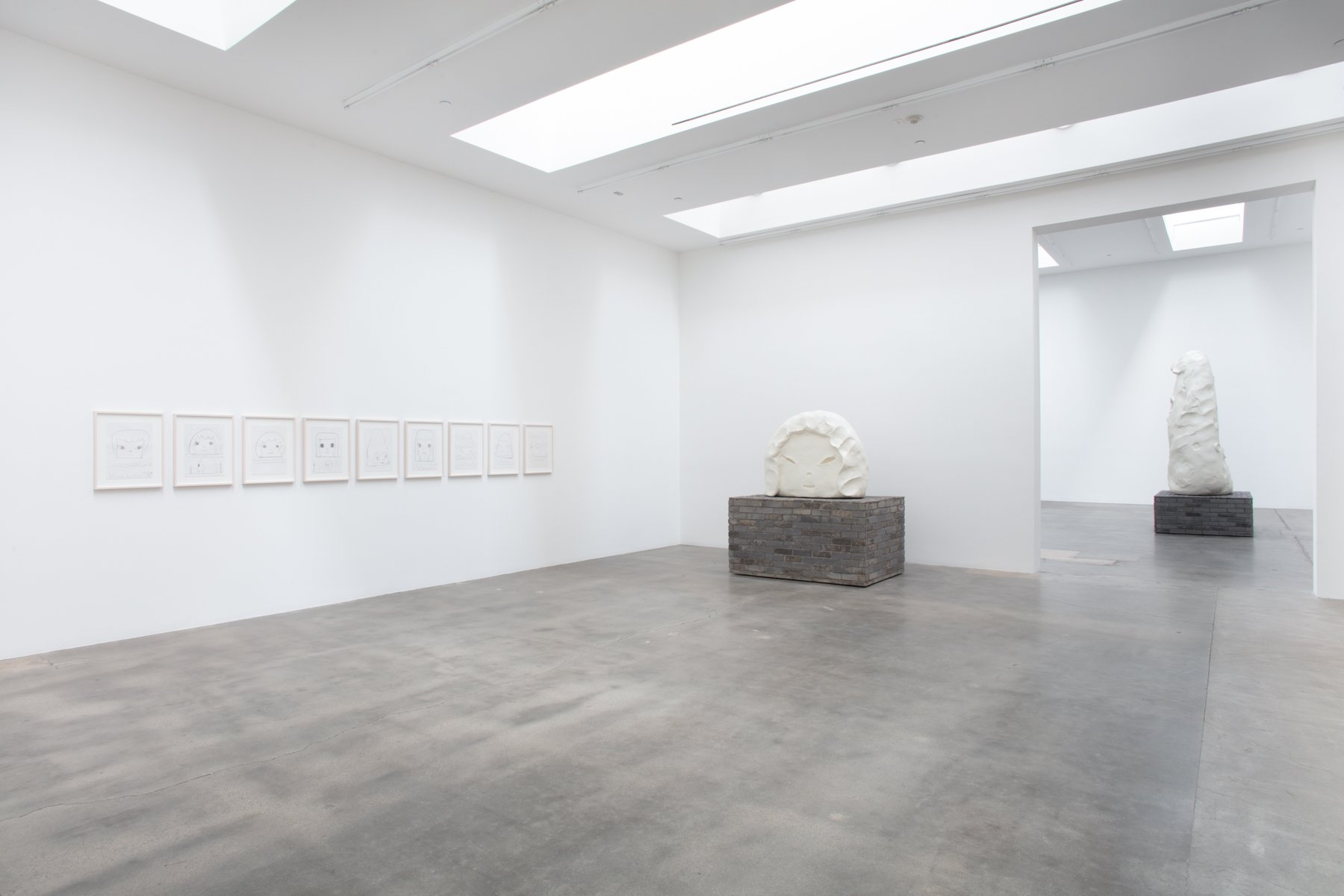
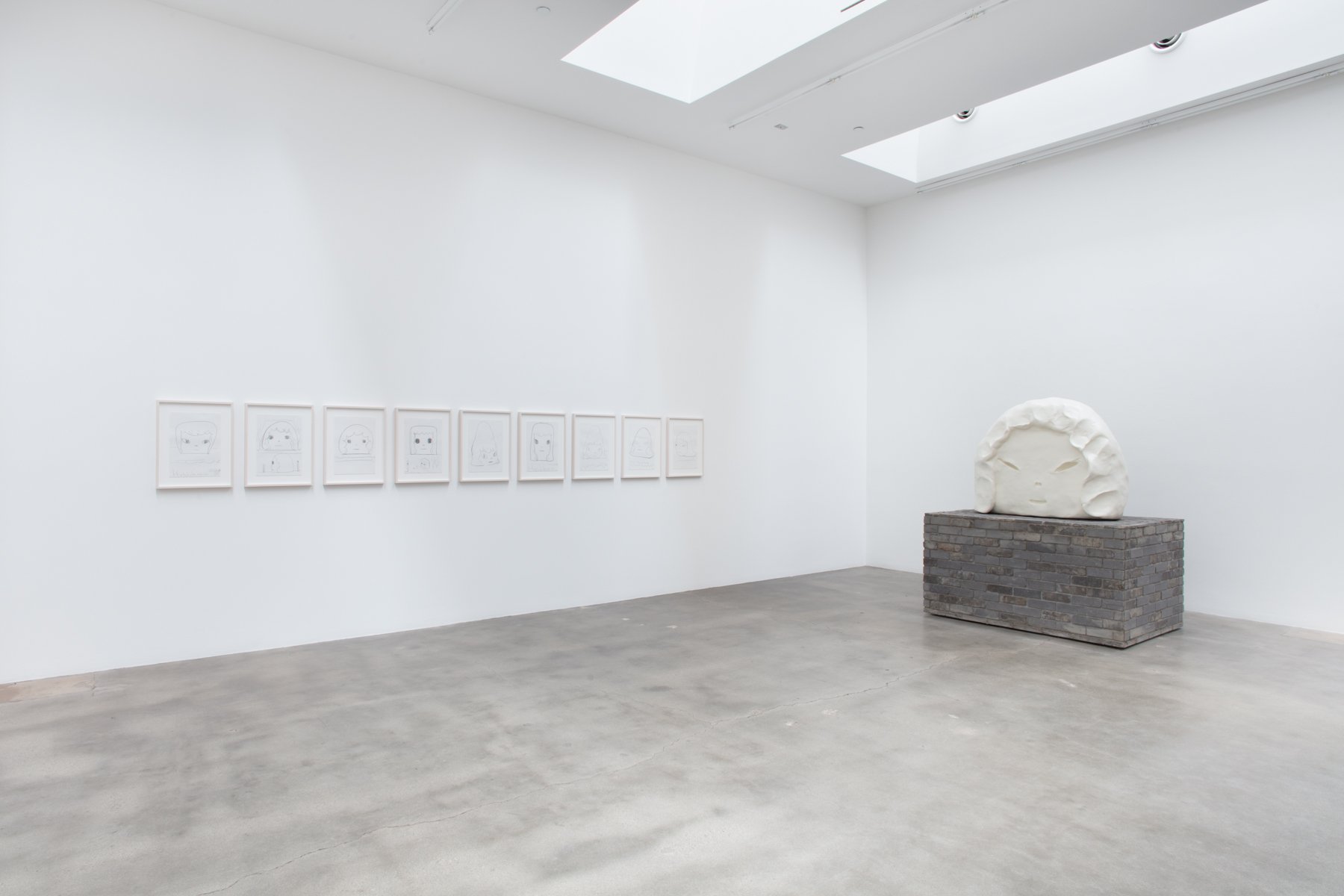
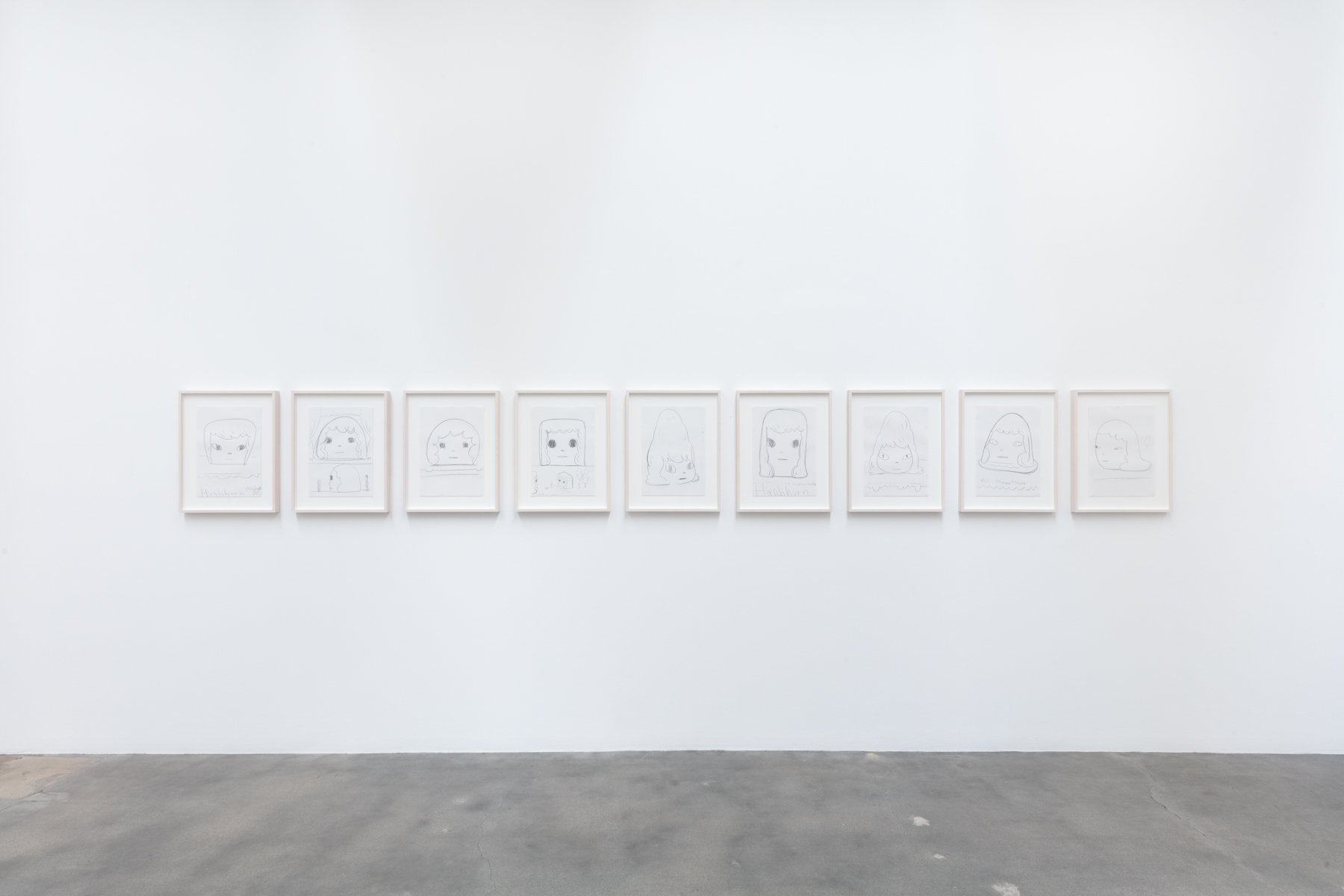
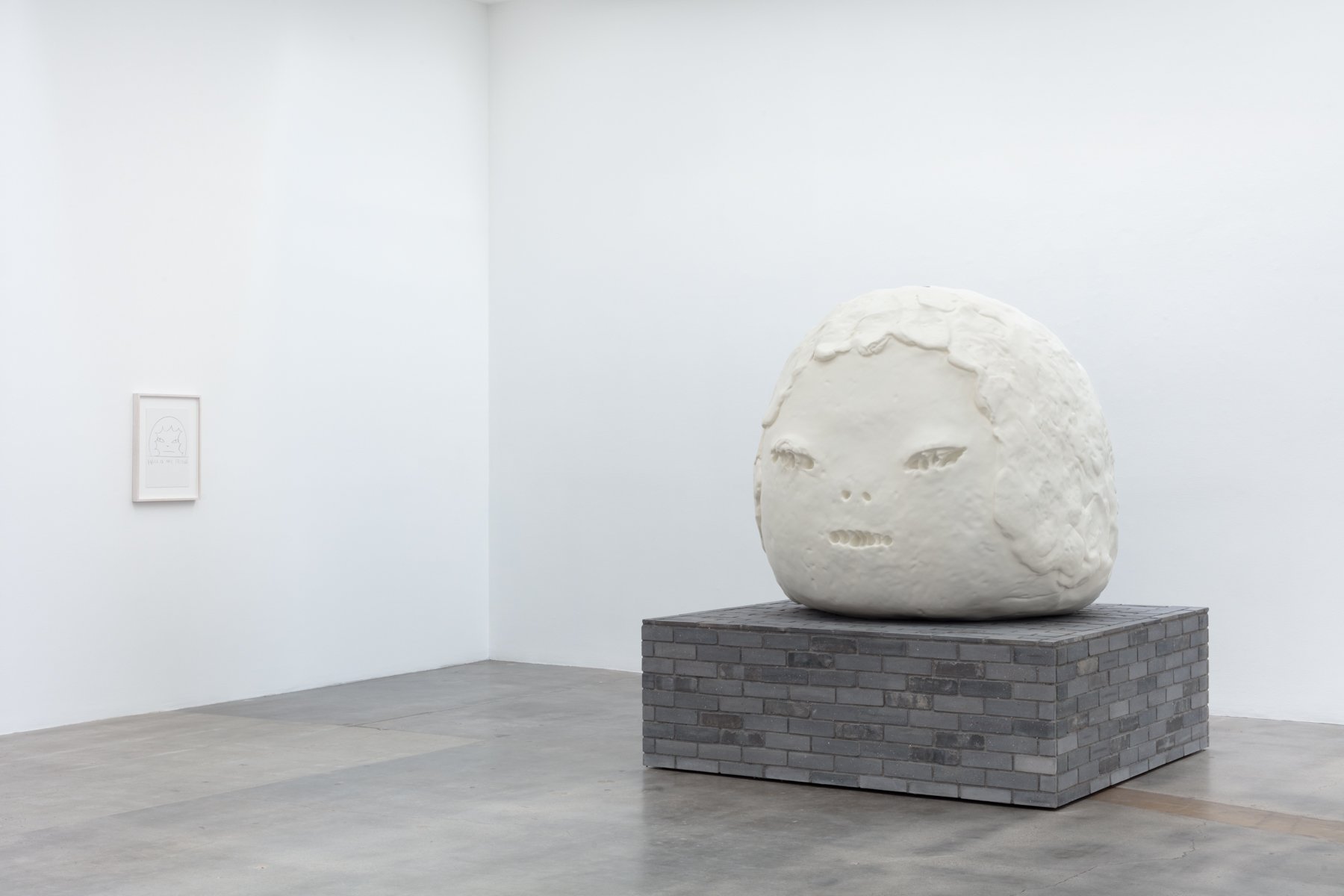
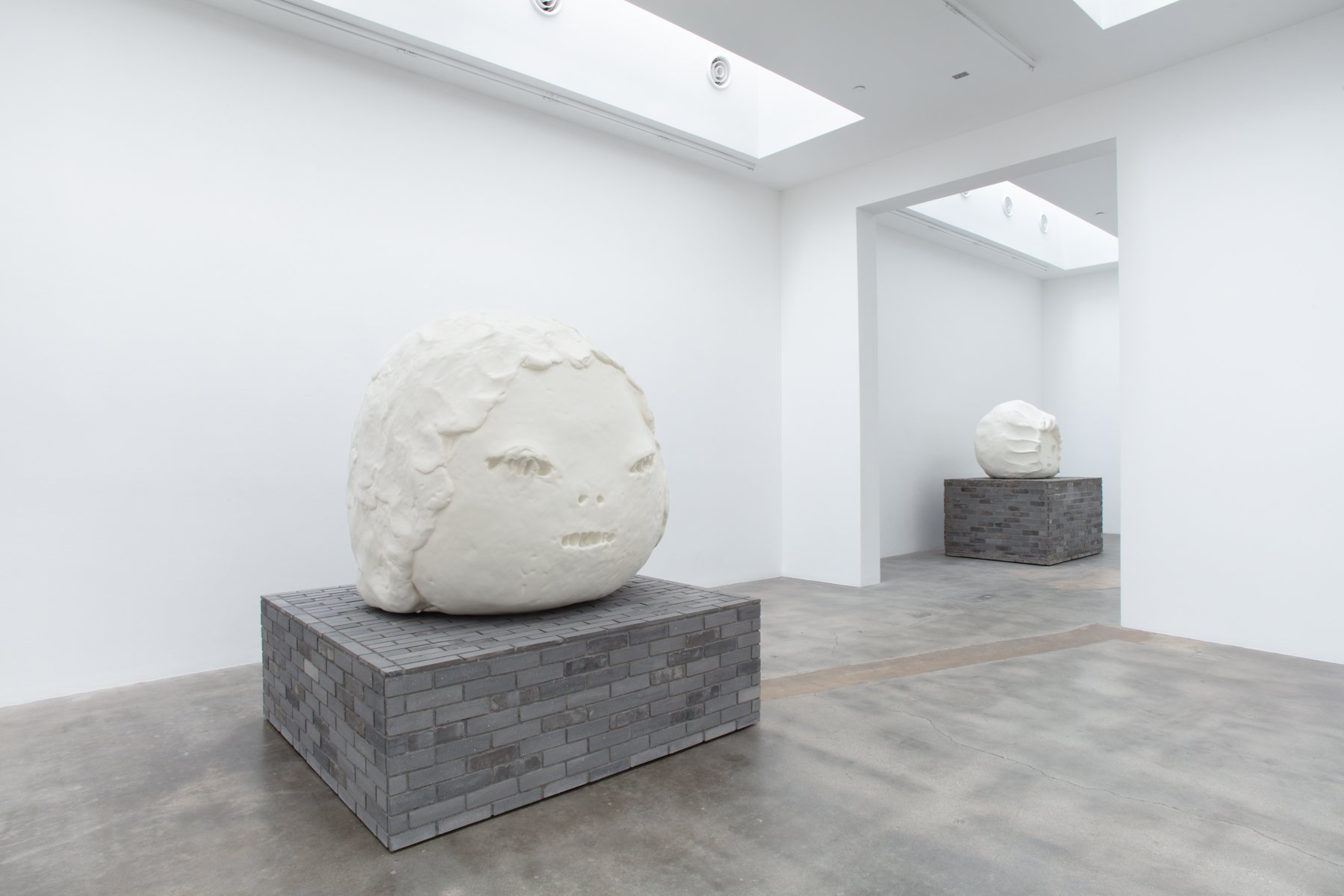
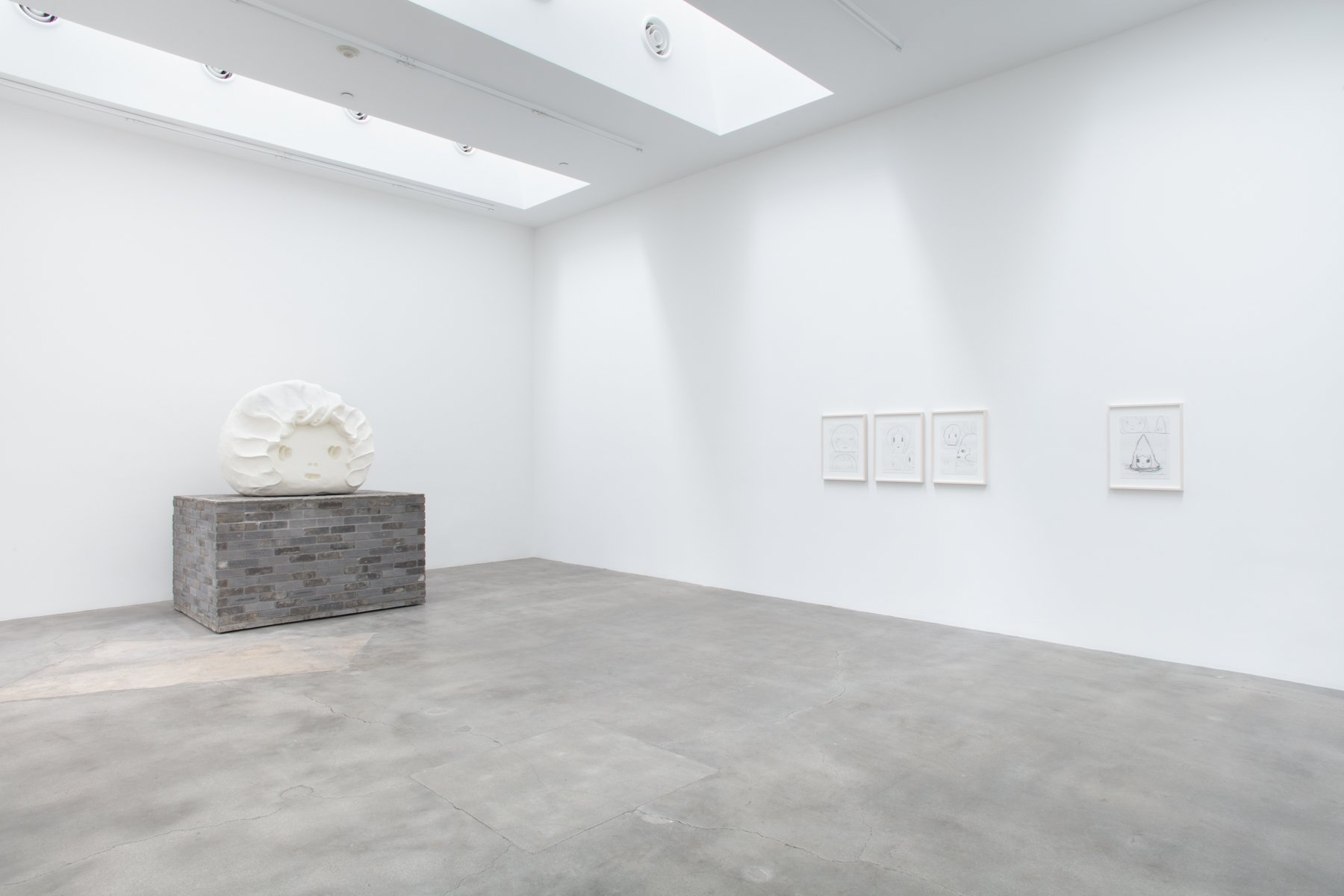
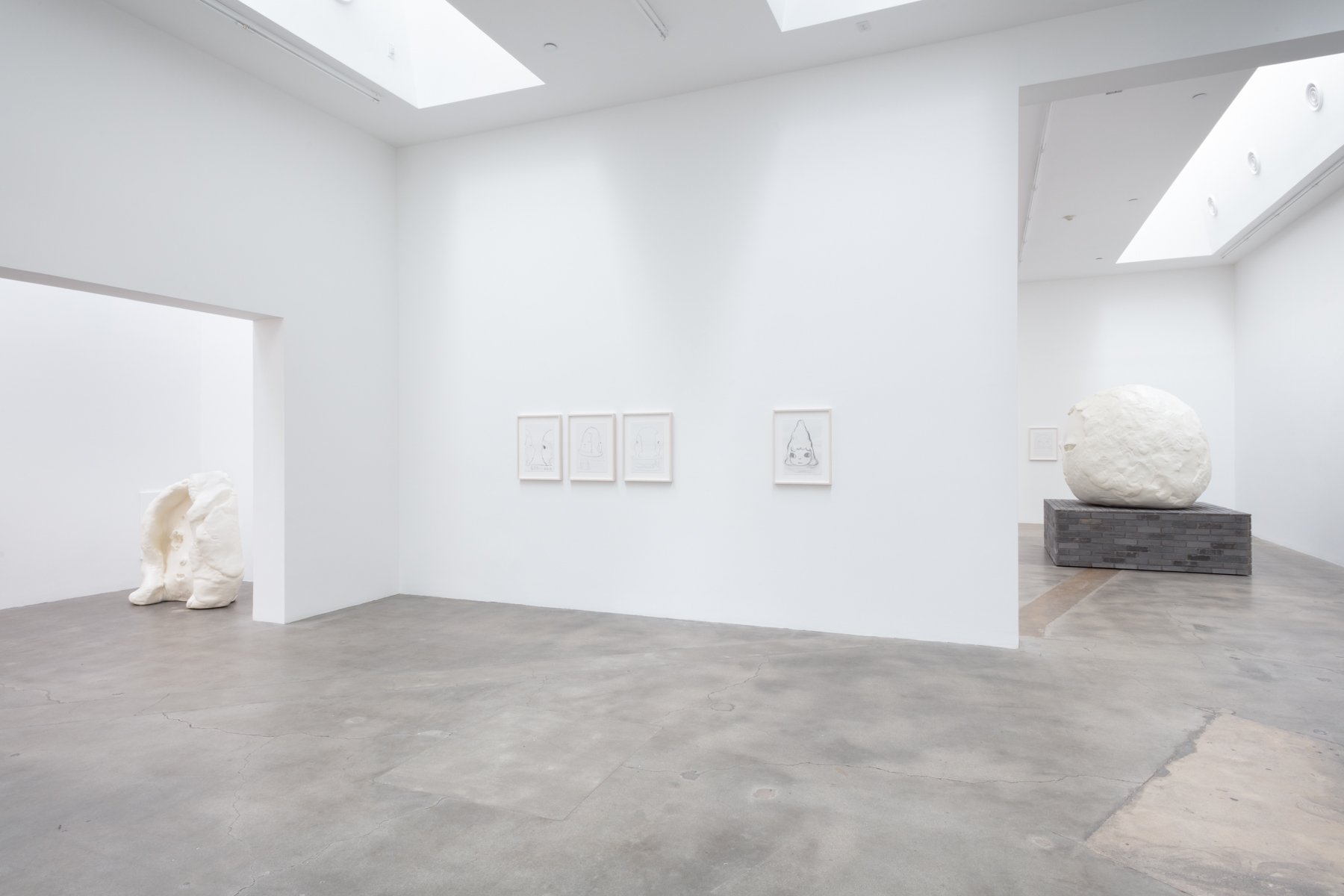
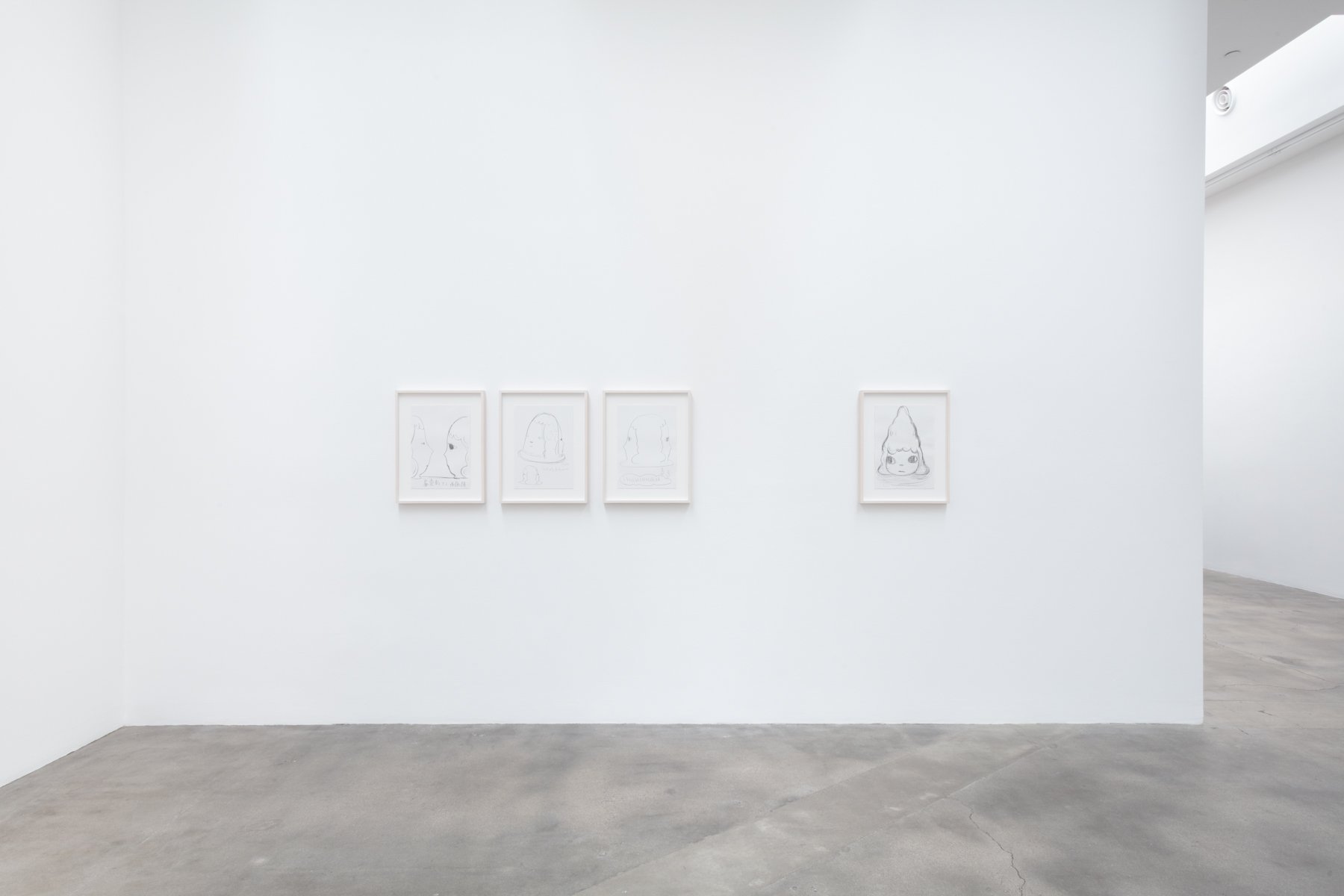
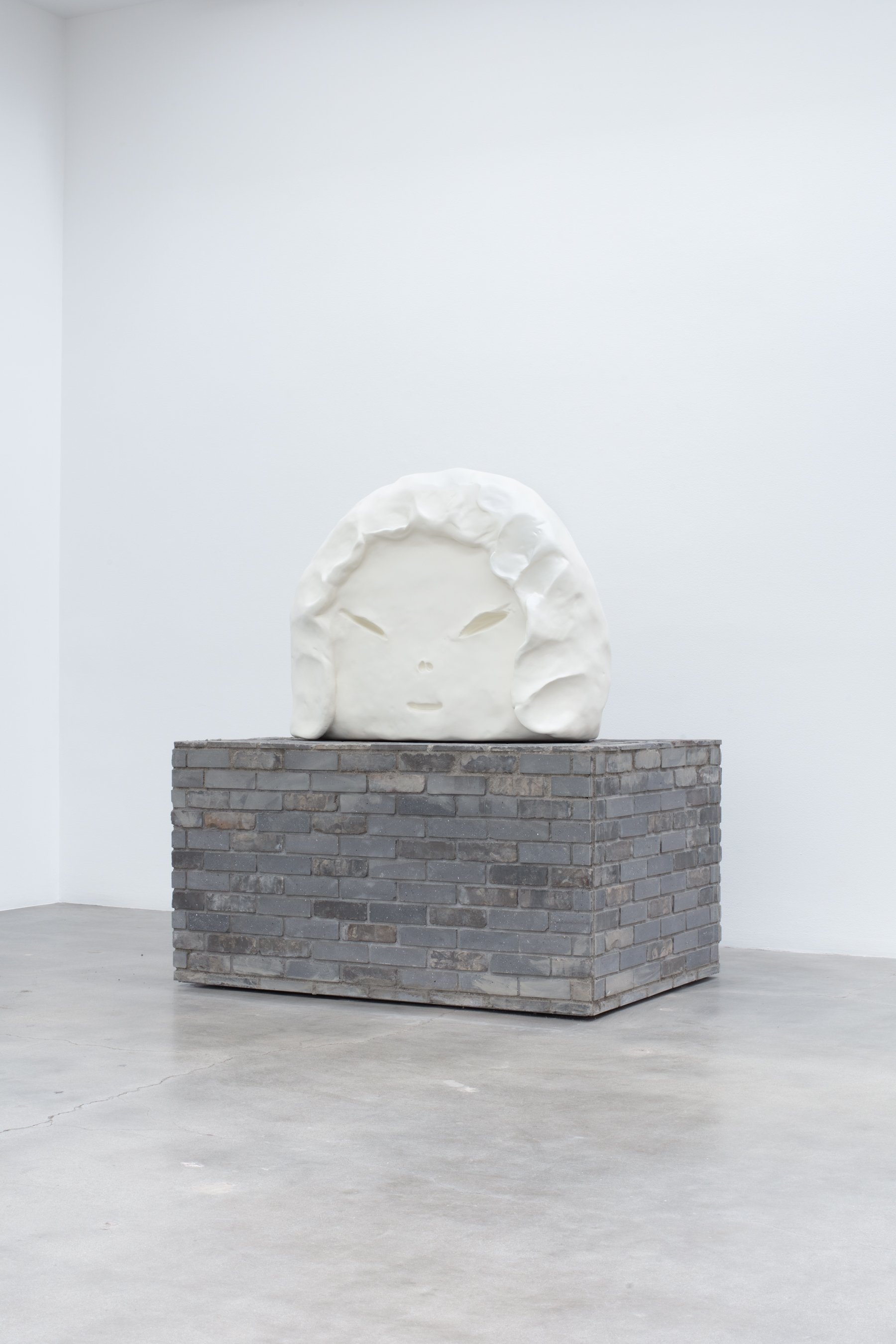
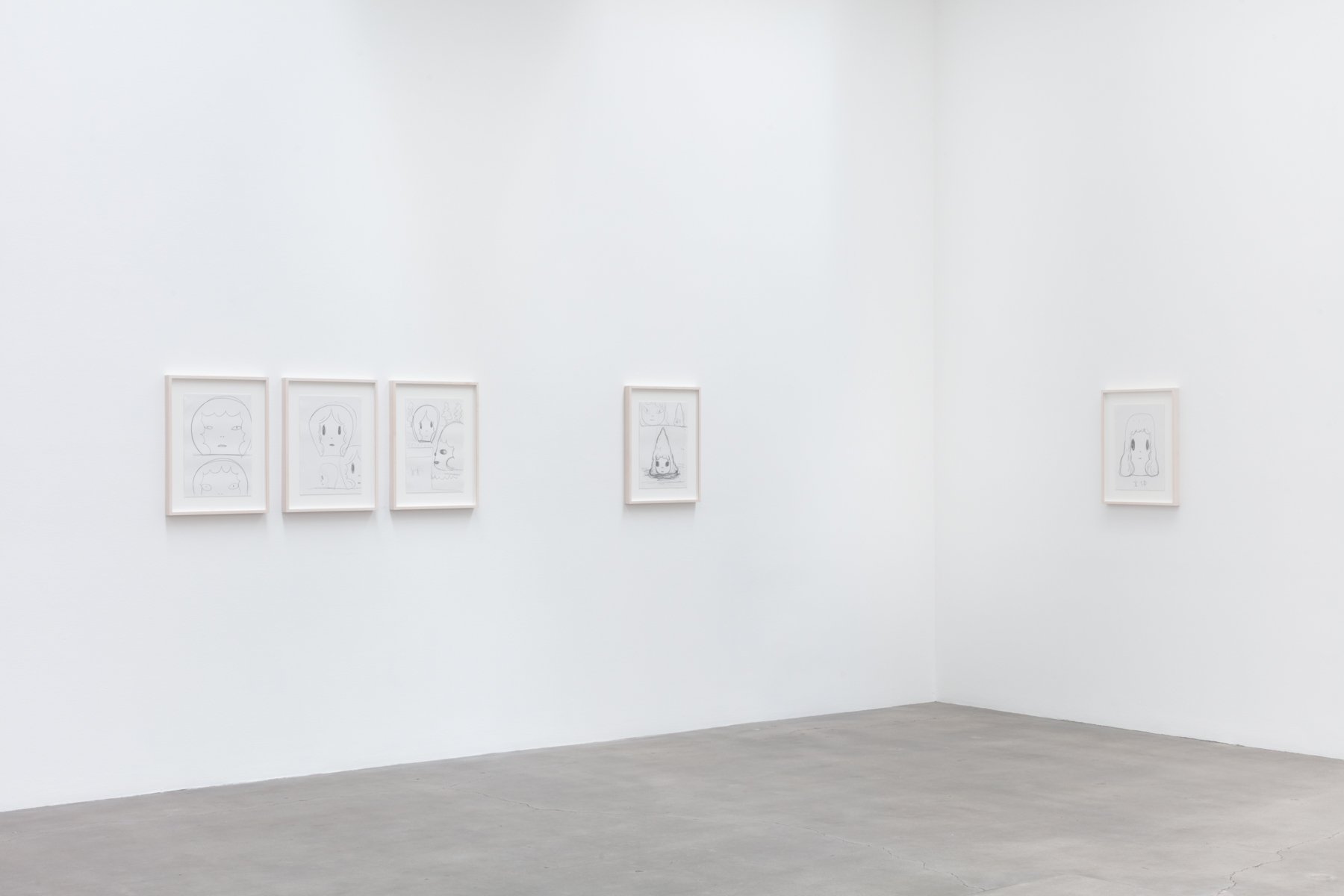
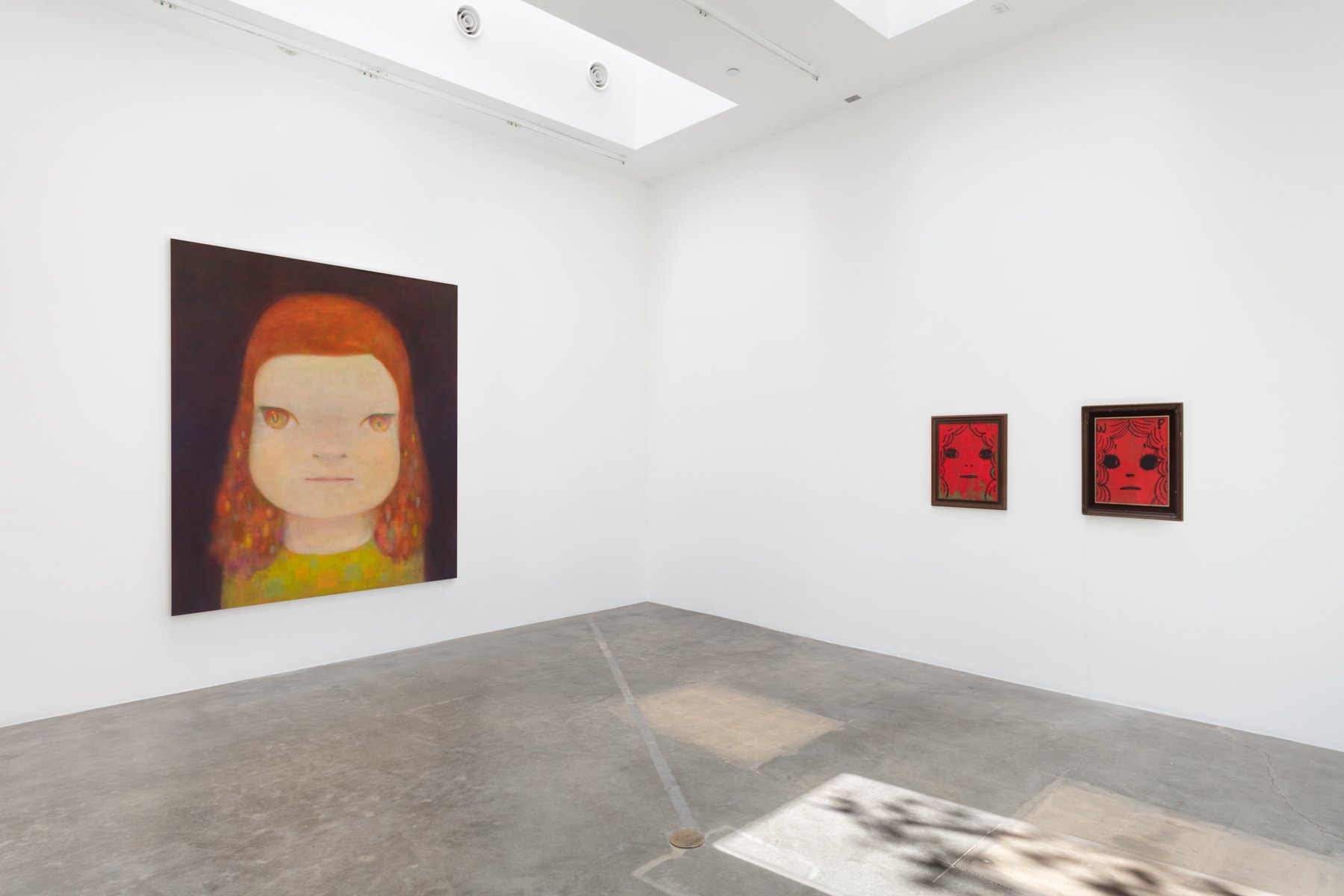
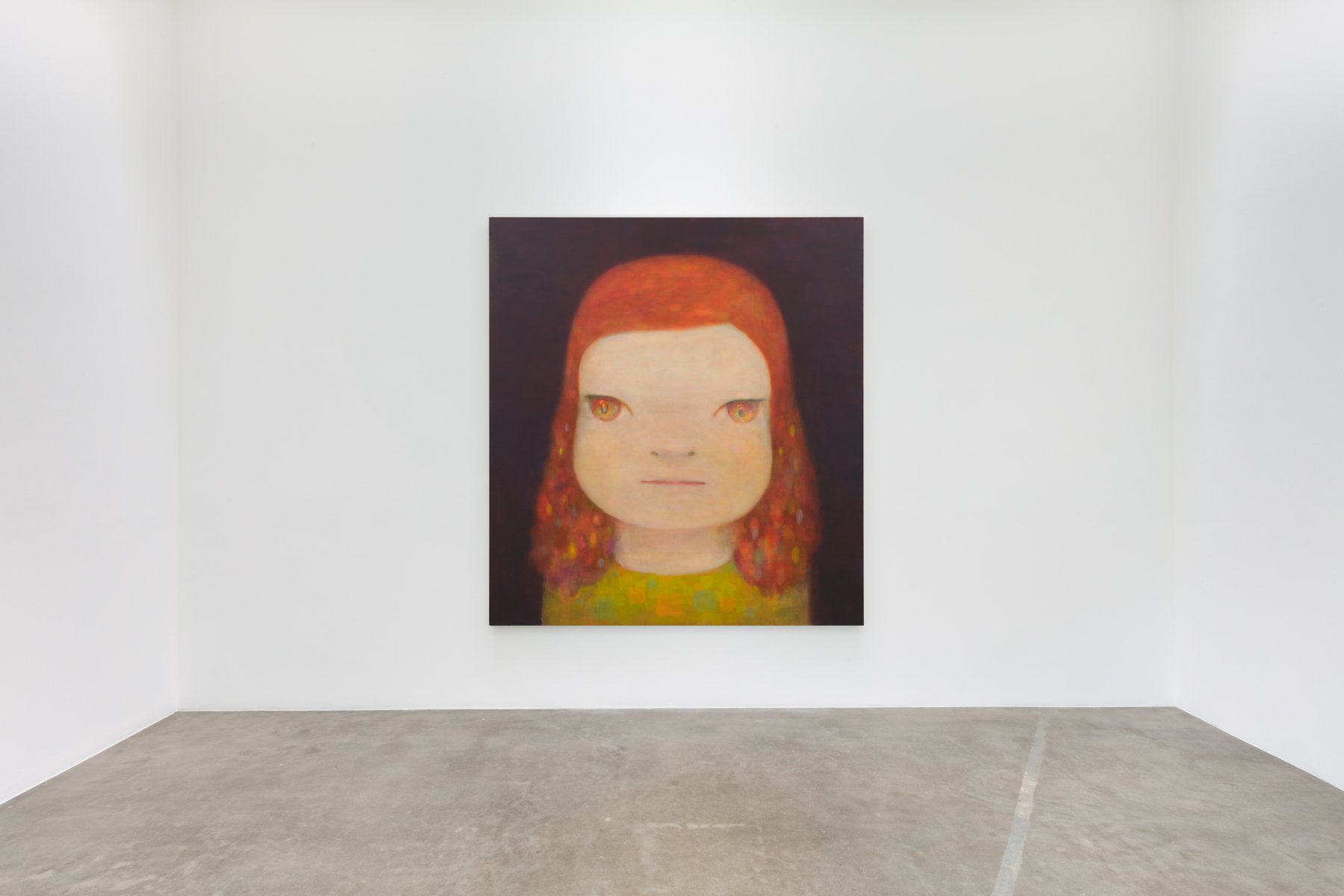
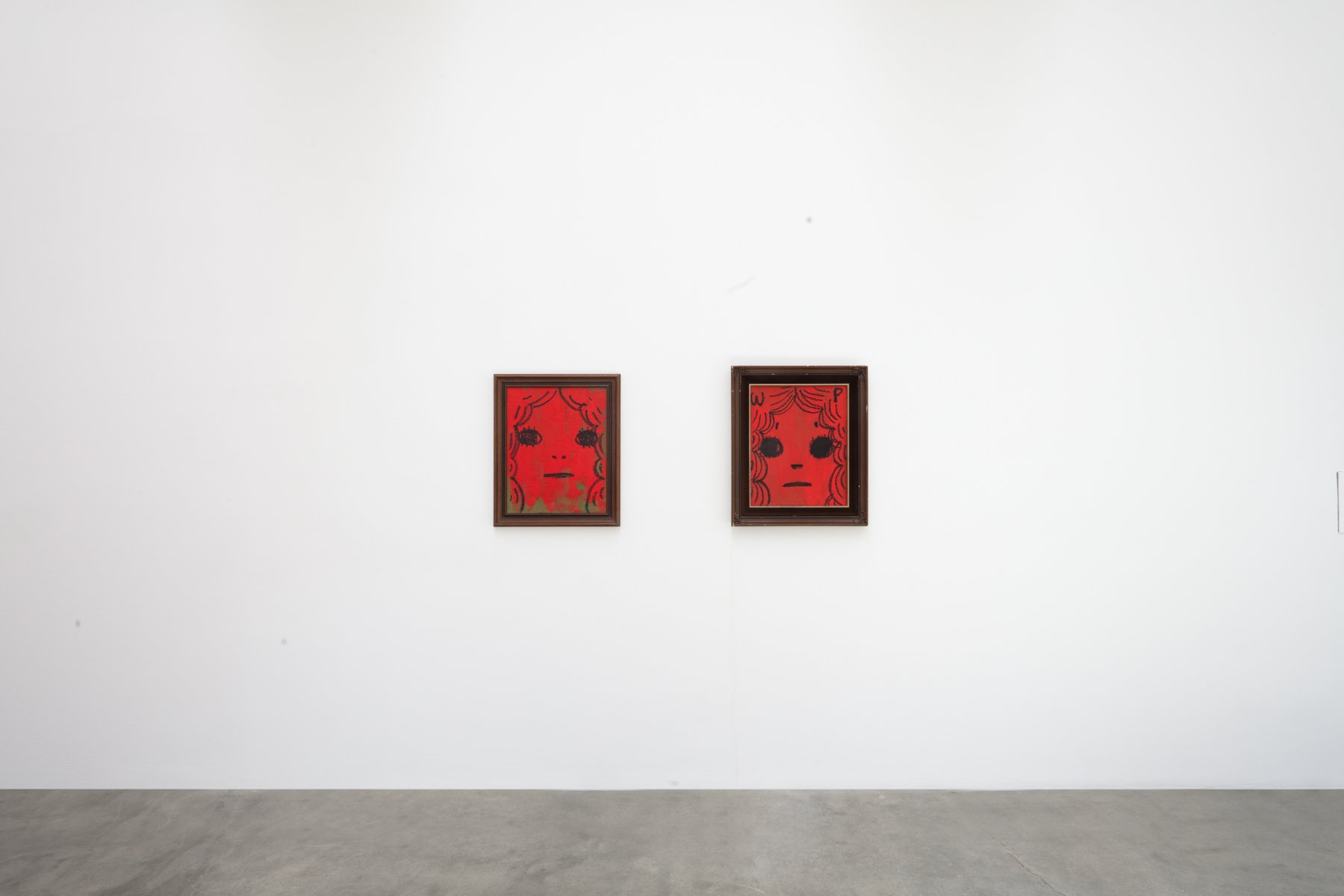
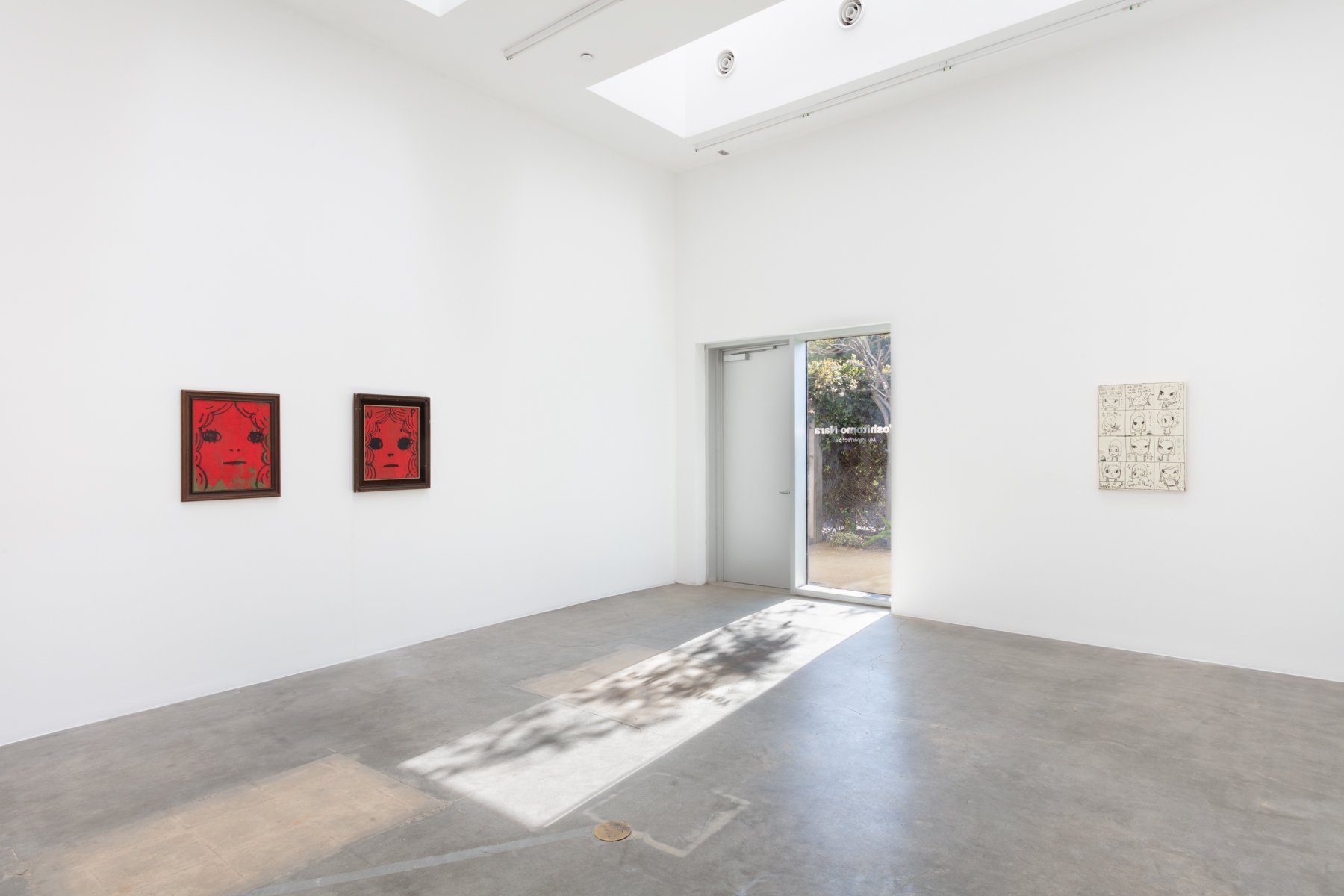
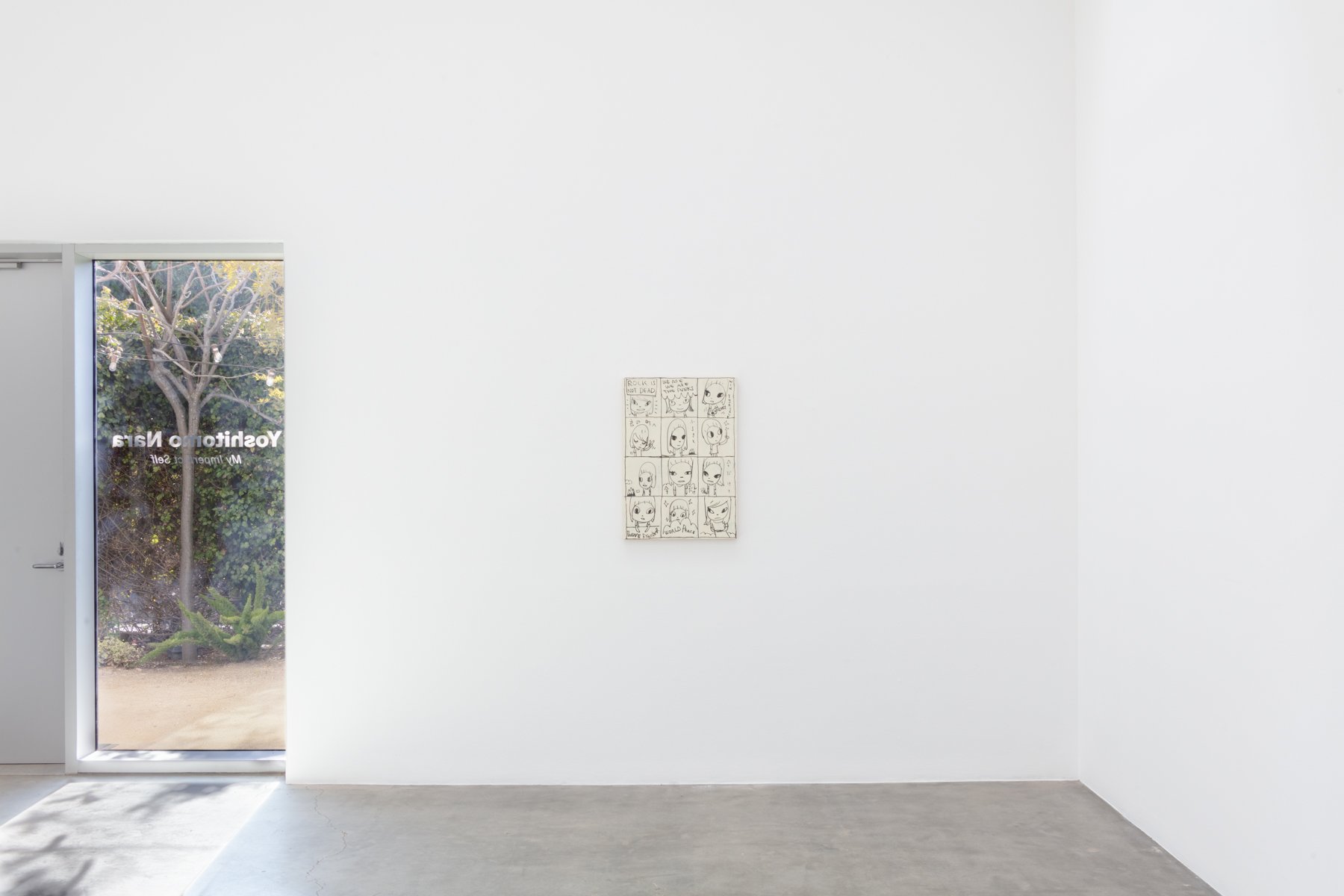
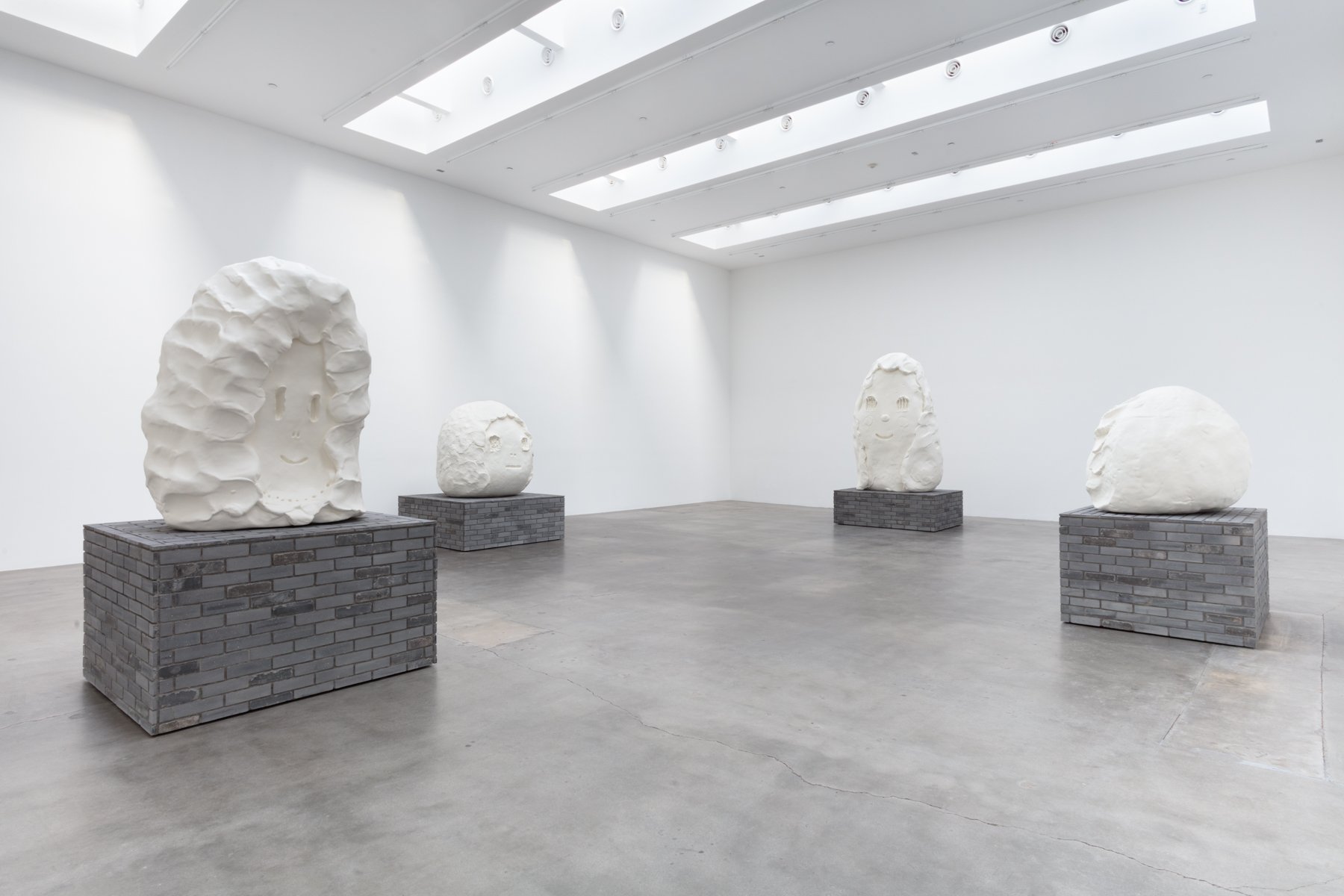
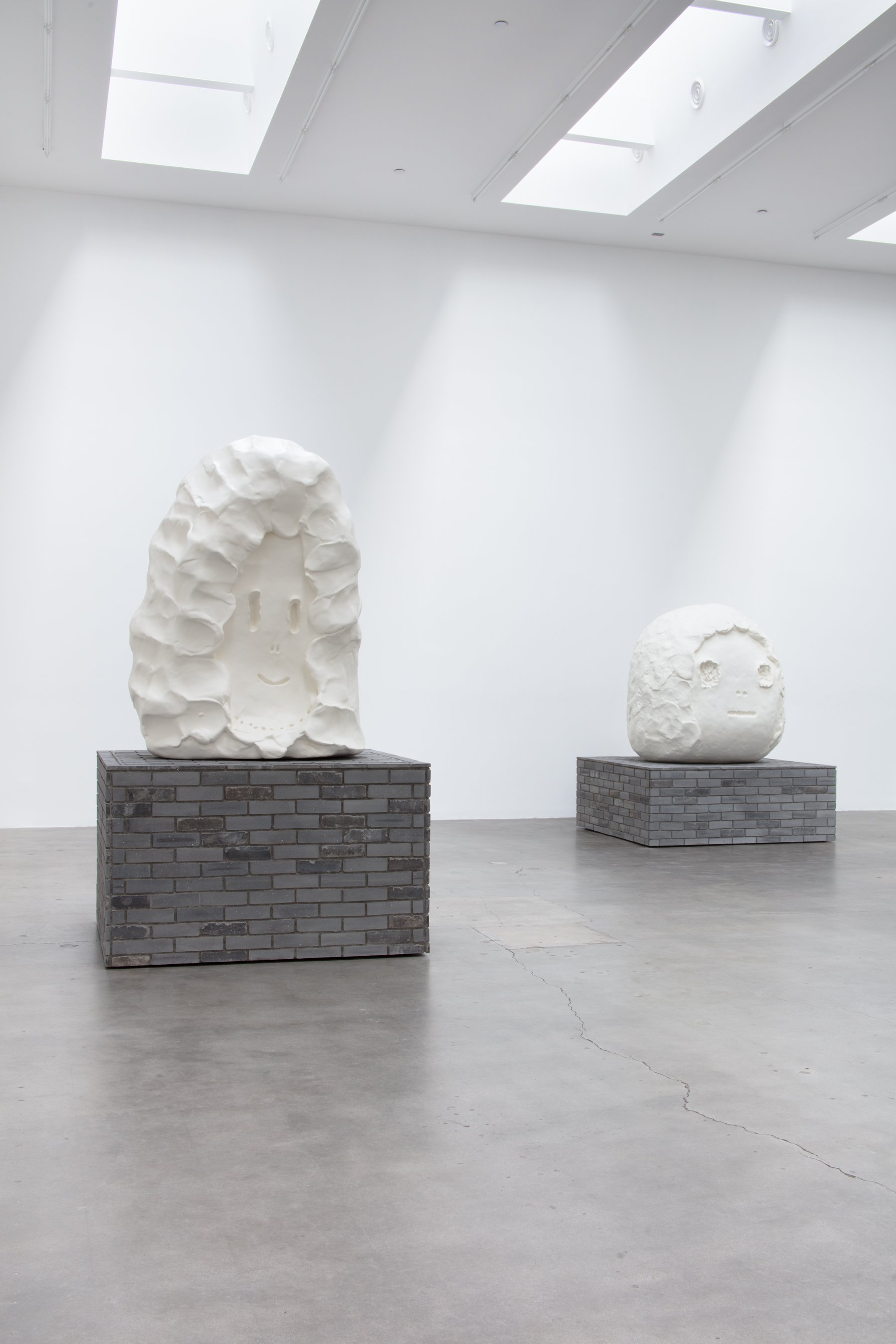

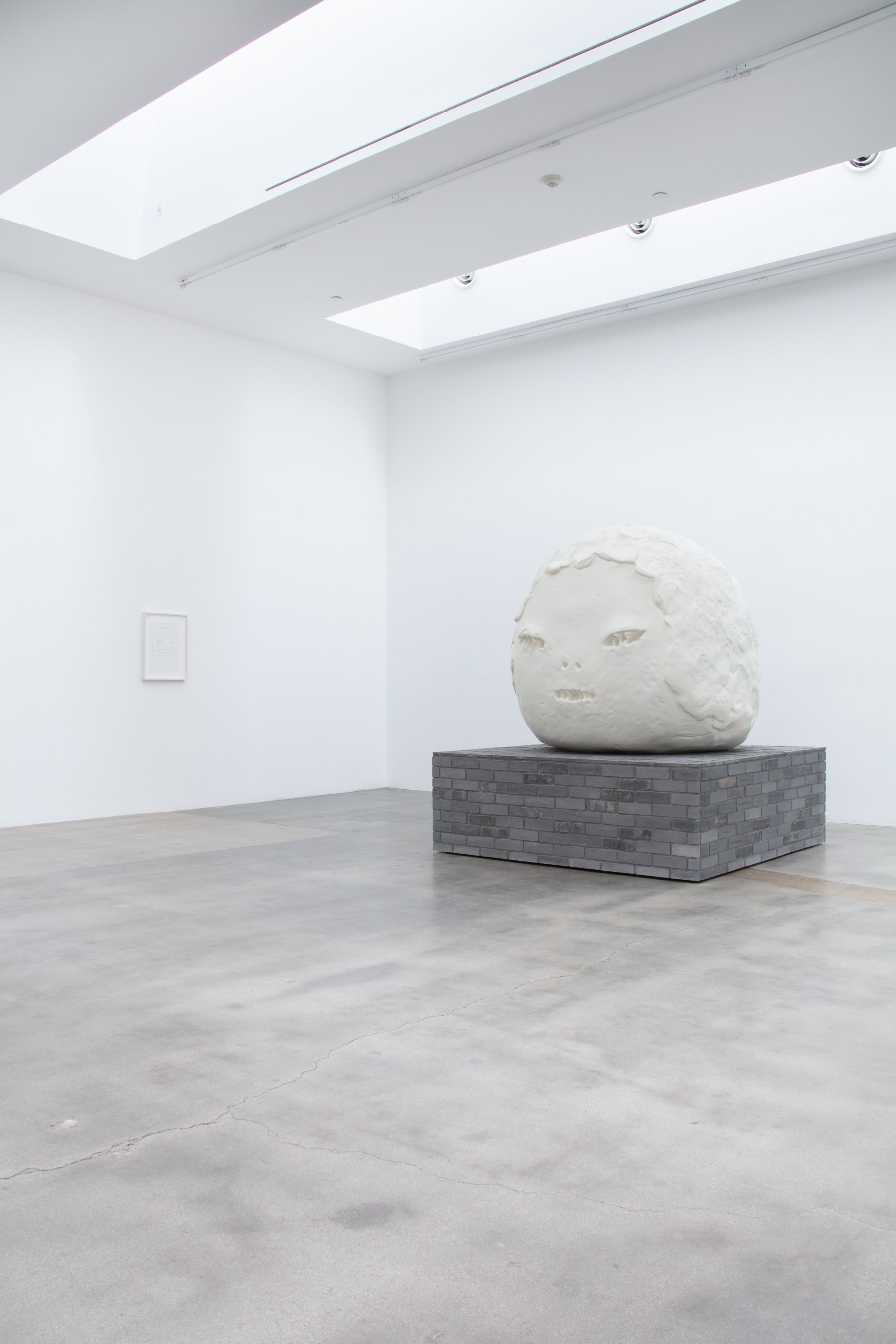
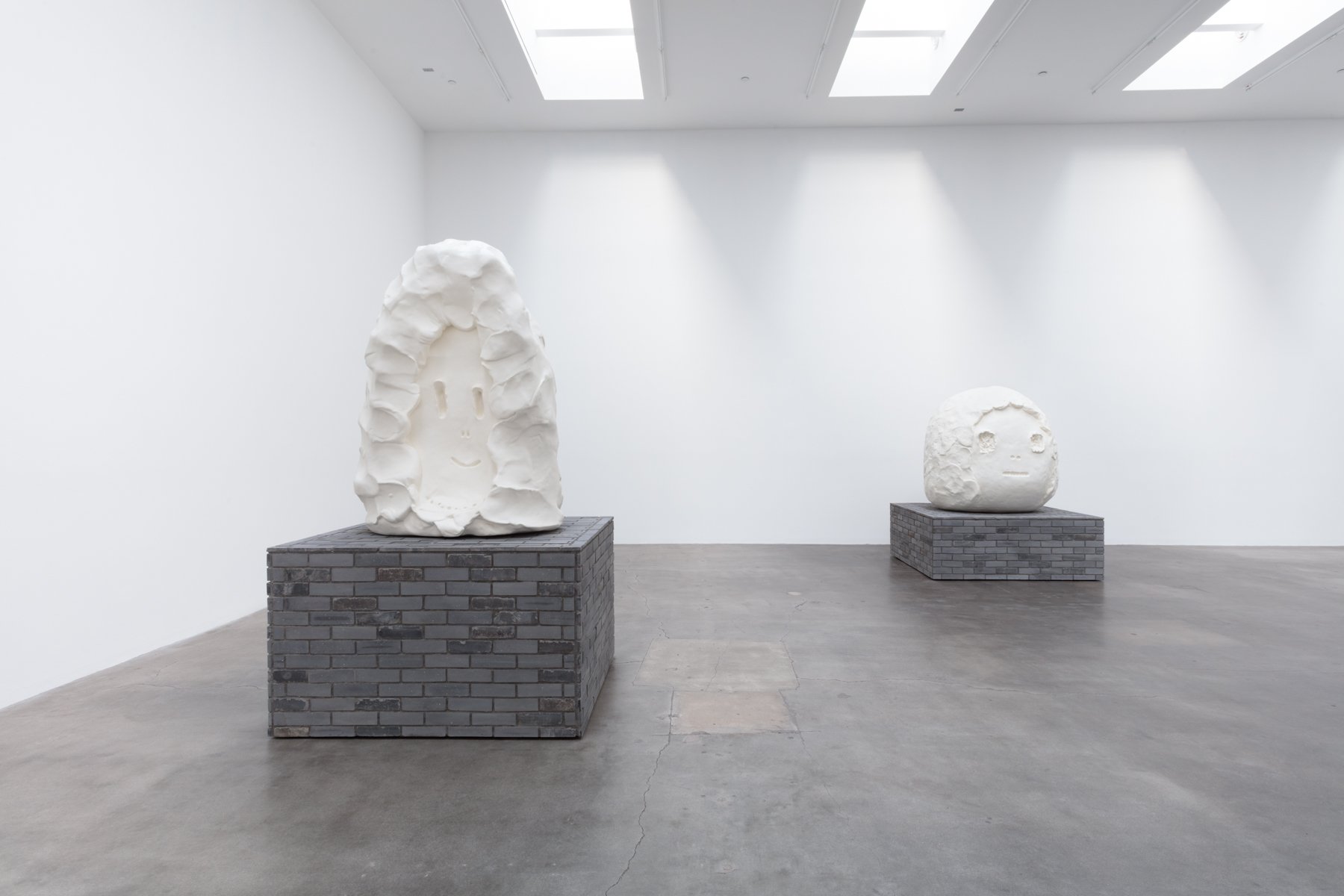
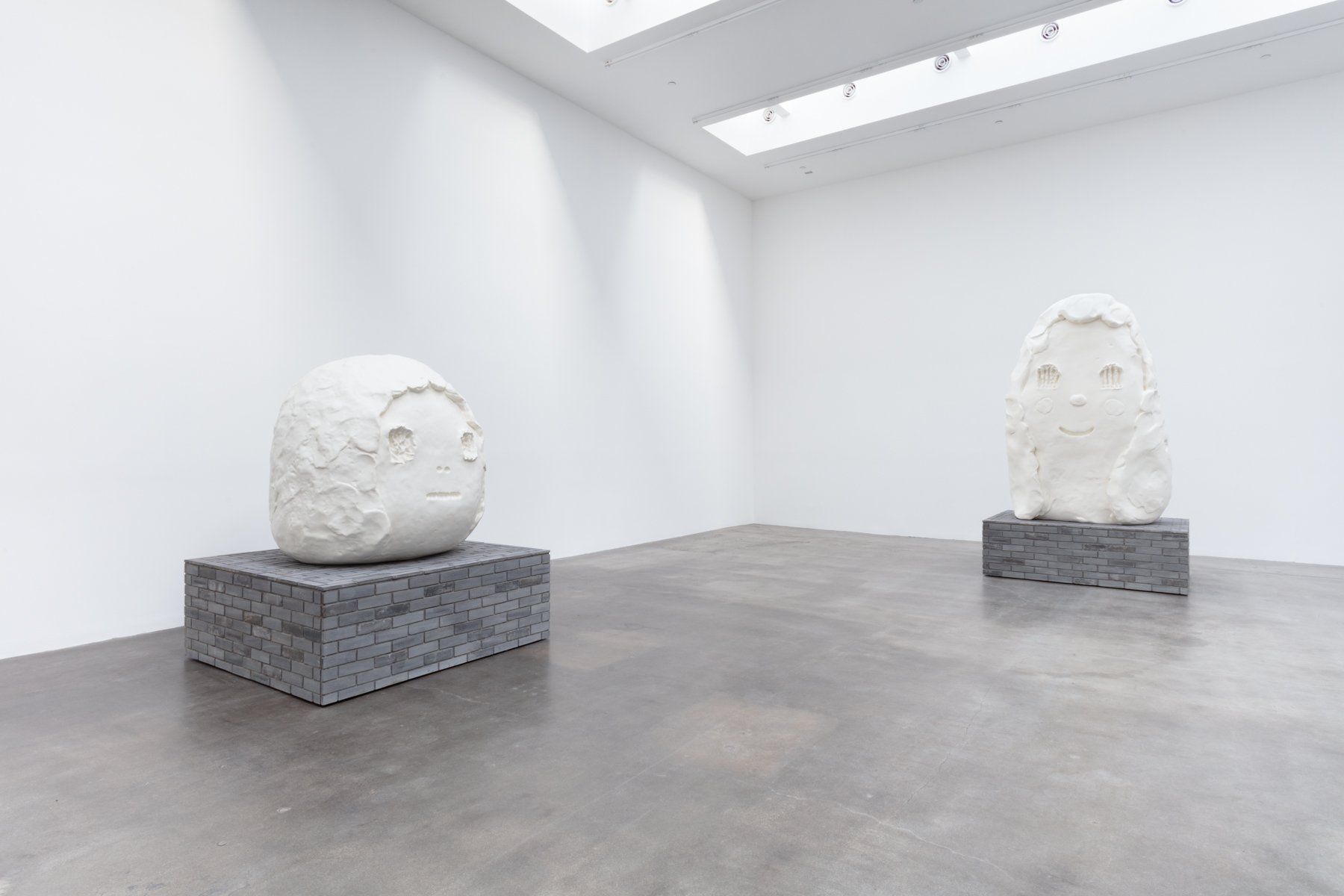
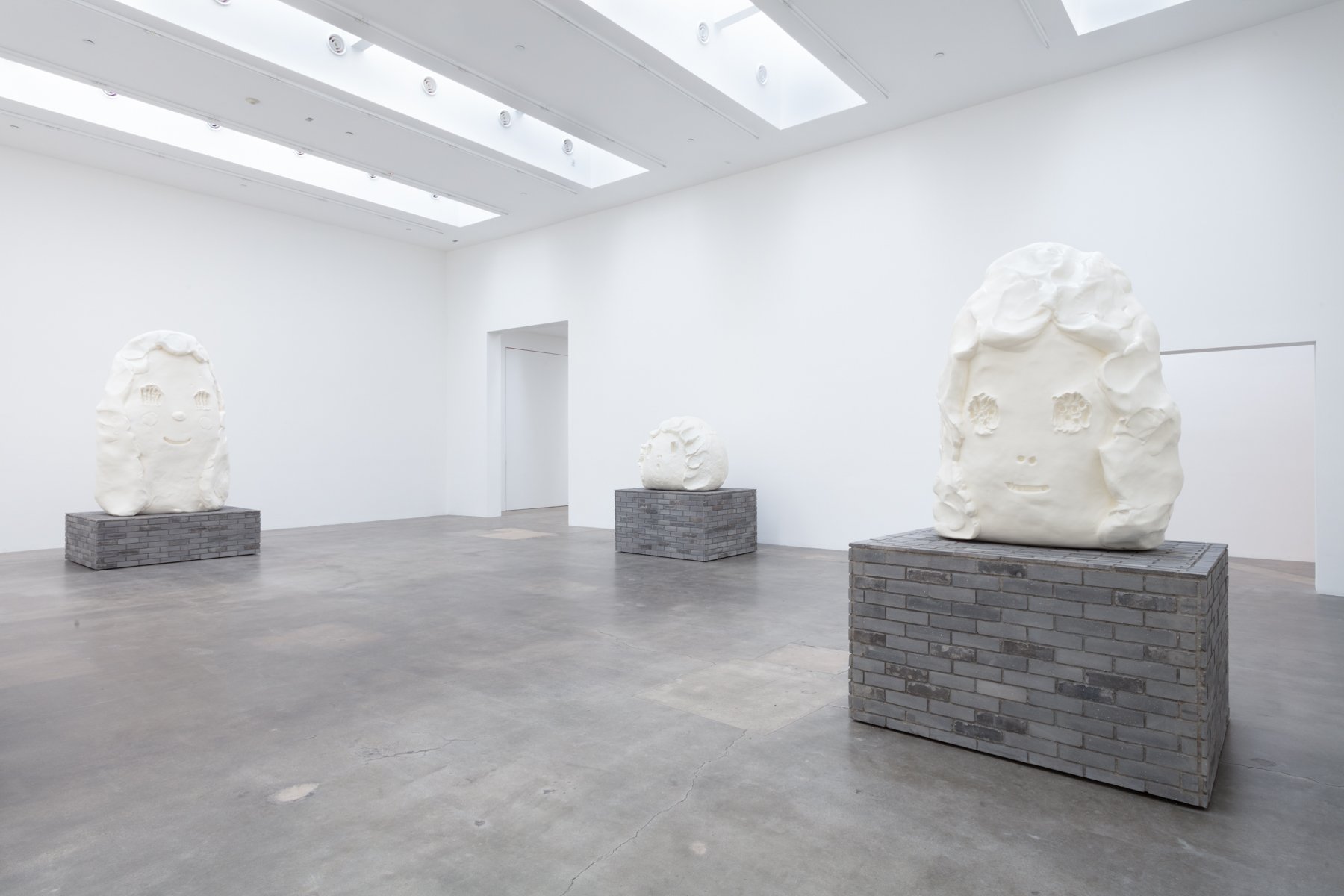
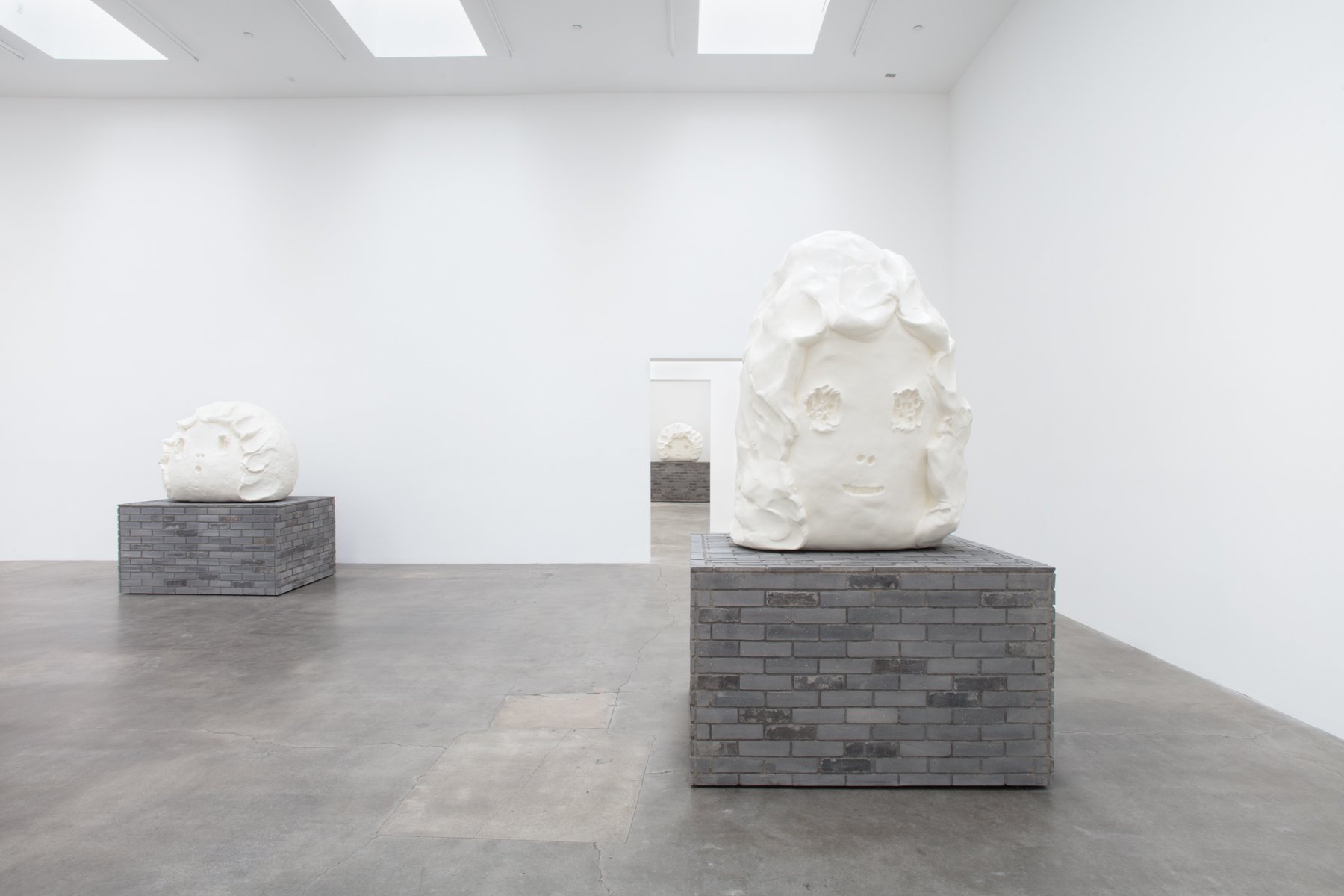
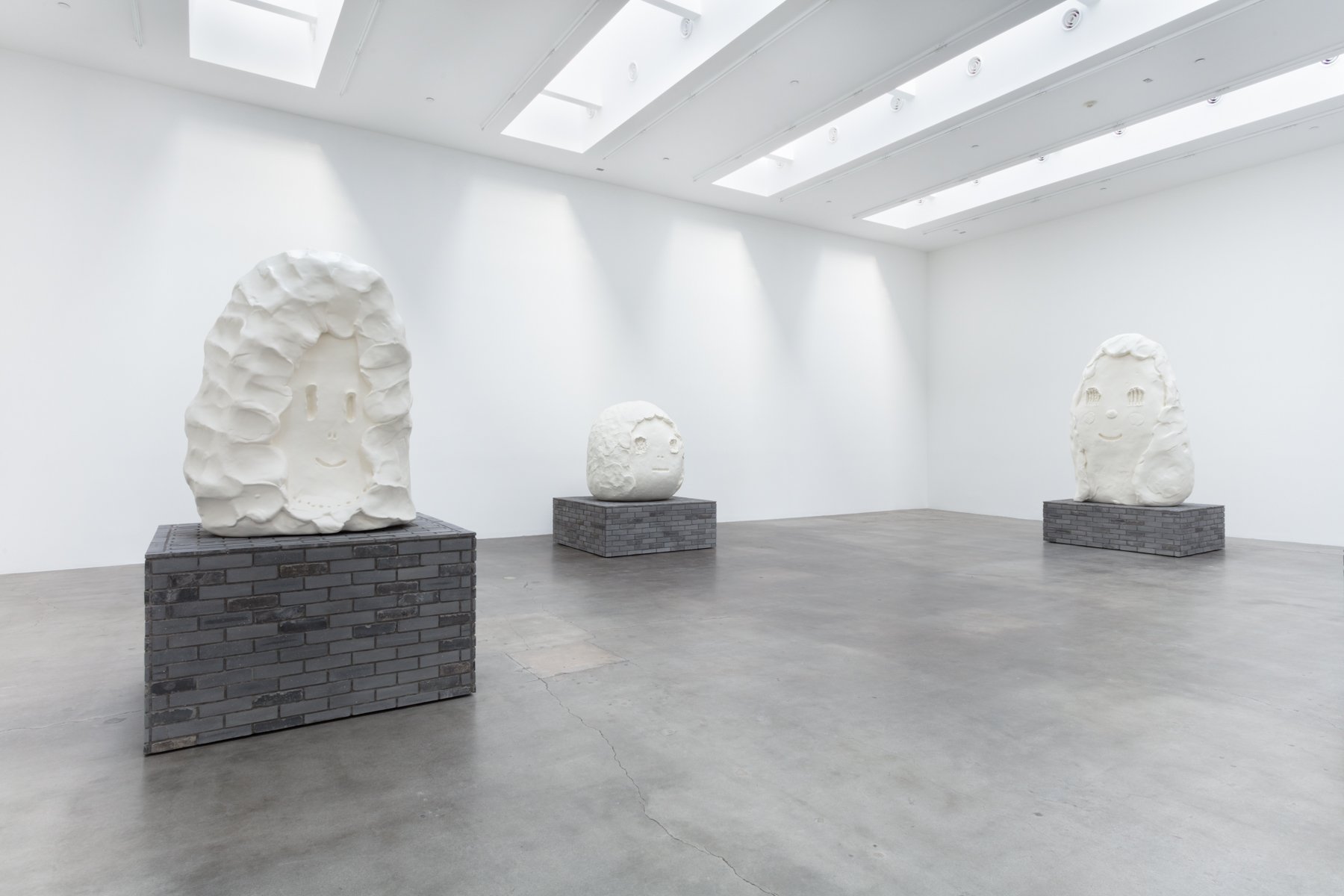
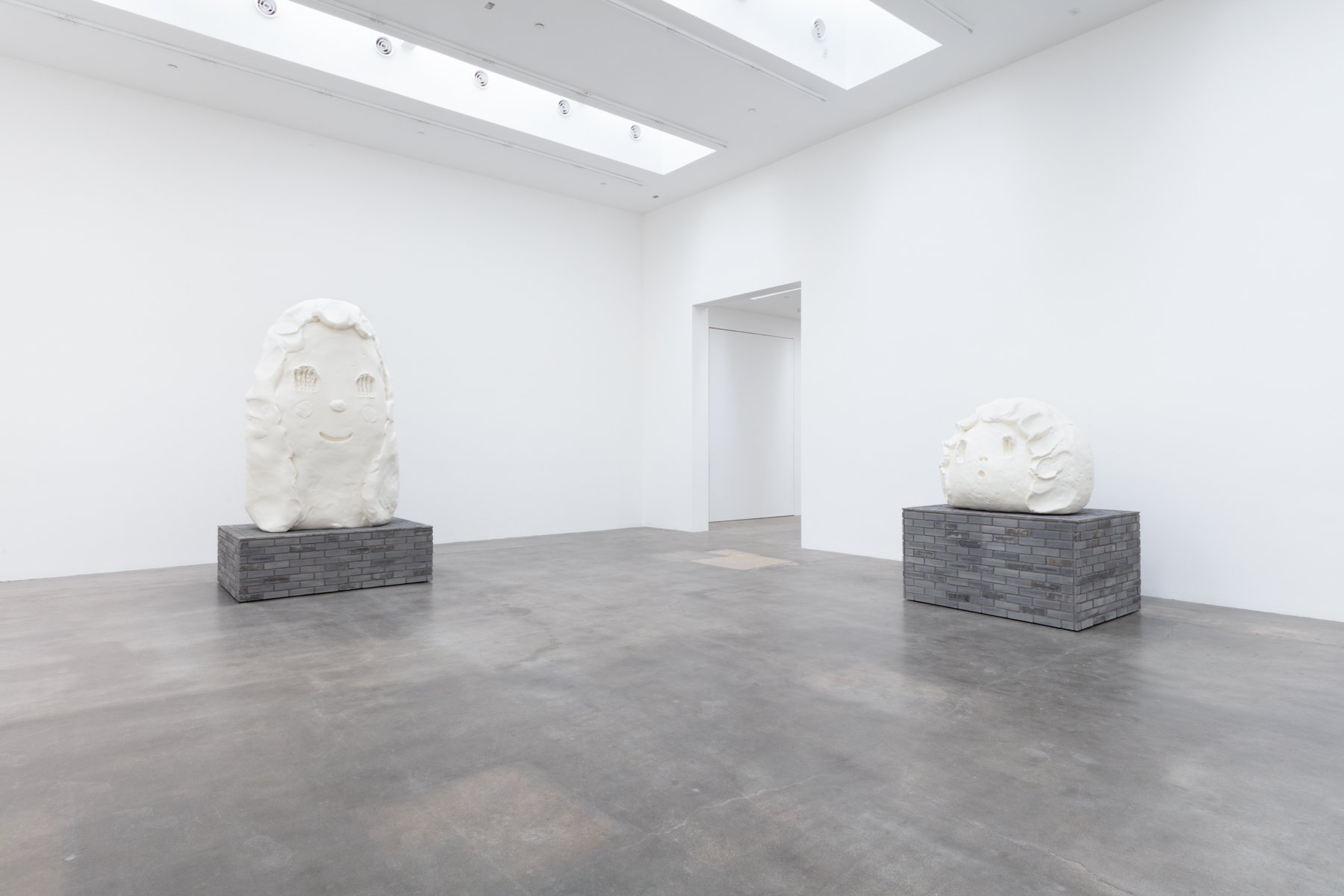
Yoshitomo Nara: My Imperfect Self Installation views, 2025 BLUM Los Angeles © Yoshitomo Nara / Courtesy of the Yoshitomo Nara Foundation and BLUM Los Angeles, Tokyo, New York Photo: Josh Schaedel
My Imperfect Self: Yoshitomo Nara
This exhibition highlights Nara’s evolving sculptural practice, featuring eleven mid-size heads exuding a quirky strangeness and dark charm that defines the artist’s work. These heads, presented for the first time, are integral to Nara’s exploration in clay, intertwining ideas and techniques developed since 2011, but also express a poignant return to his roots. The exhibition also includes paintings and drawings that resonate with the sculptures, inviting deeper reflection on his ongoing experimentation throughout a career that gained international acclaim with his seminal work, The Girl with the Knife in Her Hand (1991).
This collection of heads is full of contradictions that lean toward the peculiar and anomalous. Although cast in bronze, they were first made in clay as palm size pieces, and then enlarged and cast in bronze. In their transformed state, the malleable nature of the clay’s original form remains evident, enticing viewers to retrace Nara’s touch across its pillowy surface. Many feature a flattened face on which Nara cleaves lines, pokes holes, and scratches indentations on their matte white planar surfaces, wrapped within marshmallow globs of hair. However, these markings are not aggressive inflictions but rather embedded scarifications that lend the figures a raw, carefree quality of oddity. The overall effect is of a child, but one who we have never seen before in Nara's oeuvre. Gone are the rounded cheeks that we expect from his stylized depiction of the child motif, instead Medusa bears a shy smile with gouged eyes, and retreats into deep folds of imperfect hair; while Long Tall Peace Sister, the largest of the sculptures in the show, has flowers in her hair formed by using traditional tile molds. She smiles with delight, even with the five skeletal lines that form each eye.
The awkwardness of these heads embraces the possibilities of mischance and imperfections. They form their own gang of misfits. For Nara, this reflects a renewed engagement with the praxis of making—the dynamic interplay between hand and body, craft and object—which directs his curiosity toward possibilities of incompleteness.
Yoshitomo Nara 12 Girls on the Board, 2024 Pen on paper mounted on wood 28 3/4 x 20 3/8 x 1 1/8 inches 73 x 51.8 x 2.9 centimeters Photo: Hannah Mjølsnes © Yoshitomo Nara / Courtesy of the Yoshitomo Nara Foundation and BLUM Los Angeles, Tokyo, New York
The artist’s turn toward this more embodied practice is shaped by three significant sources. The first comes from his response to the 2011 Great East Japan Earthquake and Tsunami, which left an indelible mark on Nara, whose natal home was close to this site. Struggling to paint, he took a large block of clay and threw his entire body against the solid mass of grayness, attacking it as if he were a sumo wrestler.
It was a method of freeing himself to paint again, while also rekindling his interest in clay. The intensity of his bodily approach left imprints that, when cast in bronze, became permanent traces on his figurative heads—a contrast to the impermanence of life so clearly brought home by Fukushima’s fate.
Yoshitomo NaraSketch for the Sculpture, 2021 Colored pencil on paper 16 1/2 x 11 3/4 inches42 x 29.7 centimeters Framed Dimensions:22 1/4 x 17 3/8 x 1 1/2 inches 56.6 x 44.1 x 3.7 centimeters Photo: Hannah Mjølsnes © Yoshitomo Nara / Courtesy of the Yoshitomo Nara Foundation and BLUM Los Angeles, Tokyo, New York
A second source, from around 2016, is drawn from Nara’s time spent in Northern Japan, including Tobiu, a remote village with Ainu roots in Sapporo. It was there that he began making his palm-size heads, initially as something playful where he would mindlessly give in to the material. These small, more spontaneous, heads speak to his wandering spirit, where forested landscapes and remote settings deepen his sense of being in the world. By working at a small scale, he sculpts with a gentler touch, shifting his bodily energy to reconnect with nature, rather than fighting with the clay as he had done in 2011. Scaling up, however, affords the artist a chance to experiment even more with the paring down of the figurative into quirkier forms of existential inelegance.
A third, less direct source, is a return to Nara's earliest paintings and drawings, especially of works that may have received less attention, such as figures with elongated almond-shaped bodies or squashed circular heads. It demonstrates a practice of Nara’s where he retrieves older works that may have once been considered imperfect, finding the open potential yet to come from that which is flawed.
Yoshitomo Nara Blurry Mind, 2024 Acrylic on canvas 94 5/8 x 86 3/4 x 2 3/8 inches 240.3 x 220.3 x 6 centimeters Photo: Hannah Mjølsnes© Yoshitomo Nara / Courtesy of the Yoshitomo Nara Foundationand BLUM Los Angeles, Tokyo, New York
There is a strong connectivity across Nara’s works—evident when considering the paintings and drawings as a spectrum from the meditative to the spontaneous, exploring the potential of the unformed and of returns. The iconic figure in his large painting Blurry Mind draws viewers in to see the many layers of radiant colors that dance and glimmer across the canvas. This painting is a testament to Nara’s deep interest in the painterly effects of color, and its ability to hold viewers’ attention. This work is, however, also an iconic image of the “Nara-child, ” one which the artist is seeking to deconstruct with these eleven sculptures, to find a new form that can push him into different directions. His process of taking apart his own pictorial language or returning to earlier, perhaps forgotten, drawings and paintings as inspiration also underscores the theme of this show.
In the past decade, while continuing to exhibit in major museums worldwide, Nara has embraced a slower, more reflective approach to his work. He enjoys the tactile nature of his materials and the connective charge between hand and mind—elements that are evident in his latest paintings and sculptures. Notably, Nara aligns these methods with his own way of being in the world—where attentiveness to small, seemingly imperfect acts can yield a deep sense of freedom.
– Yeewan Koon
Yoshitomo Nara (b. 1959, Hirosaki, Japan) graduated with an MFA from the Aichi Prefectural University of Fine Arts and Music, Nagakute, Japan, in 1987, he completed his studies at the Kunstakademie, Dusseldorf, Germany from 1988 to 1993. Nara began his career during the decade he spent in Cologne, and from the mid-1990s, he exhibited widely in Europe, the United States, Japan, and all over Asia. His return to Japan in 2000 coincided with a surge of global interest in Japanese pop culture, particularly in the United States. While he is primarily a painter, his practice encompasses drawing; sculptures made of wood, FRP, ceramic, and bronze; installations that incorporate scrap materials; and photographs that document everyday landscapes and the encounters he has during his travels. Influenced by music, literature, and his own life, Nara's works transcend cultural and linguistic barriers, touching people globally.
Nara’s numerous solo exhibitions include Yoshitomo Nara, Guggenheim Museum Bilbao, Spain; traveling to Frieder Burda Museum, Baden-Baden, Germany; Hayward Gallery-Southbank Centre, London, UK (2024–25); Yoshitomo Nara: The Beginning Place, Aomori Museum of Art, Aomori, Japan (2023); Yoshitomo Nara: All My Little Words, Albertina Modern, Vienna, Austria (2023); Yoshitomo Nara, Los Angeles County Museum of Art, Los Angeles, CA; traveled to Yuz Museum, Shanghai, China; Kunsthal Rotterdam, Netherlands (2021–23); Yoshitomo Nara for better or worse, Toyota Municipal Museum of Art, Aichi, Japan (2017); Life is Only One: Yoshitomo Nara, Asia Society Hong Kong Center, Hong Kong, China (2015); NARA Yoshitomo: a bit like you and me…, Yokohama Museum of Art, Japan; traveled to Aomori Museum of Art, Japan; Contemporary Art Museum, Kumamoto, Japan (2012–13); Yoshitomo Nara: The Little Little House in The Blue Wood, Towada Art Center, Aomori, Japan (2012); Yoshitomo Nara: Nobody’s Fool, Asia Society Museum, New York, NY (2010); Yoshitomo Nara + graf, BALTIC Centre for Contemporary Art, Newcastle, UK (2008); Yoshitomo Nara + graf: A to Z, Yoshii Brick Brew House, Aomori, Japan (2006); Yoshitomo Nara: Moonlight Serenade, 21st Century Museum of Contemporary Art, Kanazawa, Ishikawa, Japan (2006); Yoshitomo Nara— From the Depth of My Drawer, Hara Museum of Art, Tokyo, Japan; traveled to Kanaz Forest of Creation, Fukui, Japan; Yonago City Museum of Art, Tottori, Japan; Yoshii Brick Brewhouse, Hirosaki, Aomori, Japan; Rodin Gallery, Seoul, South Korea (2004–05); Yoshitomo Nara: Nothing Ever Happens, Museum of Contemporary Art Cleveland, OH; traveled to Institute of Contemporary Art, University of Pennsylvania, PA; San Jose Museum of Art, San Jose, CA; Contemporary Art Museum St. Louis, MI; The Contemporary Museum, Honolulu, HI (2003–05); I DON’T MIND, IF YOU FORGET ME, Yokohama Museum of Art, Yokohama Japan; traveled to Hiroshima Museum of Contemporary Art, Hiroshima, Japan; Ashiya City Museum of Art and History, Ashiya, Japan; Asahikawa Prefectural Museum of Art, Hokkaido, Japan; Aomori Museum of Art, Aomori, Japan; Hirosaki Yoshii Brick Brewhouse, Hirosaki, Japan (2001–02); Walk On: Works by Yoshitomo Nara, Museum of Contemporary Art Chicago, IL (2000); and Yoshitomo Nara: Lullaby Supermarket, Santa Monica Museum of Art, Santa Monica, CA (2000), among many more.
About BLUM
BLUM represents more than sixty artists and estates from seventeen countries worldwide, nurturing a diverse roster of artists at all stages of their practices with a range of global perspectives. Originally opened as Blum & Poe in Santa Monica in 1994, the gallery has been a pioneer in its early commitment to Los Angeles as an international arts capital.
The gallery has been acclaimed for its groundbreaking work in championing international artists of postwar and contemporary movements, such as CoBrA, Dansaekhwa, Mono-ha, and Superflat, and for organizing museum-caliber solo presentations and historical survey exhibitions across its spaces in Los Angeles, Tokyo, and New York. Often partnering with celebrated curators and scholars such as Cecilia Alemani, Alison M. Gingeras, Sofia Gotti, Joan Kee, and Mika Yoshitake, the gallery has produced large- scale exhibitions focusing on the Japanese Mono-ha school (2012); the Korean Dansaekhwa monochrome painters (2014); the European postwar movement CoBrA (2015); Japanese art of the 1980s and 1990s (2019); a rereading of Brazilian Modernism (2019); a revisionist take on the 1959 MoMA exhibition, New Images of Man (2020); and a survey of portraiture through a democratic and humanist lens (2023); among others.
BLUM’s wide-reaching program includes exhibitions, lectures, performance series, screenings, video series, and an annual art book fair at its base in Los Angeles. BLUM Books, the gallery’s publishing division, democratically circulates its program through original scholarship and accessible media ranging from academic monographs, audio series, magazines, to artists’ books.
Across the three global locations, BLUM prioritizes environmental and community stewardship in all operations. In 2015, it was certified as an Arts:Earth Partnership (AEP) green art gallery in Los Angeles and consequently became one of the first green certified galleries in the United States. The gallery is also a member of the Gallery Climate Coalition, which works to facilitate a more sustainable commercial art world and reduce the industry’s collective carbon footprint. BLUM is committed to fostering inclusive and equitable communities both in its physical and online spaces and believes that everybody should have equal access to creating and engaging with contemporary art.
At the BLUM Los Angeles location, the exhibition opened on January 18 and will be on view until March 22, 2025.
For more information about this exhibition and others please visit Blum’s website here. The gallery can also be found on Instagram.
TAVARES STRACHAN: Starless Midnight
Tavares Strachan The Birth of Exuma (Eagle Talon), 2024 (Partial Installation view) Ceramic, rice field installation Ceramic: 72 7/8 x 26 ¾ x 15 in. (185 x 68 x 38 cm) Rice field: 533 ½ x 189 in. (1355.1 x 480.1 cm) Courtesy of the artist and Marian Goodman Gallery Photo credit: Tom Powel Imaging
Marian Goodman Gallery New York is pleased to announce a solo exhibition of Tavares Strachan titled Starless Midnight. This immersive presentation will feature several new and existing bodies of work across seven diverse and site-specific environments. Through an interconnected array of works comprising painting, sound, robotics, neon, marble, and hair, Starless Midnight is a testament to Strachan’s multifaceted artistic practice, structured by a visual language of storytelling. Strachan’s boldly inventive and ambitious work summons historical and cultural references, expressing the affinities, contradictions, and dependencies within oft-untold stories of historically marginalized individuals, places, and events, and finding the interstices between the disciplines of art, science, history, exploration.
Tavares Strachan A Map of the Crown (Fulani Red), 2025 Marble, flocked hair 24 3/4 x 16 1/8 x 13 3/8 in. (63 x 41 x 34 cm) Courtesy of the artist and Marian Goodman Gallery Photo credit: Jonty Wilde
The first floor opens on to an immersive landscape with a near life-size ceramic of the musician and artist Exuma commanding the space from the center of a ‘meadow’ of rice grass. Viewed from above, the installation takes the shape of the Ghanaian Adinkra symbol Okodee Mmowere, which directly translates to “eagle’s talons,” metaphysically denoting bravery. Able to transgress the limitations of a phonetic writing system in its expansive interpretations, Okodee Mmowere pulls rice as the wefting thread of universal culinary staples, spanning across civilizations, space, and time. Adjacent in the same gallery, and an anchoring point of the exhibition, is a quote by James Baldwin that begins, “You could be that person…” Transcribed in Strachan’s neon calligraphy, the words flash in time with a dissonant sound work. Throughout this sensory parcours, Strachan assembles fragmented components of cultural and historical significance into rich visual, olfactory, and sonic allegories. The themes within this bricolage landscape call upon a poetics of being, to build on new relational capacities between individuals and the world.
Tavares Strachan Stubble Field for Anubis, 2025 Handmade drum, fiber, electrical components Diameter: 10 1/2 in. (26.7 cm) Height: 14 3/4 in. (37.5 cm) Drum plank: 108 x 9 x 2 1/2 in. (274.3 x 22.9 x 6.4 cm) Courtesy of the artist and Marian Goodman Gallery Photo credit: Tom Powel Imaging
In the second-floor gallery, Strachan introduces a new body of paintings consisting of hand-tiled and painted word searches that speak to the artist’s focus on visibility and invisibility. Overwhelmingly detailed, meticulously painted bits of paper and fiber absorb the viewer into labyrinthine inquiries of storytelling, star gazing, and exploration. While serious in their content, they simultaneously evoke a playful nostalgia of CRTs and television static. A manifestation of electromagnetic noise, the English language is reduced to tactile fragments, the letters nearly feeling debris-like in their fragile organization.

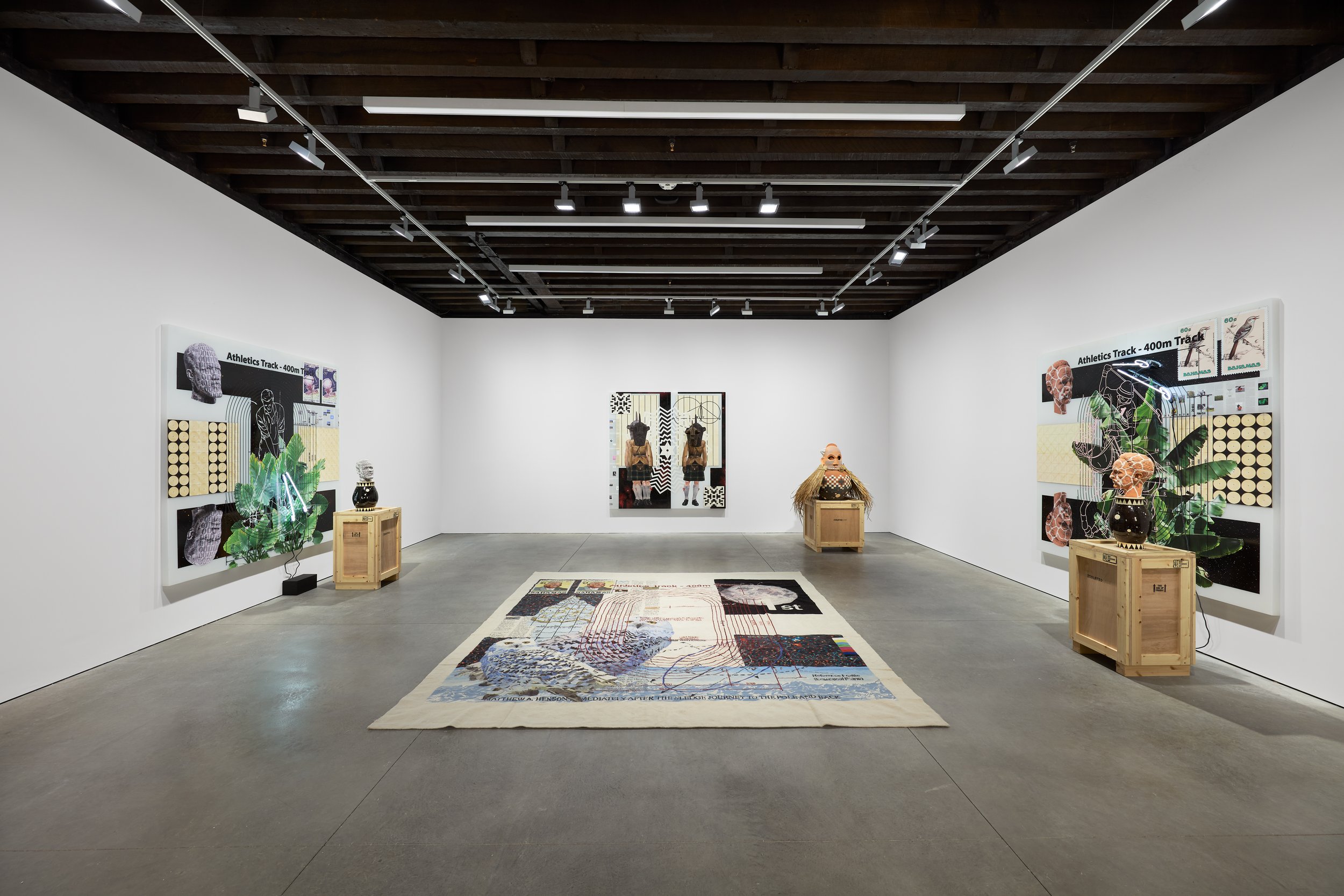
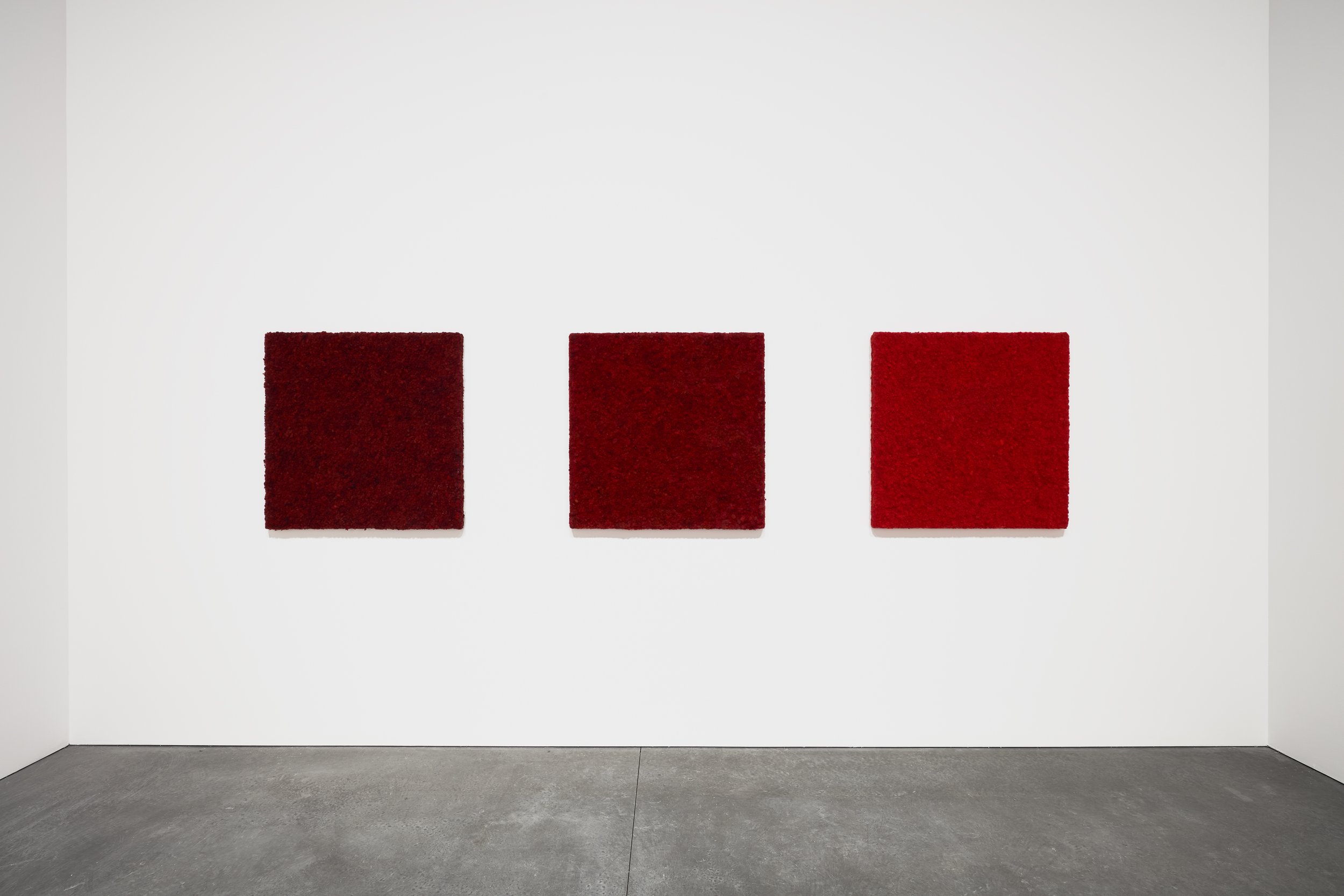

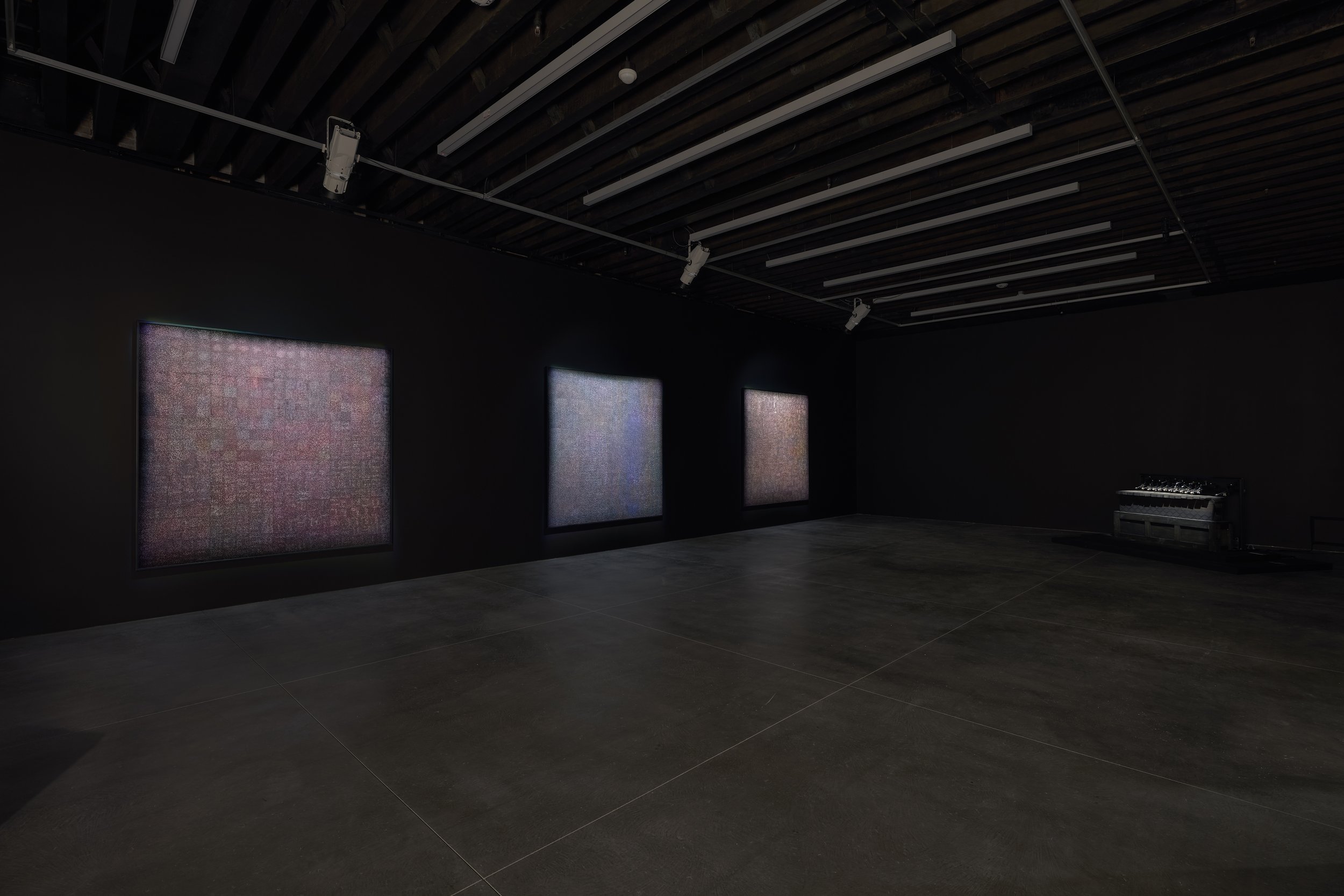
Installation view: Tavares Strachan “Starless Midnight,” Marian Goodman Gallery, New York, 2025 Courtesy of the artist and Marian Goodman Gallery Photo credit: Tom Powel Imaging
Each work in this exhibition features infinite references to years of research from Strachan’s ongoing project The Encyclopedia of Invisibility—an encyclopedia of his own construction to house lost stories. Offering a multitude of interpretations on subjects from galactic clusters to the fragility of digital data in the information age, Strachan imaginatively maps the unknown and the process by which we attempt to conquer knowledge.
Tavares Strachan Self Portrait (King Kuba), 2023 Ceramic, thatch cape 35 x 48 1/2 x 40 in. (88.9 x 123.2 x 101.6 cm) Courtesy of the artist and Marian Goodman Gallery Photo credit: Tom Powel Imaging
Strachan was born in 1979 in Nassau, Bahamas, and currently lives and works between New York City and Nassau. He received a BFA in Glass from the Rhode Island School of Design in 2003 and an MFA in Sculpture from Yale University in 2006. He draws on both the resources and community of his birthplace, dividing his time between his studio in New York and Nassau, where he has established an art studio and scientific research platform B.A.S.E.C. (Bahamas Aerospace and Sea Exploration Center) and OKU, a not-for-profit community project encompassing an artist residency and exhibition spaces, a scholarship scheme, and after-school creative programs.
Most recently Strachan’s work has been featured in the solo exhibitions Between Me and You, at the University of Texas, Austin, and Tavares Strachan: There Is Light Somewhere, at the Hayward Gallery, London (both 2024). Other solo exhibitions include You Belong Here, Prospect 3. Biennial, New Orleans (2014); The Immeasurable Daydream, Biennale de Lyon, Lyon (2013) ; Polar Eclipse, The Bahamas National Pavilion 55th Venice Biennale, Venice; Seen/Unseen, Undisclosed Exhibition, New York; Orthostatic Tolerance: It Might Not Be Such a Bad Idea if I Never Went Home Again, MIT List Visual Arts Center, Cambridge; among others.
Upcoming exhibitions include a solo show at Kunsthalle Mannheim this spring, opening in April 2025, and a major presentation co-organized by the Los Angeles County Museum of Art (LACMA) and Columbus Museum of Art (CMA). The exhibition will premiere at LACMA this fall and travel to CMA in spring 2026.
He has been the recipient of numerous awards including the John D. and Catherine T. MacArthur Foundation fellowship (2022), 2019-20 Artist in Residence at the Getty Research Institute, 2018 Frontier Art Prize, and the Allen Institute’s inaugural artist-in-residence in 2018, 2014 LACMA Art + Technology Lab Artist Grant, 2008 Tiffany Foundation Grant, 2007 Grand Arts Residency Fellowship, and 2006 Alice B. Kimball Fellowship.
The exhibition opened on 7 March and will be on view until 19 April 2025 at the New York location at 385 Broadway, New York, NY 10013. There was an opening reception held on Friday, 7 March, from 6 to 8 pm. For more information about the exhibit, please visit the Marian Goodman Gallery’s site. The gallery can be found on Instagram and Artsy, too.
Miquel Barceló | Flores, peces, toros
Installation Views: Miquel Barceló | Flores, peces, toros, All images: © Courtesy of the artist and Galería Elvira González
“Painting is linked to childhood. It is probably true that we learn what is important before we are ten years old. I have the impression that, in painting, at the age of ten I had already done almost everything I have done and continue to redo. In Mallorca I learned the names of trees, fish, birds. learned to whistle, throw stones, fish, kill and gut hares and lambs, and cook them. I usually paint what I kill or what I eat”.
Miquel Barceló, Tropicalismo, 2024, 235 x 235 cm, técnica mixta sobre lienzo
Galería Elvira González is pleased to announce the fourth exhibition of Miquel Barceló in the gallery which opened on Wednesday, January 29. Flores, peces, toros will feature paintings, ceramics and watercolors with marine topics, bullfighting themes, still life and nature.
Miquel Barceló, Vanitas au melon, 2024, 160 x 240 x 4 cm, técnica mixta sobre lien
The first room revolves around bullfighting. The art of bullfighting is a constant subject for Barceló, who painted his first bullfight in 1980; since then it has been a theme he has obsessively used and worked with in detail. From a bird's eye view or as a spectator in the bullring, Barceló's bullfight paintings capture passes and moments that only those who know the universe around bullfighting in depth can describe. Or paint. Continuing with the exhibition, ceramics with various types of masks and fishes will be on display; masks that may look like the portrait of the artist himself. The sea is another theme widely depicted in his work. “My day-to-day life is summed up in painting, swimming and reading” the artist says. Interested in the organic life and the passage of time, Barceló considers ceramics an extension of his painting.













Installation Views: Miquel Barceló | Flores, peces, toros, All images: © Courtesy of the artist and Galería Elvira González
The third room in the gallery displays still life paintings, flowers, marine and under the water fauna as well as works on paper and ceramics of all kinds, where once again, the toros, the marine theme, animals, fauna and flora are intermingled. The artist acts like the prehistoric cave painter who paints out of an imperious need to transmit. In the studio, Barceló cannot refrain from painting what he sees and captures in his daily life and transforms it into art reflecting what surrounds him and the universe in which he is immersed.
Miquel Barceló (Felanitx, 1956) first exhibited in the mid-1970s and quickly gained international recognition. He started his art studies in Barcelona but ended up quitting in order to start an independent pictorial career. In 1974 he had his first solo exhibition at the Picarol Gallery in Mallorca bursting onto the international scene at the Sâo Paulo Biennial in 1981, and at Documenta VII in Kassel (Germany) in 1982.
Miquel Barceló has had exhibitions in major museums such as the CAPC (Bordeaux), the IVAM (Valencia), the Jeu de Paume, the Centre Pompidou, the Musée des Arts Décoratifs, the Bibliothèque Nationale de France and the Museé du Louvre (all five in Paris), The Galleria Nazionale d'Arte Moderna (Rome), the Museu d'Art Contemporani (Barcelona), the Museo Nacional Centro de Arte Reina Sofía (Madrid), the Museo Nacional de Arte de Osaka (Japan) and recently the Küppersmühle Museum in Duisburg (Germany). He has also made major interventions in public spaces such as the ceramic covering in the Chapel of Sant Pere in the Cathedral of Mallorca or the dome of Room XX of the Palais des Nations Unies in Geneva. Throughout his career, Miquel Barceló has received awards such as the National Prize for the Arts in Spain 1986 and the Prince of Asturias Award for the Arts in 2003.
For more information about this exhibition and others, please visit the Galería Elvira González’s website. The gallery can be found on Vimeo, Facebook and Instagram.
Beatriz Milhazes: Rigor and Beauty
Installation view, Beatriz Milhazes: Rigor and Beauty, March 7, 2025 – September 14, 2025, Solomon R. Guggenheim Museum, New York. Photo: David Heald © Solomon R. Guggenheim Foundation, New York
(NEW YORK, NY) The Guggenheim New York presents the first museum exhibition in New York devoted to the work of Beatriz Milhazes (b. 1960, Rio de Janeiro), a global contemporary artist who engages with her Brazilian cultural heritage and identity through the language of abstraction. This focused exhibition features a group of fifteen paintings and works on paper from 1995 to 2023, drawn from the museum’s permanent collection and augmented by key loans, which together contextualize the broader narrative of her artistic evolution.
Renowned for her bold, colorful abstractions, Milhazes’s complex body of work spans four decades, from the 1980s to the present. Her practice encompasses sculpture, collage, print, textiles, public art, and especially painting, all featuring intricate patterns and dynamic forms grounded in geometry.
Beatriz Milhazes, In albis, 1995–96. Acrylic on canvas, 72 1/2 × 117 7/8 in. (184.2 × 299.4 cm). Solomon R. Guggenheim Museum, New York, Gift, The Bohen Foundation 2001.219. © Beatriz Milhazes. Photo: Ariel Ione Williams, Solomon R. Guggenheim Museum, New York
Milhazes’s work is deeply rooted in Brazilian history and tradition, drawing from colonial art and architecture, decorative arts, and the vibrant celebration of Carnival—a week-long festival in Rio de Janeiro that showcases Brazilian culture through parades, music, performances, and elaborate costumes. She is also influenced by Tropicália, a 1960s cultural movement that blended art, music, and literature to celebrate Brazilian identity while protesting the repressive military regime. The rhythms and colors of bossa nova, a musical style born in Rio de Janeiro in the late 1950s, also echo throughout her work. Beyond these influences, she engages with the work of artists like Henri Matisse, Piet Mondrian, and Tarsila do Amaral, whose creations were fundamental to the visual and aesthetic developments of Brazilian Modernism.
Beatriz Milhazes, Santa Cruz, 1995. Acrylic on canvas, 76 1/4 × 120 1/4 in. (193.7 × 305.4 cm). Solomon R. Guggenheim Museum, New York, Gift, The Bohen Foundation 2001.220. © Beatriz Milhazes. Photo: Ariel Ione Williams, Solomon R. Guggenheim Museum, New York
“The Guggenheim is thrilled to present the first New York museum exhibition of Beatriz Milhazes. Her colorful abstractions interweave references to art history and the natural world while merging Brazilian cultural motifs with modernist influences. The show offers a rare opportunity to engage with her unique creative process and see how she reinforces her Carioca roots, creating an elaborate lexicon of allusions and symbols within a vernacular Brazilian context, ” states
Geaninne Gutiérrez-Guimarães, Curator, Guggenheim Museum Bilbao and Solomon R. Guggenheim Museum and Foundation, New York.
Beatriz Milhazes, O cravo e a rosa (The Carnation and the Rose), 2000. Acrylic on canvas, 94 1/2 × 95 in. (240 × 241.3 cm). Solomon R. Guggenheim Museum, New York, Gift, The Bohen Foundation 2001.223. © Beatriz Milhazes. Photo: Ariel Ione Williams, Solomon R. Guggenheim Museum, New York
In 1989 Milhazes developed an innovative technique she calls “monotransfer, ” inspired by the monotype printing process, in which a painted image is transferred from a plate to paper, producing a mirror image. The artist’s methodical process begins with painting motifs onto clear plastic sheets with acrylic paint. Once the acrylic dries, she layers and adheres the painted films to canvas one by one, constructing her abstract compositions through the careful arrangement of these distinct motifs. She then peels away the plastic sheets, revealing the forms in reverse. Since the painting process is unpredictable, her canvases often contain incomplete or faint structures formed by residual traces of paint from previous works, as she reuses the same plastic sheets over many years. Milhazes embraces these elements as acts of chance and improvisation, integrating them into new pieces as fortuitous inclusions. The result is a densely textured composition in which vibrant colors, organic shapes, and geometric patterns interact harmoniously on a surface imbued with the memory of the artist’s actions.
Beatriz Milhazes, As quatro estações (The Four Seasons), 1997. Acrylic on canvas, 101 1/2 × 112 1/8 in. (257.8 × 284.8 cm). Solomon R. Guggenheim Museum, New York, Gift, The Bohen Foundation 2001.222. © Beatriz Milhazes. Photo: Ariel Ione Williams, Solomon R. Guggenheim Museum, New York
The early paintings in this exhibition, primarily from the museum’s collection—such as Santa Cruz (1995), In albis (1995–96), and As quatro estaçōes (The Four Seasons, 1997)—draw inspiration from the opulence of 18th-century Brazilian Baroque colonial churches and ornamental garments. Milhazes synthesizes these influences into abstract and representative motifs, with circles and arabesques, delicate crochet and lace, flowers and floral patterns, decorative ruffles and ribbons, and ornate pearls and ironwork emerging throughout her compositions. By 2000, Milhazes began exploring optical effects in her paintings, using linear repetitions to create undulating patterns and visual rhythm, as seen in Paisagem carioca (Carioca Landscape, 2000), O cravo e a rosa (The Carnation and the Rose, 2000), and O Caipira (The Caipira, 2004).
Beatriz Milhazes (b. 1960, Rio de Janeiro), Carioca Landscape (Paisagem carioca),2000. Acrylic on canvas, 67 × 79 in. (170.2 × 200.7 cm). Solomon R. Guggenheim Museum, New York, Gift, The Bohen Foundation 2001.224. © Beatriz Milhazes. Photo: Ariel Ione Williams, Solomon R. Guggenheim Museum, New York
The works on paper in this exhibition, spanning 2013 to 2021, demonstrate Milhazes’s continued experimentation with the medium, particularly since she began formally creating collages during a 2003 residency at the Centre d’art contemporain du Domaine de Kerguéhennec in Bignan, France. Combining mass-produced elements like branded shopping bags, chocolate bar wrappers, and patterned paper with cutouts from solid-colored screenprints, Milhazes creates patterns with recurring motifs such as arabesques, stars, leaves, flowers, circles, squares, and rectangles. Her collages function like personal journals, reflecting fragments of the artist’s reality and her commitment to color and inventive form.
Her recent paintings, including Mistura sagrada (Sacred Mixture, 2022), mark a shift toward exploring the spiritual power of nature in the wake of the COVID-19 pandemic. Although references to the natural world have been present since her early career, here she delves into cycles of renewal—life and death—through colorful, angular forms and intricate patterns. Organic elements, reflective of Milhazes’s proximity to Rio de Janeiro’s Botanical Garden, Tijuca Forest, and Copacabana Beach, are echoed in the harmonious geometries, conceptual systems, and chromatic universes that span her oeuvre.
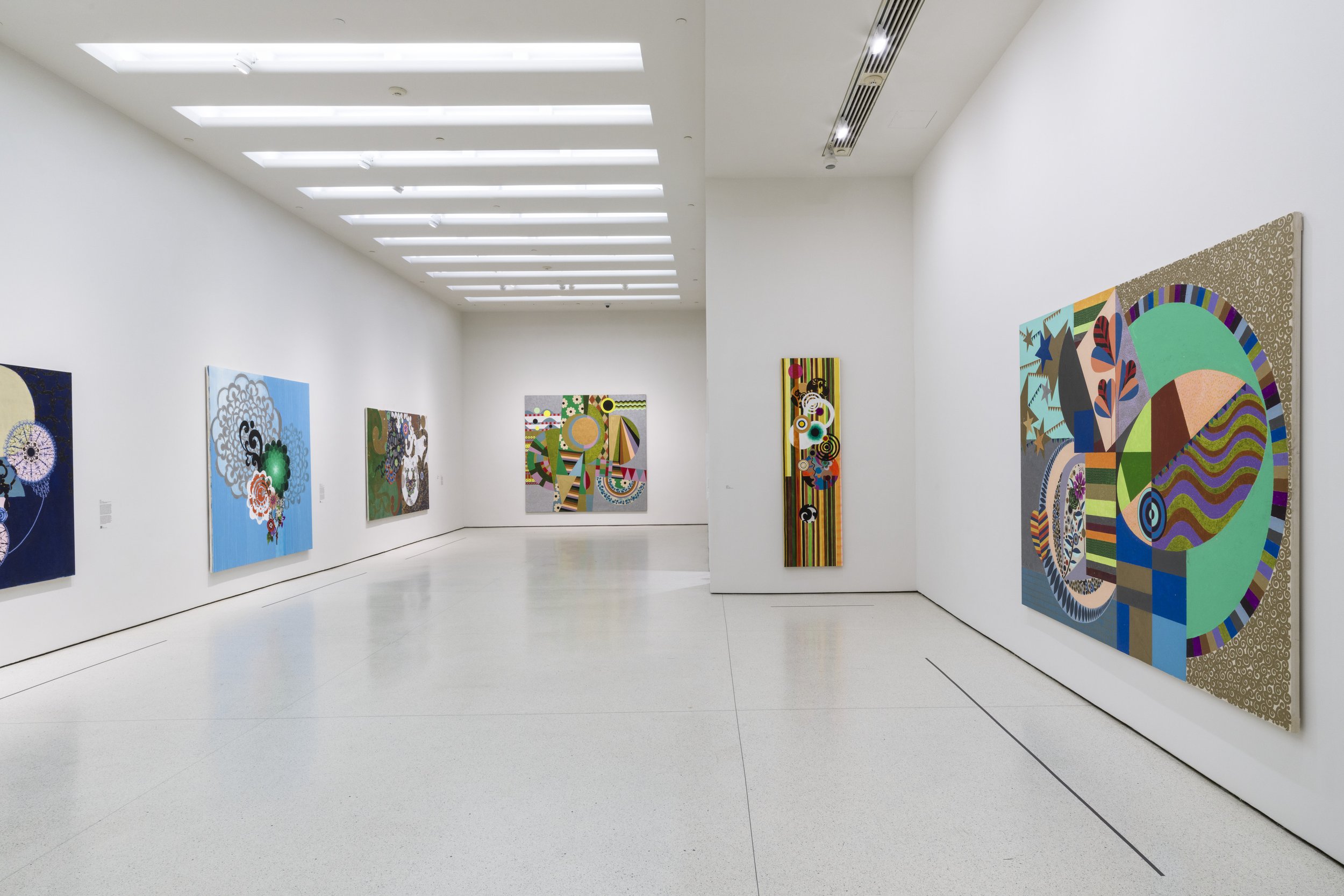
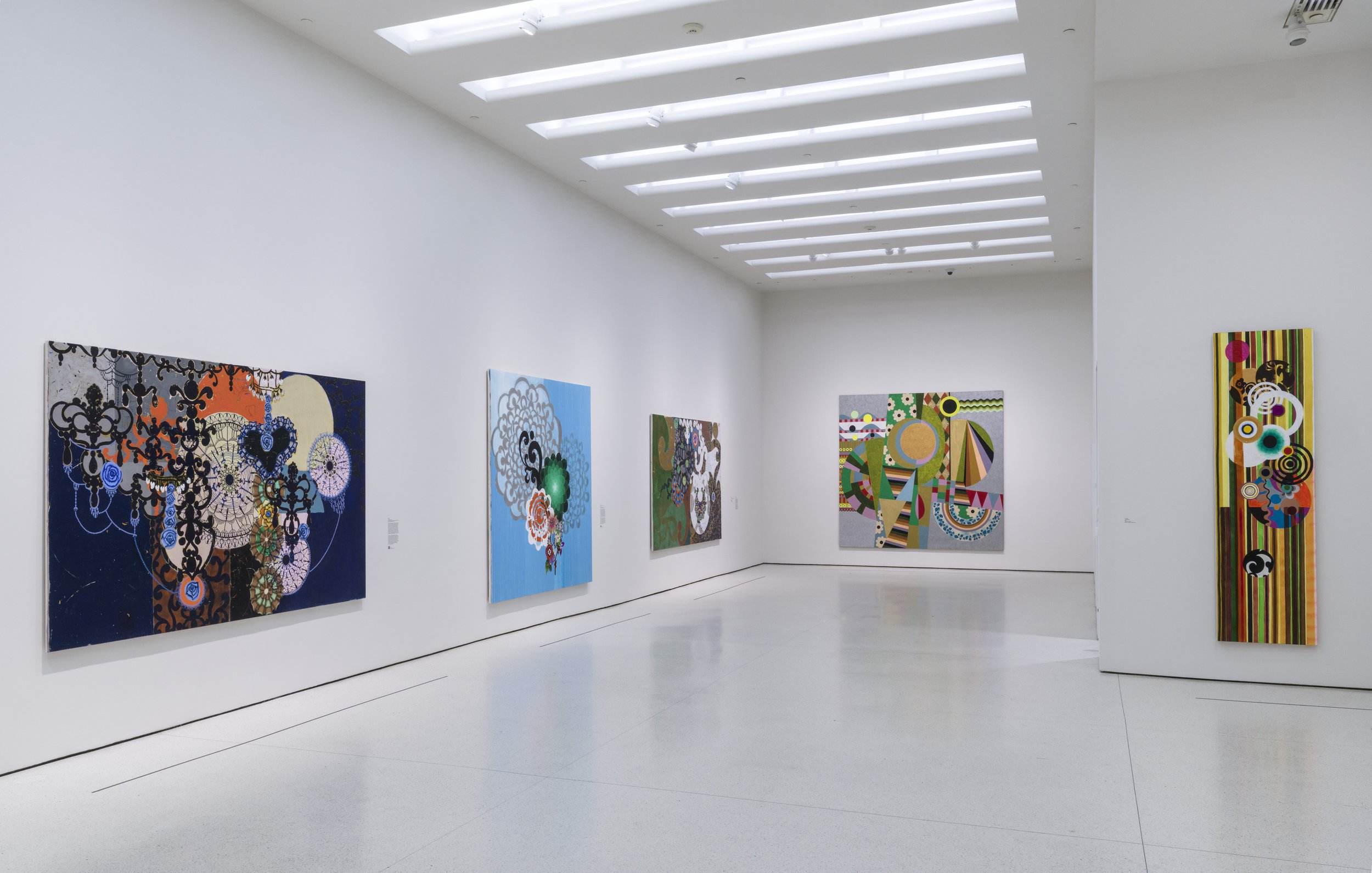
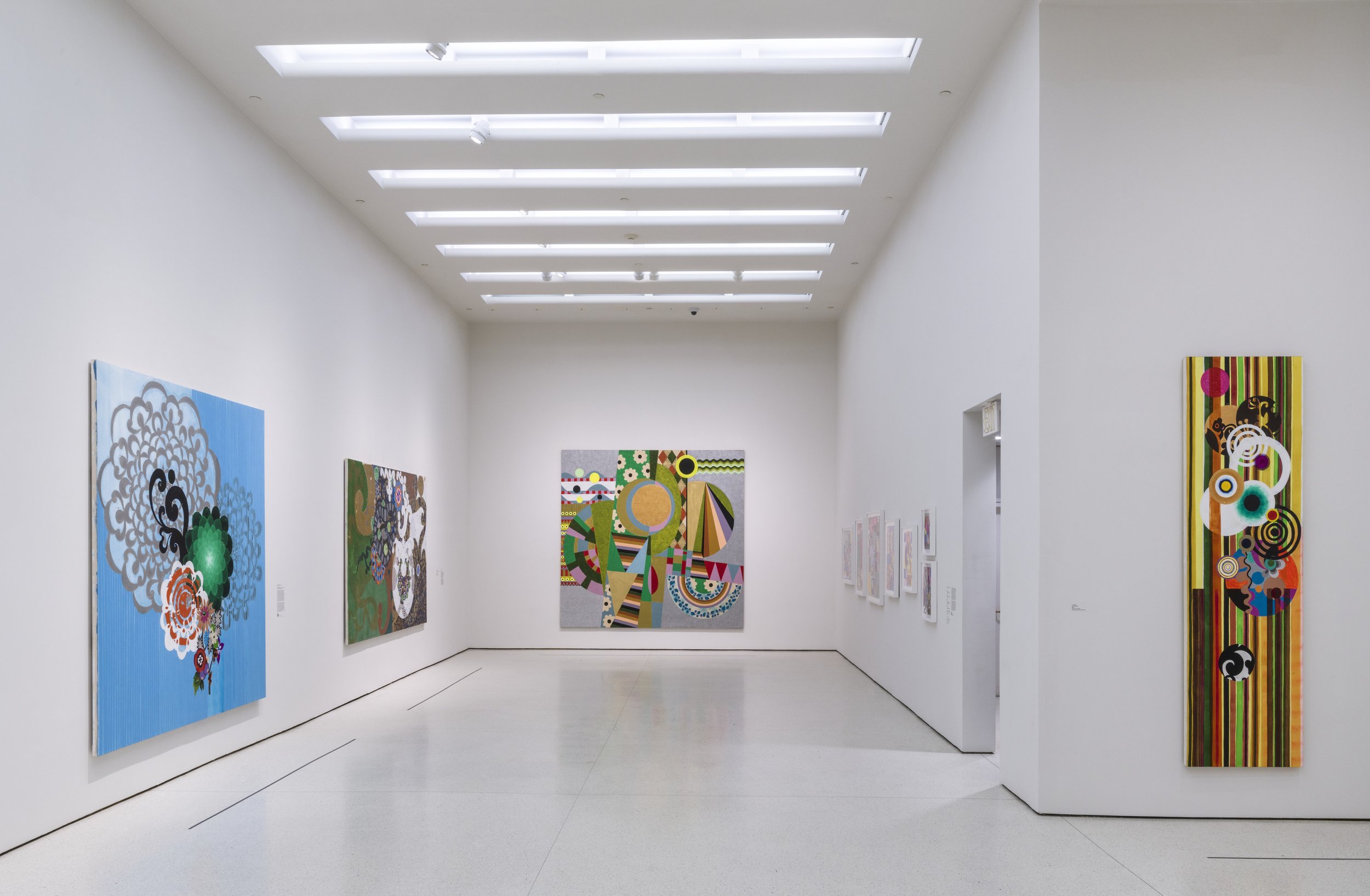


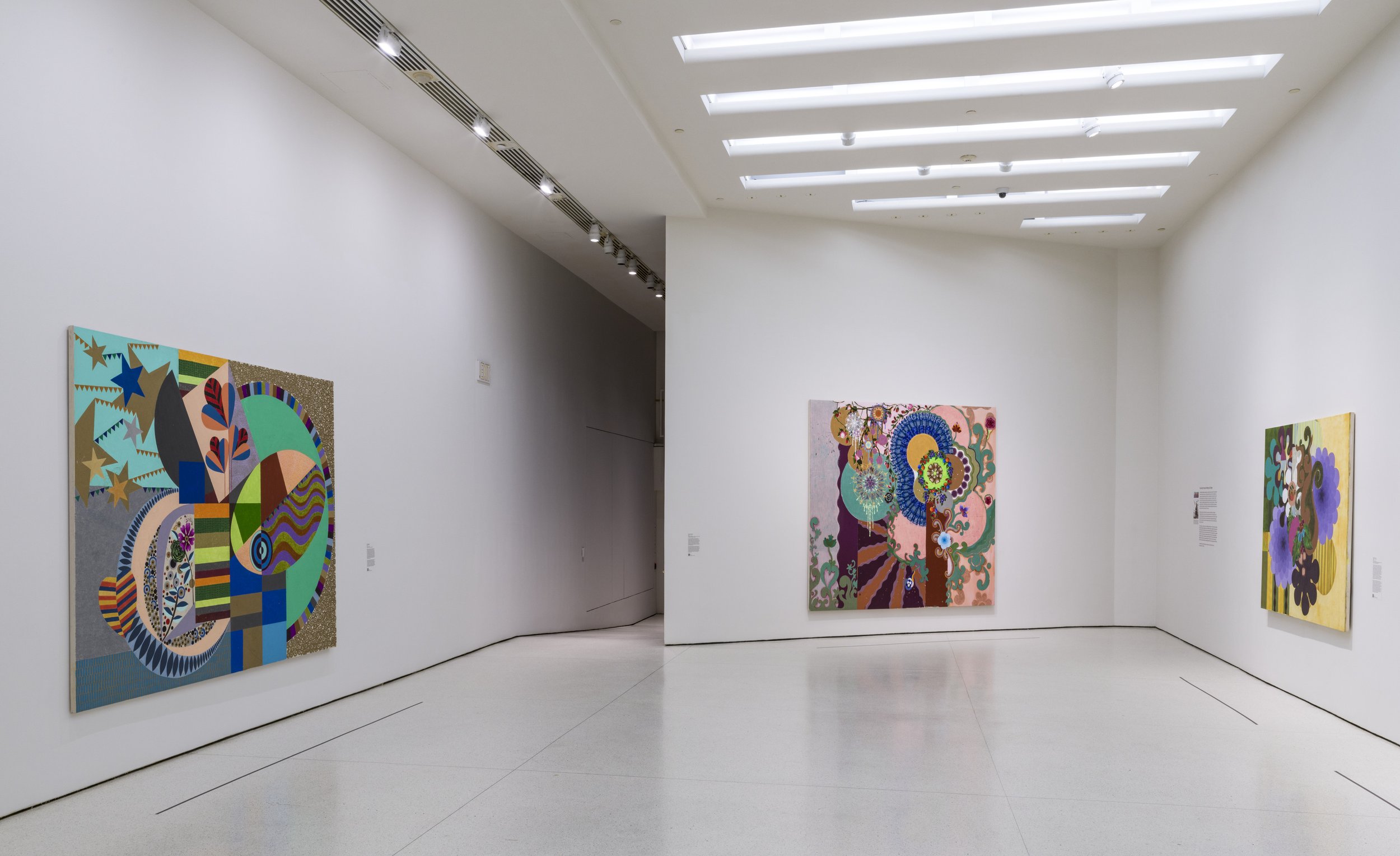

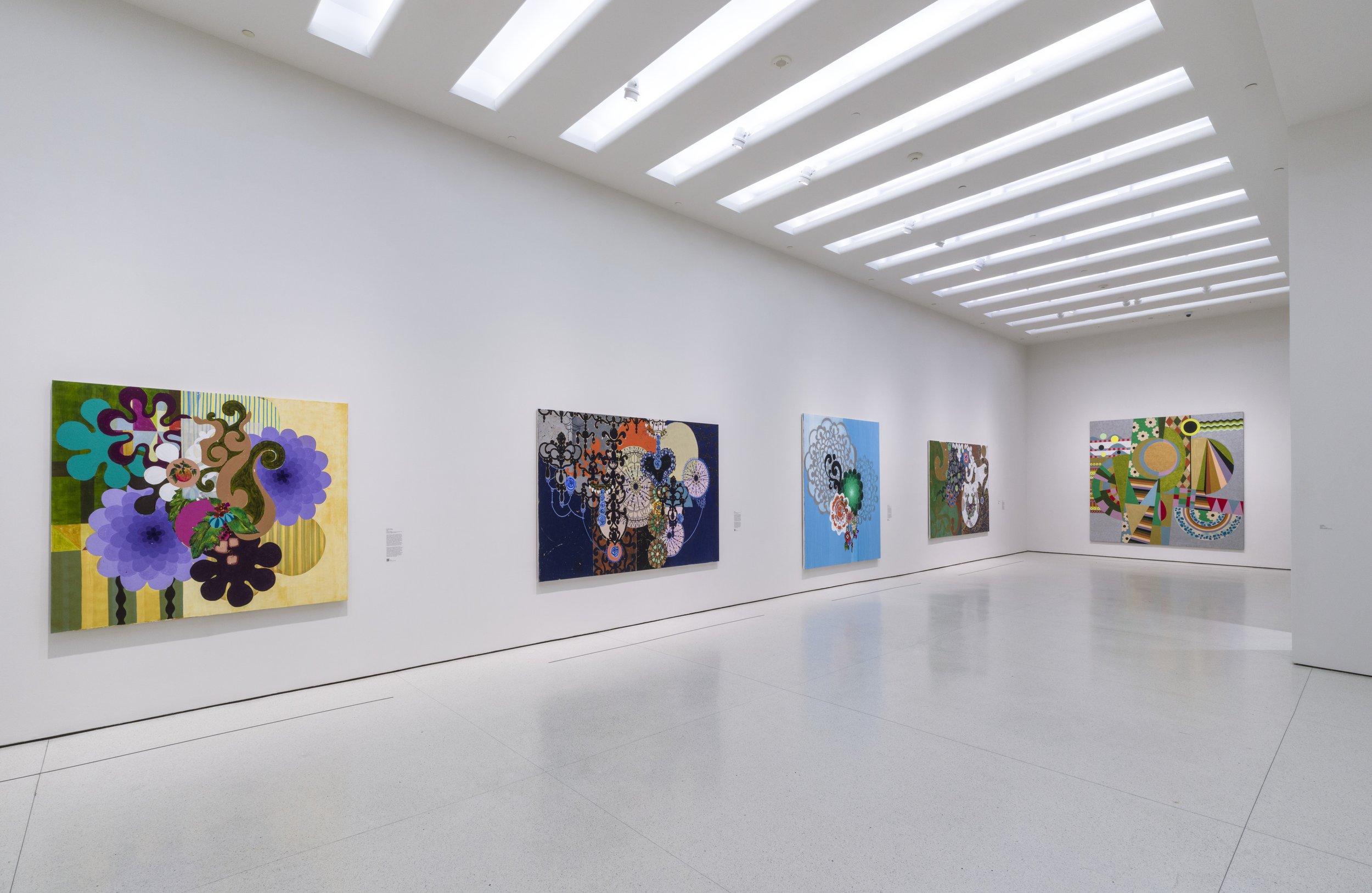
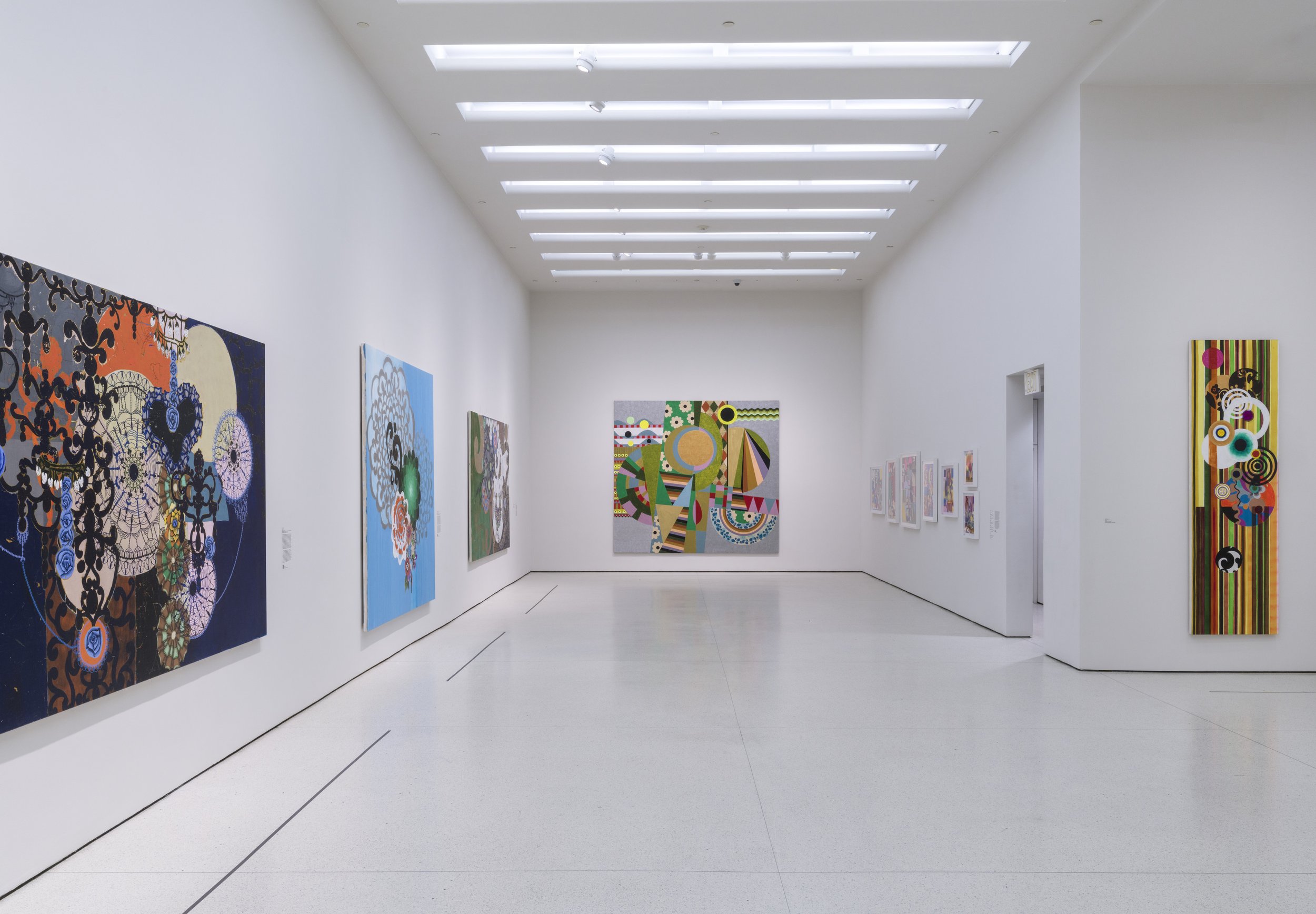


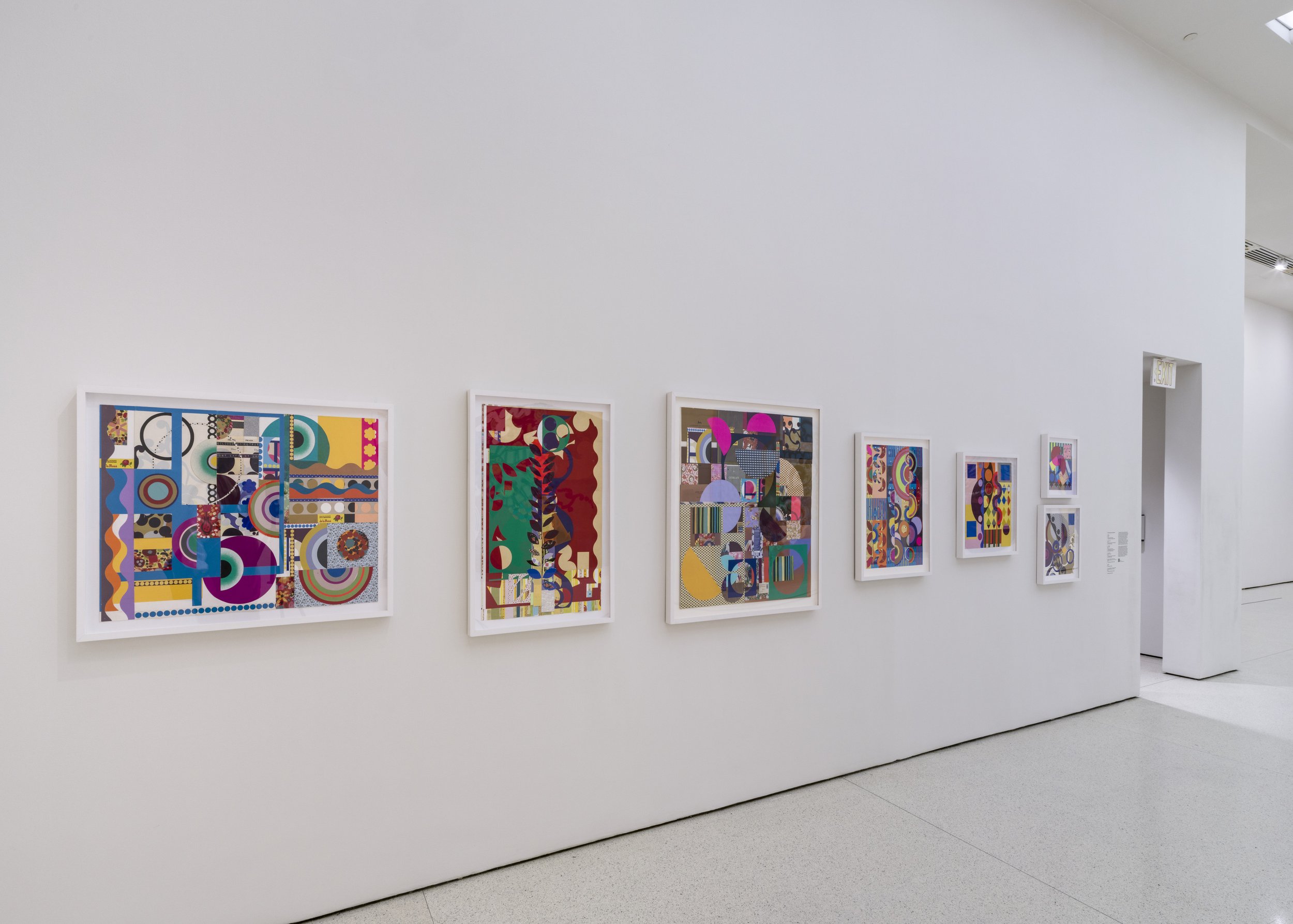
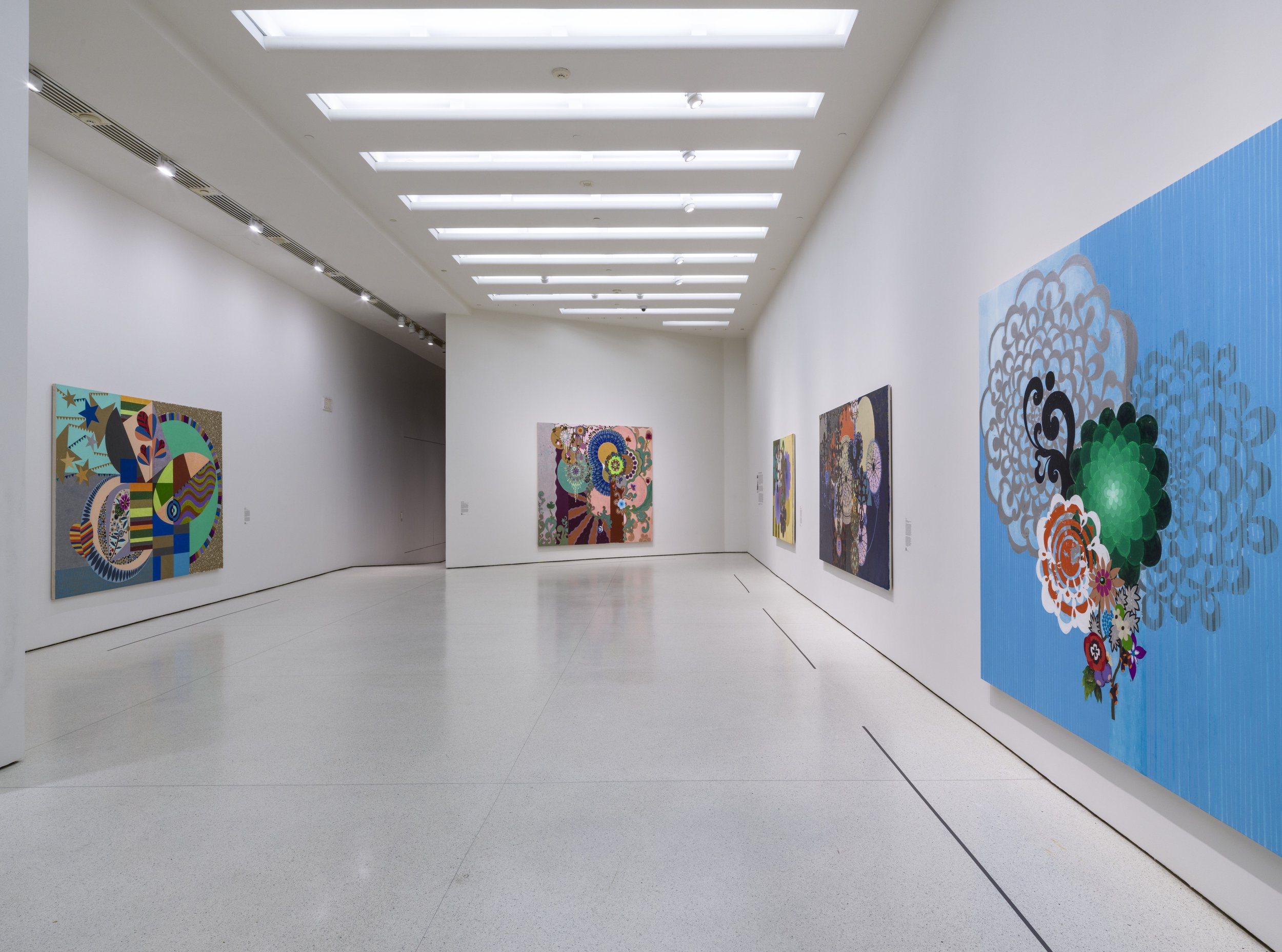
Installation view, Beatriz Milhazes: Rigor and Beauty, March 7, 2025 – September 14, 2025, Solomon R. Guggenheim Museum, New York. Photo: David Heald © Solomon R. Guggenheim Foundation, New York
“With almost thirty years between the earliest and most recent works in this exhibition, the pieces interact in remarkable ways, creating a strong and distinctive visual confrontation while offering a valuable opportunity to observe their evolution. I would especially note the convivial relationships between abstraction, figuration, geometry, and free forms in these works, as well as the superposition of their paint layers. The colorful compositions diverge from dark and melancholic to bright and intricate, creating a dynamic atmosphere in the exhibition ”
This exhibition is the second installment in the exhibition series Collection in Focus, which highlights the museum’s permanent collection. The series is part of a reinvigorated effort to make the Guggenheim New York’s world-renowned holdings more accessible to the public. Beatriz Milhazes: Rigor and Beauty is organized by Geaninne Gutiérrez-Guimarães, Curator, Guggenheim Museum Bilbao and Solomon R. Guggenheim Museum and Foundation, New York.
Programming
On the occasion of the exhibition, Beatriz Milhazes will participate in a public program on May 20, 2025, as part of the museum’s Conversations with Contemporary Artists series. Additional educational activities will include gallery talks within the exhibition, which will be free with museum admission.
Beatriz Milhazes in front of her painting The Four Seasons (As quatro estações, 1997) in 2024. © Solomon R. Guggenheim Museum, New York. Photo: David Heald, Solomon R. Guggenheim Museum, New York
About the Artist
Beatriz Milhazes was born in Rio de Janeiro in 1960 and continues to live and work there. She earned a degree in journalism from Faculdades Integradas Hélio Alonso in 1981 and attended open courses at the Escola de Artes Visuais do Parque Lage (EAV) from 1980–82. In 1984, she participated in Como vai você, Geração 80?, a seminal exhibition marking the return to painting in Brazil. In 1986, she became a teacher at EAV, where she taught for ten years. In 1989, she developed her signature “monotransfer” painting technique and dedicated herself fully to her artistic practice.
Milhazes has a longstanding relationship with the Guggenheim New York, dating back to 1992 when curator Richard Armstrong (former director of the Solomon R. Guggenheim Museum, New York, 2008–23) and Fred Henry, president of the Bohen Foundation, visited her studio in Rio de Janeiro at the recommendation of Brazilian art critic and curator Paulo Herkenhoff. Milhazes later participated in Armstrong’s Carnegie International 1995 exhibition at the Carnegie Museum of Art, Pittsburgh, in 1995—her first major show outside of Latin America—earning international recognition. In 1998, Herkenhoff included her work in the São Paulo Biennial, while Armstrong continued to follow her career. Moreover, Fred Henry became an avid collector of her work and eventually acquired five of Milhazes’s paintings for the Bohen Foundation. In 2001, the Bohen Foundation donated a sizeable collection to the Guggenheim Museum under former director Thomas Krens (1988–2008). This significant bequest, primarily consisting of film, video, new media, and installation art, also included six works by Milhazes, along with pieces by other Brazilian artists.
In 2002, Milhazes had her first museum solo show at the Centro Cultural Banco do Brasil, Rio de Janeiro. Since then, she has held numerous national and international solo exhibitions and received several artist commissions, including at Pinacoteca de São Paulo (2008); Fondation Cartier pour l’art contemporain, Paris (2009); Fondation Beyeler, Riehen, Switzerland (2011); Pérez Art Museum Miami (2014); the Jewish Museum, New York (2016); Museu de Arte de São Paulo (MASP) with Itaú Cultural, São Paulo (2020); Long Museum, Shanghai (2021); Turner Contemporary, Margate, England (2023); and Tate St Ives, Cornwall, England (2024). She also participated in the Biennial of Sydney (1998), São Paulo Biennial (1998, 2004, 2013), Shanghai Biennial (2006), Mercosul Biennial (2015), and the Venice Biennale (2003, 2024), with a special project at the Pavilion of Applied Arts at the most recent Venice Biennale
Support
Visionary support for Collection in Focus is provided by Aleksandra Janke and Andrew McCormack.
The Leadership Committee for Beatriz Milhazes: Rigor and Beauty is gratefully acknowledged for its generosity, with special thanks to Laura Clifford, Peter Bentley Brandt, Christina and Alan MacDonald, Cristina Chacón and Diego Uribe, Alberto Cruz, Ilva Lorduy, Karina Mirochnik and Gaby Szpigiel, Pace Gallery, White Cube, Fortes D’Aloia & Gabriel, and Galerie Max Hetzler. Additional funding is provided by the Guggenheim New York’s Latin American Circle.
About the Guggenheim New York
The Solomon R. Guggenheim Foundation was established in 1937 and is dedicated to promoting the understanding and appreciation of modern and contemporary art through exhibitions, education programs, research initiatives, and publications. The international constellation of museums includes the Guggenheim New York; the Peggy Guggenheim Collection, Venice; Guggenheim Bilbao; and the future Guggenheim Abu Dhabi. An architectural icon and “temple of spirit” where radical art and architecture meet, the Guggenheim New York is now among a group of eight Frank Lloyd Wright structures in the United States recently designated as a UNESCO World Heritage site. To learn more about the museum and the Guggenheim’s activities around the world, visit guggenheim.org.
Beatriz Milhazes: Rigor and Beauty will be on view at Guggenheim New York, 1071 Fifth Avenue, New York in Tower 5. From March 7 to September 14, 2025
To learn more about the museum, this exhibit, past exhibits, current exhibits, upcoming exhibits, and the Guggenheim’s activities around the world, visit here. The museum can also be found on YouTube, TikTok, X, Facebook, and Instagram.
SOPHIE CALLE
SOPHIE CALLE Calle-Joconde (Wrong turn), 2025 (detail) text panel in artist’s frame, two pigment prints in artists frames, thread, pigment print in cardboard frame © 2025 Artists Rights Society (ARS), New York / ADAGP, Paris
Fraenkel Gallery is pleased to present an exhibition by Sophie Calle. For more than forty years Calle has made work that draws from her life, transforming elements from her public and private relationships into intimate narratives. The exhibition features several series exploring questions about legacy and loss, topics Calle approaches with her typical humor and candor. Making its U.S. debut, Catalogue Raisonné of the Unfinished focuses on projects Calle previously conceptualized but didn’t pursue. Each piece pairs fragments from the project with Calle’s text about its failure. Another series, Picassos in Lockdown, comprises photographs Calle made at the Musée National Picasso in Paris during the pandemic. Each shows a painting covered for protection while the museum was closed. The exhibition also features a selection of works looking at death and remembrance through the lens of Calle’s relationship with her parents. This will be Calle’s fifth exhibition at Fraenkel Gallery since 1994. A public reception with the artist will take place on Saturday, March 1, from 2- 4pm.
Catalogue Raisonné of the Unfinished collects photographs, handwritten notes, comic books, and other documents, each paired with a short text describing the artwork Calle had originally imagined and how it came to (not) be. A red stamp across each text pronounces her reason for rejecting the work. The projects range from Calle’s request for museum visitors to propose ideas for her to enact (“Not exhilarating”), to an attempt to insert herself into a Mexican comic book collection that included the word “Calle” in the title (“Anecdotal”). Together, the series presents a sort of self-imposed salon des refusés, revealing glimpses of Calle’s process and celebrating the transformation of many dead ends into a final positive form.
SOPHIE CALLE Shiner, 2020 pigment print mounted on aluminum, in wooden box © 2025 Artists Rights Society (ARS), New York / ADAGP, Paris
In 2023, Musée National Picasso presented a solo exhibition of Calle’s work, timed to the 50th anniversary of the death of Pablo Picasso. The deliberately retrospective exhibition, titled À toi de faire, ma mignonne, (“It’s up to you, my darling”) included photographs Calle made while the museum was closed during the pandemic, recording the cloth and paper coverings that shielded Picasso’s paintings from light and dust. Calle has described her encounter with the paintings: “The Picassos were under protection, wrapped up, hidden. Underneath — a ghostlike, less intimidating presence,” she writes. Titled after the works they conceal, the photographs in Picassos in Lockdown encourage the viewer to recall the original painting.
SOPHIE CALLE Portrait de Marie-Thérèse, 2022 pigment print © 2025 Artists Rights Society (ARS), New York / ADAGP, Paris
A third gallery presents selections from Autobiographies and other elegiac, family-focused works, pairing photographs and texts in frames or urn-like wooden boxes. In Autobiographies (Morning), Calle awaits her father’s last words, while Autobiographies (My Mother Died) reproduces notes about death from Calle’s diary and her mother’s. A glass-fronted box titled Unforeseen presents the obituary Calle commissioned for herself, hidden behind pinned butterflies to remain unreadable. The piece incorporates Calle’s commentary about her decision to obscure the writing: “So as not to attract too much attention from death, I decided it was best to cover up what I did not want to read,” she notes. In these and other works, Calle addresses her own mortality with characteristic honesty and wit, taking on the question of how we remember and are in turn remembered.
Sophie Calle was recently featured in Sophie Calle: Overshare at the Walker Art Center in Minneapolis, and Absences: Sophie Calle & Toulouse-Lautrec at the Mitsubishi Ichigokan Museum, Tokyo. Her work was presented in the solo exhibition Finir en Beauté (Neither Give Nor Throw Away), held in the cryptoporticus at Arles as part of the photography festival Rencontres d’Arles in France. Her work has been shown in museums around the world and is in the collections of the Metropolitan Museum of Art, New York; Museum of Modern Art, New York; Solomon R. Guggenheim Museum, New York; Los Angeles County Museum of Art; San Francisco Museum of Modern Art; Centre Pompidou, Paris; and Tate, London, among many others. Calle is the recipient of numerous awards, including most recently the Praemium Imperiale Award in 2024, as well as the Royal Photographic Society’s Centenary Medal, an Infinity Award from the International Center of Photography, and the Hasselblad Foundation International Award in Photography, among others.
The exhibtion opened on Februrary 27th and will conclude on April 12, 2025 . A public reception with the artist will take place on Saturday, March 1, from 2- 4pm. Please visit the Fraenkel Gallery's site for more information about Sophie’s exhibit.
Francis Picabia. Éternel recommencement / Eternal Beginning
Installation view, ‘Francis Picabia. Éternel recommencement / Eternal Beginning,’ Hauser & Wirth Paris, 2025. Courtesy Hauser & Wirth. Photo: Nicolas Brasseur
In collaboration with the Comité Picabia, Hauser & Wirth Paris will present an exhibition of over 40 post-war artworks by Francis Picabia. Curated by Beverley Calté and Arnauld Pierre, this will be the first major solo exhibition exclusively exploring Picabia’s unique final period, created after his return to Paris in 1945 until the year before his death in 1953. Often overshadowed by other periods of his oeuvre, Picabia’s last series saw the artist abandon his famous wartime Nudes, coupled with a particular interest in surface texture and new sources of inspiration. Characteristic of Picabia’s restless artistic talent, these paintings represent his own definitions of nonfigurative art, creating a new visual language which distinctly sets this bold group of works apart from anything he had done before. This exhibition will travel to Hauser & Wirth New York, 22nd Street from 1 May – 25 July 2025.
The final phase of Picabia’s work, whose prolific career was marked by a ‘complex alternation of styles and techniques’ (Arnauld Pierre), is reflective of an unprecedented visual language and a singular approach to abstraction. This period testifies to the artist’s unwavering commitment to a core principle, a method that has persisted through all his transformations: the use of pre-existing visual material. This material was drawn either from a vast collection of images or from his own earlier paintings, which he continued to revisit.
Installation view, ‘Francis Picabia. Éternel recommencement / Eternal Beginning,’ Hauser & Wirth Paris, 2025. Courtesy Hauser & Wirth. Photo: Nicolas Brasseur
In 1945, Picabia returned to Paris, facing challenging economic and artistic circumstances and needing a fresh start. The painter appeared to return to the Dada ‘anti-painting’ ethos of the past. The most striking examples of this resurgence are found in his Points series, which were controversially reviewed by critics. Works include ‘Silence’ (1949) or ‘Six points’ (1949), in which a handful of dots—resembling a constellation—is set against a monochrome background subtly clouded by surface effects, resembling turbulent currents or signs of wear and tear.
Francis Picabia Colloque (Colloquium) 1949 Oil on canvas 97 x 130.5 x 2 cm / 38 1/4 x 51 3/8 x 3/4 in 116 x 150 x 4 cm / 45 5/8 x 59 x 1 5/8 in (framed) Photo: Nicolas Brasseur
During this period, Picabia was far from a recluse. On Sundays, he regularly opened his studio to artists like Henri Goetz, Christine Boumeester, Raoul Ubac, Jean-Michel Atlan and Georges Mathieu. These figures sought to forge a third path, particularly at the Salon des Surindépendants, between the legacies of Surrealism and the rigors of abstraction. While Picabia resisted being confined to group labels, he was nonetheless willingly associated with the ‘informels’ in the post-war period. This connection is perhaps best justified by his distinctive treatment of the material, the very substance of the painting. This can be seen, for example, in ‘Rapport avec les vertus (In Relation to the Virtues)’ (1949), with its dark colored areas that defy the uniformity of a flat field, or in ‘Colloque (Colloquium)’ (1949), with its sharp folds and textured impasto.
Francis Picabia, Cherchez d’abord votre Orphée ! (First Seek Your Orpheus!), 1948 Oil on canvas, 170 × 70 cm / 66 ⅞ × 27 1/2 in. Musée-bibliothèque PAB, Alès, France Ó Musée-bibliothèque Pierre-André Benoît (PAB), Alès, France. Courtesy Archives Comité Picabia, Paris
Picabia remained steadfast in following his own path and the post-war period was no exception. He continued to employ his tried-and-tested technique of sampling, borrowing and assimilating. Notably, the exhibition highlights the role that prehistoric artistic sources had in Picabia’s paintings during the time. This inclination towards mythologized origins can manifest as an expected engagement with the forms and teachings of the African continent or Oceania. Masks became one of Picabia’s particularly favored motifs, as seen in ‘Niagara’ (ca. 1947), where a cranial form swells into a bulb and is divided into three sections by a Y-shaped groove. The mask motif reminds us that this final phase of Picabia’s work, often labelled ‘abstract,’ was not entirely so. Alongside the masks, the exhibition features ‘Villejuif [I],’ an oil on wood from 1951. Its evocative power and emotional resonance remain undeniable.
Francis Picabia Symbole (Symbol) 1950 Oil on plywood in original frame 100 x 85.5 cm / 39 3/8 x 33 5/8 in Musée - bibliothèque Pierre André Benoit, Alès, France Photo: Mercatorfonds, Belgium and Archives Comité Picabia, Paris
Picabia’s collection of imagery was not restricted to distant geographical sources. Catalan Romanesque art, along with prehistory, were among the artist’s favorite inspirations. His borrowings also included ‘self- borrowings,’ as seen in his repainted works, such as ‘Elle danse (She Dances)’ (1948). Picabia also appropriated words, often drawing on Nietzsche for his titles. Examples include ‘Cherchez d’abord votre Orphée ! (First Seek Your Orpheus!)’ (1948) and ‘Le négateur du hasard [?] (The Denier Of Chance [?])’ (1946), both inspired by ‘Le Gai Savoir.’ This approach is hardly surprising—until the very end of his life, Picabia made his own rules when it came to aesthetics.’
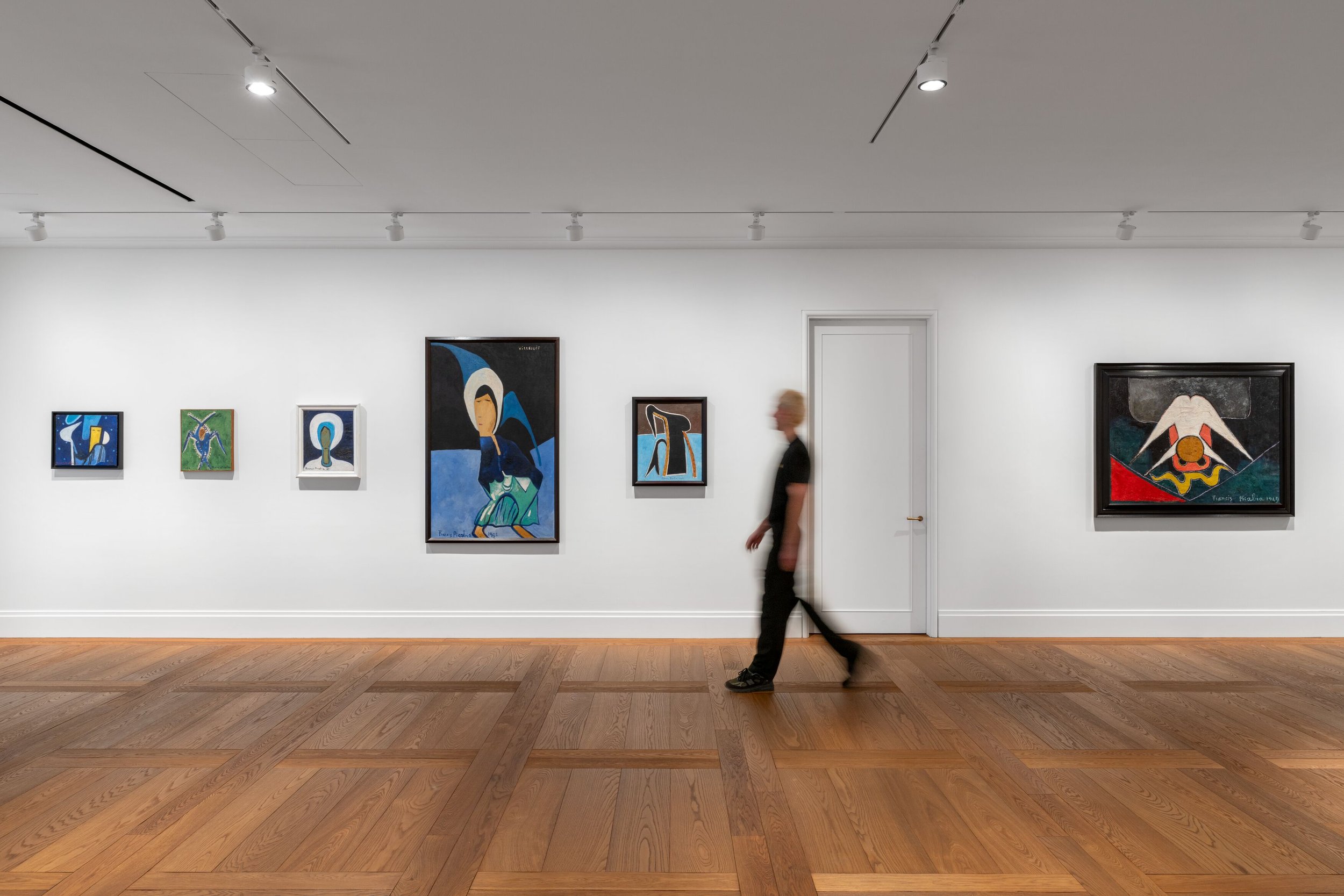
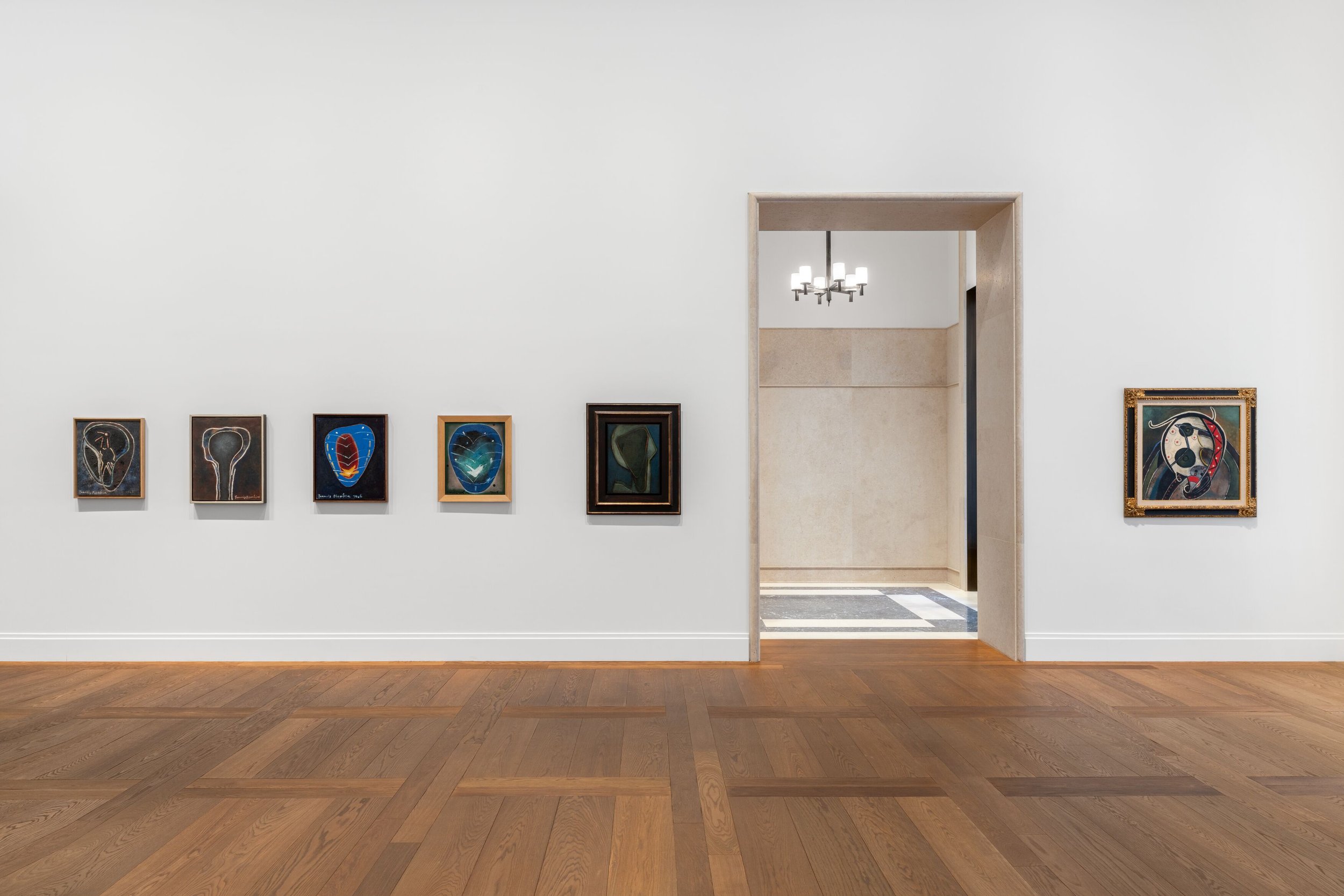
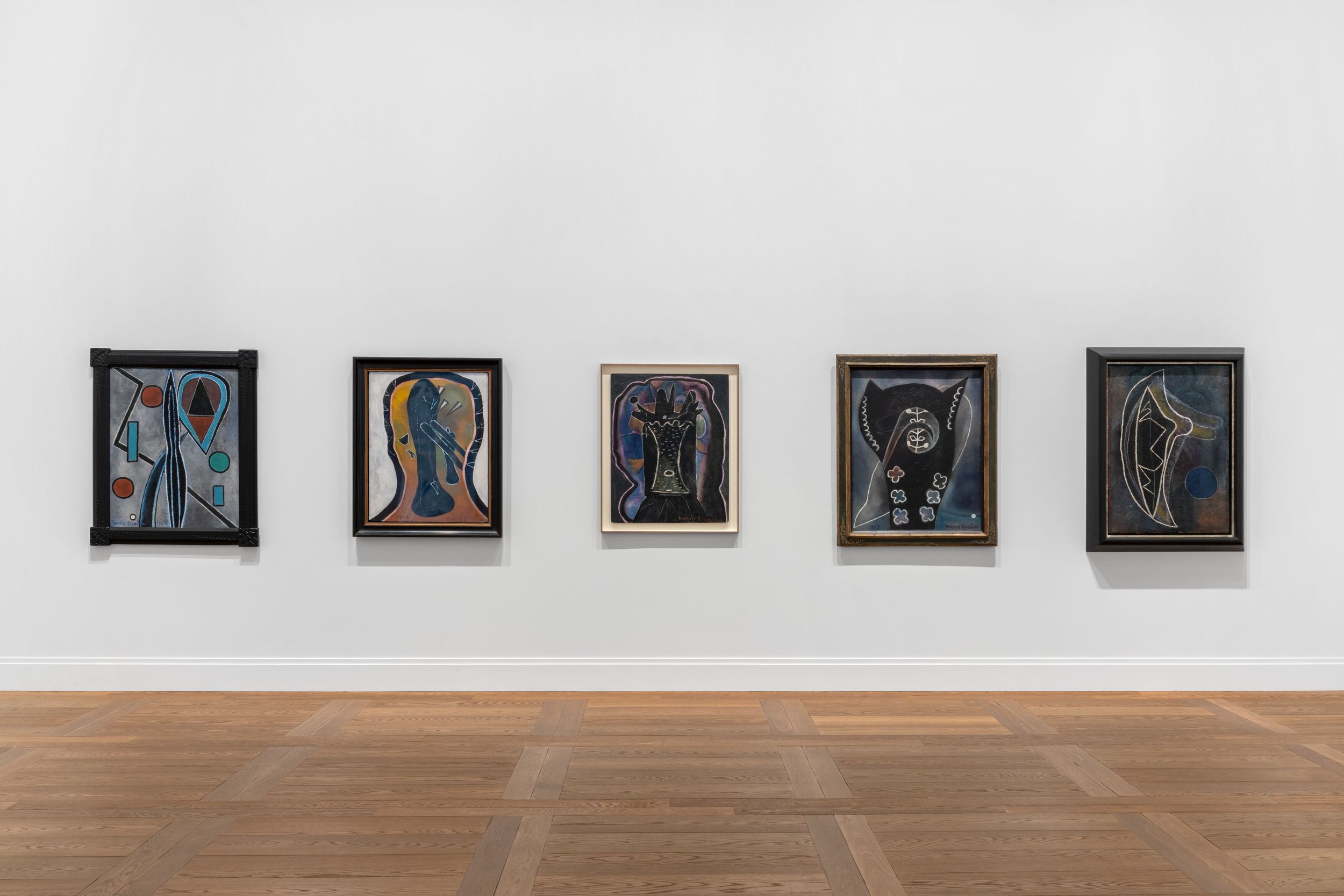
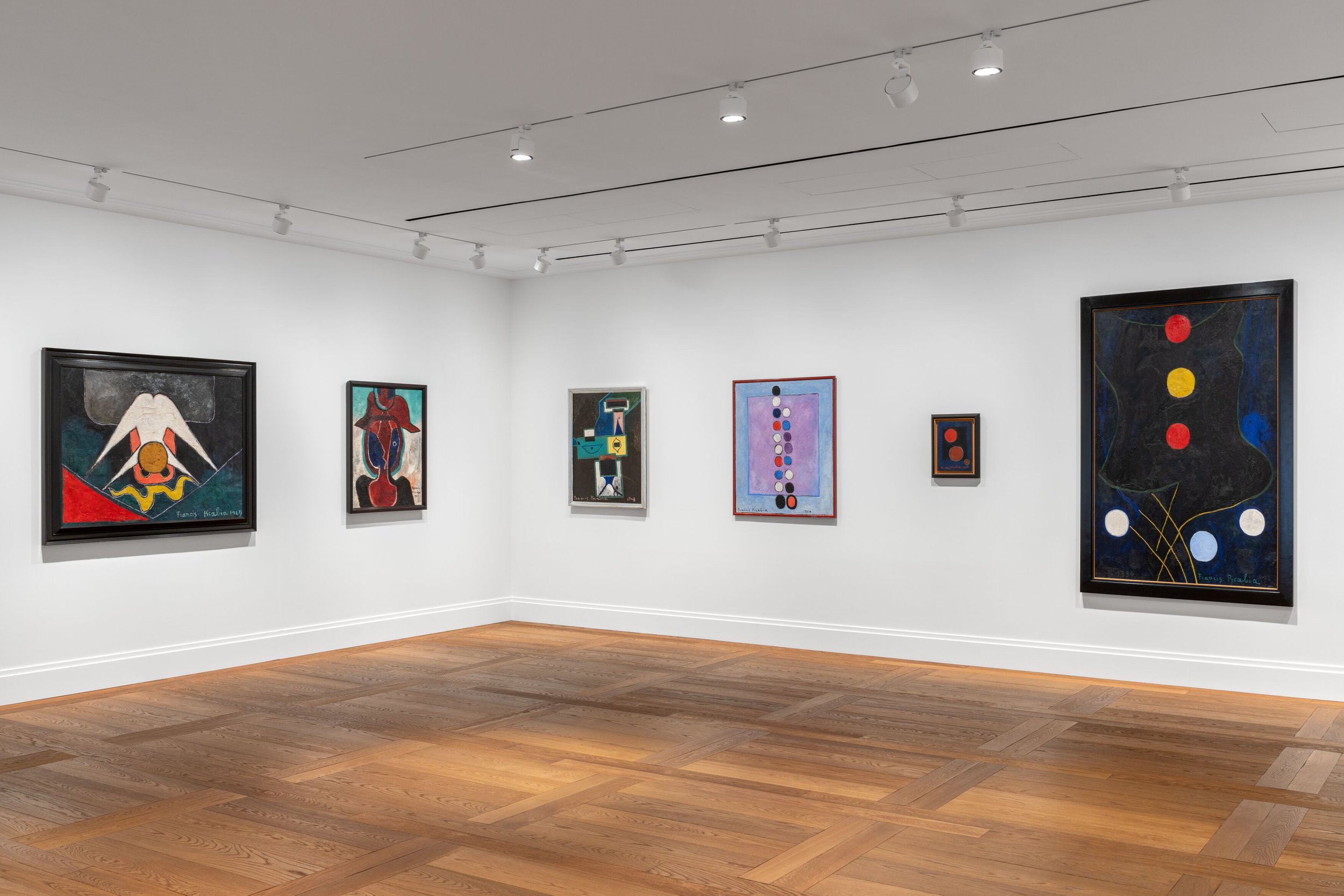
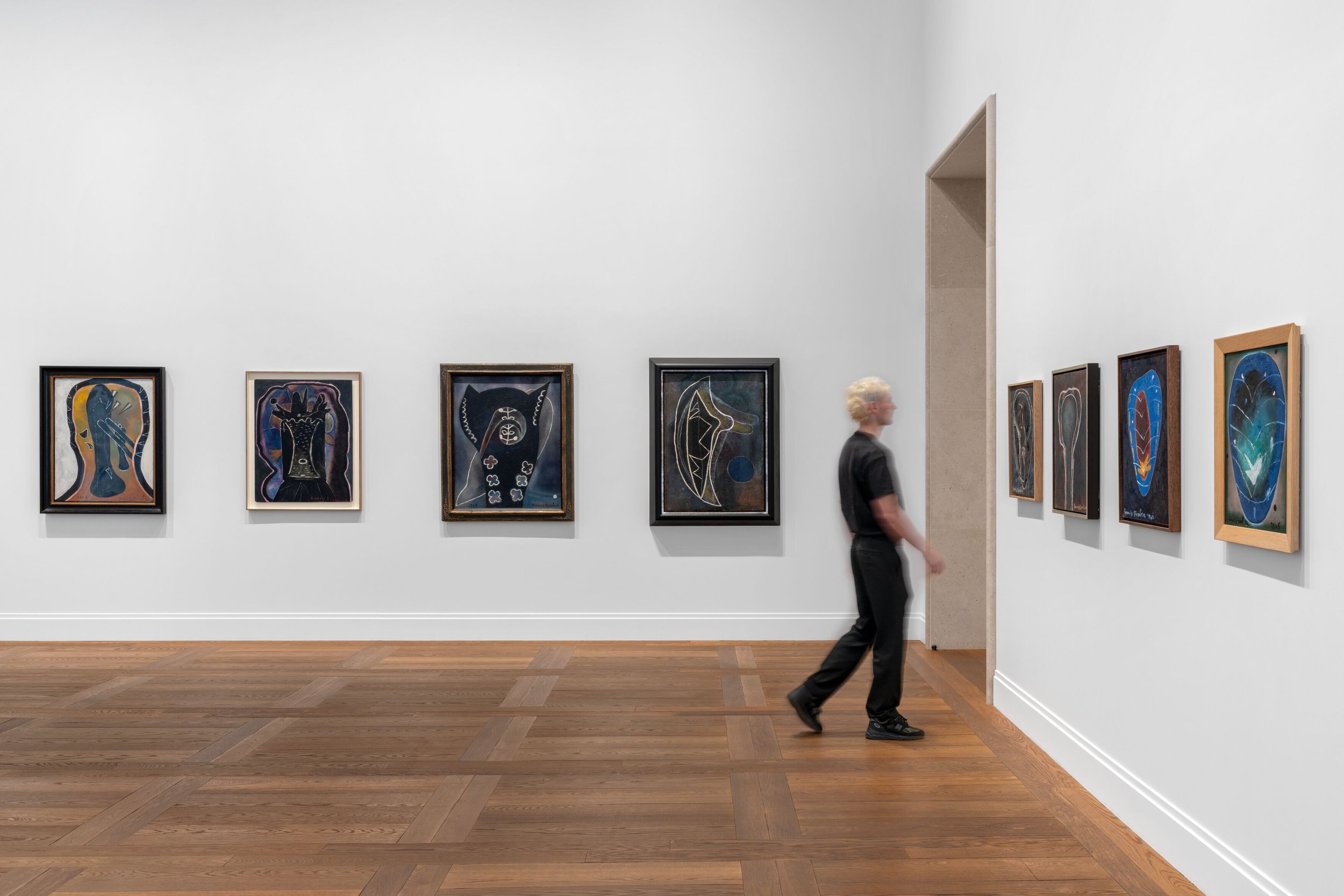
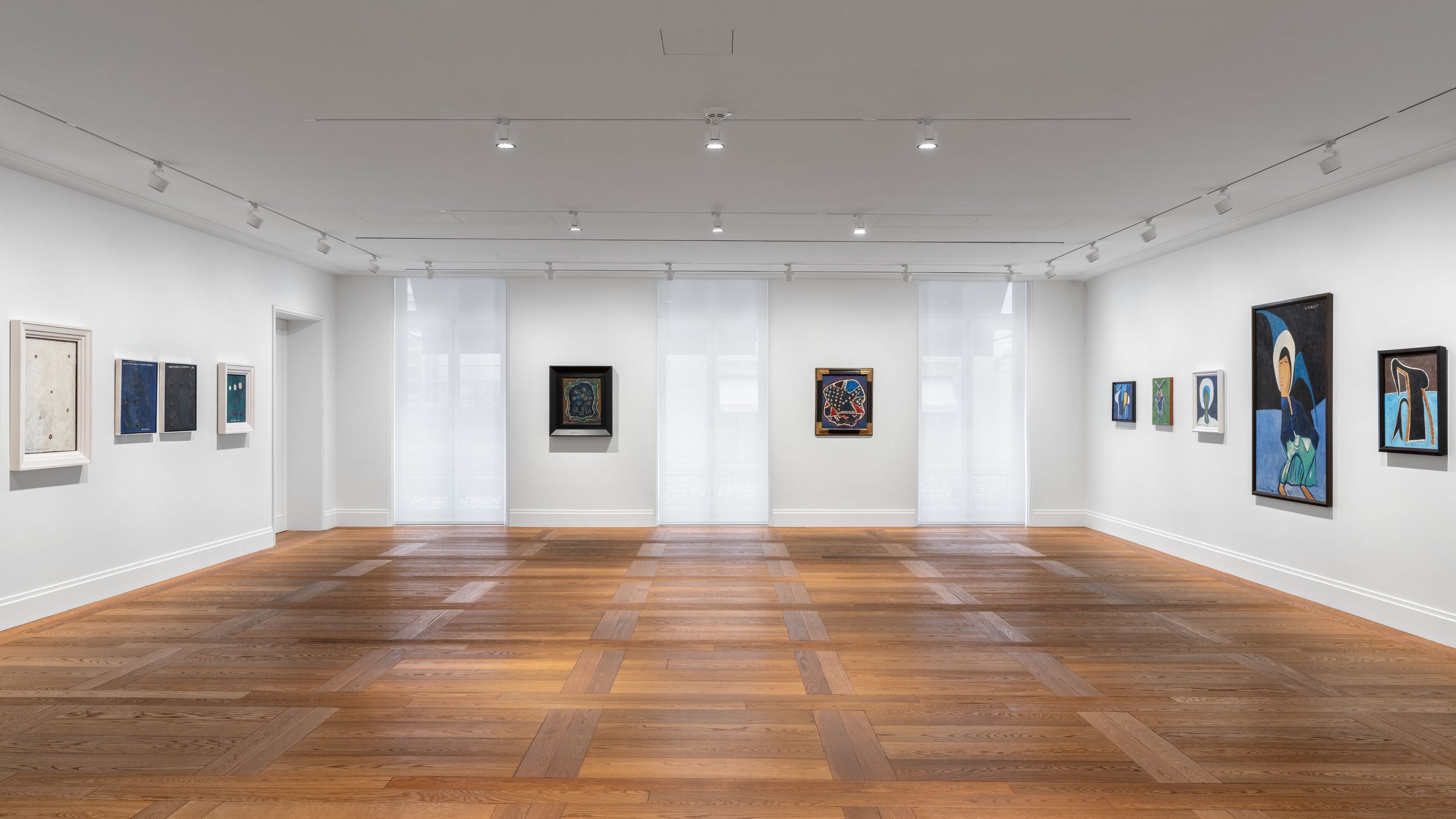
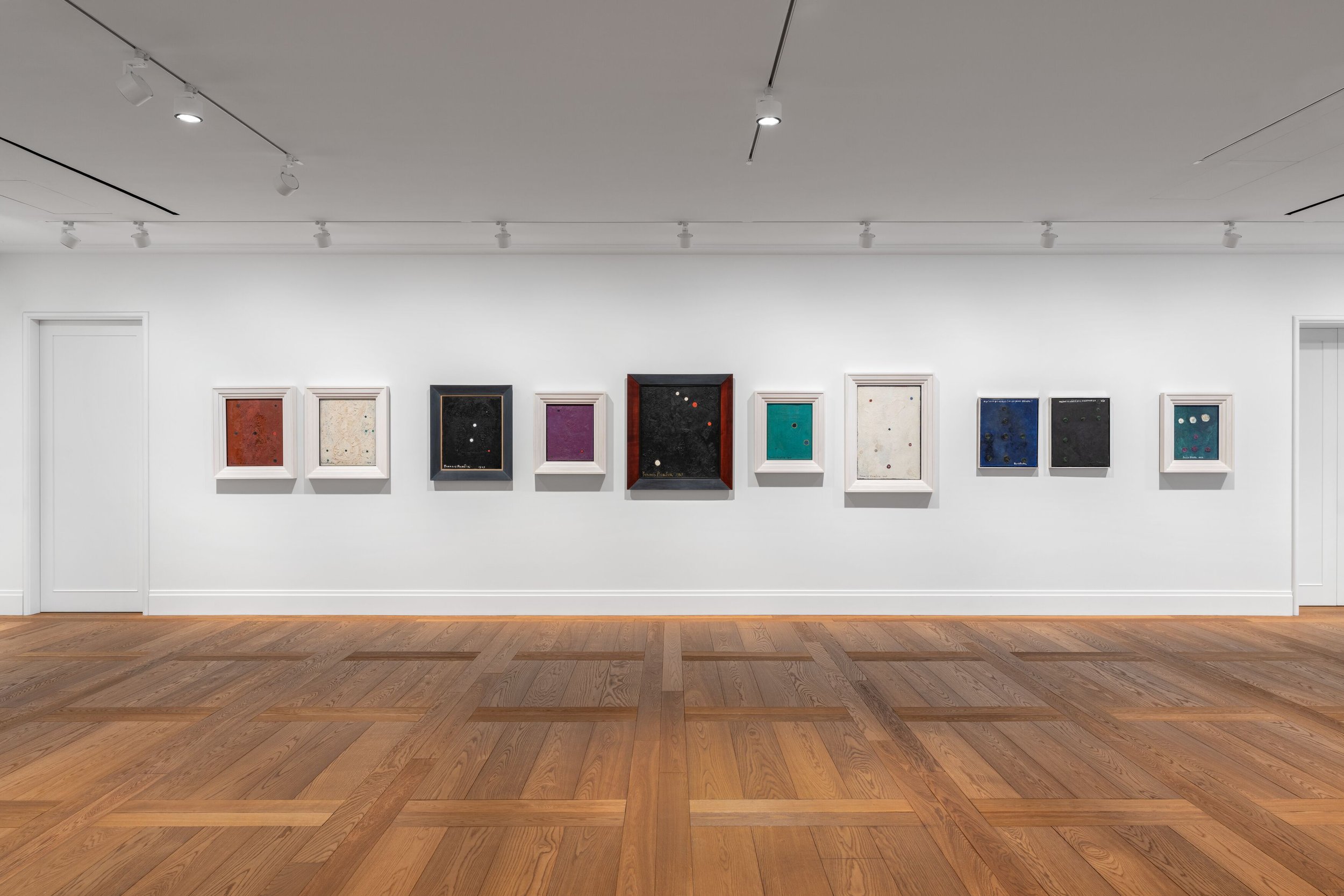
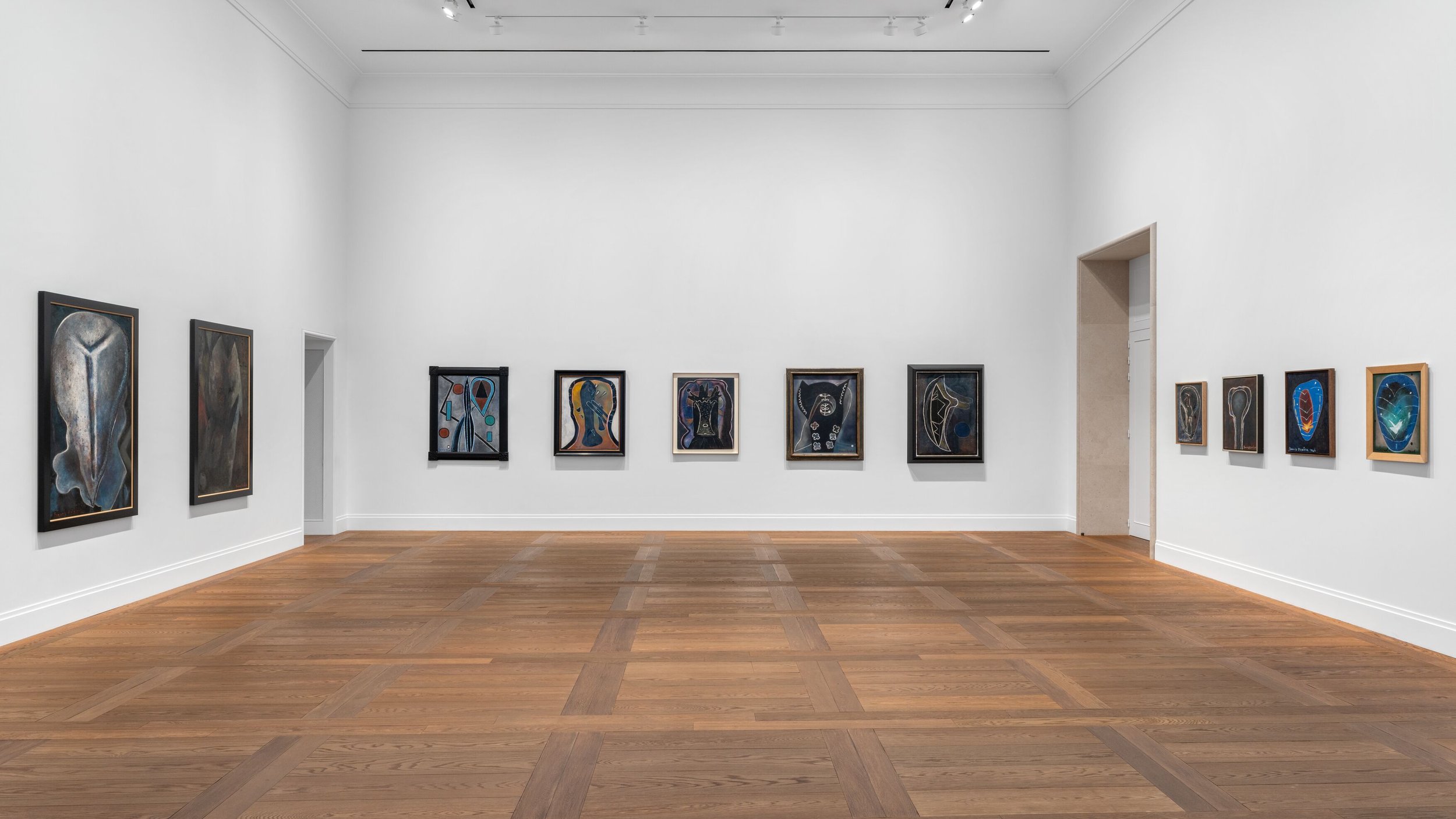
Installation view, ‘Francis Picabia. Éternel recommencement / Eternal Beginning,’ Hauser & Wirth Paris, 2025. Courtesy Hauser & Wirth. Photo: Nicolas Brasseur
An exhibition catalogue, released alongside the exhibition, illustrates Picabia’s visually imposing works and contextualizes his very personal position within the vibrant post-war Parisian art scene and the rise of art informel. This bilingual publication by Hauser & Wirth Publishers includes essays by Arnauld Pierre and Candace Clements, with an introductory preface from Beverley Calté, President of the Comité Picabia.
About the Artist
Francis Picabia (1879–1953) was born François Martinez Picabia in Paris, to a Spanish father and a French mother. After initially painting in an Impressionist manner, elements of Fauvism and Neo-Impressionism as well as Cubism and other forms of abstraction began to appear in his painting in 1908, and by 1912 he had evolved a personal amalgam of Cubism and Fauvism. In 1915—which marked the beginning of Picabia’s machinist or mechanomorphic period—he and Marcel Duchamp, among others, instigated and participated in Dada manifestations in New York. For the next few years, Picabia remained involved with the Dadaists in Zurich and Paris, but finally denounced Dada in 1921 for no longer being “new.” The following year, he returned to figurative art, but resumed painting in an abstract style by the end of World War II.
About Hauser & Wirth Publishers
In keeping with Hauser & Wirth’s artist-centric vision, Hauser & Wirth Publishers works to bring readers into the universe of artists and behind the scenes of their practices. From publishing artists’ writings and exceptional exhibition-related books to commissioning new scholarship and pursuing the highest levels of craft in design and bookmaking, Hauser & Wirth Publishers creates vital, lasting records of artists’ work and ideas, forging critical gateways to the cultural discourse they inspire. Through its Oral History Initiative, Hauser & Wirth Publishers is building an enduring record of artists’ voices for future generations. Additionally, the imprint publishes Ursula magazine, a bi-annual print and digital periodicathat features essays, profiles, interviews, original portfolios, films and photography by thought-provoking writers and artists from around the world.
The exhibition opened on 18 January – and will conclude on 12 Marchl 2025 at the Paris location, This exhibition will travel to Hauser & Wirth New York, 22nd Street from 1 May – 25 July 2025.. Please visit the Hauser & Wirth Gallery site for information about upcoming exhibitions. Also, follow the gallery on Instagram, Facebook, X, and YouTube.The magazine did a book highlight, which can be found here.
RENÉ WIRTHS : I CAN’T GET NO
Toutes les images / All images: © Courtesy of the artist and TEMPLON, Paris - Brussels - New York
Berlin artist René Wirths unveils his series “I CAN’T GET NO” at Templon in Brussels, a collection of fourteen new paintings created over the course of the past two years.
A virtuoso painter, René Wirths is renowned for his still lifes, which are both objective and meditative, and where each object represented — a sneaker, a coffee pot, a pair of headphones, a spray bottle — is treated in an hyper-realist manner that captures every detail and texture. Far beyond a mere imitation of reality, Wirths bestows upon everyday objects an almost sculptural presence, revealing their symbolic weight and silent essence. Representation gives way to reflection, resulting in a physical and metaphysical experience. With the new series, however, René Wirths, for the first time, places his subjects at the centre of a prism of light with divergent rays. His gaze oscillates between accessible reality and subjective vision, focusing on the role of the image in our experience of the world — a perspective fully dedicated to the art of painting.
Toutes les images / All images: © Courtesy of the artist and TEMPLON, Paris - Brussels - New York Video © José Huedo
René Wirths offers a highly personal homage to the great masters of art history, from Édouard Manet’s “Fifer” to “Wanderer above the Sea of Fog” by seminal German Romantic painter Caspar David Friedrich. “I am finally liberating myself from the process that forced me to reflect the outside world solely through the prism of my own observation,” the artist explains. “I have developed a new vocabulary, more inward-looking, inspired by my readings, music and discussions. My subject has shifted: I allow myself to stage my great masters of art history through a new perspective, freed from the material universe that surrounds me.”
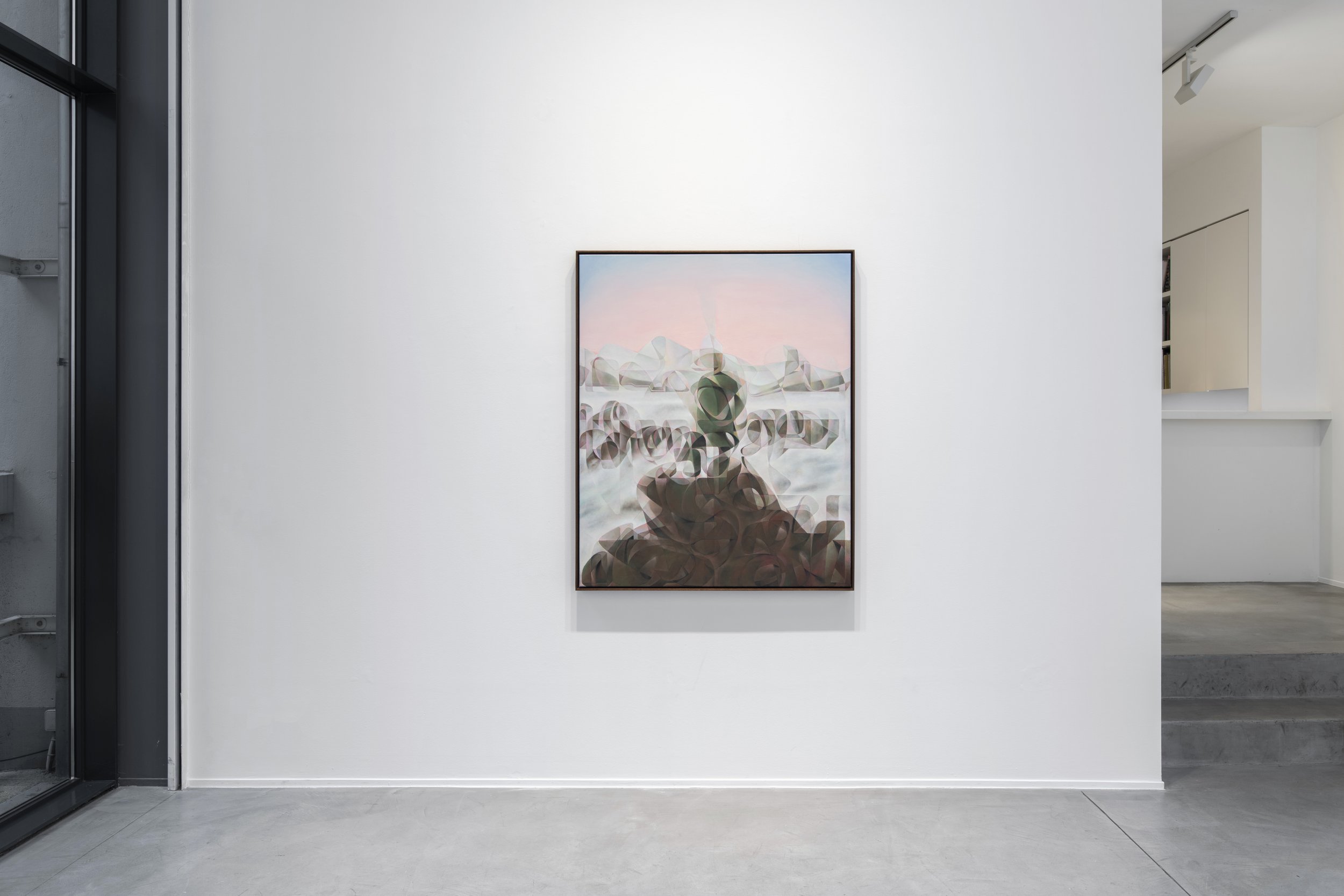
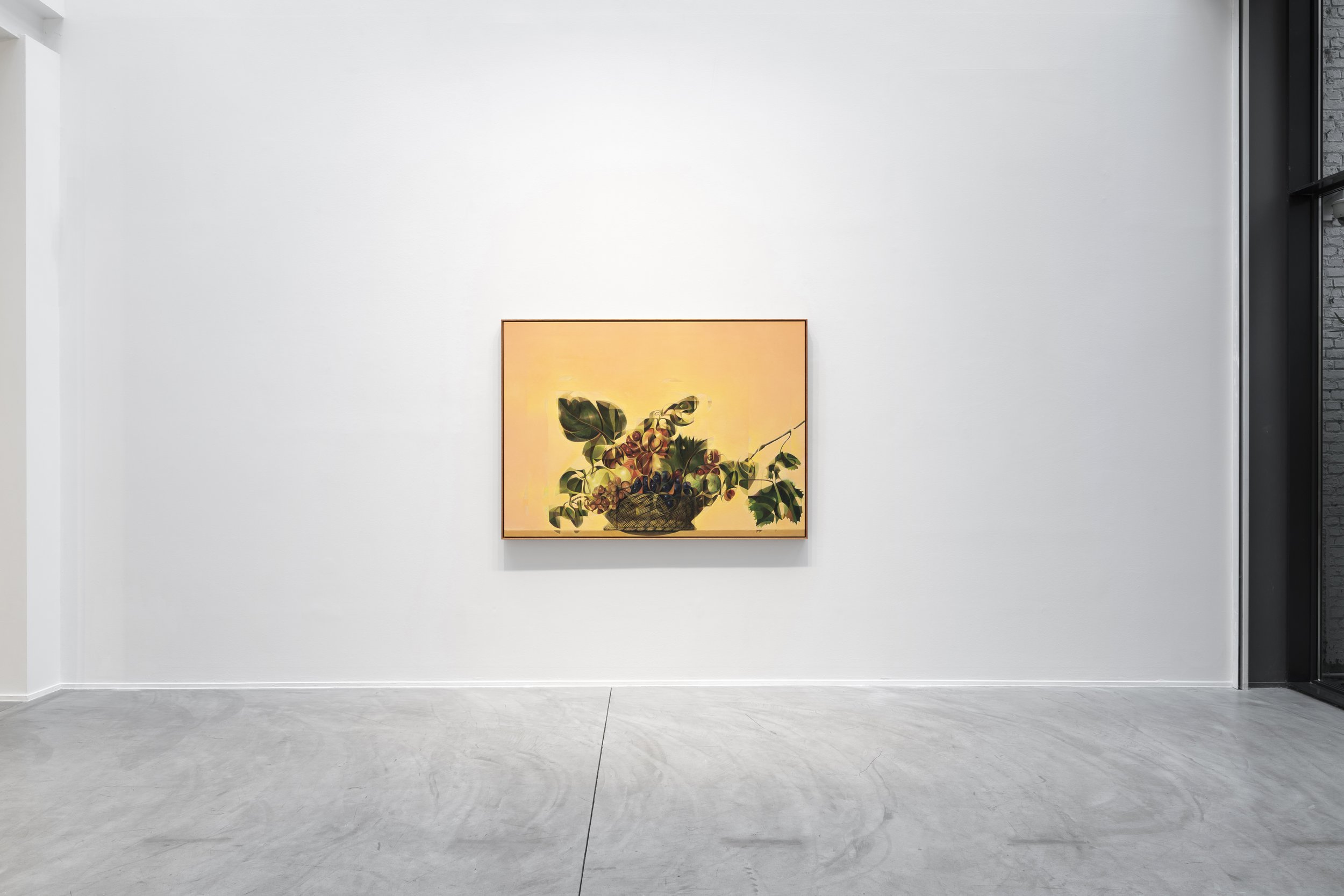


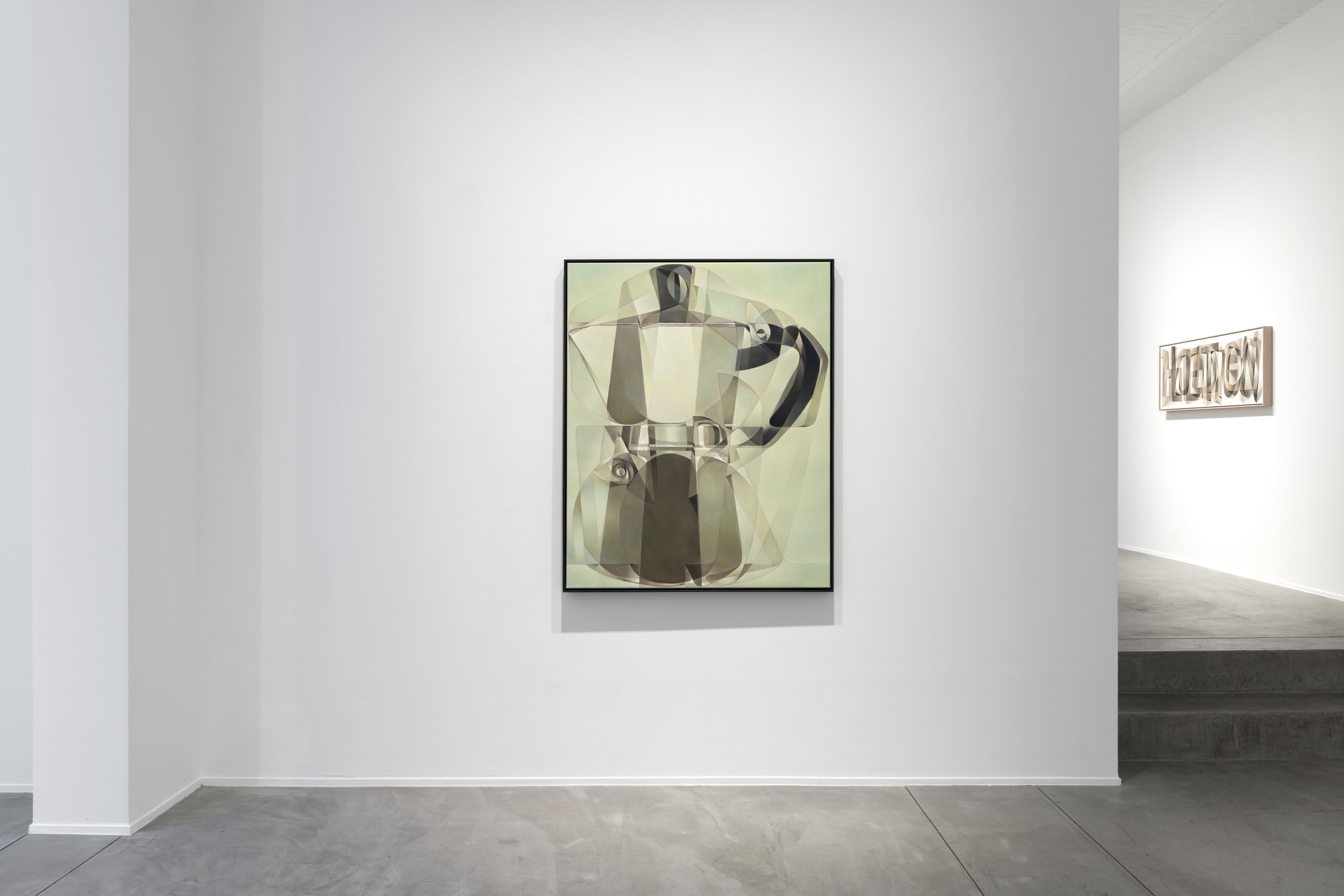
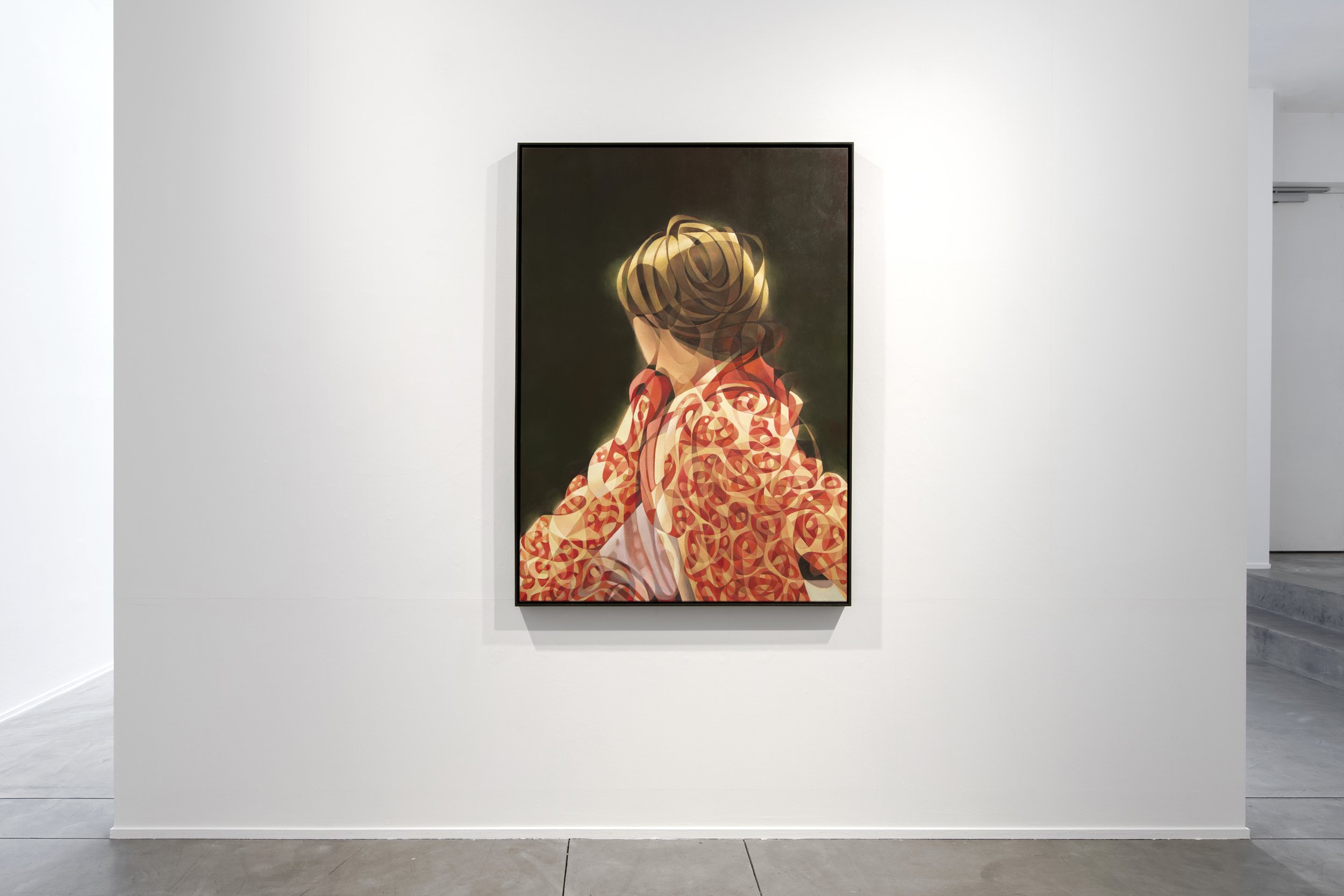
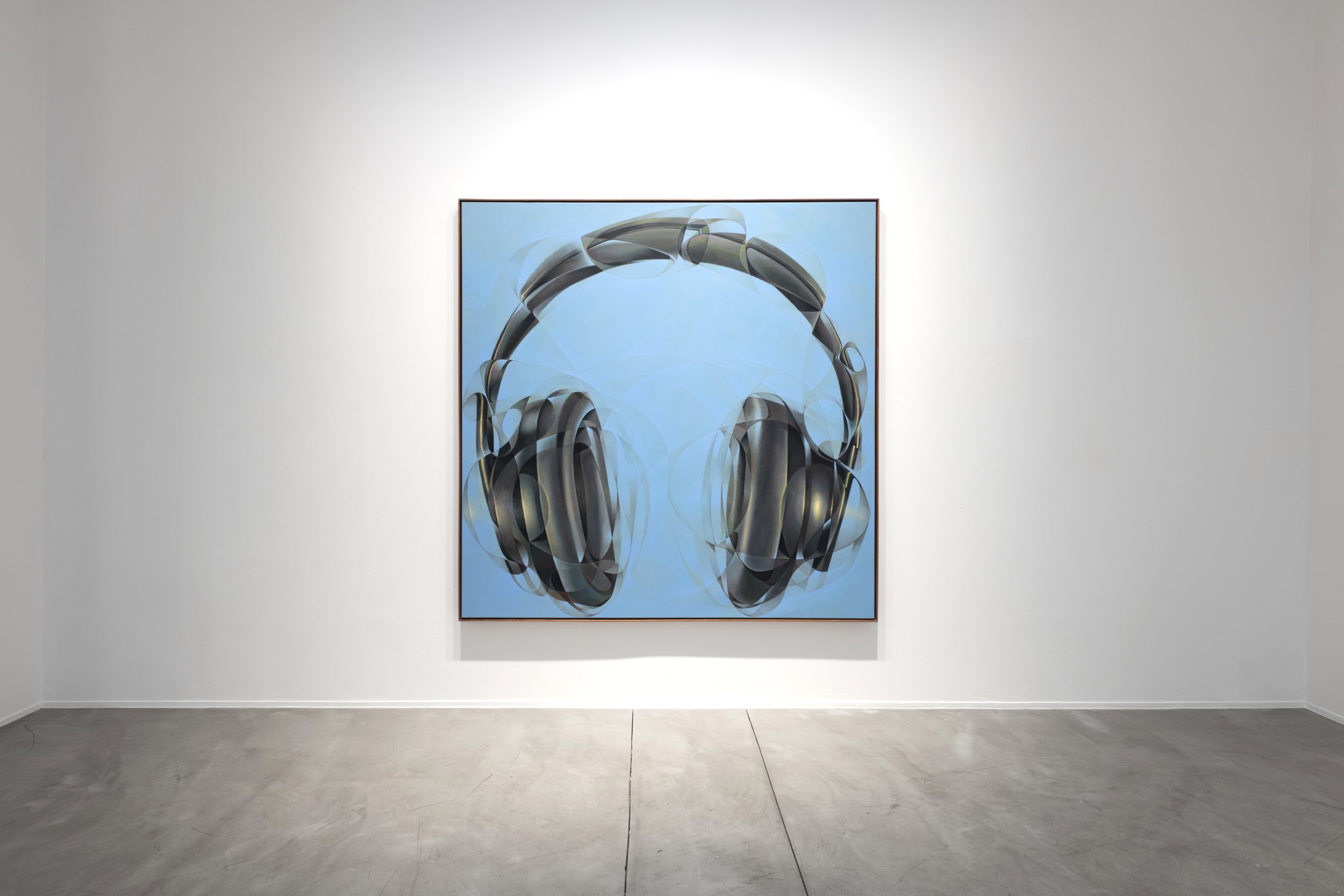
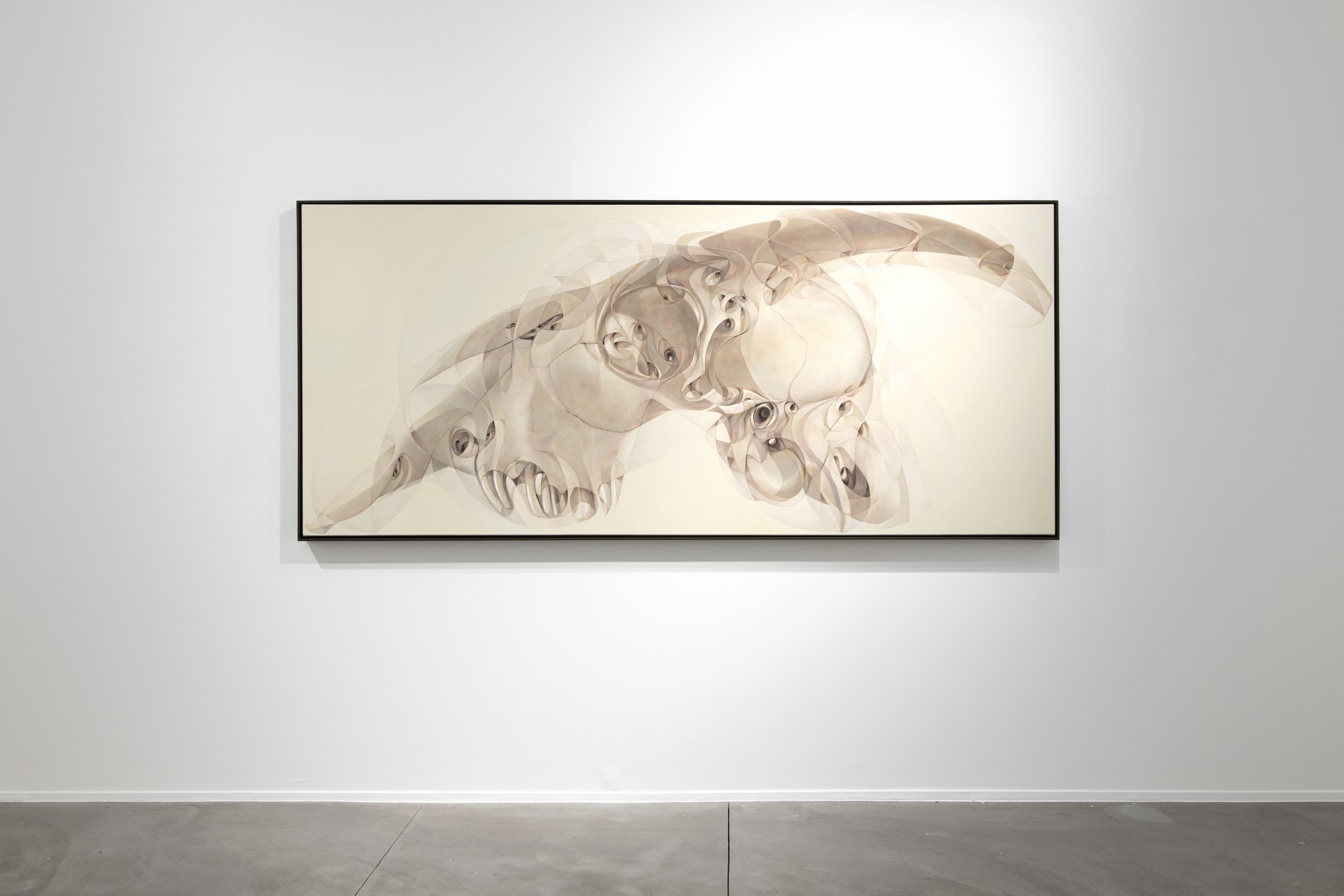
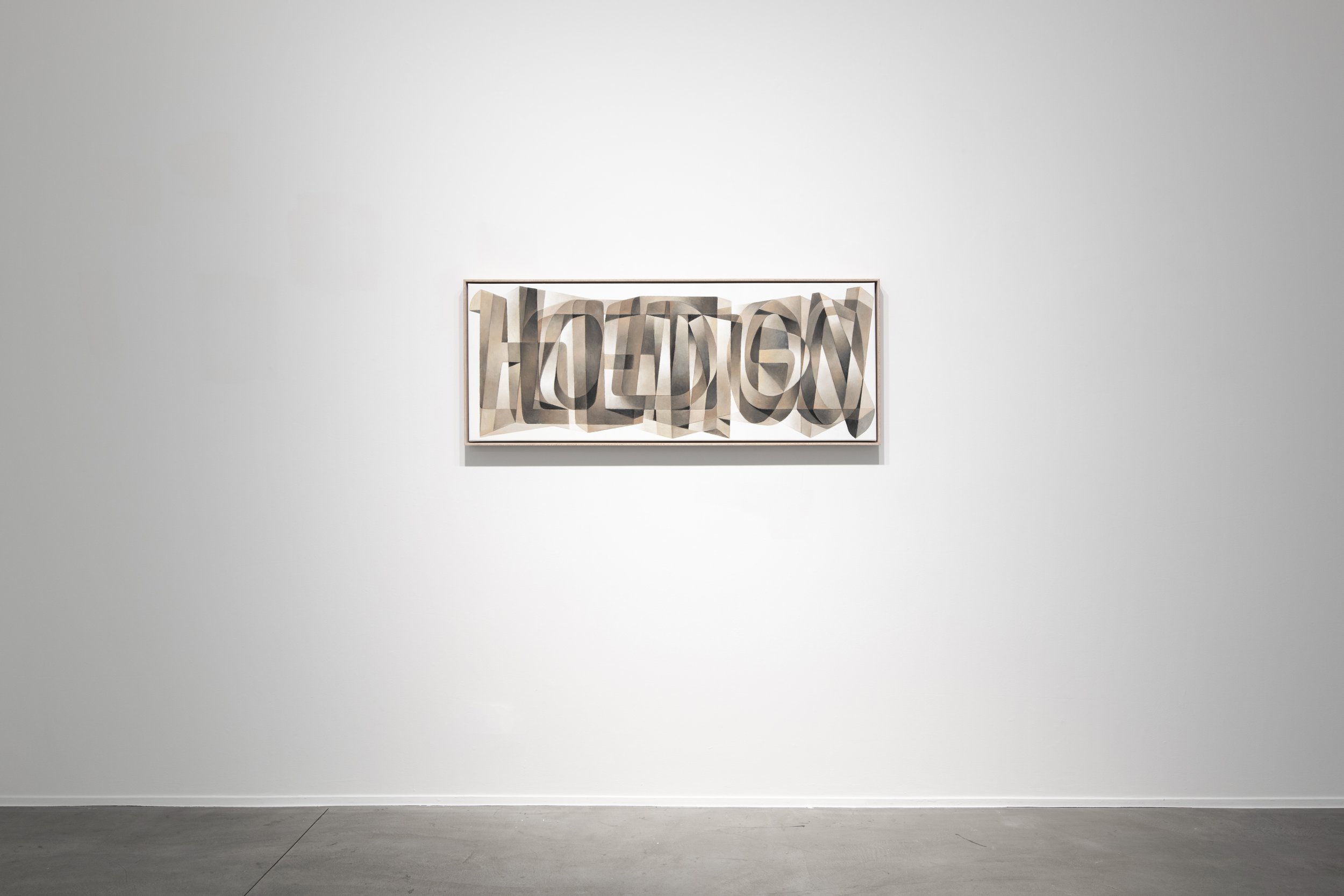
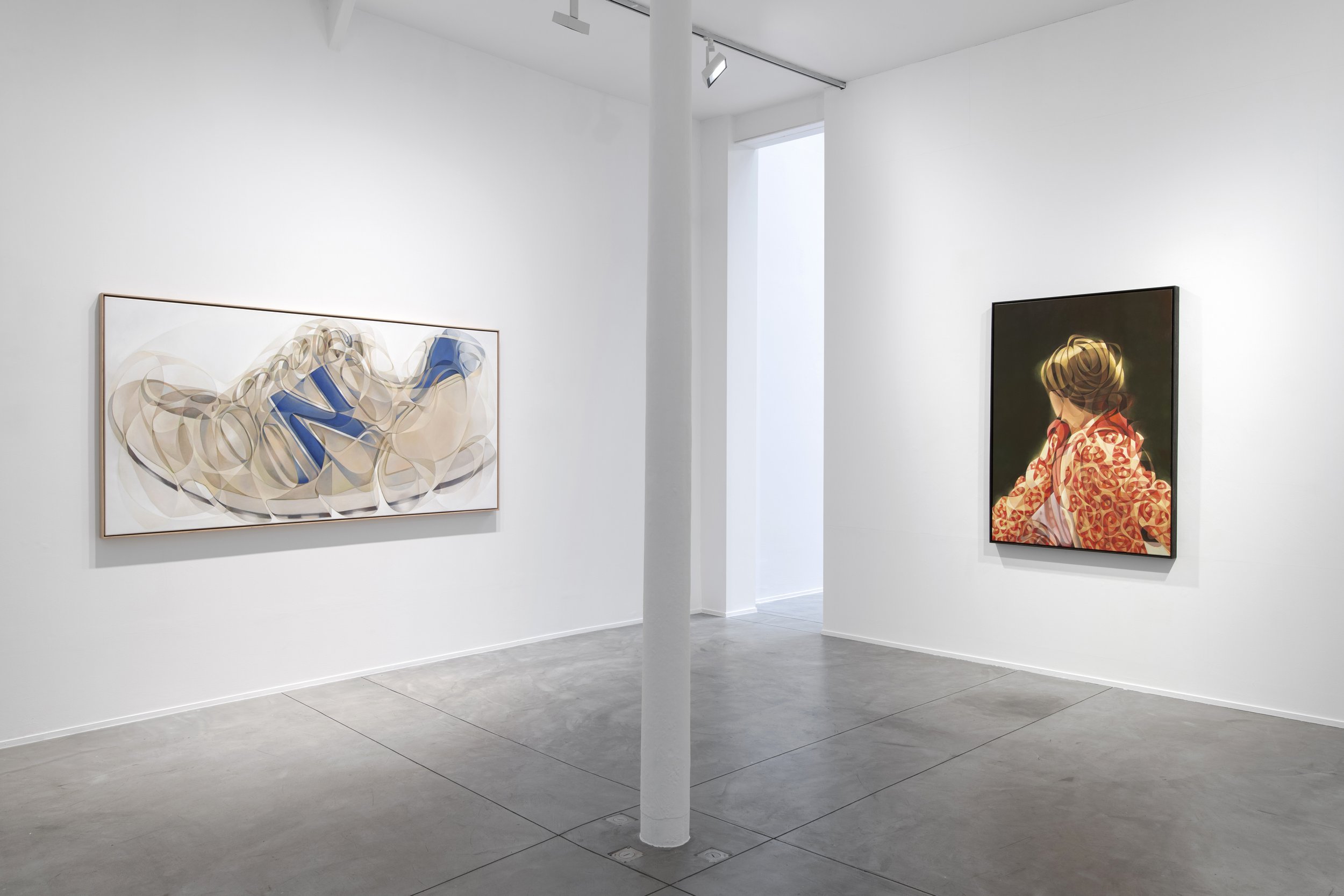
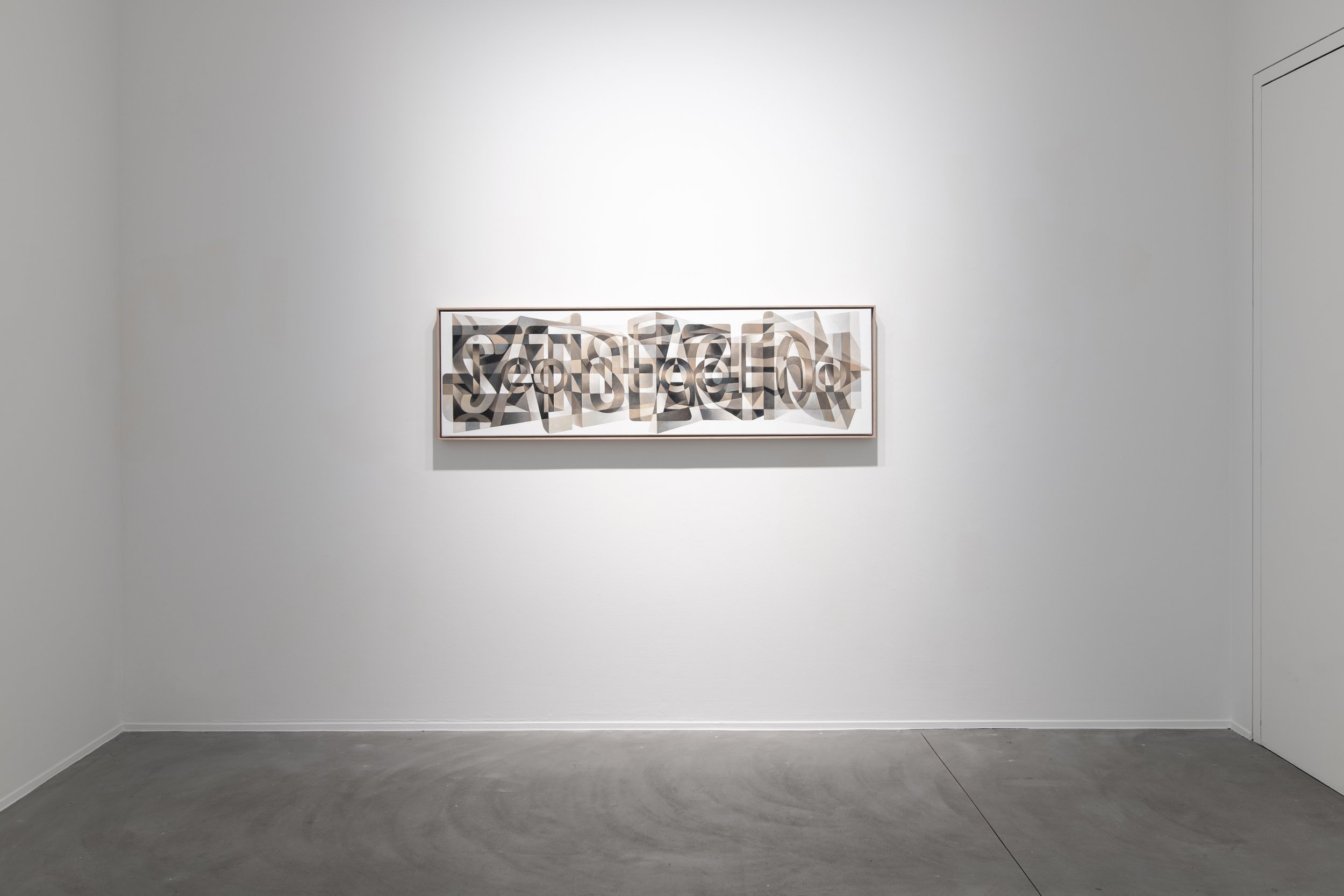
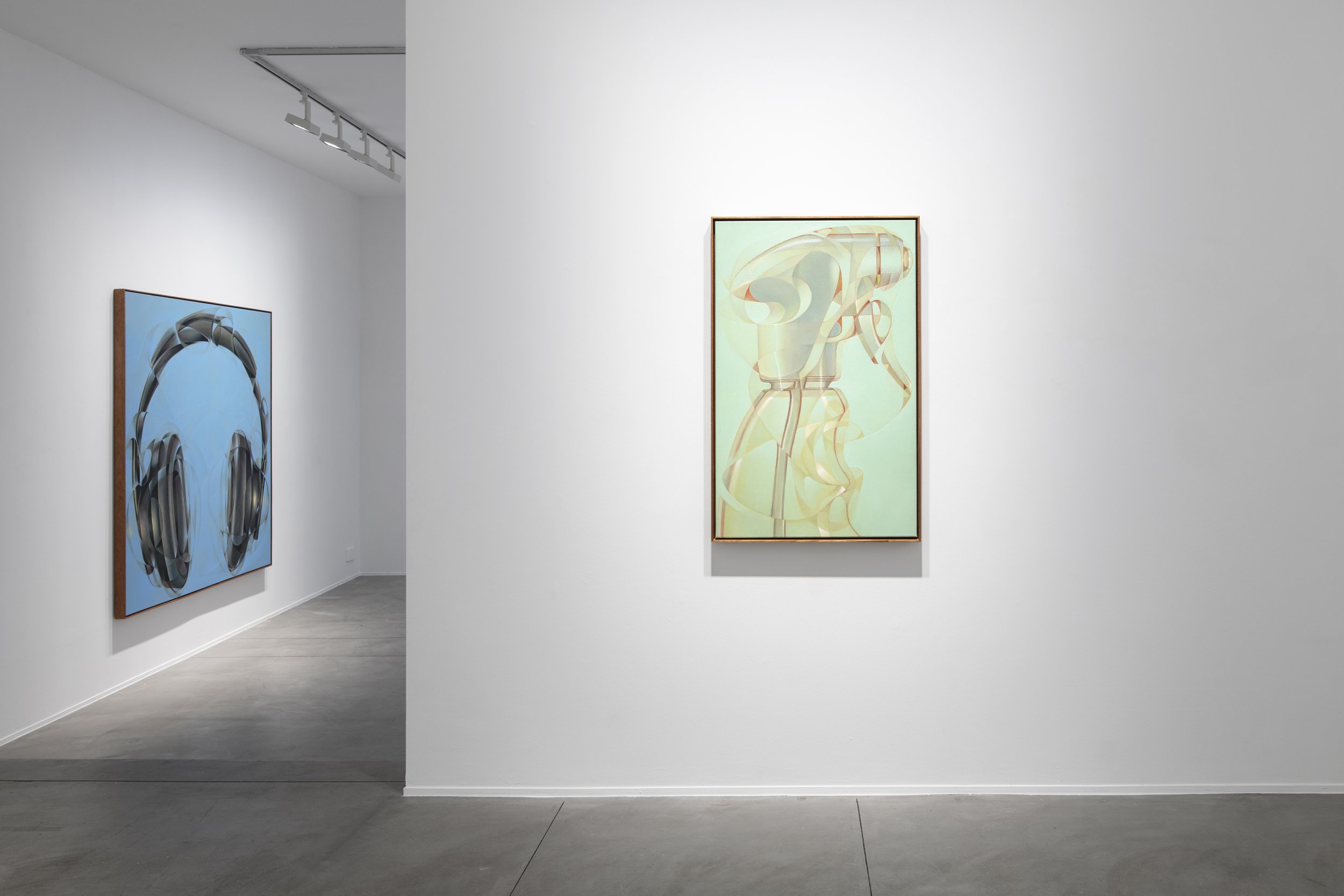
Toutes les images / All images: © Courtesy of the artist and TEMPLON, Paris - Brussels - New York
The “I Can’t Get No” exhibition — its title a discreet nod by this discerning music lover to the famous song by legendary group The Rolling Stones — underscores the importance of rhythm in René Wirths’ oeuvre and interrogates the mysterious, sometimes elusive, aura of a work of art. What knowledge, what memory or personal experience allows one to reveal the profound meaning of a work of art?
Portrait © Jungwook Hwang
Born in 1967, René Wirths grew up in West Berlin where he still resides. He has exhibited his work in several international galleries, including Galerie Michael Haas in Berlin. He also took part in the 2000 Geneva Biennale in 2000. His work has featured in several solo exhibitions including at the Rotterdam Kunsthal in 2011, Kunsthalle Bremerhaven in Germany in 2016 and Haus am Lützowplatz in Germany in 2016. It has also been included in numerous group exhibitions, such as at the Villa Manin di Passariano in Italy in 2002, Galerie im Parlament/Preussischer Landtag in Germany in 2003, Museum Gegenstandsfreier Kunst in Germany in 2008, Zoya Museum in Moldova in 2009, Olbricht Collection, La maison rouge - Fondation Antoine de Galbert in Paris in 2011, Museum Maulbronn in Germany in 2014, Centre of Contemporary Art in Poland in 2018, Museum für Aktuelle Kunst in Germany in 2018, Haus am Lützowplatz in Germany in 2019, Studio im Hochhaus in Germany in 2020 and Museum für neue Kunst in Germany in 2023. He is taking part in a group exhibition at the Arthena Foundation in Düsseldorf, Germany, in 2025.
The exhibition opened on January 11th and will conclude on March 1, 2025. For more information about René Wirths’ s artwork and his exhibition, please visit Templon’s site. The gallery can also be found on Instagram, artnet, Facebook, YouTube, and Artsy.
Caroline Coon & Francesca DiMattio: Snapdragons
Stephen Friedman Gallery presents Snapdragons, a two-person exhibition bringing together four decades of paintings by British artist Caroline Coon, alongside new ceramic sculptures by American artist Francesca DiMattio. The exhibition highlights the radical and rebellious ways in which both artists take on the histories and conventions of their mediums, using them as springboards to bend, modify, and challenge representations of women, femininity, and desire.
Caroline Coon’s career has been defined by unbridled creativity, experimentation, and an unwavering commitment to challenging societal norms. Her journey includes fighting for the rights of women, drug offenders, and sex workers; documenting the London punk scene of the 1970s through photographs and interviews (she also managed the seminal punk band The Clash); and authoring several books, including the autobiographical Laid Bare – Diary – 1983–1984, which inspired her Brothel series. Throughout it all, she has remained dedicated to her painting practice. Although artistic recognition came later in life, she is now celebrated for her figurative paintings, which blend feminist revisionist histories with a distinctly contemporary urban vision.
In her painting Sunday Afternoon - Backgammon Players (1985), Coon creates a homage of Manet’s Olympia (1863) and Jean Auguste Dominique Ingres’ Grande Odalisque (1814), subverting the traditional male-female power dynamic by positioning the unclothed Adonis figure as the object of the viewer's gaze. Set in contemporary London, the painting reveals two reclining nudes at leisure, reveling in their freedom and erotic play. In other works, such as Self-Portrait with Model (1993), Coon places herself at the center. She portrays herself as an artist, pencil in hand, ready to draw her lover, who lies in a state of heightened sexual arousal. “This is a bold statement of my identity as an artist,” wrote Coon, “who has, both socially and sexually, transgressed the sexist restrictions imposed on women by respectable society. Not only am I naked, but I am standing beside my canvas before my model who is as elegantly erect as I am. There is no polite illusion here—rather a factual, liberatory contradiction to those in the past who have denied the power and purpose of female sexuality.”
Installation: Caroline Coon and Francesca DiMattio, 'Snapdragons', Stephen Friedman Gallery, New York (2025). Courtesy Stephen Friedman Gallery, London and New York. Photos by Grace Dodds.
In her 2005 painting Self-Portrait: In My Cock Hat, Coon appears naked and statuesque, wearing a crown of penises. Set against a black background, her name is emblazoned across the canvas like a marquee. She meets the viewer’s gaze with a look that is direct and confrontational. In Cunt (1999), a precursor to her 2005 self-portrait, she creates a theatrical stage set inspired by British Pop artist, Pauline Boty’s last extant painting, BUM (1966). “I decided to make a front/cunt sister painting to Boty’s back/bum as a celebration of women’s ‘sex’—the part of women’s anatomy most commonly derided as disgusting, forbidden and used as the worst of insults,” Coon explained. “Following Boty’s theme, I ‘staged’ my Cunt in an archaic temple of sexual pleasure and fecundity. In the pediment are two goddesses of Liberty, beside the birth shell of Venus. Above them is a wild English Dog rose, for love and romance. The torso is framed by two strips—Corinthian columns representing Vitruvian architectural principles that could be read as symbolising patriarchal masculinity, and beside them is a crush of roses to represent female sensuality.”
Flowers take center stage in a series of still-life paintings created between 1988 and 2008. Paying homage to the floral works of Gluck (1895–1978), a pioneer of gender fluidity, Coon’s paintings similarly reject conventional femininity. Her compositions are animated, bold, theatrical, and unapologetically sensual.
New York-based artist Francesca DiMattio operates with a similarly insurgent spirit, dismantling traditional boundaries between high and low, art and craft, masculine and feminine, history and the present. Straddling the worlds of art, architecture, and design, DiMattio’s work is non-hierarchical, eclectic, and teeming with ideas. Her pedestal sculptures riff on 18th-century French Sèvres porcelain, German Meissen ware, English Staffordshire pottery, and Ming Dynasty vases, while her vertiginous Caryatid figures draw inspiration from the draped female columnar supports of the Acropolis. DiMattio’s work is a symphony of historical and cross-cultural references. “I examine difference in each piece by putting opposites in conversation with each other,” the artist explains. “Through the making of each piece, similarities begin to bridge the gap of difference, and it all becomes sewn into a new hybrid language. Cultural time and place, gender, beauty, and value become scrambled and presented on equal footing.”
DiMattio takes her exploration further by incorporating everyday utilitarian items—detergent bottles, Chiquita banana boxes, sneakers, high-heeled shoes, and an old teddy bear—into her work. In a somewhat absurd reversal of mass production, she hand-sculpts and glazes each of these objects, then sutures them onto her more traditional ceramic forms. In sculptures such as Meissen Tide (2025) and Meissen Pump (2025), highly ornate porcelain vessels adorned with flower petals, rosettes, and floral vignettes take on Frankenstein-like proportions as they collide with a large Reebok high-top sneaker, bottles of cleaning spray, and a container of Tide. Each sculpture is punctured by wound-like fissures that contrast sharply with the delicate floral patterns spreading across the surfaces like a virus, even extending to the pedestals below. The result is a playful tension: sneakers transform into vessels, laces become ornamental details, and high art meets streetwear.
Francesca DiMattio, Attica Pump, 2025. Glaze on terracotta, glaze on terracotta pedestal, Sculpture: 88.9 x 50.8 x 45.7cm (35 x 20 x 18in) Pedestal: 91.4 x 34.9 x 34.9cm (36 x 13 3/4 x 13 3/4in). Copyright Francesca DiMattio. Courtesy the artist and Stephen Friedman Gallery, London and New York and Pippy Houldsworth, London. Photo by Karen Pearson.
In another pair of terracotta pedestal sculptures, the artist juxtaposes ancient Greek amphoras with contemporary fashion accessories. In Attica Pump (2025), a vessel inspired by Athenian red-figure pottery from the 6th century BCE becomes host to four precariously tall high-heeled shoes that push through and pierce its clay surface. Similarly, in Attica Cowboy (2025), an oversized cowboy boot adorned with depictions of gods and goddesses is grafted onto an amphora standing on a matching tiled base. The vessel appears to sag under the boot’s weight, resembling a deflated belly. By playing with the morphology and nomenclature of ceramic forms—such as the lip, neck, shoulder, mouth, and foot—DiMattio’s sculptures take on a humanoid quality, simultaneously adorned and disfigured by gender-coded, mass-market symbols of beauty.
Francesca DiMattio, Chiquita Caryatid, 2025. Glaze on porcelain and stoneware, 218.4 x 77.5 x 77.5cm (86 x 30 1/2 x 30 1/2in). Copyright Francesca DiMattio. Courtesy the artist and Stephen Friedman Gallery, London and New York and Pippy Houldsworth, London. Photo by Karen Pearson.
DiMattio’s two monumental porcelain sculptures, Chiquita Caryatid (2025) and Teddy Bear Caryatid (2022–25), represent the culmination of the artist’s madcap experimentation. In the first, a massive female figure rises from her base like Botticelli’s The Birth of Venus (c. 1485). Her body morphs and bulges with the imprint of cardboard boxes and plastic bottles adorned with blue floral patterns, barcodes, and Chiquita banana logos. Her companion, named for the teddy bear she stands on, appears as a hyper-ornamented conqueror dressed in a porcelain-mosaic bikini. DiMattio’s figures evoke warrior queens, clad in the armor of contemporary domesticity and transcultural hybridity.
Francesca DiMattio (b. 1981) is known for her dynamic approach to sculpture and painting, where she collapses boundaries between historical and contemporary influences. Her work weaves together an eclectic mix of references—ranging from English Rococo and Islamic Fritware to mass-produced kitsch and domestic patterns—blurring distinctions between high and low culture. In her sculptural practice, she transforms porcelain into unpredictable, fluid constructions, subverting the tradition of ceramics with an explosive sense of movement. Similarly, her paintings layer diverse visual languages, creating compositions that feel both intricate and unruly. DiMattio’s work has been exhibited internationally, and her sculptures are included in prominent public and private collections.
DiMattio has exhibited at Wellin Museum of Art (2022) and Art Omi, Ghent in New York (2019).
Caroline Coon (b. 1945) is a British painter whose vibrant figurative works challenge societal norms and patriarchal values. Deeply influenced by feminism and the politics of sexual liberation, her paintings reject binary notions of gender while celebrating subjects ranging from sex workers and intersex individuals to cityscapes and still lives. A pioneering figure in London’s counterculture, Coon has been a vocal advocate for women’s rights since the 1960s, co-founding the legal-aid organization Release and managing The Clash during the punk movement. Her distinctive style characterized by crisp-edged lines and saturated color draws inspiration from artists like Paul Cadmus and Tamara de Lempicka. Coon’s work has recently gained widespread institutional recognition, with pieces entering Tateâ’s permanent collection and featuring in major exhibitions, including Women in Revolt! touring the UK from Tate Britain.
This is Coon’s first significant exhibition in New York and coincides with her inclusion in the group show ‘Women in Revolt!’, touring the UK from Tate Britain, London.
Stephen Friedman Gallery
Stephen Friedman Gallery is a contemporary art gallery that was founded in 1995 with a focus on representing exceptional artists from around the world. Since its inauguration, the gallery has been based in Mayfair, London. In October 2023, the gallery expanded and relocated to Cork Street. In November 2023, the gallery opened its first location outside the UK at 54 Franklin Street in Tribeca, New York.
For more information about Stephen Friedman Gallery, this exhibition, and others, please visit their site here. The gallery can also be found on Facebook and Instagram. The magazine did an interview with both artists which can be found here.
Catherine Goodman. Silent Music
Installation view, ‘Catherine Goodman. Silent Music,’ Hauser & Wirth New York, 22nd Street 30 January – 12 April 2025 © Catherine Goodman Courtesy the artist and Hauser & Wirth Photo: Sarah Muehlbauer
New York... The exhibition opened in January, ‘Catherine Goodman. Silent Music’ presents a series of new, large-scale paintings by the British artist, where her characteristically expressive brushwork yields animated surfaces that pulse with the dynamic energy of their making. For Goodman, the studio is a place of spiritual meditation. Each painting represents an act of intimate transmutation—a way for her to turn closely held memories and personal vulnerabilities into newfound stability. As the artist trustee at the National Gallery in London, Goodman has spent hours drawing from the collection and has developed a particular affinity for Old Master paintings, which she describes as her ‘only real teacher.’ Inspired by the intensity and drama of Renaissance masterworks by artists such as Titian and Veronese, and influenced by the poignantly psychological work of such groups as the London School, Goodman’s highly personal paintings transcend her individual experience, opening outward and inviting us in.
Catherine Goodman Lago 2024 Oil on linen 180 x 210 x 4 cm / 70 7/8 x 82 5/8 x 1 5/8 in © Catherine Goodman Courtesy the artist and Hauser & Wirth Photo: Eva Herzog
For decades Goodman has maintained a daily practice of drawing from observation. Through this she has\ constructed charged pathways between the physical world she observes and her own inner landscape. In these most recent abstractions, she often begins from landscapes and portraits that hold meaning for her. She then obscures these figurative grounds, building up evocative and densely layered compositions that invite sustained attention. ‘Lago’ (2024), a whirlwind of crimson, cobalt and lush green is one of many works named for a meaningful location or loved one whose spirit they embody. Other compositions, like the exuberant ‘Pahari Picnic’ (2024) or ‘Echo’ (2024)—monumental in scale and bursting with energy—give form to poignant memories. The substantial physical presence of these paintings, with their thick impasto and richly layered pigments, materialize intangible impressions of moments, places and people alike, as well as the psychological terrain encountered during the creative process itself. As the artist has confided to writer Jennifer Higgie, her artmaking ‘was never about problem solving. It’s about releasing something.’
Catherine Goodman Pahari Picnic 2024 Oil on linen 200 x 220 x 4 cm / 78 3/4 x 86 5/8 x 1 5/8 in © Catherine Goodman Courtesy the artist and Hauser & Wirth Photo: Eva Herzog
Though rooted in the personal, Goodman’s oeurve uses the intimate act of painting to address the expansive macrocosm of collective experience. Her paintings act as a form of silent communication, resonating beyond the written or spoken word. Persistently forward-looking, Goodman’s latest body of work continues her tireless pursuit of art’s unique capacity to nurture connection.
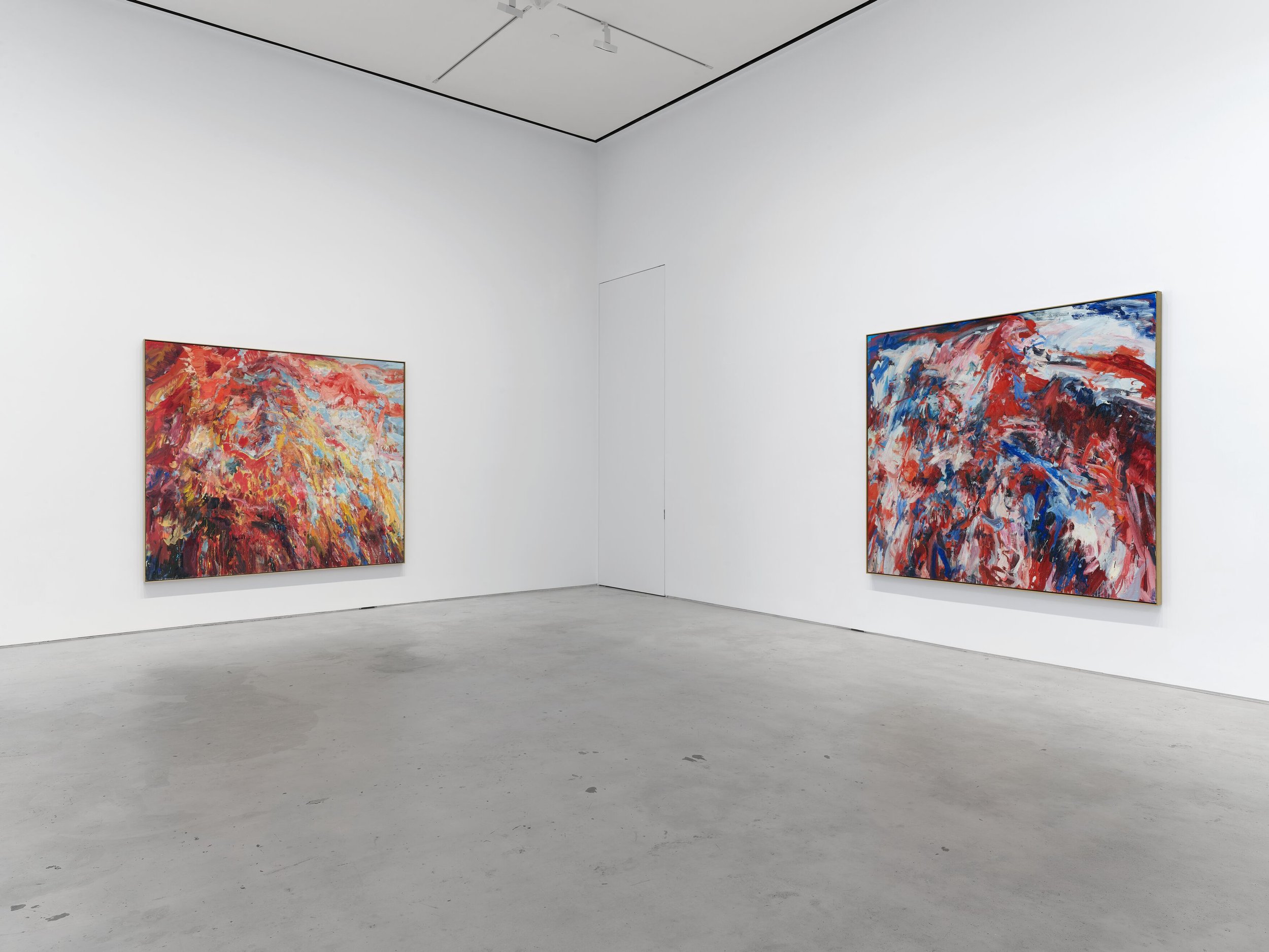
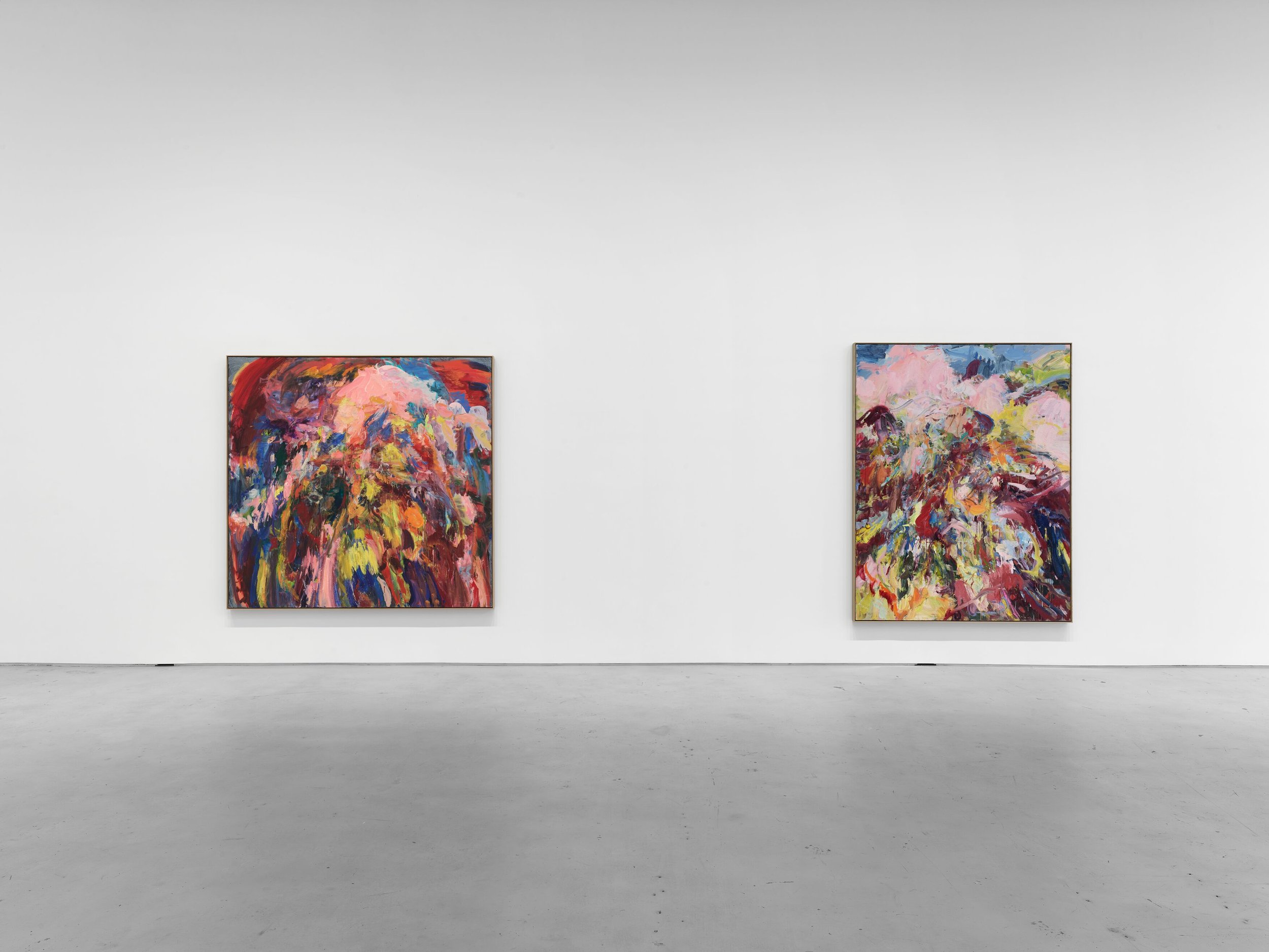
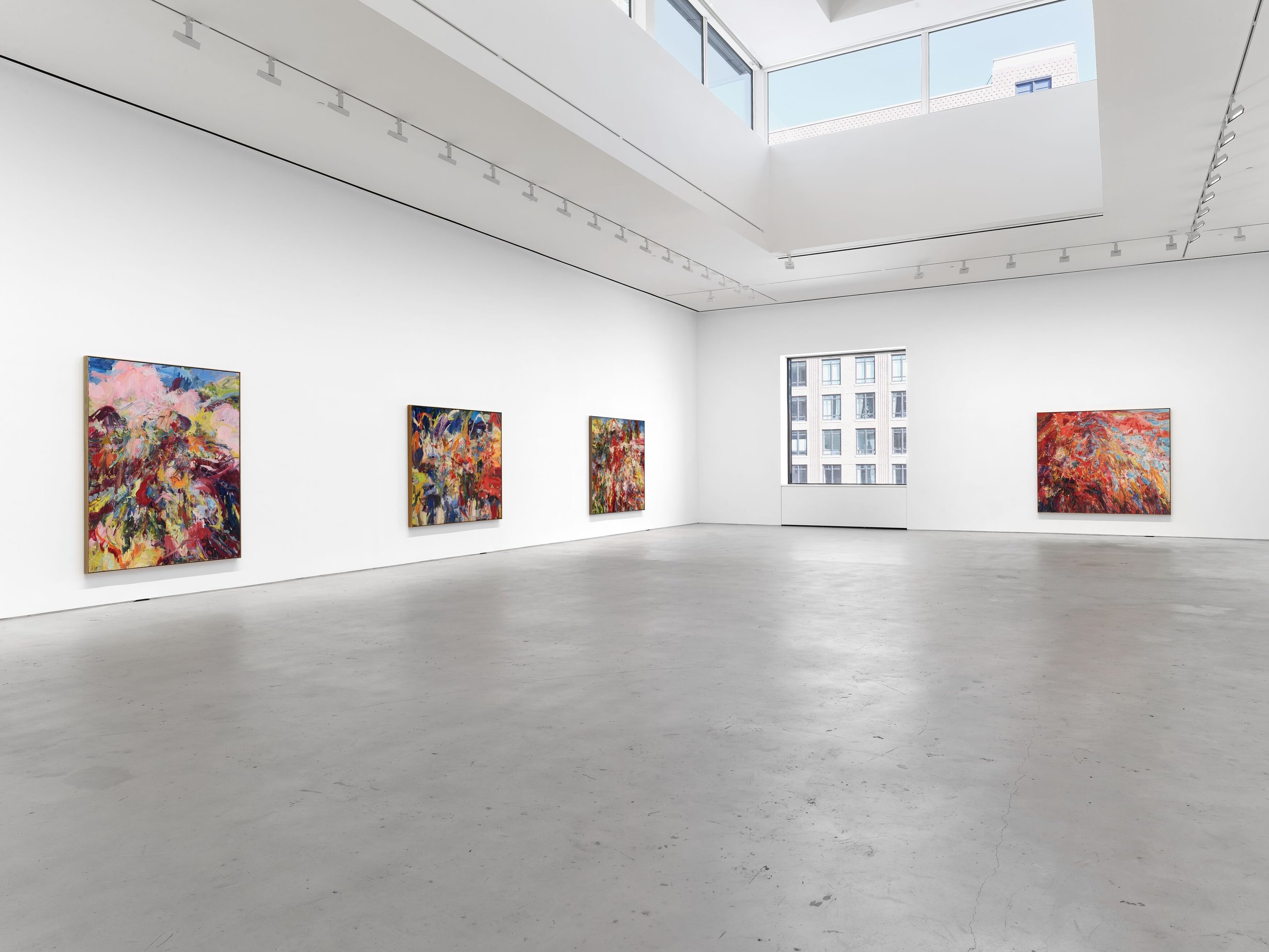
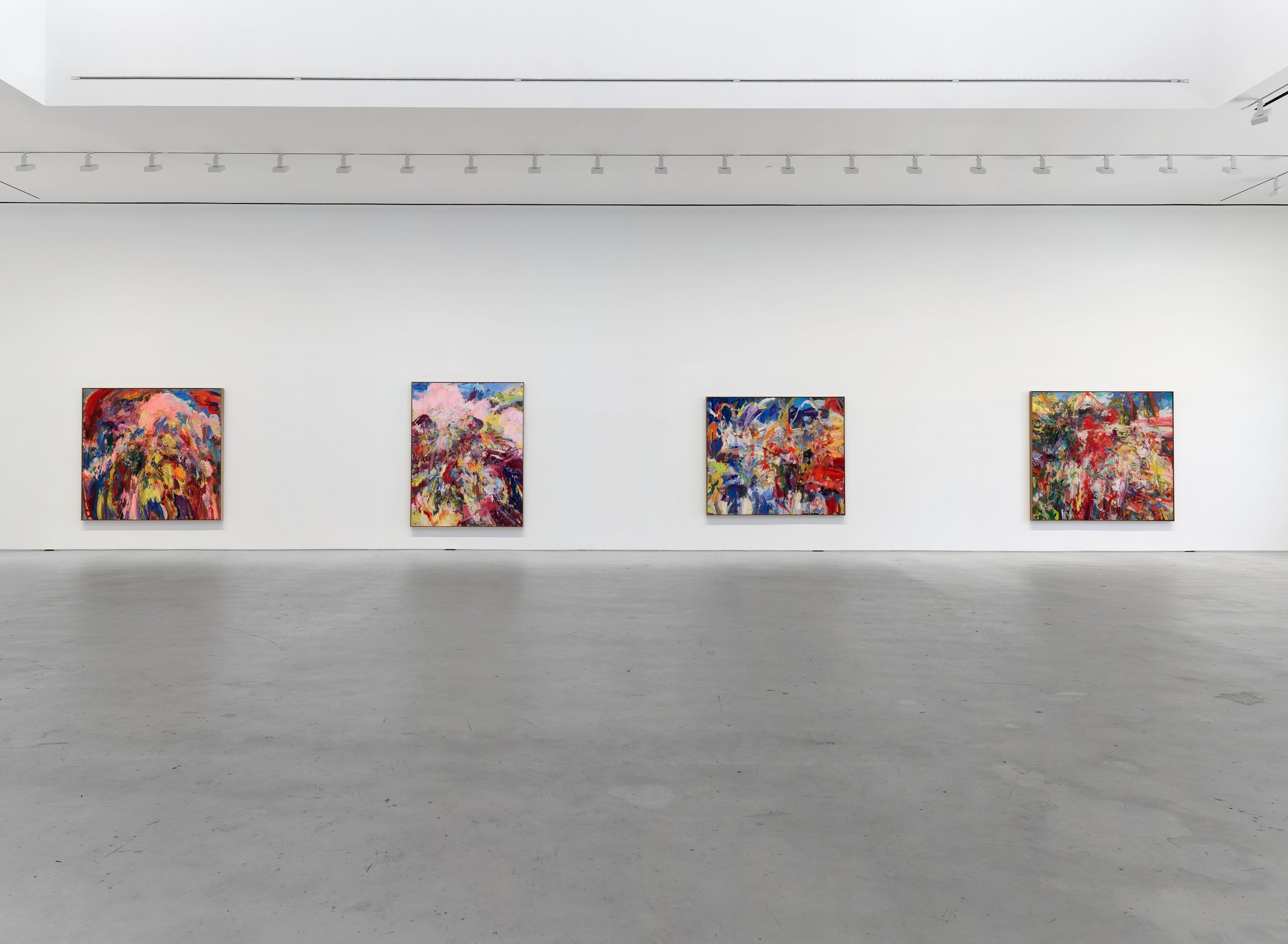
Installation view, ‘Catherine Goodman. Silent Music,’ Hauser & Wirth New York, 22nd Street 30 January – 12 April 2025 © Catherine Goodman Courtesy the artist and Hauser & Wirth Photo: Sarah Muehlbauer
In conjunction with the exhibition, Hauser & Wirth Publishers will release ‘Catherine Goodman,’ a richly illustrated monograph focused on Goodman’s new paintings. Featuring an illuminating essay by writer and curator Jennifer Higgie, alongside revealing reflections from Goodman herself, this volume sheds light on how drawing and painting are inextricably intertwined in her deeply intuitive practice. On 1 February, Hauser & Wirth Publishers will celebrate the release with a conversation between Catherine Goodman and Lynne Tillman.
Catherine Goodman Echo 2024 Oil on linen 196 x 214 x 4 cm / 77 1/8 x 84 1/4 x 1 5/8 in © Catherine Goodman Courtesy the artist and Hauser & Wirth Photo: Eva Herzog
About the Artist
Born in London in 1961, Catherine Goodman CBE lives and works in London. Goodman studied at Camberwell School of Arts & Crafts and the Royal Academy Schools, London, where she won the Royal Academy Gold Medal in 1987. Goodman’s lifelong commitment to social justice through education forms a critical aspect of her artistic identity and approach to making. In 2000, Goodman established The Royal Drawing School with HM King Charles III to deliver subsidized and free education to thousands of young and disadvantaged people in the UK. Today, she continues in her role as Founding Artistic Director and Academic Board Member. For many years, Goodman corganized drawing classes for individuals dealing with homelessness and disabilities, and she continues to offer refuge classes to young people with mental health issues on a weekly basis. She is also the primary caregiver of her sister, Sophie, who was born with multiple health conditions and has always been a subject of Goodman’s practice. In 2014, Goodman was awarded Lieutenant of the Royal Victorian Order (LVO) for services to The Royal Drawing School, and Commander of the Order of British Empire (CBE) in 2024 for her services to art in the UK. Goodman has served as the Artist Trustee at The National Gallery, London since 2019. Her paintings are held in significant private and public collections internationally.
Carbon savings: The artwork in this exhibition was shipped by sea from the UK. Transporting by sea versus air resulted in a carbon saving equivalent to 20 economy flights between London and New York.
The exhibition opened on 30 January – and will conclude on 12 April 2025, at the Hauser & Wirth New York, 22nd Street location. Please visit the Hauser & Wirth Gallery site for information about upcoming exhibitions. Also, follow the gallery on Instagram, Facebook, X, and YouTube. The magazine highlighted the accompanying book with the same title, which can be found here.
























































